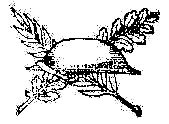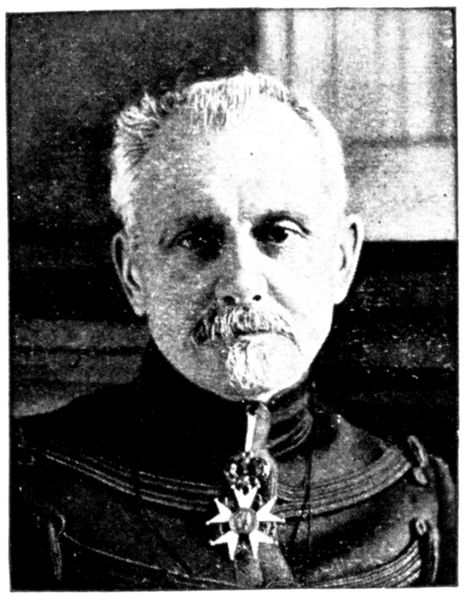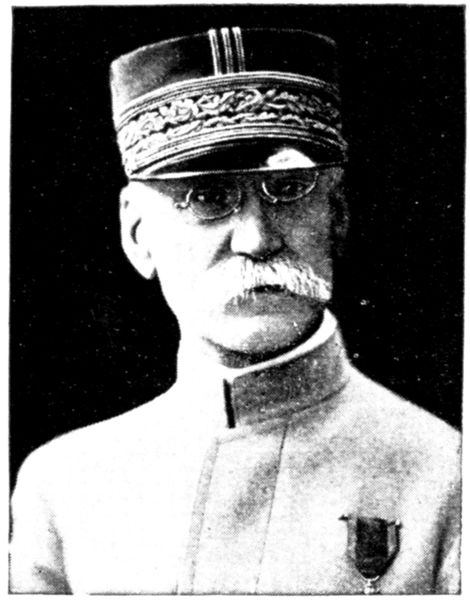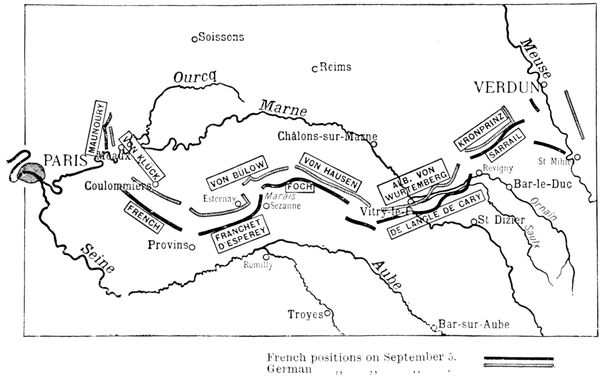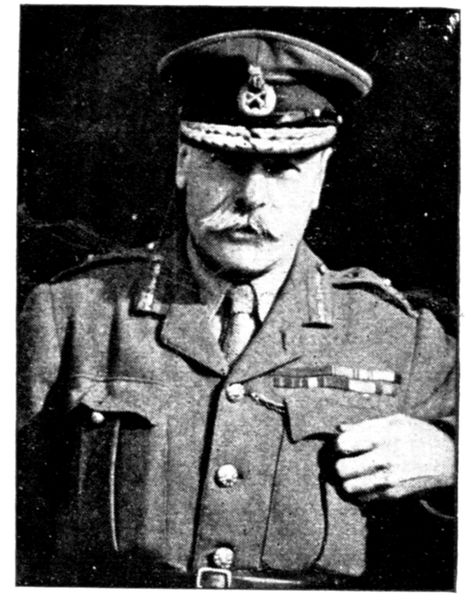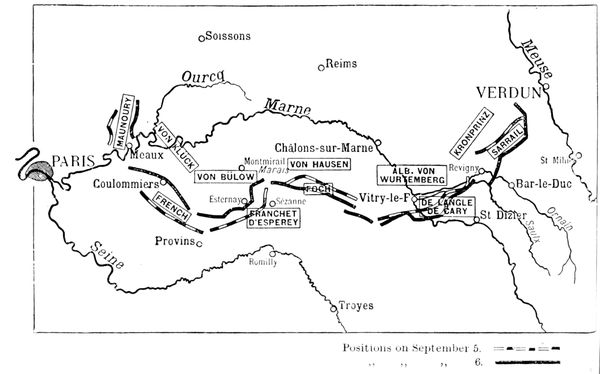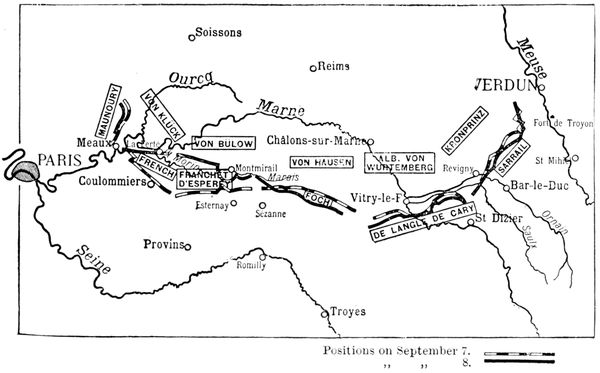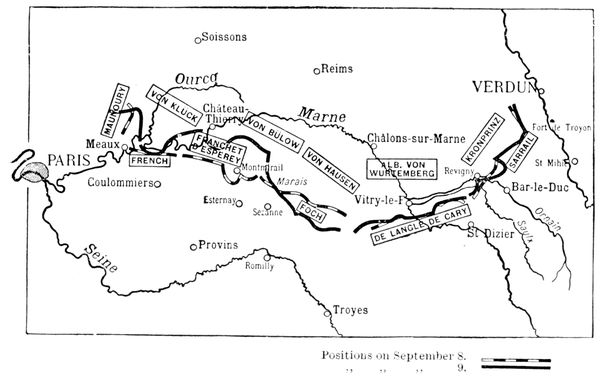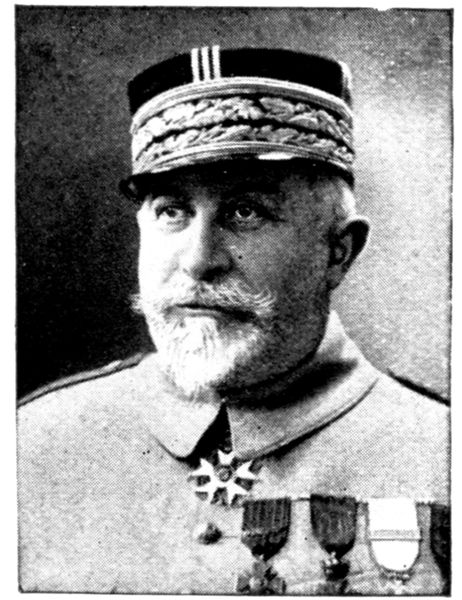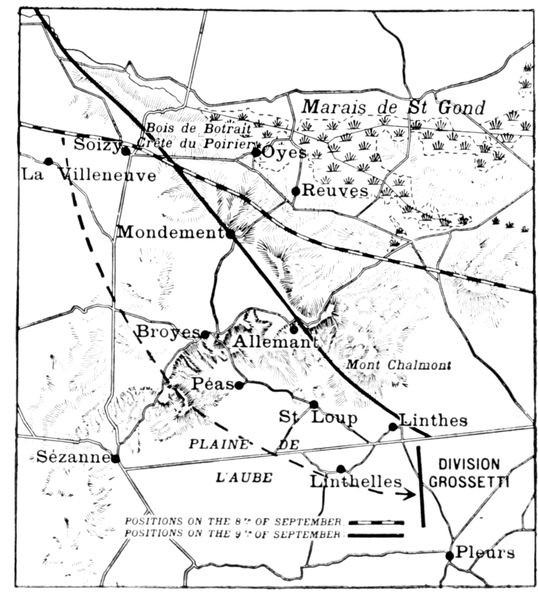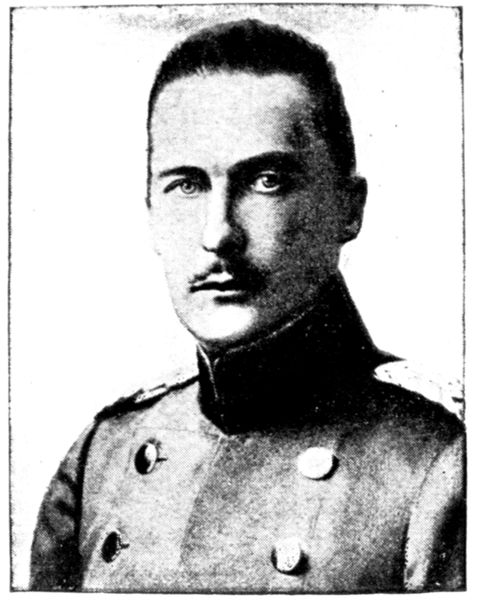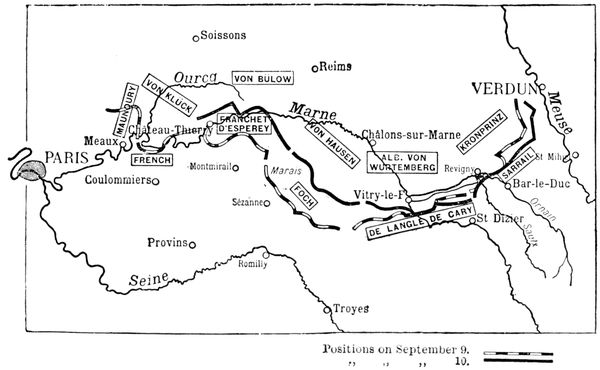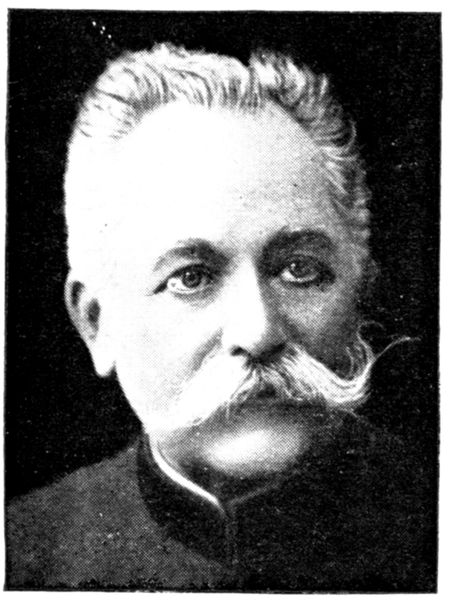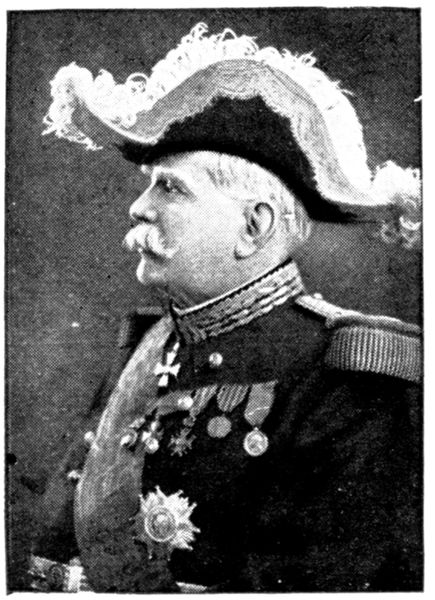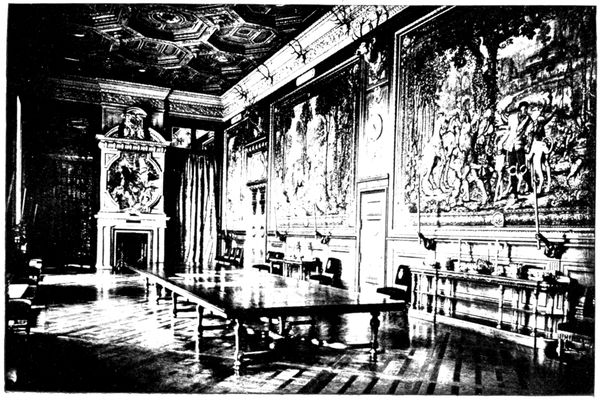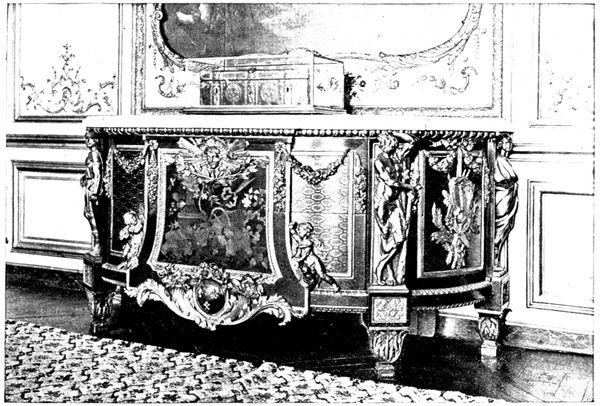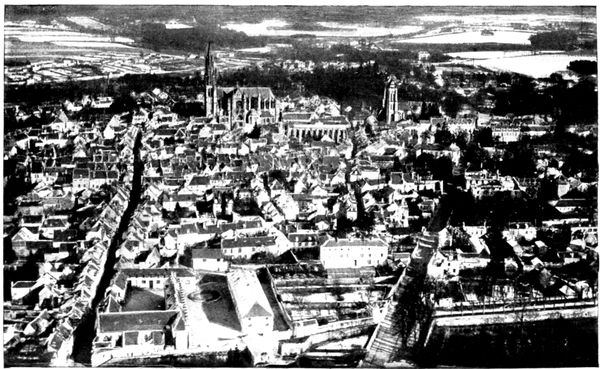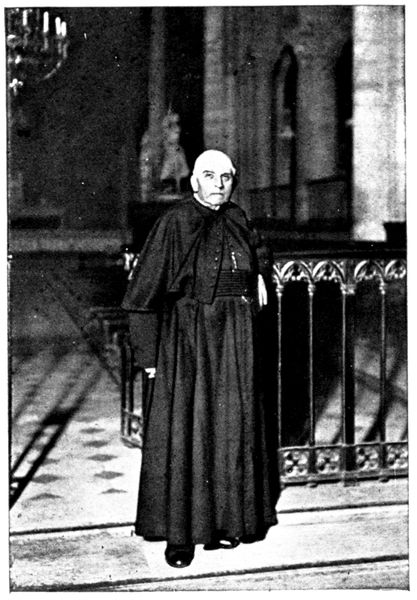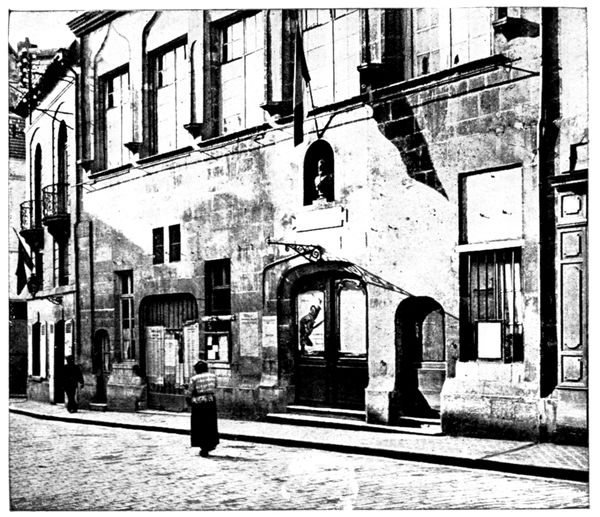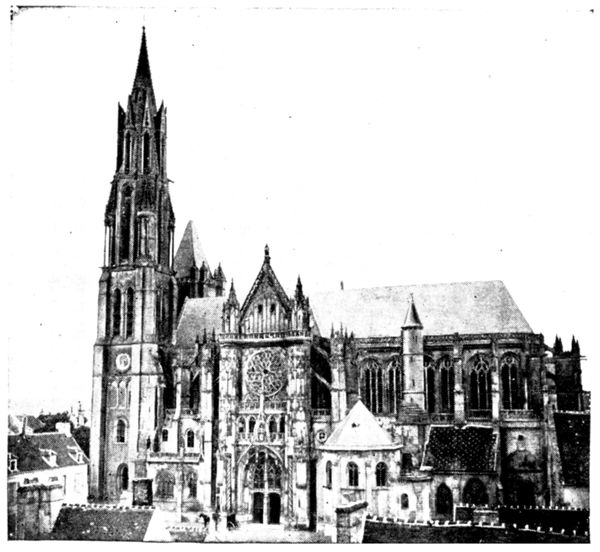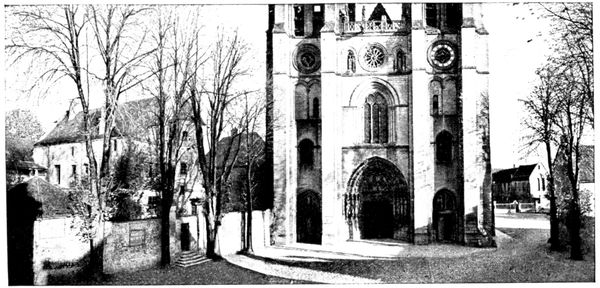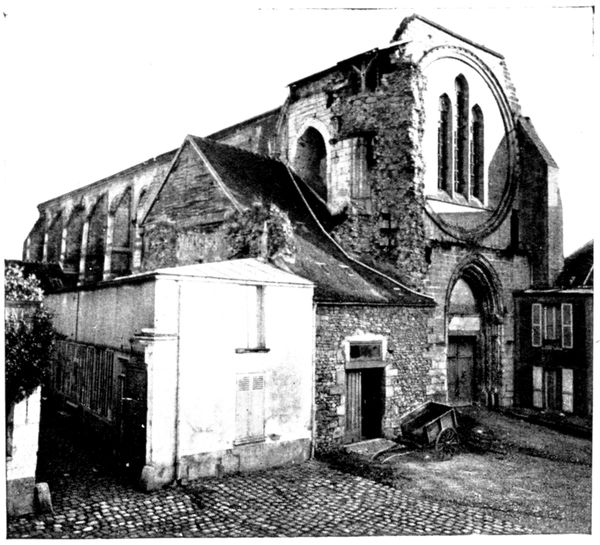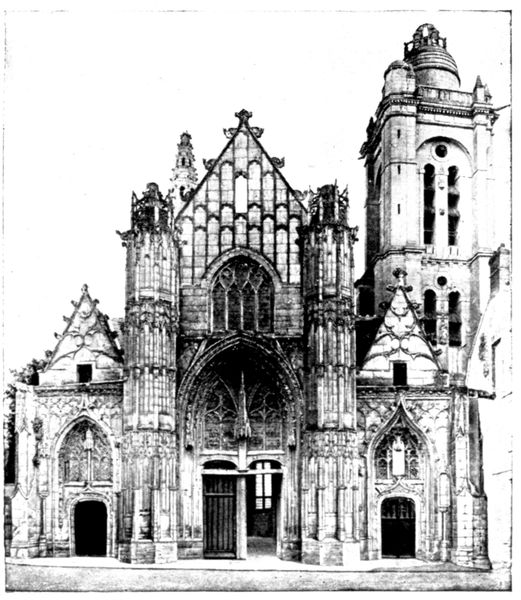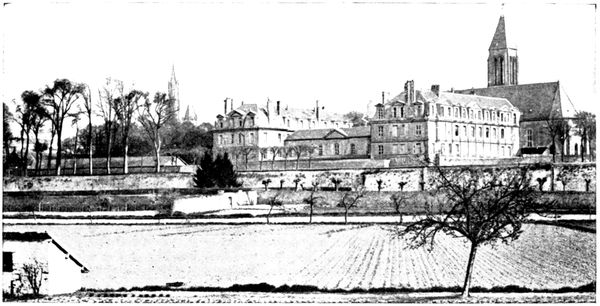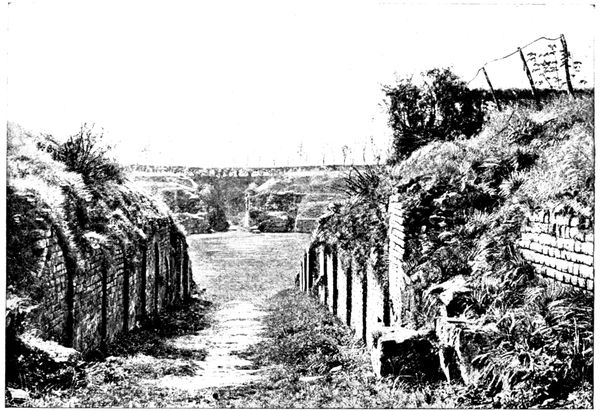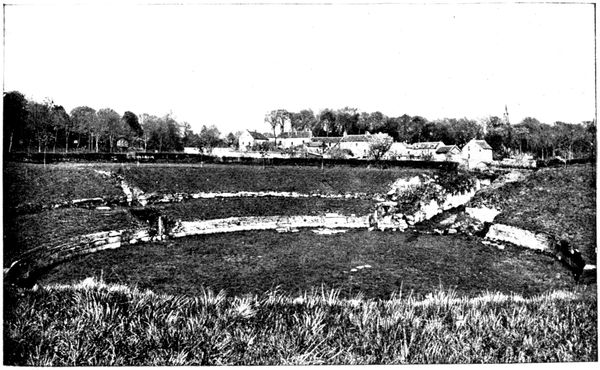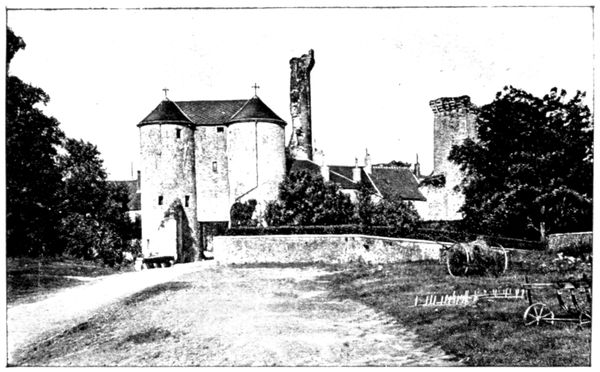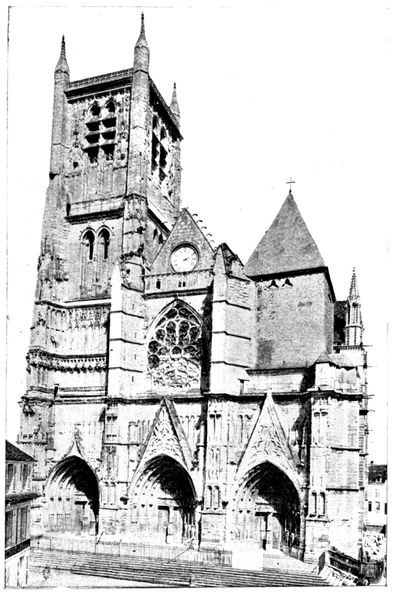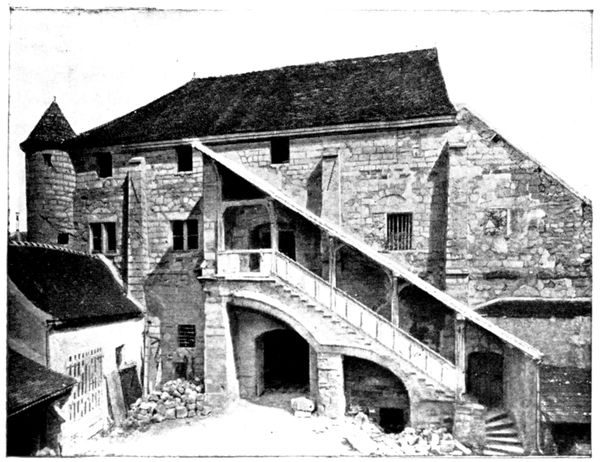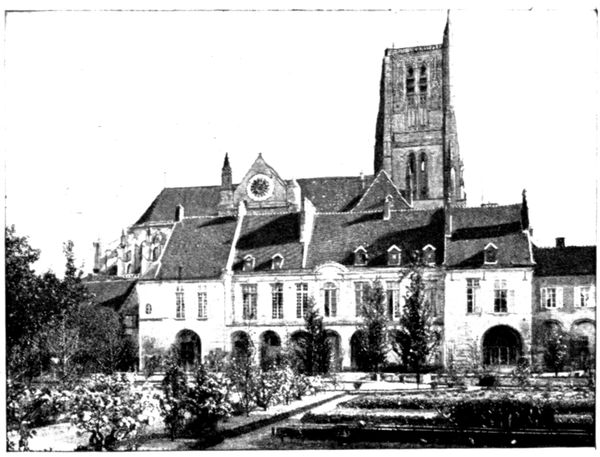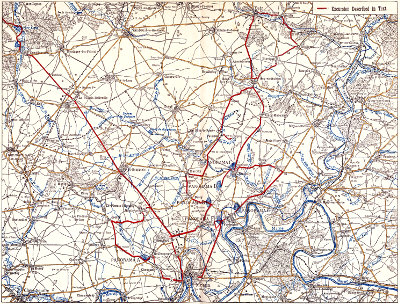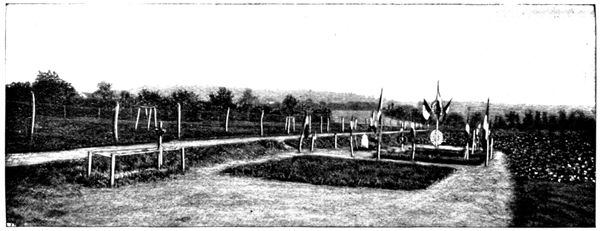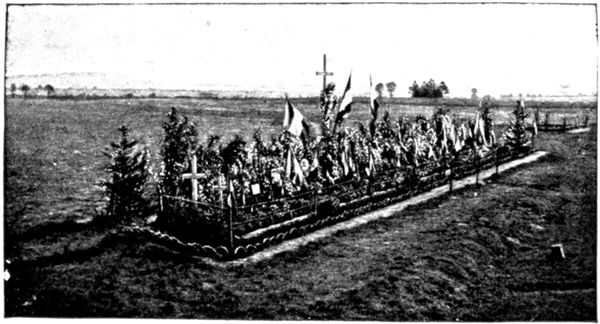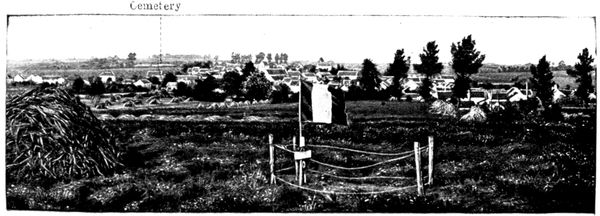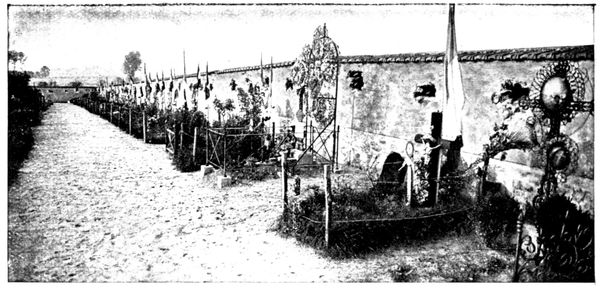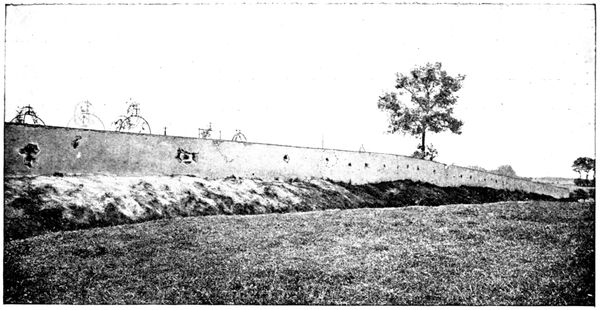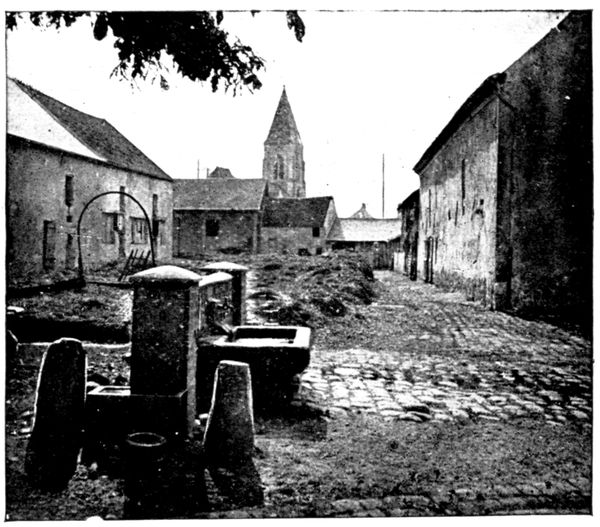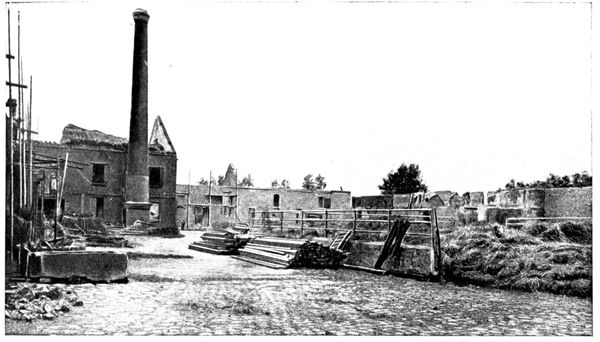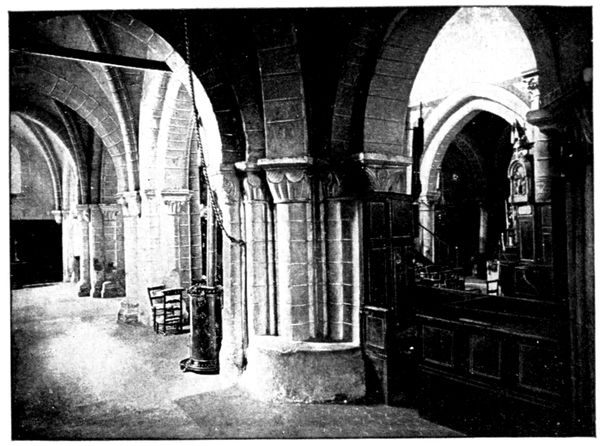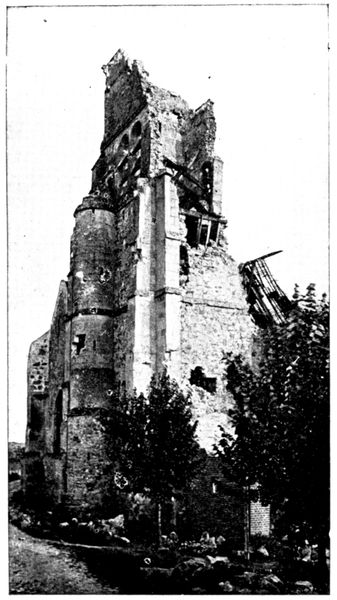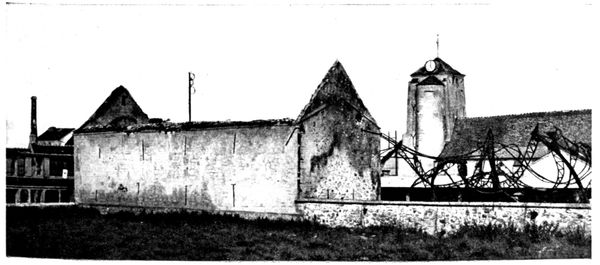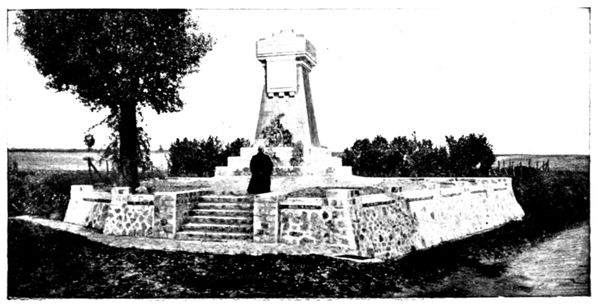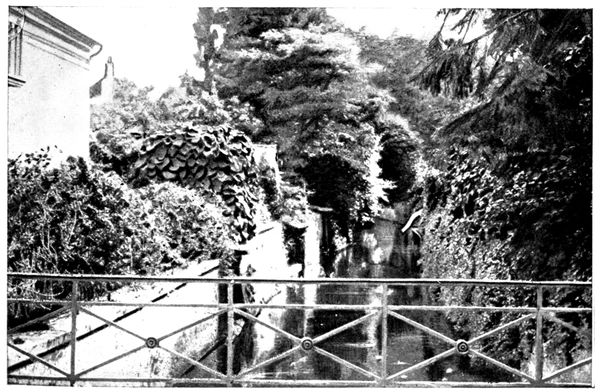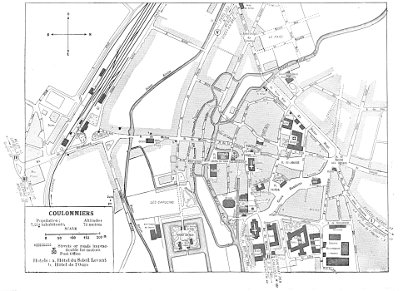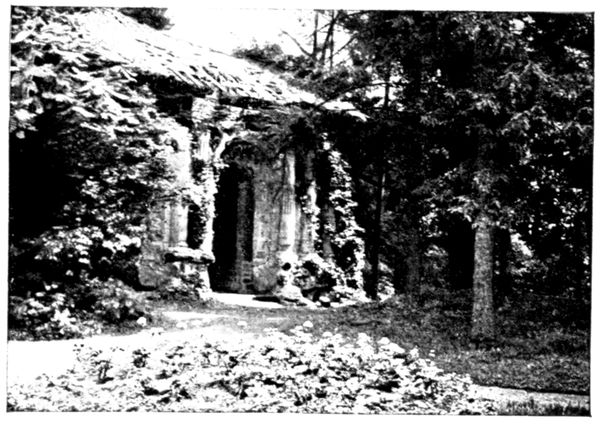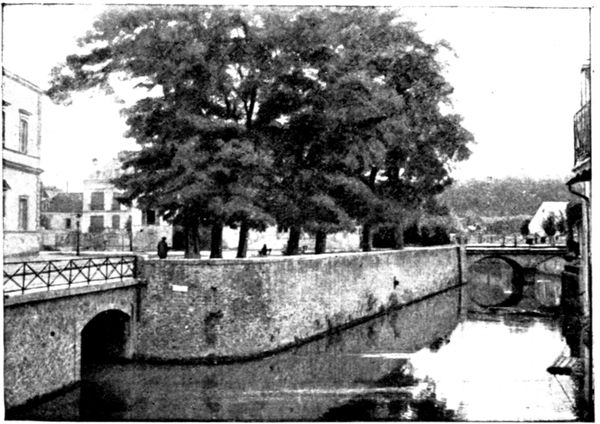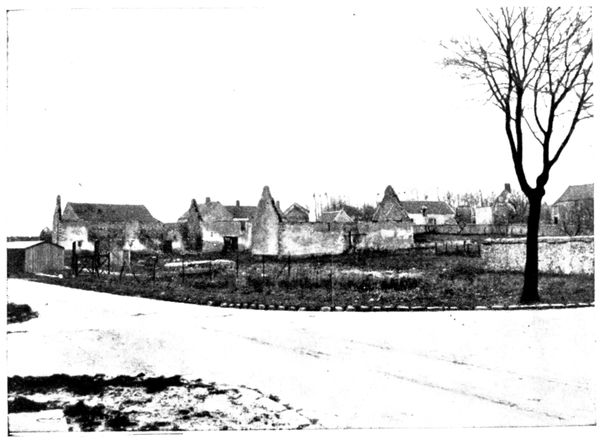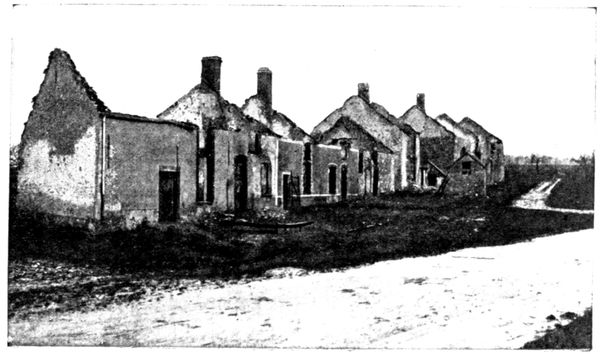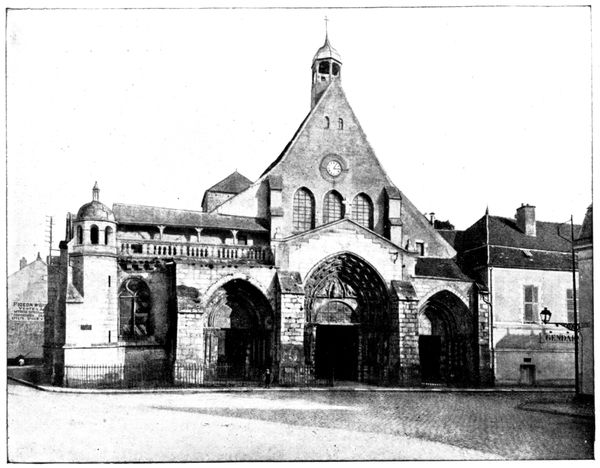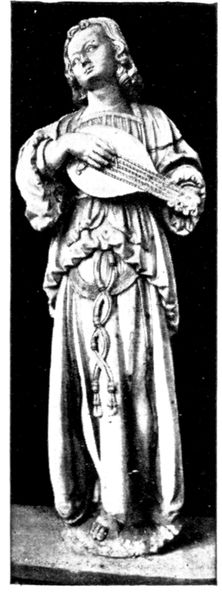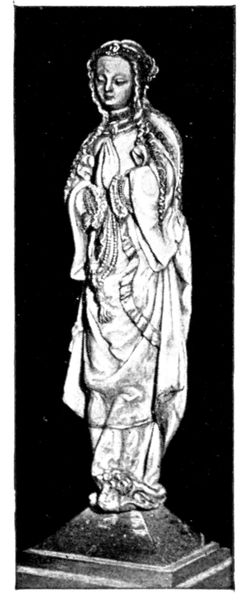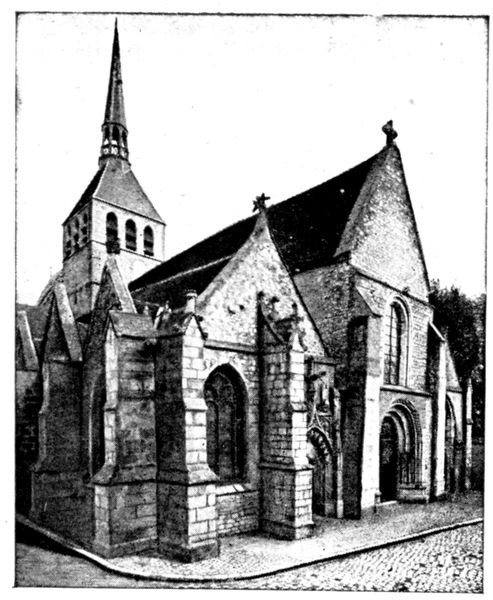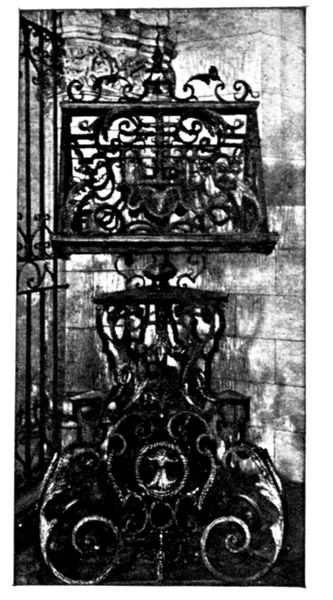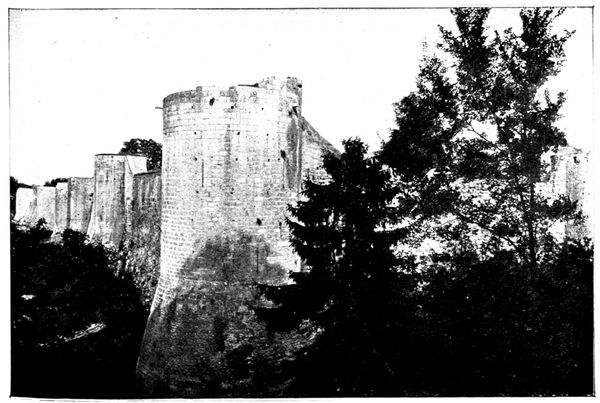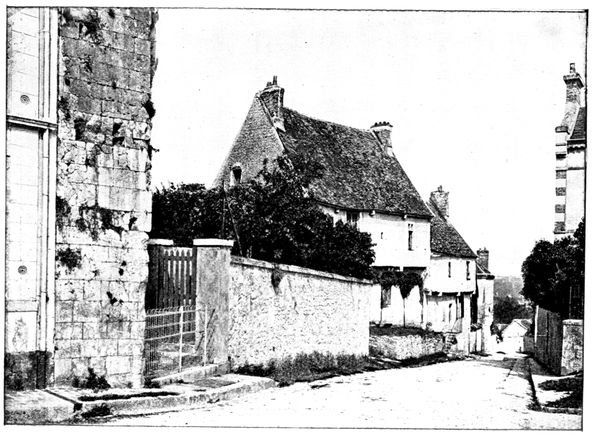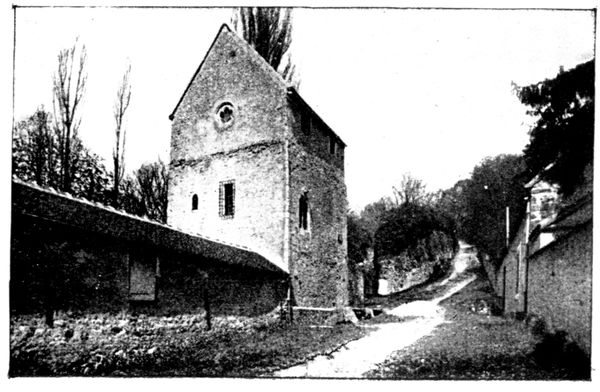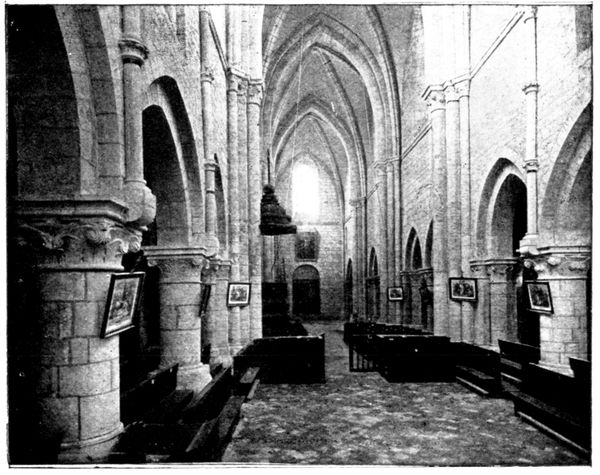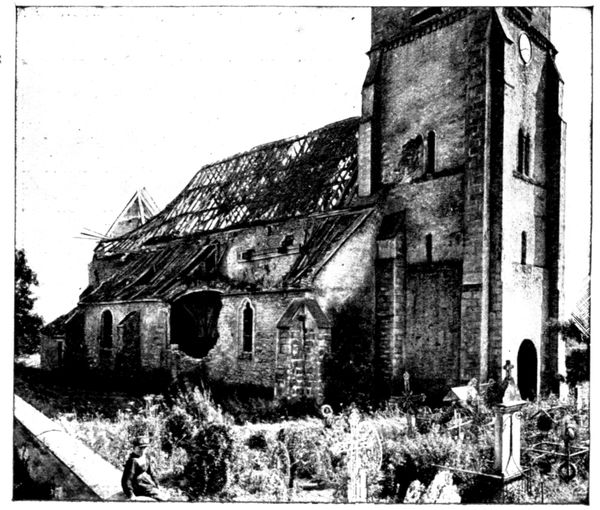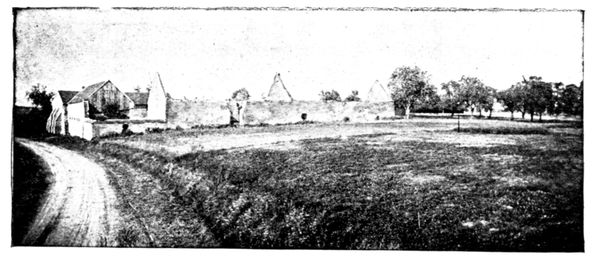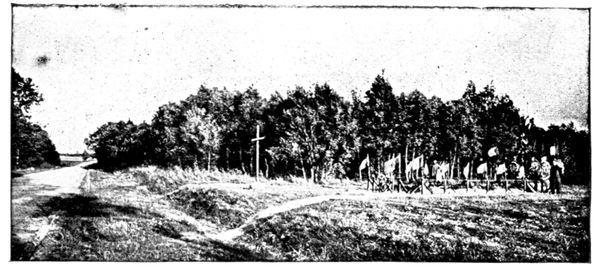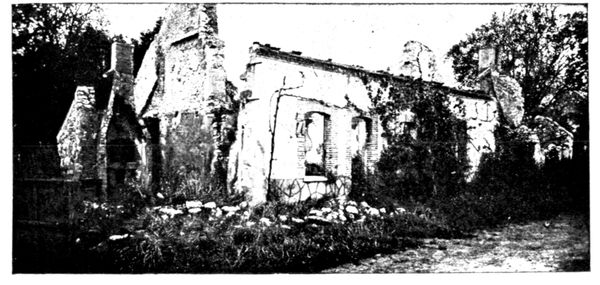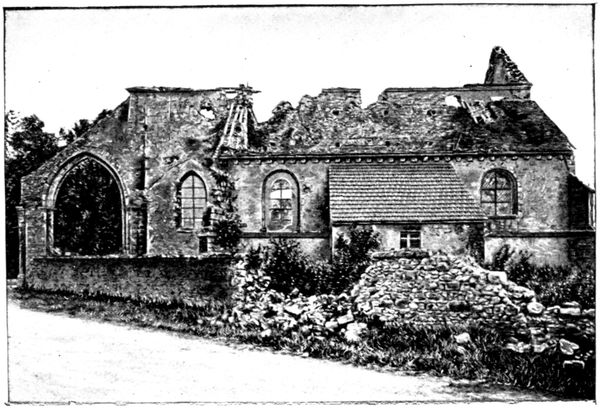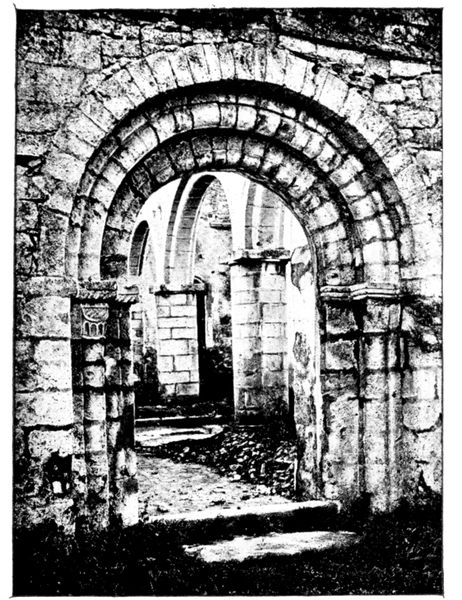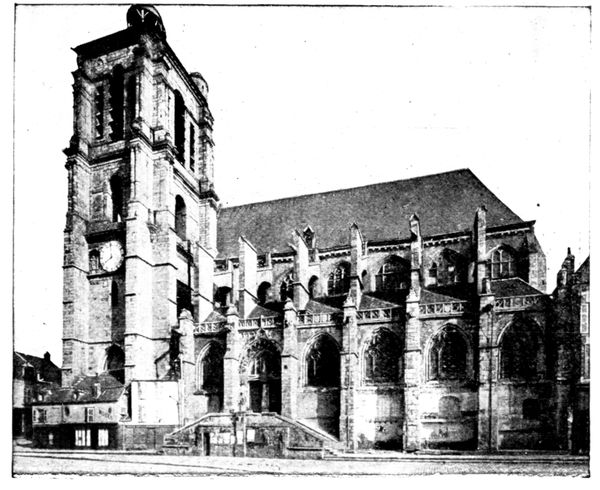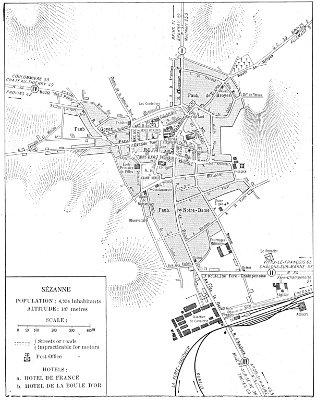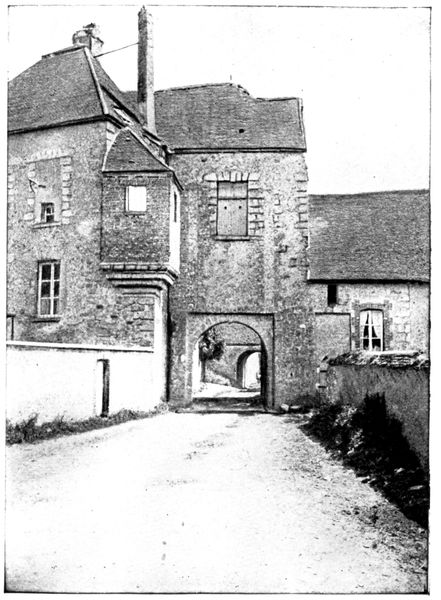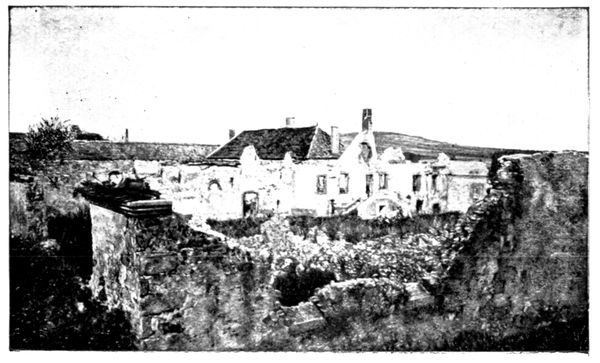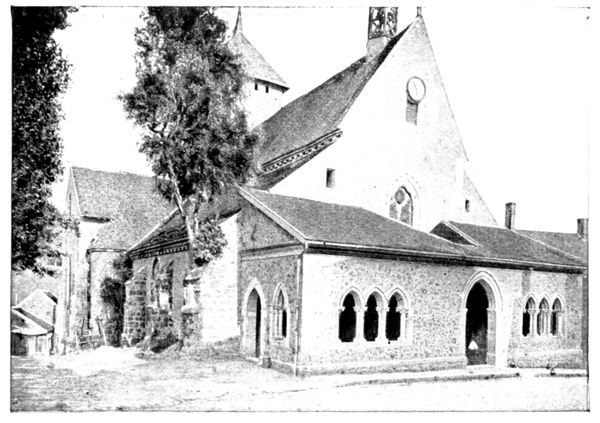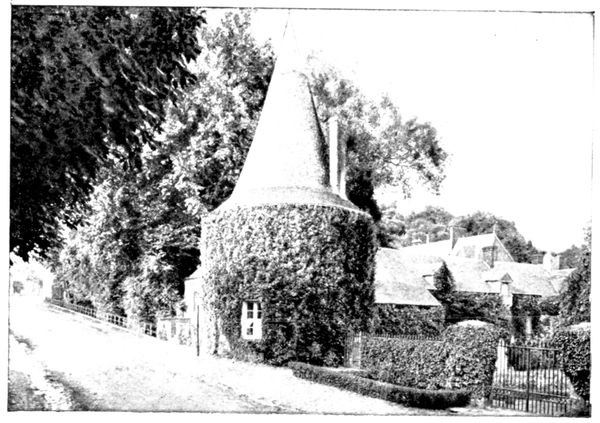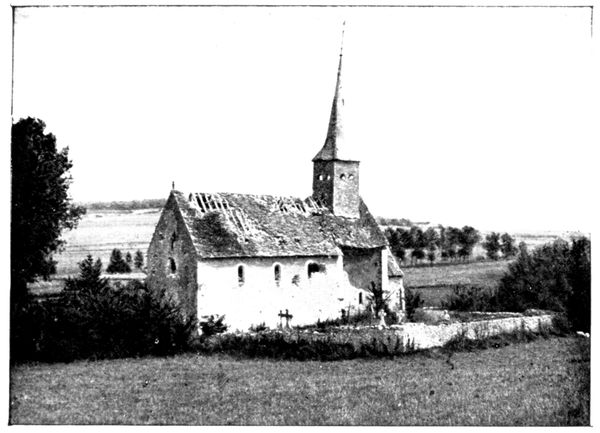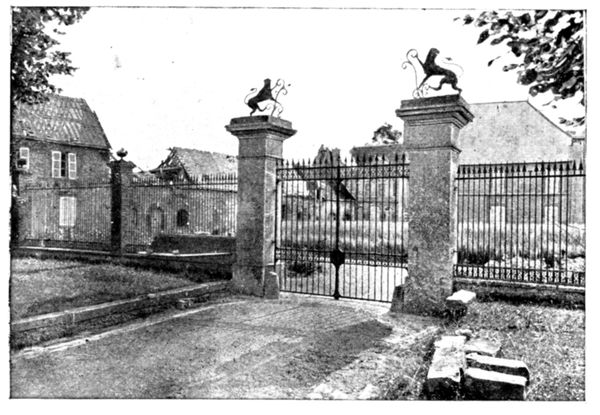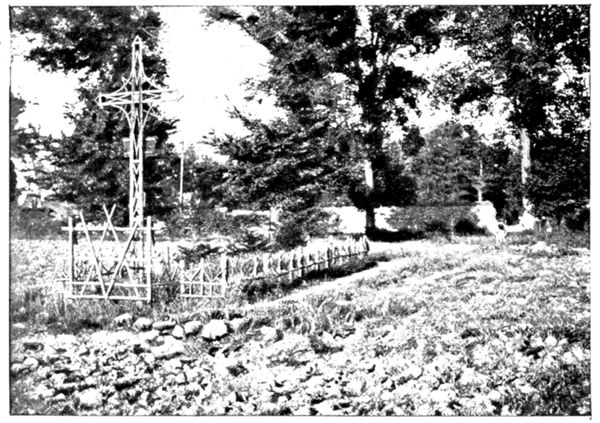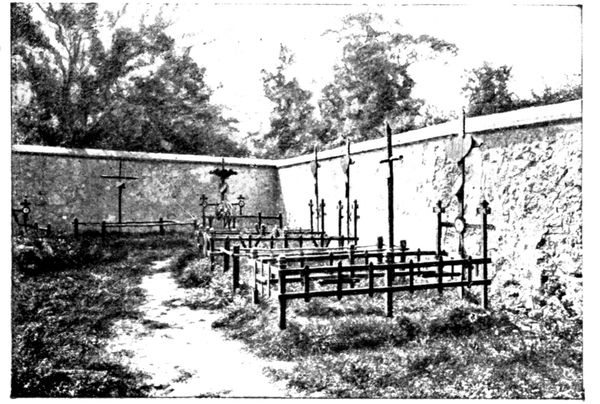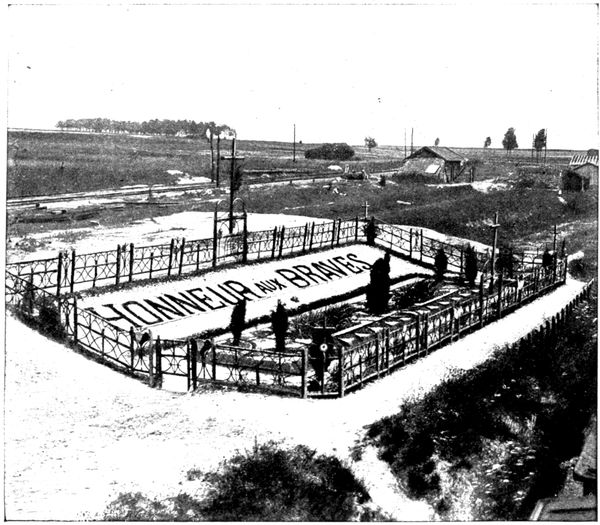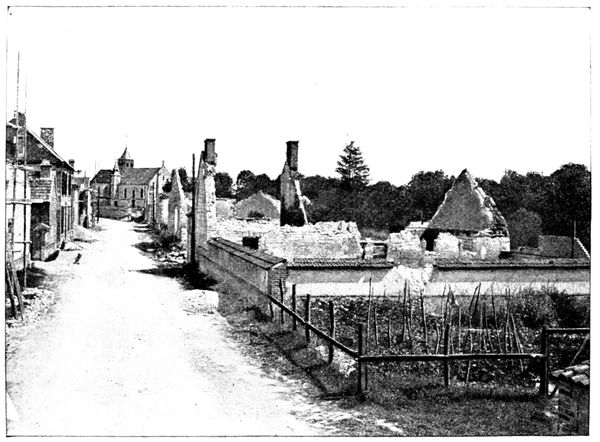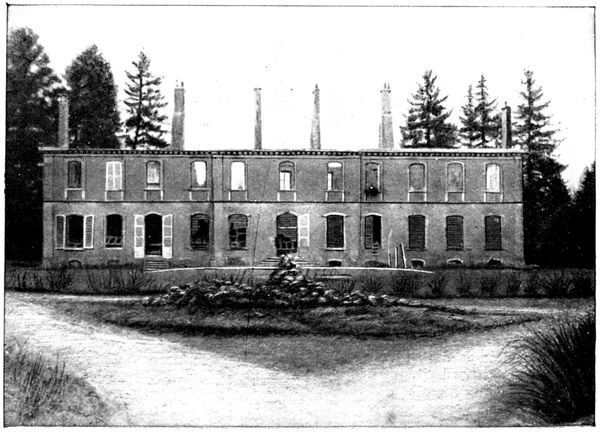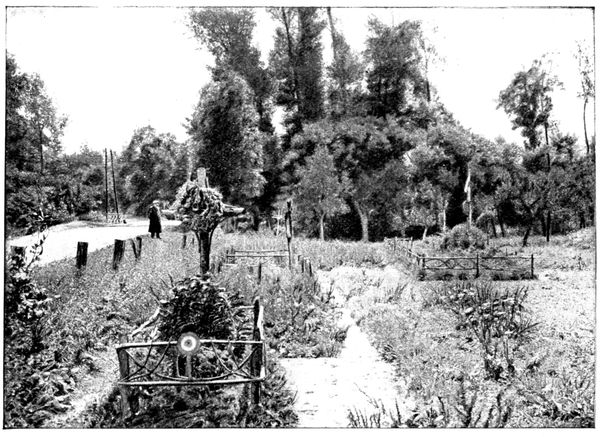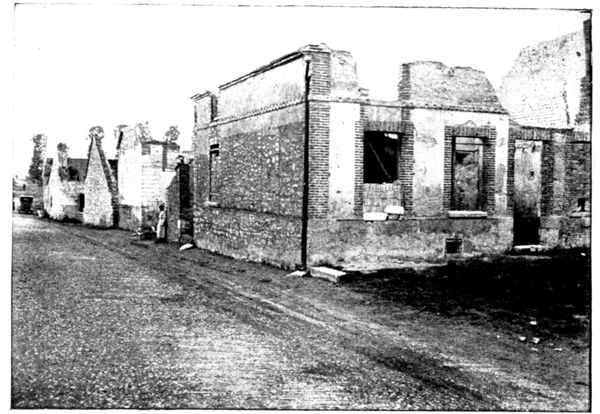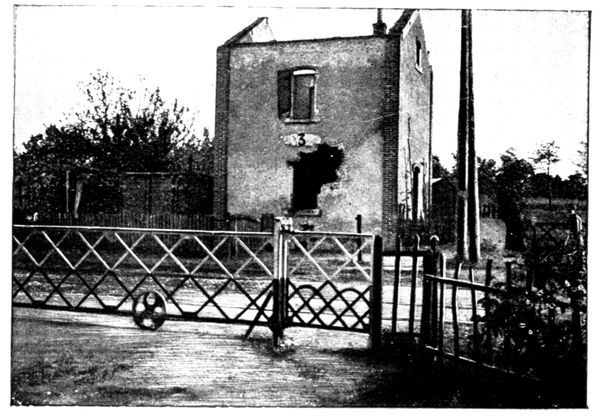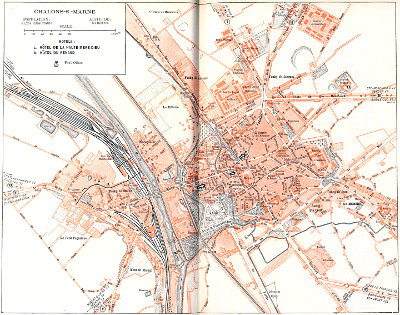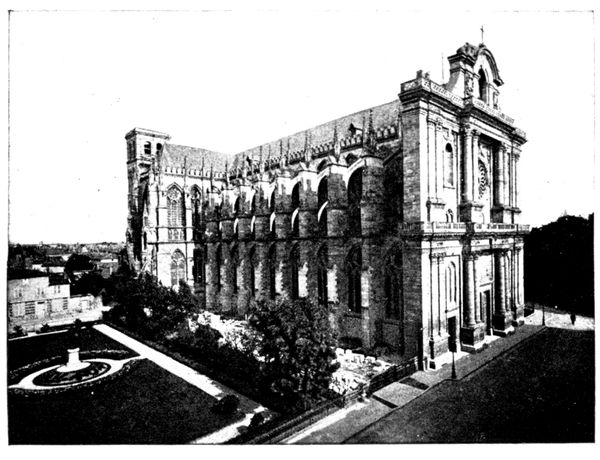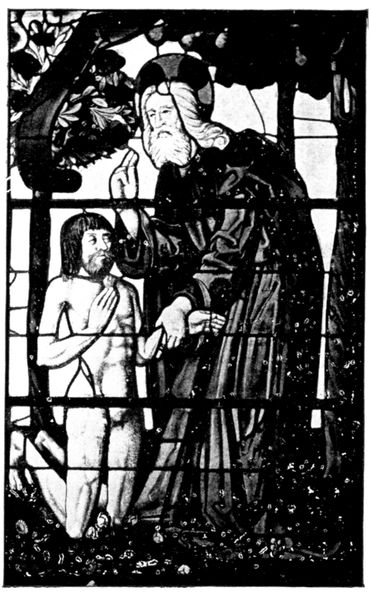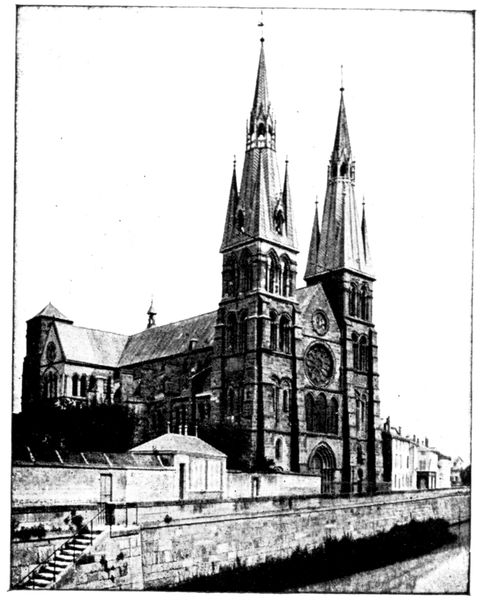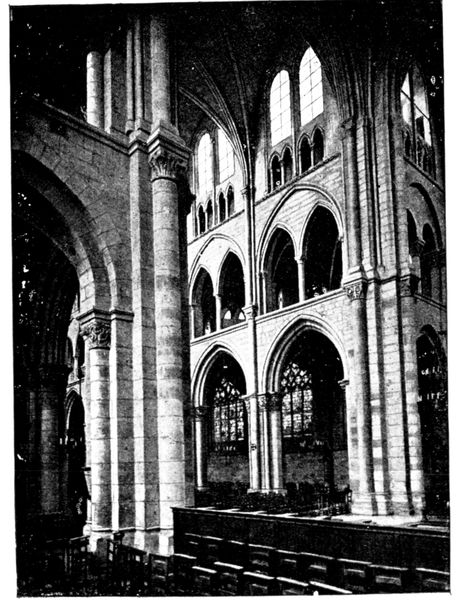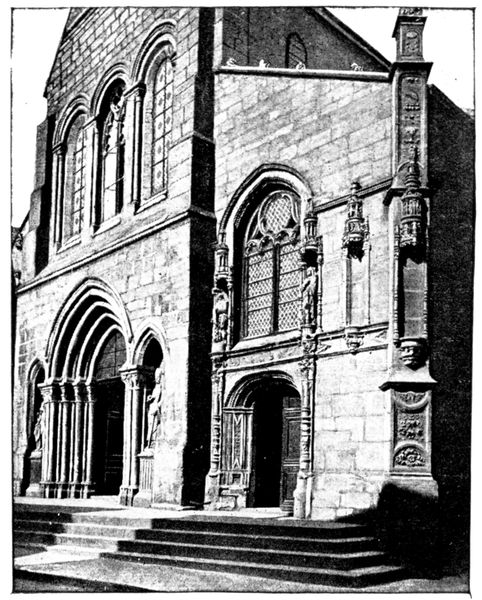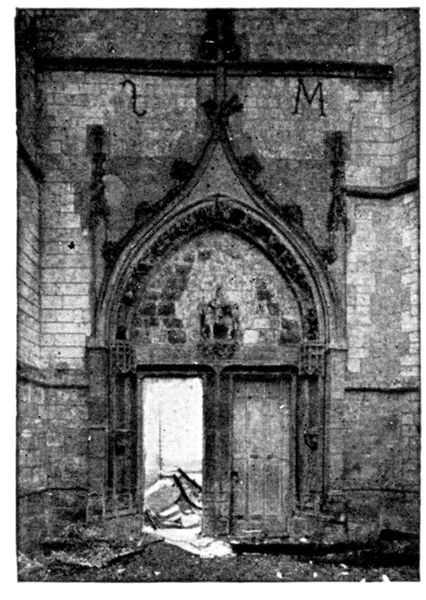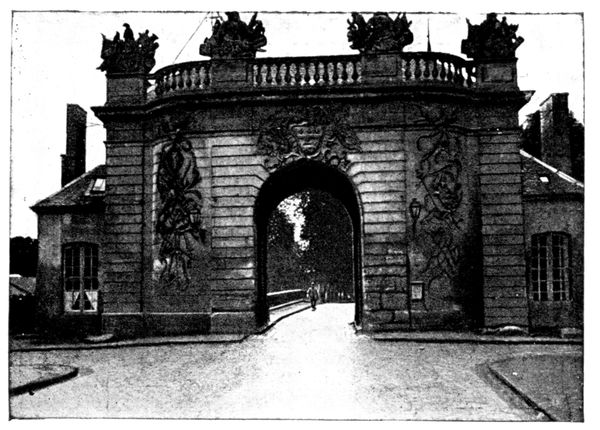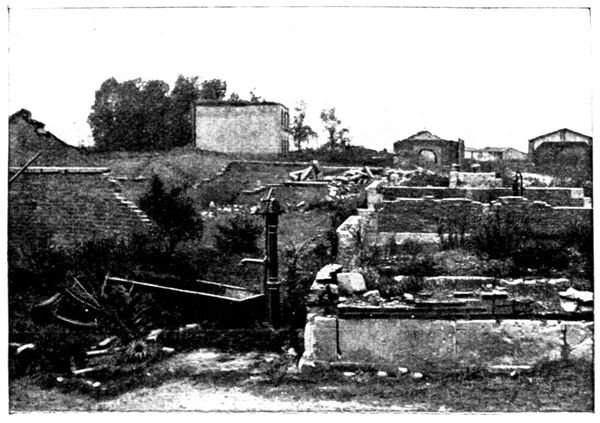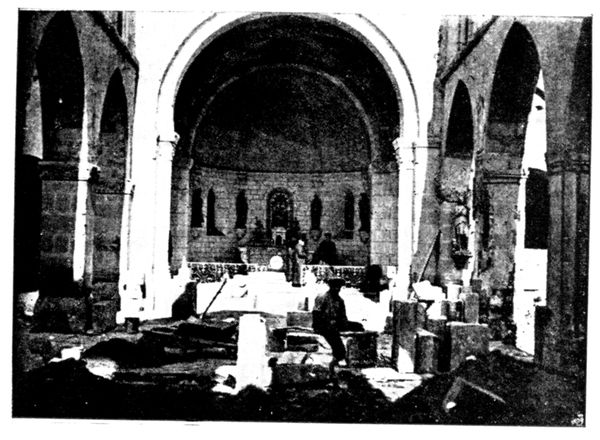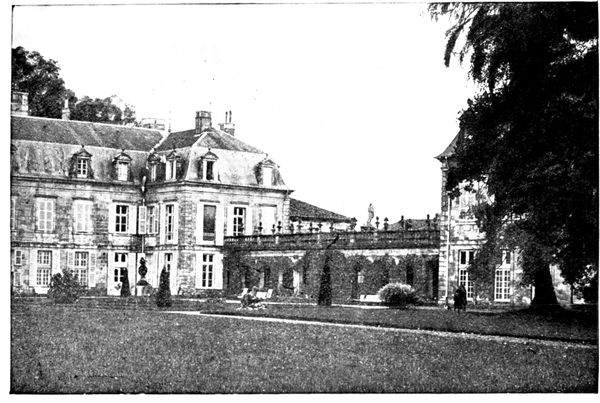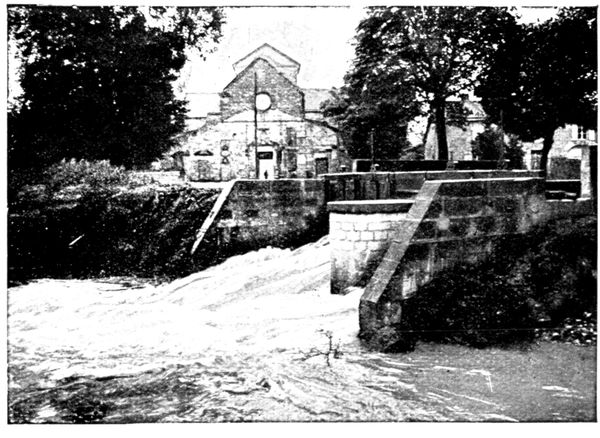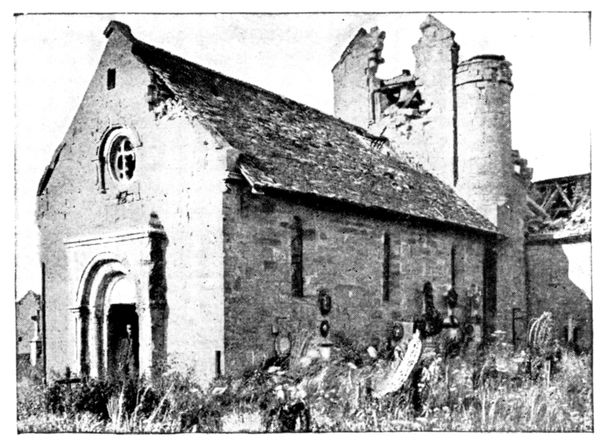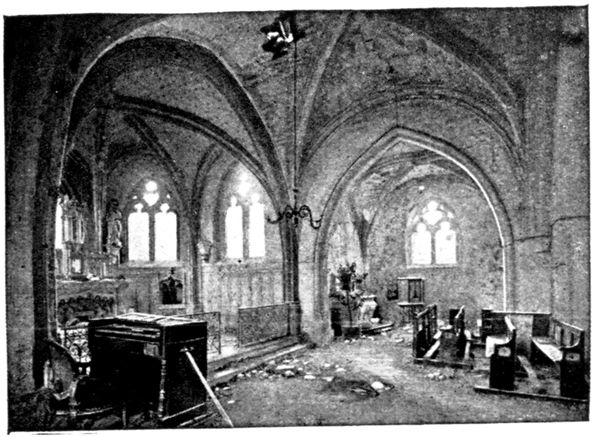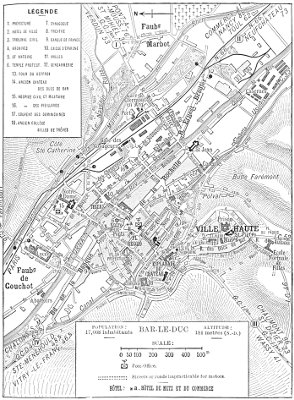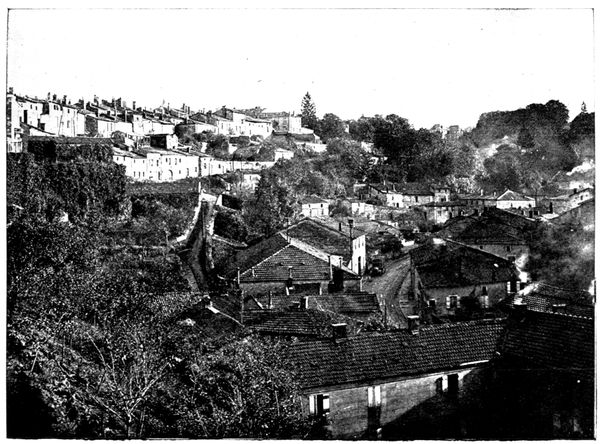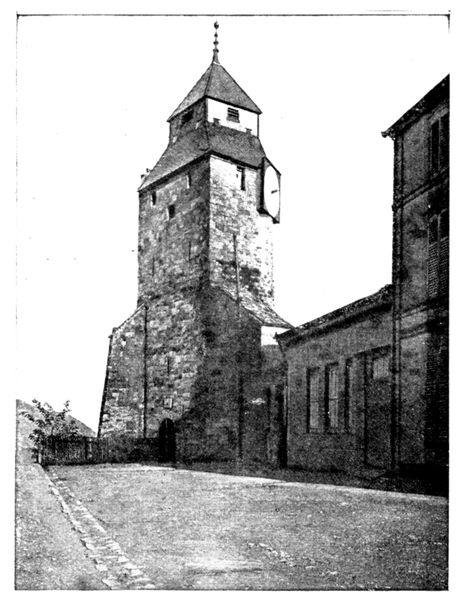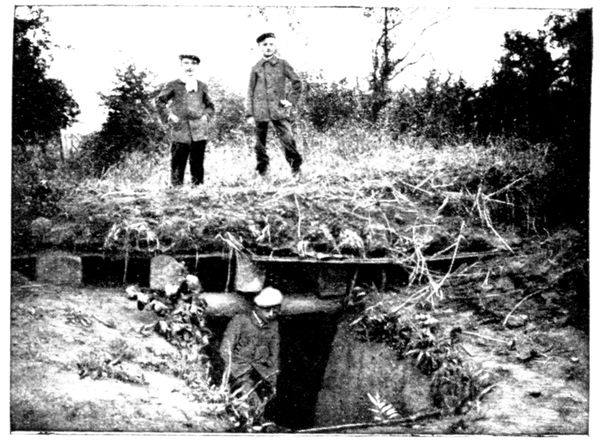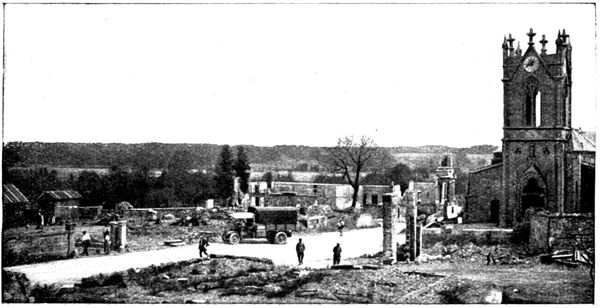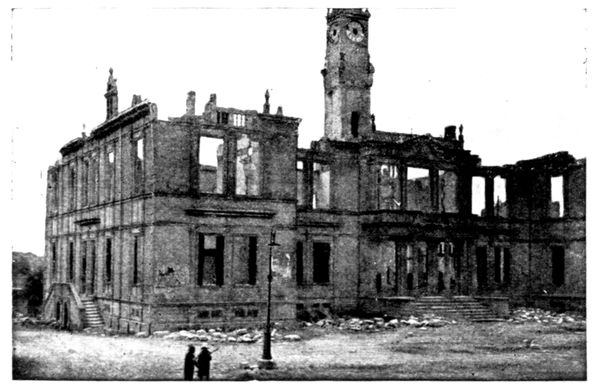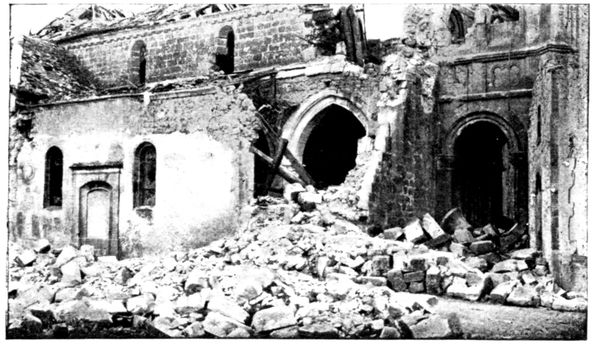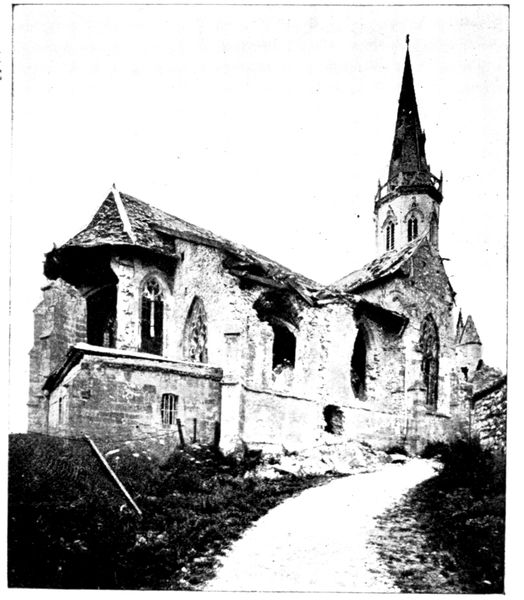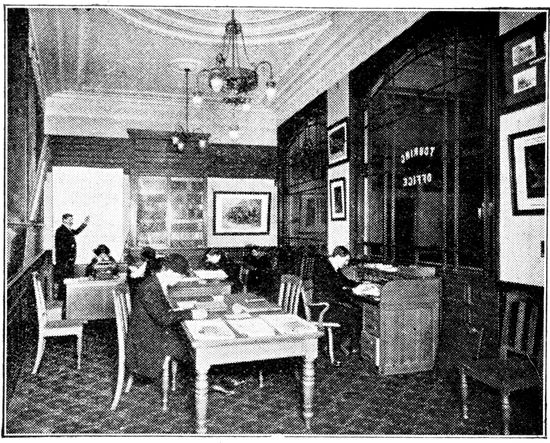Project Gutenberg's Battlefields of the Marne 1914, by Michelin & Cie
This eBook is for the use of anyone anywhere in the United States and most
other parts of the world at no cost and with almost no restrictions
whatsoever. You may copy it, give it away or re-use it under the terms of
the Project Gutenberg License included with this eBook or online at
www.gutenberg.org. If you are not located in the United States, you'll have
to check the laws of the country where you are located before using this ebook.
Title: Battlefields of the Marne 1914
Author: Michelin & Cie
Release Date: December 15, 2015 [EBook #50693]
Language: English
Character set encoding: UTF-8
*** START OF THIS PROJECT GUTENBERG EBOOK BATTLEFIELDS OF THE MARNE 1914 ***
Produced by Richard Tonsing, Brian Coe and the Online
Distributed Proofreading Team at http://www.pgdp.net
The cover image was created by the transcriber and is placed in the public domain.
[Pg i]
ILLUSTRATED MICHELIN GUIDES
TO THE BATTLE-FIELDS.
BATTLE-FIELDS
OF
THE MARNE
1914
Published:
in FRANCE; by MICHELIN & Cie,
Clermont-Ferrand.
in ENGLAND; by MICHELIN TYRE Co Ltd,
81 Fulham Road, London, S.W.
in the U.S.A.; by MICHELIN TIRE Co,
Milltown, New Jersey.
[Pg ii]
[Pg iii]
For all Information and Advice—
MOTORISTS MAY APPLY
TO THE 'BUREAU DE TOURISME MICHELIN'
99, Boulevard Pereire—PARIS
Hotels and Motor-agents.
 Palatial and luxuriously appointed hotels.
Palatial and luxuriously appointed hotels. Well-appointed, first-class hotels.
Well-appointed, first-class hotels. Comfortable hotels with modern improvements.
Comfortable hotels with modern improvements. Well-managed hotels with good accommodation.
Well-managed hotels with good accommodation. Hotels with good service for luncheon and dinner.
Hotels with good service for luncheon and dinner. Small hotels or inns where good meals are provided.
Small hotels or inns where good meals are provided.
| Compressed Air |
Depôt for 'bouteilles d'air Michelin' for inflation of tyres. |
 |
Repair shop. |
| Agt de |
Manufacturer's Agent. |
| 3 |
Garage showing car capacity. |
 |
Repair Pit. |
 |
Electric installation for recharging accumulators. |
 104 104 |
Telephone number. |
 |
Telegraphic address. |
- MEAUX (Seine-et-Marne).
 de la Sirène, 34 r. St-Nicolas. Ⓑ(wc) Gar 3 Shed 5
de la Sirène, 34 r. St-Nicolas. Ⓑ(wc) Gar 3 Shed 5  Sirène
Sirène  83.
83. des Trois-Rois, 1 r. des Ursulines and 30 r. St-Rémy. (wc) Shed 4
Inner courtyard 10
des Trois-Rois, 1 r. des Ursulines and 30 r. St-Rémy. (wc) Shed 4
Inner courtyard 10  146.
146. MICHELIN STOCK (Compressed Air) Garage Central (A.
Feillée), 17-21 r. du Grand-Cerf. Agt. de: Panhard, Renault,
de Dion. 30
MICHELIN STOCK (Compressed Air) Garage Central (A.
Feillée), 17-21 r. du Grand-Cerf. Agt. de: Panhard, Renault,
de Dion. 30  G Petrol Depôt
G Petrol Depôt  59.
59.- — MICHELIN STOCK Auto-Garage de Meaux (E. Vance),
55-57 pl. du Marché. Agt de: Delahaye. 20
 G
G 
 84.
84.
- SENLIS (Oise).
 du Grand-Cerf, 47 r. de la République. Central heating
du Grand-Cerf, 47 r. de la République. Central heating  Ⓑ (wc)
Inner coach-house 6
Ⓑ (wc)
Inner coach-house 6 
 Grandcerf
Grandcerf  111.
111. des Arènes, 30 r. de Beauvais. (wc) Inner coach-house 7 ott
des Arènes, 30 r. de Beauvais. (wc) Inner coach-house 7 ott  17.
17. MICHELIN STOCK Guinot, 8 pl. de la Halle. Stock: de Dion.
Agt de: Peugeot. 3
MICHELIN STOCK Guinot, 8 pl. de la Halle. Stock: de Dion.
Agt de: Peugeot. 3 
 46.
46.- — MICHELIN STOCK L. Buat and A. Rémond, 2 r. de Crépy.
Agts de: Panhard, Renault, Cottin-Desgouttes, Delahaye,
Rochet-Schneider, Mors. 10
 G
G 
 38.
38.
- CHANTILLY (Oise).
 du Grand-Condé, av. de la Gare. Closed in 1917. Asc Central heating
du Grand-Condé, av. de la Gare. Closed in 1917. Asc Central heating
 Ⓑ (wc) Gar 50
Ⓑ (wc) Gar 50 
 52.
52. d'Angleterre, r. de Paris and pl. de l'Hôpital.
d'Angleterre, r. de Paris and pl. de l'Hôpital.  Ⓑ (wc) Inner
shed 8
Ⓑ (wc) Inner
shed 8  59.
59. Noguey's Family Hotel, 10 av. de la Gare.
Noguey's Family Hotel, 10 av. de la Gare.  Ⓑ (wc) Inner coach-house
5
Ⓑ (wc) Inner coach-house
5  146.
146. MICHELIN STOCK Grigaut, 72 r. du Connétable.
MICHELIN STOCK Grigaut, 72 r. du Connétable.  1.14.
1.14.- — MICHELIN STOCK Garage Bourdeau, 1 bis r. de Gouvieux. 6
 G
G 
 1.90.
1.90.
- COULOMMIERS (Seine-et-Marne).
 du Soleil-Levant, 62 r. de Melun. Central heating, Inner coach-house
3 courtyard 15
du Soleil-Levant, 62 r. de Melun. Central heating, Inner coach-house
3 courtyard 15  22.
22. de l'Ours, r. de Melun. Central heating. Inner coach-house 3 courtyard
10
de l'Ours, r. de Melun. Central heating. Inner coach-house 3 courtyard
10  27.
27. MICHELIN STOCK Doupé-Lejeune, 42 r. de Paris. Agt de:
Panhard, Delage, Darracq. 10
MICHELIN STOCK Doupé-Lejeune, 42 r. de Paris. Agt de:
Panhard, Delage, Darracq. 10  Petrol Depôt
Petrol Depôt 
 92.
92.- — Gautier, 6 av. de la Ferté-sous-Jouarre. Agt de: Peugeot, Vinot-Deguingand,
de Dion. 4
 Petrol Depôt
Petrol Depôt  1.19.
1.19.
- — P. Fritsch, 51 av. de Strasbourg. Agt de: Brasier, Le Zèbre.
6
 Petrol Depôt.
Petrol Depôt.
- — Purson, cycles, 1 r. de Melun. Agt de: Clément-Bayard. 2
 Petrol Depôt.
Petrol Depôt.
- — A. Gontier, cycles, Le Martroy.
- — Doupé-Boucher, cycles, 1 r. de la Ferté-sous-Jouarre. Petrol
Depôt.
'OFFICE NATIONAL DU TOURISME'
17, Rue de Surène, PARIS (VIIIe)
The 'Office National du Tourisme' was created by
an Act of April 8, 1910, and reorganised in 1917. It
enjoys civil privileges and financial autonomy.
It is directed by an administrative council chosen
by the Minister of Public Works.
Its mission is to seek out every means of developing
travel; to urge and, if necessary, to take any measure
capable of ameliorating the condition of the transport,
circulation and sojourn of tourists.
It co-ordinates the efforts of touring societies and
industries, encourages them in the execution of their
programmes and stimulates legislative and administrative
initiative with regard to the development of travel
in France.
It promotes understanding between the public services,
the great transport companies, the 'Syndicats d'Initiative'
and the 'Syndicats Professionnels.'
It organises propaganda in foreign countries; and
arranges for the creation of travel enquiry offices in
France and abroad, with a view to making known the
scenery and monuments of France as well as the
health-giving powers of French mineral waters, spas
and bathing places.
ALL ENQUIRIES WITH REGARD TO TRAVELLING
SHOULD BE ADDRESSED
TO THE 'TOURING-CLUB DE FRANCE'
65, Avenue de la Grande Armée, 65
PARIS
[Pg iv]
'THE TOURING-CLUB DE FRANCE'
ADVANTAGES OF MEMBERSHIP
The 'Touring-Club de France' (founded in 1890),
is at the present time the largest touring association
in the world. Its principal aim is to introduce
France—one of the loveliest countries on earth—to
the French people themselves and to tourists of other
nations.
It seeks to develop travel in all its forms: on foot,
horseback, bicycle, in carriage, motor, yacht or railway,
and, eventually, by aeroplane.
Every member of the association receives a badge
and an identity ticket, free of charge, and also the
'Revue Mensuelle' every month.
Members have the benefit also of special prices in
a certain number of affiliated hotels; and this advantage
holds good in the purchasing of guide-books and Staff
(Etat-major) maps, as well as those of the 'Ministère de
l'Intérieur,' the T.C.F., etc. They may insert notices
regarding the sale or purchase of travelling requisites,
in the 'Revue' (1 fr. per line). The 'Comité de
Contentieux' is ready to give them council with regard
to travelling, and 3,000 delegates in all the principal
towns are retained to give advice and information
about the curiosities of art or of nature of the neighbourhood,
as well as concerning the roads, hotels, motor-agents,
garages, etc.
Members are accorded free passages across the
frontier for a bicycle or motor-bicycle. For a motor-car
the association gives a 'Triptyque' ensuring free passage
through the 'douane,' etc.
TO TOUR FRANCE IN COMFORT JOIN
THE 'TOURING-CLUB DE FRANCE'[Pg 1]
IN MEMORY
OF THE MICHELIN EMPLOYEES
AND WORKMEN WHO DIED GLORIOUSLY
FOR THEIR COUNTRY.
THE MARNE
BATTLE-FIELDS
(1914)

JOFFRE
Commander-in-chief of the French Army
Copyright 1919 by Michelin & Cie.
All rights of translation, adaptation, or reproduction
(in part or whole) reserved in all countries.
[Pg 2]
FOREWORD
For the benefit of tourists who wish to visit the battlefields and
mutilated towns of France we have tried to produce a work combining
a practical guide with a history.
Such a visit should be a pilgrimage, not merely a journey across
a ravaged land. Seeing is not enough, one must understand: a
ruin is more moving when one knows what has caused it; a stretch
of country which might seem dull and uninteresting to the unenlightened
eye, becomes transformed at the thought of the battles which
have raged there.
We have, therefore, prefaced the description of our journeys by a
short account of the events which took place in the vicinity, and we
have done our best to make this account quite clear by the use of
many illustrations and maps.
In the course of the description we give a brief military commentary
on the numerous views and panoramas contained in the
book.
When we come across a place that is interesting either from an
archæological or an artistic point of view, there we halt, even though
the war has passed it by; that the tourist may realise it was to
preserve intact this heritage of history and beauty that so many of
our heroes have fallen.
Our readers will not find any attempt at literary effect in these
pages; the truth is too beautiful and tragic to be altered for the sake
of embellishing the story. We have, therefore, after carefully sifting
the great volume of evidence available, selected only that obtained from
official documents or from reliable eye-witnesses.
This book was written before the end of the war, even then the
country over which it leads the reader had long been freed. The
wealth of illustration in this work allows the intending tourist to
make a preliminary trip in imagination, until such time as circumstances
permit of his undertaking a journey in reality beneath the
sunny skies of France.
[Pg 3]
HISTORICAL PART
IMPORTANT NOTE.—On pages 4 to 16 will be found a brief summarized
account of the Battle of the Marne and of the events which immediately
preceded it. We recommend the reading of these few pages attentively,
and the consultation of the maps annexed to the same, before reading
the descriptive part which commences at page 17.
A clear understanding of the action as a whole is absolutely necessary to
comprehend with interest the description of the separate combats.
[Pg 4]
THE BATTLE OF THE MARNE
(1914)
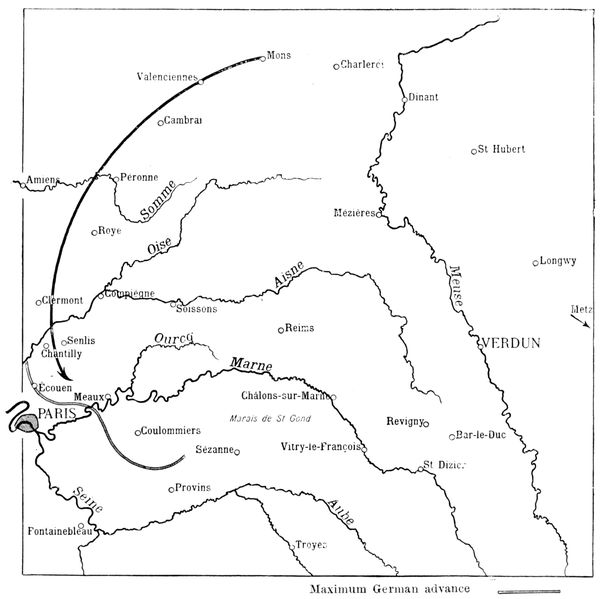
The above map gives a general view of the ground on which took place
successively: the battle of the frontier, the retreat of the Allies, the victorious
stand, and the pursuit of the retreating enemy.
The distance from Paris to Verdun is 140 miles as the crow flies; from
Charleroi to the Marne is 97 miles.
In consequence of the tearing up of that fateful "scrap of paper" which
preceded the invasion of Belgium by Germany, in violation of the common
rights of man, the Battle of the Frontier (also called the Battle of Charleroi) was
fought in August 1914 on the line Mons—Charleroi—Dinant—Saint-Hubert—Longwy—Metz.
[Pg 5]
On August 22, 1914, and the two succeeding
days this Allied offensive failed at Charleroi, in
consequence of which the French Commander-in-chief,
General Joffre, broke off contact with the
enemy and ordered a general retreat.
It was impossible to do otherwise as the
enemy forces were greatly superior in numbers.
Moreover, they were well equipped with powerful
artillery and machine-guns, whereas the Franco-British
forces were short of both. Lastly, the
German soldier had long been trained in trench
warfare, whereas the Allies had yet to learn
this art.
To help in readjusting the balance between
the opposing forces, Joffre fell back in the direction
of the French reserves.
The respite thus afforded was utilized to re-arrange the commands, and
to train the reserves in the form of warfare adopted by the Germans. Meanwhile,
the latter greatly extended their line of communications and more or
less tired themselves.
Then began that heroic retreat, without precedent in history, which
attained a depth of 122 miles, and in the course of which the Allied soldiers,
though already fatigued, marched as much as thirty miles a day facing about
from time to time and counter-attacking fiercely, often with success.
The Germans followed in pursuit, overrunning the country like a plague
of locusts. Using their left wing as a pivot, their right undertook a vast
turning movement taking in Valenciennes, Cambrai, Péronne, and Amiens.
By August 27 Joffre had fixed up a plan according to which the offensive
was to be taken again at the first favourable opportunity. In view of the
execution of this plan an important mass of troops, under the orders of
General Maunoury, was formed on the French left.
General Maunoury's task was to outflank at a given moment the German
right wing while, at the same time, a general attack, or at least unflinching
resistance, was to be made along the rest of the front.
This was the Allies' reply to the turning movement of the German general
Von Kluck.
A first line of resistance offered itself on the River Somme, where fierce
fighting took place. It was, however, realized that the battle front could
not be reformed there successfully. Joffre wanted a flanking position not
only for his left wing, but also for his right, which the Somme line did not
offer. He therefore continued the withdrawal of the whole front towards
the River Marne and Paris.
On September 3 German cavalry patrols were signalled at Ecouen, only
eight miles from the gates of Paris. The inhabitants of the latter were
asking themselves anxiously whether they, too, would not have to face the
horrors of a German occupation. The suspense was cruel. Fortunately, a
great man, General Gallieni, was silently watching over their destinies.
This great soldier had just been made Military Governor of Paris, with
General Maunoury's Army, mentioned a moment ago, under his orders.
The entrenched camp of Paris and this army were, in turn, under the authority
of the French Commander-in-Chief, Joffre, who thus had full liberty
of action from Paris to Verdun.
On September 3 General Gallieni issued his stirring proclamation which
put soldiers and civilians alike on their mettle:
"Armies of Paris, Inhabitants of Paris, the Government of the Republic
has left Paris to give a new impulse to the National Defence. I have received
orders to defend Paris against invasion. I shall do this to the end."
The temptation to push straight on to the long-coveted capital must
have been very great for the German High Command. However, in view[Pg 6]
of the danger presented by the Franco-British
forces, which were still unbroken, it was eventually
decided first to crush the Allied armies,
and then to march on Paris, which would fall
like 'a ripe pear.'
Seemingly ignorant of Maunoury's existence,
Von Kluck's Army slanted off eastwards in pursuit
of the British force, which it had received
orders from the Kaiser to exterminate and which
it had been harrying incessantly during its retreat
from the Belgian frontier.
There will be heated arguments for many
years to come as to whether the German High
Command was right or wrong in giving up the
direct advance on Paris, but whatever the consensus
of expert opinion on the point may eventually be, one thing is certain—Von
Kluck did not expect the furious attack by the Army of Paris, which
followed.
Later, he declared: "There was only one general who, against all rules,
would have dared to carry the fight so far from his base. Unluckily for me,
that man was Gallieni."
On September 3, thanks to the Flying Corps, General Gallieni learned
of the change of direction taken by Von Kluck's Army. Realising the
possibilities which this offered, he suggested a flank attack by the Army of
Paris. As previously mentioned, such an attack formed part of Joffre's
general plan, matured on August 27. It was, however, necessary that the
attack should be not merely a local and temporary success, as would have
been the case on the Somme line for instance, where the remainder of the
front was not in a favourable position for resistance, or attack.
On September 4, after conferring with General Gallieni, Joffre decided that
conditions were favourable for a new offensive, and fixed upon September 6
as the date on which the decisive battle should be begun along the whole
front.
[Pg 7]
SEPTEMBER 5, 1914
The map before you shows the respective
positions occupied by the opposing armies on
September 5, 1914, the eve of the great battle.
The Allied forces are represented by a thick
black line, those of the Germans by a black and
white line.
Joffre directed the operations first from Bar-sur-Aube
and afterwards from Romilly.
As you see, the half-circle formed by the
Allies, into which the Germans imprudently penetrated,
was supported at the western extremity
by the entrenched camp of Paris and at the
eastern extremity by the fortified position of
Verdun. The River Marne flows through the middle.
Although the battle was only to begin on the 6th, General Maunoury's
Army was already engaged the day before. Its orders were to advance to the
River Ourcq (see map), but, despite furious fighting, it was unable to get there.
The British forces were to occupy a line running north and south, with
Coulommiers as point of support. Unfortunately, the exceedingly fatiguing
retreat it had just accomplished, retarded the execution of the necessary
volte-face. The map shows them on the 5th, still far to the south of Coulommiers.
The fact that neither of these two forces was able to take up its assigned
position greatly increased the difficulties of the turning movement planned
by Joffre.
In front of the forces under Maunoury and French, were the right and
centre of the First German Army, under Von Kluck.
The Fifth French Army, under General Franchet d'Esperey, whose position
extended from the north of Provins to Sézanne, delivered a frontal attack
against the left wing of Von Kluck's army and the right wing of the Second
German army under Von Bulow.
At the right of Franchet d'Esperey's army was the Ninth French Army
under General Foch, whose task it was to cover his neighbour on the left
by holding the issues south of the Marshes of St.-Gond.
Opposing Foch was the left of Von Bulow's army, with the right of the
Third German Army commanded by Von Hausen.
The Fourth French Army, under General Langle de Cary, was minus two
army corps which had helped to form Foch's army. This diminution of
the forces of the Fourth Army prevented the latter from breaking off contact
with the enemy. While, at the extreme left, General Maunoury had already
begun his advance towards the River Ourcq, General Langle de Cary received
orders to hold up the opposing forces under the Duke of Wurtemberg.
Unfortunately, Langle de Cary's forces had not sufficient liberty of movement
to effect the necessary volte-face.
At the extreme right of the Allied front was the Third French Army, under
General Sarrail, established in a position extending from the north-east
of Revigny to Verdun, with a reserve group to the west of Saint-Mihiel,
to be moved either east or west, according to circumstances.
The forces opposing General Sarrail were commanded by the future
"War-Lord": the Crown Prince.
While the French were preparing to thrust back the invader, "War Lord
the Second," drunk with victory, ordered the pursuit to be continued as far as
the line Dijon—Besançon—Belfort: triumphal dreams destined to give place
first to surprise, then to uncertainty, and finally to the bitterness of defeat.
Posterity will compare this arrogant order of the Crown Prince's with the
stirring proclamation which Joffre caused to be made known to the whole
of the French army on the eve of the great battle:
[Pg 8]
"On the eve of the
battle, on which the future
of our country depends, it
is important to remind all
that there must be no looking
back. Every effort
mast be made to attack
and drive back the enemy.
Troops which can no
longer advance must at all
costs keep the ground they
have won, and die rather
than fall back. Under
present circumstances no
weakness can be tolerated."
SEPTEMBER 6, 1914
On this and the succeeding maps, the Allied positions of the previous
evening and at the end of the next day are shown.
The German positions are not shown, as too many lines might create
confusion in reading the maps.
Maunoury's Army effected an advance of about six miles, but his left was
unable to accomplish its task, which was to outflank the German right. Von
Kluck who, till then, seeming to ignore Maunoury had concentrated all
his efforts against the British and Franchet d'Esperey's Army, now perceived
this manœuvre. With the promptitude and audacity which particularly
marked his character, he completely changed his plans and rounded
on Maunoury. Taking advantage of the state of extreme fatigue of the
British forces, Von Kluck withdrew one of the army corps which were facing
them and despatched it by forced marches to the help of his right wing.
It was these unexpected reinforcements which enabled Von Kluck to hold
up Maunoury's left.
On this day the British army finally recovered itself, and reached a line
running from the north-west to the south-east of Coulommiers.
[Pg 9]
The armies of Generals Franchet d'Esperey
and Foch fought with great stubbornness. The
former wrested several dominating positions
from the Germans and approached Esternay,
but the latter was able only to maintain himself
on the line of resistance assigned to him south
of the Marshes of Saint-Gond.
General Langle de Cary was eventually able
to hold up the bulk of the troops under the
Duke of Wurtemberg on positions extending
from the south-west of Vitry-le-François to
Revigny.
The general plan of operations included an
attack by the Third Army, under General Sarrail,
against the German left wing, such attack to
coincide with that of General Maunoury at the other end of the line. This
was, however, anticipated by the Germans who, under the Crown Prince,
and in far greater numbers, forced back Sarrail's left and prevented all progress
on his right.
SEPTEMBER 7, 1914
On September 7, Maunoury's army began to feel the effects of the German
heavy artillery, established out of range of the French 75's, and could advance
but very slowly.
However, at the end of the day, Maunoury still hoped to be able to
outflank the German right. Meanwhile, Von Kluck continued his risky
manœuvre, and detached a second army corps from the forces opposed to
the British, adding it to his right. Each was endeavouring to outflank the
other.
Fronting the British, there was now only a thin curtain of troops taken
from two of the German army corps opposed to Franchet d'Esperey.
This small force fought with great stubbornness, in order, if possible, to
give Von Kluck time to crush Maunoury, before the advance by the British
and Franchet d'Esperey could become really dangerous.
[Pg 10]
The slow progress effected in the British sector
is explained by the extreme fierceness of the
struggle.
General Franchet d'Esperey took advantage
of the reduction of the forces opposed to him.
Vigorously pushing back the latter, he continued
his advance northwards, eventually reaching
and crossing the River Grand Morin.
This advance helped to lessen the effects of
the furious attacks that the Germans were then
making against General Foch's army.
In front of the latter, Von Bulow, whose
armies were still intact, realised the danger
which threatened Von Kluck, and, in order to
avert it, endeavoured to pierce the French front.
He concentrated the whole of his efforts against the 42nd Division, under
General Grossetti, whose arduous mission it was to maintain the connection
between the Fifth and Ninth Armies, under Franchet d'Esperey and Foch
respectively.
A terrific struggle followed, as a result of which Grossetti was forced to
fall back. Fortunately, as we have just seen, the right of Franchet d'Esperey's
Army was able, thanks to its advance, to come to the rescue and prevent
the French front from being pierced.
Before Von Hausen, the whole line fell back slightly.
Meanwhile, the Duke of Wurtemberg and the Crown Prince attacked
fiercely at the junction of the Fourth and Third French Armies under Langle
de Cary and Sarrail respectively.
The aim of the attack was to separate these two armies and force what
is known as the Revigny Pass. The latter is a hollow through which flow the
Rivers Ornain and Saulx, and the canal from the Marne to the Rhine.
While the Germans under the Duke of Wurtemberg attacked the right
of Langle de Cary's army, in the direction of Saint-Dizier, the Crown Prince
sought to drive back General Sarrail's left towards Bar-le-Duc.
The resistance of Langle de Cary's army began to weaken under the weight
of the greater opposing forces. On the other hand, General Sarrail's army
reinforced by an army corps sent by Joffre stood firm. At this juncture
General Sarrail learned that the Germans were getting very active in his
rear, on the heights above the River Meuse, and was accordingly obliged to
make dispositions to avoid being surprised by German forces who were
preparing to cross the river.
SEPTEMBER 8, 1914
During the night of September 7-8 Gallieni, who had been following
carefully the different phases of the battle, despatched a division from Paris,
in all haste, to Maunoury's left to assist in turning the German right.
To do this with maximum rapidity, Gallieni made use of an ingenious
expedient, "a civilian's idea," as he termed it. He commandeered all the
taxicabs in Paris. Those running in the streets were held up by the police,
and the occupants made to alight. When the latter learned the reason, instead
of grumbling, they gave a rousing cheer. Eleven hundred taxis made the
journey twice during the night from Paris to the front transporting, in all,
eleven thousand men.
Unfortunately, the effect of these reinforcements was fully counterbalanced
by the troops which Von Kluck had brought up on the two previous
days from before the British front, and only the extreme tenacity and courage
of his troops enabled Maunoury to avoid being outflanked.
However, Von Kluck could not with impunity reduce his forces opposed
to the British. The latter pulled themselves together, crossed the Petit
Morin river and reached La Ferté-sous-Jouarre.
The danger feared by the German generals became apparent.
[Pg 11]
On this day of September
8, a German
officer wrote in his notebook:
"Caught sight of
Von Kluck. His eyes
usually so bright, were
dull. He, who was wont
to be so alert, spoke in
dejected tones. He was
absolutely depressed."
At the right of the
British army, General
Franchet d'Esperey continued
his rapid advance
and occupied the
outskirts of Montmirail.
Moreover, his troops co-operated efficiently in helping to check the violent
attacks of Von Bulow's army against Grossetti's division.
The Germans became more and more anxious, and rightly so, at the turn
events were taking on their right where Von Kluck's army was beginning
to be tightly squeezed between the armies of General Maunoury, the British
and General Franchet d'Esperey. Von Kluck was forced to retreat
and, in doing so, left exposed Von Bulow's army. The armies of Von Bulow
and Von Hausen received orders to crush Foch and break through the French
centre at all costs, so as to be able to turn Franchet d'Esperey's army on the
west, and that of Langle de Cary on the east.
The position was this: If the manœuvre succeeded, Joffre's entire plan
would fall to pieces. If, on the other hand, it failed a general retreat on the
part of the Germans would be inevitable.
Foch's army received a terrible blow. It was forced back in the centre,
and almost pierced on the right. However, Foch in no wise lost confidence,
but pronounced the situation to be 'excellent.' The fact was, he clearly
realised that these furious attacks were dictated by the desperate position
in which the Germans found themselves. He rallied his troops, hurled
them again against the Germans, but was unable to win back the ground
which he had just lost.
[Pg 12]
Von Hausen's fierce thrust also made itself
felt on Langle de Gary's left; the connection
between the latter's army and Foch's was in
great danger of being severed, and could only be
maintained by the rapid displacement of troops,
and by the intervention of a new army corps
despatched by Joffre just in time to restore the
balance.
While Von Hausen was striking on the left,
the Duke of Wurtemberg brought all his weight
to bear on Langle de Cary's right, with the
Crown Prince executing a similar manœuvre
against Sarrail's left.
The German plan was still the same, viz., to
separate the two armies and, if possible, isolate
Sarrail's army, so that the latter, attacked at the same time in the rear on
the heights above the Meuse, where the Germans had begun to bombard
the fort of Troyon, would find itself encircled and be forced to surrender.
SEPTEMBER 9, 1914
On September 9, the battle reached its culminating point along the
whole front.
Under pressure from the right wing of Maunoury's army, and before the
menacing advance of the British forces which had reached Château-Thierry,
the Germans were obliged to withdraw from both banks of the River Ourcq.
In order to make this retreat easier along the banks of the Ourcq Von
Kluck, at the end of the day, caused an extremely fierce attack to be made
against the French left, which bent beneath the shock and was almost turned.
At that time, the situation was truly extraordinary: the Germans were
already retreating, while the French, stunned by the blow they had just
received, were in anxious doubt whether the morrow would not bring them
disaster.
The struggle seemed so hopeless, that orders were asked for, in view of
a possible retreat on Paris. However, General Gallieni refused to consider
this possibility and, faithful to Joffre's instructions, gave orders to "die rather
than give way." Maunoury's left continued therefore its heroic resistance.
[Pg 13]
Von Kluck's retreat along the Ourcq left Von
Bulow's army completely unprotected, and he
was, in turn, obliged to give way before Franchet
d'Esperey's left.
The latter continued to co-operate actively in
the heroic resistance of the French centre, by
taking in the flank the enemy forces which were
furiously attacking Foch. This general became
the objective of the last and most furious attacks
of Von Bulow and Von Hausen who, realizing
that should they fail they would be forced to
continue the retreat begun on their right, decided
to make one more attempt to crush in the French
centre.
They very nearly succeeded; all along the
line, the French were forced to fall back, and the southern boundary of the
Marshes of Saint-Gond was entirely abandoned.
The position, to the east of Sézanne, seemed hopeless. It was there that
the loss of ground was most dangerous, and it is perhaps necessary to explain
in detail this critical phase of the battle.
On the large-scale map below is shown the position of Foch's left and
centre on September 8 and 9.
It was in the region of Villeneuve and Soisy that General Grossetti's
Division had fought so heroically for four days. Absolutely decimated, it was
replaced on the morning of the 9th by one of the neighbouring army
corps under Franchet d'Esperey. This corps advanced during the day
but, further to the right, the Germans forced back the French from the
Woods of Botrait and from the crest of the Poirier, capturing the heights
of Mondement.
Mondement is situated on a narrow plateau, the last counterfort before
reaching the vast plain of the Aube. On the opposite side of this plateau
are to be seen the villages of Allemant and Broyes.
If the Germans, in possession of Mondement, had succeeded in reaching
these two villages on the day of the 9th, they would have attacked in the
rear those forces under Foch which were fighting in the plain. Mondement
had, therefore, to be held at all costs. Thus the battle pivoted on this
axis. In accordance with
Foch's instructions, the
Moroccan Division under
General Humbert, was
placed there and, with the
help of the 77th Infantry,
not only held its ground
but, recapturing the castle
during the day, forced
the Germans back on
the Marshes in the evening.
At the foot of the villages
of Allemant and
Broyes, the vast plain of
the Aube spreads itself
out, and it was there that
things were going badly
with Foch, the loss of
ground being serious.
The colonials under General
Humbert, who were
hanging on grimly to
the Plateau of Monde[Pg 14]ment,
could see their comrades on the right falling
back as far as Mount Chalmont, while the enemy
fire reached successively Linthes and Pleurs.
If the centre had given way completely, the
defenders of Mondement would have been taken
in the rear, and obliged to abandon the plateau.
In other words, it would have meant complete
defeat.
To avert this terrible danger, Foch had only
Grossetti's Division which, as mentioned a few
moments ago, had been decimated by four days
of the fiercest fighting, and which he had that
morning taken from his left wing and sent to
the rear to rest.
Foch recalled this division, and hurled it
against the most critical point of his line between Linthes and Pleurs. He
hoped it would be in a position to attack about noon, but at three in the afternoon
it had not yet been reformed. These were hours of mortal suspense
along the whole front.
General Grossetti needed all his energy to reform the scattered units of his
division, and his men, who were on their way to the rear to rest, when they
were again ordered into the thick of the battle, had need of superhuman
courage to carry out the long fatiguing flank march of twelve miles, which
was to bring them that afternoon to Foch's centre.
Finally, at about four in the afternoon, Grossetti appeared on the scene and
the situation rapidly changed.
With what feelings of intense relief the defenders of Mondement must
have seen Grossetti's men moving eastwards to the attack and driving the
Germans back again behind Mount Chalmont. The enemy was literally
demoralized by this unexpected arrival of reinforcements.
The objective of Grossetti's attack was the junction of the armies of
Von Bulow and Von Hausen, viz.: the weakest point of the German front.
The German generals had at that time nothing with which to counter
this last effort of Foch's, and, realising that the battle was indeed lost, began
to make preparations for retreat.
Just as Franchet d'Esperey had supported Foch energetically on his[Pg 15]
left, so, throughout
this fateful day,
Langle de Cary helped
him not less
effectually on his
right, where he violently
attacked Von
Hausen. However,
in the centre and on
the right, the troops
of Langle de Cary
could not do more
than hold their ground
against the furious
attacks of the Duke
of Wurtemberg's army.
Sarrail, in turn, supported Langle de Cary, by operating with his left
against the flank of the German forces, which were pressing that commander.
Meanwhile, his right was in a critical position, owing to the operations in his
rear by German forces on the heights above the Meuse. In spite of the
danger, and although he had been authorized by the commander-in-chief
to withdraw his right so as to escape this menace, Sarrail clung with dogged
tenacity to Verdun: he would not abandon his position, so long as the Meuse
had not been crossed, and while there was still the slightest hope of being
able to hold out.
SEPTEMBER 10 to 13, 1914
The morning of the 10th witnessed a theatrical change of scene on the
French left, where it will be remembered Maunoury's army was in a most
critical position. After a night of anxious suspense, it was seen that the
Germans had abandoned their positions, and were retreating hastily towards
the north-east, to avoid being caught in the pincer-like jaws formed by the
Franco-British forces the previous day.
Thus Paris and France were saved, as Von Kluck's retreat carried away Von
Bulow's army with it, and Franchet d'Esperey crossed the Marne. Von[Pg 16]
Hausen's right followed suit, pursued by Foch. The troops of the former
had crossed the Marshes of St. Gond during the night to avoid disaster.
Langle de Cary precipitated the retreat of Von Hausen's army. His right,
still under heavy pressure, was however obliged to fall back. Here, the Germans
were only held up by the increasingly effectual help rendered by
Sarrail's army. The latter withstood the furious attacks of the Crown Prince
without flinching, while on the heights above the Meuse, the fort of Troyon,
the heroic defence of which has since become famous, withstood the terrible
onslaughts of the enemy forces which sought to cross the river.
It was only on the 11th that the Duke of Wurtemberg followed the retreat
begun on his right the day before, and it was only during the night of the
12th-13th that the German retreat became general.
On the 13th the Germans reached their line of resistance, and, as will be
seen on the map before you, their front extended from Soissons to Verdun,
passing by Rheims. This map also shows the positions at the beginning
of the battle.
The foregoing sketch gives a general idea of the character of this great
battle, which has been called "The Miracle of the Marne," and for the winning
of which the following factors were responsible: firmness on the part of
the commander-in-chief; the clear and well-laid plan which he caused to be
executed by highly capable army commanders working in close collaboration
with one another; and, above all, the superhuman courage and endurance of
the soldiers.
As time passes, these memorable days stand out more and more gloriously.
The study in detail of this stupendous event will continue for centuries hence,
but its main lines, which we have been at pains to trace, already stand out
clearly. They recall all the old French traditions. The clearness of the
plan, the suppleness of manœuvre, the bold use of the reserves, remind one
of the Napoleonic era. The enthusiasm which galvanized soldiers and chiefs
alike dates back to the Revolution. And going back into the remote past,
it was the remembrance of the arresting on the soil of Gaul of the great barbarian
invasions which inspired the Victory of the Marne.
[Pg 17]
TOURIST SECTION
For the greater convenience of tourists, we have divided our guide to
the Marne Battlefields into the following sub-divisions, which correspond
to the three main sectors of the battle:
1, THE OURCQ.—Visit to Chantilly, Senlis, and Meaux.
2, THE MARSHES OF SAINT-GOND.—Visit to Coulommiers, Provins,
and Sézanne.
3, THE REVIGNY-PASS.—Visit to Châlons-sur-Marne, Vitry-le-François,
and Bar-le-Duc.
[Pg 18]
PRACTICAL INFORMATION
ITINERARY FOR MOTORISTS AND MOTOR-CYCLISTS
This tour is comprised in the section 11-12 of the Michelin map, Scale:
200,000 (see scale of kilometres on French map).
The circuit is about 850 km. and can be covered in six days, i.e. two days
for each part:
- Ourcq;
- Marshes of Saint-Gond;
- Pass of Revigny.
I., OURCQ.
1st day.—Leaving Paris in the morning through the Porte de la Chapelle
by N. 1 we cross Saint-Denis, then passing Pierrefitte turn to the right
by N. 16 which leads straight to Chantilly (34 km. from the gates of Paris)
through Ecouen, Le Mesnil-Aubry and Luzarches.
We visit the town (see pp. 22-36): lunch either at Chantilly (palatial
hotel) or at Senlis (good hotel) 9 km. from Chantilly; afternoon, visit Senlis
(pp. 39-67); dine sleep and at Senlis or Chantilly.
Tourists who wish to see the whole of the Castle and Park of Chantilly must
choose a Thursday, Saturday, or Sunday (see p. 31) and devote a part of the
afternoon to this visit.
2nd day.—Leave Senlis or Chantilly in the morning and reach Meaux
by the route given on pp. 68-75. The distance from Senlis is 65 km. (by the
direct route only 37 km.); lunch at Meaux (good hotel).
Afternoon.—Do the tour of the Ourcq as indicated on pp. 84-118. This
tour may be increased from 53 to 92 km., according to the time the traveller
has at his disposal or the speed of his car.
Dine and sleep at Meaux.
Alternate routes.—Tourists who consider the second day's distance
too great, as planned above, can leave Senlis in the afternoon and thus dine
and sleep at Meaux on the first day. They can visit Meaux in the morning
of the second day, lunch there and make the tour of the Ourcq in the afternoon,
returning to dine and sleep at Meaux.
II., MARSHES OF SAINT-GOND.
3rd day.—After mounting the course of the Grand Morin as far as La
Ferté-Gaucher via Crécy, Couilly and Coulommiers, the tourist will lunch
at Provins. In the afternoon he may visit the town, after which he will
proceed to Sézanne to pass the night.[Pg 19]
4th day.—In the morning make the tour of the Marshes of Saint-Gond.
In the afternoon proceed to Fère-Champenoise, Sommesous, ascending the
valley of the Somme and spend the night at Châlons-sur-Marne.
III., PASS OF REVIGNY (273 km.)
5th day.—In the morning cover the distance from Châlons to Vitry-le-François
and visit the latter town before lunch.
After lunch leave Vitry for Bar-le-Duc where the tourist can dine and
sleep.
6th day.—In the morning the tourist may visit the lower town Bar-le-Duc
and effect the circular tour which we indicate round the town. He
will come back to Bar-le-Duc for lunch.
In the afternoon the tourist will visit the upper town proceeding thence
to Verdun. The latter town and the surrounding battlefields should be
visited with the help of the separate guide which has been dedicated to
them.
IMPORTANT NOTE
For details concerning hotels and garages see insides of cover.

PLAN OF TOUR DESCRIBED IN THE PRESENT GUIDE
On the above plan, towns, of which a map is given in the present guide,
are shown by a circle enclosed in a small square; the large rectangles indicate
the boundaries of the coloured maps inserted in the guide, on which the
reader will be able to follow the itinerary.
[Pg 20]
I. THE OURCQ
VISIT TO THE LOCALITIES
in which were enacted the preliminary scenes of the
BATTLE OF THE OURCQ
from September 5 to 14, 1914
CHANTILLY
(See map on next page)
ORIGIN AND MAIN HISTORICAL FACTS
Chantilly derives its name from that of the Gallo-Roman Cantilius, who
was the first to establish himself in the locality. The Castle (a fortress during
the Middle Ages) passed to the family of Montmorency in the fifteenth century
and in the seventeenth to that of Condé. These two illustrious families
brought Chantilly to a height of splendour which made it a rival of the royal
residences.
In 1830 the Duc d'Aumale succeeded the last of the Condés and at his death
(1897) bequeathed the domain, with the Condé Museum, which he had installed
in the castle (see pp. 24-35), to the 'Institut de France.'
The town itself, built in the seventeenth century, was for a long time
dependent on the castle. In our day it has become a big centre for horse
training and racing, the great race meetings in May, July and September
attracting huge crowds.
CHANTILLY IN 1914-1916
The Germans, coming from Creil, entered Chantilly on September 3,
1914, and occupied it for several days. The mayor was at once seized as
hostage but did not suffer the same tragic fate as the Mayor of Senlis. The
troops were billeted at the castle (see p. 28).
After the victory of the Marne, Chantilly became the seat of General
Joffre's headquarters and remained so until the end of 1916.
[Pg 21]
[Pg 22]
VISIT TO THE TOWN
Arriving by the Paris road the tourist will pass under the railway bridge,
then 600 yards further on turn to the right and come out on to the "Pelouse"
(Lawn). Turning round the Grand Condé Hotel on the left, he follows the
Boulevard d'Aumale as far as the Maison de Joffre, shown in the photograph
below.

JOFFRE
LEAVING
GENERAL
HEADQUARTERS
Joffre lived here until he was made Marshal of France.
The hundreds of officers and secretaries employed in the tremendous
work incumbent on the Generalissimo were lodged in the Grand Condé
hotel, near which the tourist has just passed. In contrast with this buzzing
hive, Joffre's house seemed the embodiment of silence and meditation.
Only two orderly officers lived with the generalissimo, and his door was
strictly forbidden to all unsummoned visitors, whoever they might be.
On leaving his office Joffre had the daily relaxation of a walk in the forest
near by. It was thanks to the strict routine to which he subjected himself
that the generalissimo was able to carry the crushing weight of his responsibility
without faltering. We shall see, however, when comparing the peace
time photograph given on p. 1 with that on p. 22 that these years of war
have counted as double.
During the tragic hours of the Marne the general headquarters were first
at Bar-sur-Aube and then at Romilly. The commander-in-chief's intense
concentration of mind made him dumb and as though absent in the midst
of his colleagues, who received all his orders in writing. In a few days his
hair and moustache became perfectly white.
The Allies' grand councils of war were held in this house, which has
counted among its guests all the great actors of the war.
The military functions were held on the lawn. The photograph on the
next page was taken during a review.
After having seen Joffre's house we pass the few villas which separate it from
the Rue d'Aumale and bear to the right, skirting the lawn; next we turn to the left
into the Avenue de Condé, then to the right into the Rue du Connétable. In
front of the "Grandes Écuries" (great stables), which border the extreme[Pg 23]
end of the road on the right, stands the equestrian statue of the Duc d'Aumale,
by Gérome (1899).

JOFFRE
HOLDING
A REVIEW
ON THE LAWN
Leaving the church we turn to the right, passing through the monumental
gateway, and go towards the castle. On the lawn (still keeping to the right)
we come to the principal façade of the "Grandes Écuries", Jean Aubert's
chef-d'œuvre, built between 1719 and 1740. They are seen on the right in
the above photograph.
On the opposite side of the lawn stands a little chapel, erected in 1535,
by the high constable Anne de Montmorency, at the same time as six others
dotted here and there about Chantilly, in memory of the seven churches
of Rome which he had visited in order to obtain the indulgences pertaining
to this pilgrimage. He obtained the same grant from the Pope for the
chapels of Chantilly.
Of these only two now remain, that on the lawn—Sainte-Croix, and
another in the park—Saint-Paul.
The photograph below gives a view of the whole of the castle. The little
castle dates from the sixteenth century; the big castle is the work of a contemporary
architect, Daumet, who erected it on the basement of the old dwelling,
demolished during the Revolution. The Castle of Enghien, built in the
eighteenth century, is now occupied by the guardians entrusted with its
preservation. The water surrounding the castle teems with centenarian
carp. One can get bread from the concierge and, on throwing a few crumbs
into the moat, which passes beneath the entrance bridge, watch the onrush
of the huge fish.

CASTLE OF
CHANTILLY
- Little Castle
- Chapel
- Great Castle
- The constable's Terrace
- Porter's Lodge
- Castle of Enghien
[Pg 24]
In the pages which follow we give a short historical account of the castle,
referring the tourist for further details to the extremely interesting work of
the curator, Mr. Gustave Macon: Chantilly and the Condé Museum.
SHORT HISTORICAL ACCOUNT OF THE CASTLE
In the Roman epoch Chantilly was the dwelling place of Cantilius. In the
Middle Ages it became a fortress belonging to the "Bouteiller" (cupbearer),
so named because of his hereditary functions at the court of the Capets.
(The "bouteille de France," originally in charge of the king's cellars, became
one of the greatest counsellors of the crown).
The castle then became the property of the d'Orgemonts, who rebuilt it
in the fourteenth century. In the fifteenth century it passed to the Montmorency
family. Towards 1528 the high constable Anne de Montmorency
had it transformed by Pierre Chambiges. Chambiges' work no longer exists
in Chantilly, but the tourist will be able to judge of his talent when he sees
the beautiful façades of the transept of the cathedral of Senlis (p. 57). The
little castle was built thirty years later by Jean Bullant. From that time
Chantilly has been famous. Francis I. often stayed there. Charles V.
declared that he would give one of his Low Country provinces for such a
residence. Henry IV. asked his "compère," the high constable Henri, to
exchange it for any one of his royal castles. Montmorency, much embarrassed,
extricated himself from this awkward situation by answering, "Sire, the house
is yours, only let me be the lodge-keeper."
Henri II. of Montmorency, drawn into a revolt against Richelieu, died on
the scaffold in 1632. His property was confiscated and Louis XIII., attracted
by the hunting at Chantilly, kept the place for his personal use.
It was there that he drew up with his own hand the "communiqué" to
the press, concerning the taking of Corbie (1636): "The king received news,
at 4 o'clock this morning, of the surrender of Corbie. He immediately went to
church to give thanks to God, then ordered all to be ready by 2 o'clock to sing
the Te Deum, the queen and everyone else to be present, and ordered despatches
to be sent commanding thanksgiving services in all the churches of this kingdom...."
In 1643, the queen, Anne of Austria, wishing to make some recognition
for the splendid victories won by the Duc d'Enghien (the future "Grand
Condé") gave Chantilly back to his mother, Charlotte de Montmorency.
The latter, married at fifteen, had been obliged to leave France with her
young husband in 1609, to escape from the attentions of Henri IV., still
gallant despite his fifty-six years.

THE CASTLE
IN THE
SEVENTEENTH
CENTURY
[Pg 25]

FESTIVITIES AT CHANTILLY IN THE EIGHTEENTH CENTURY.
[Pg 26]
A gay life began again in Chantilly, interrupted in 1650 by the revolt of
Condé, his exile and the confiscation of the domain, which then returned
to Louis XIV. until the Treaty of the Pyrénées (1659). The prince then
came into his own again but for long kept aloof from public affairs and
devoted himself to the embellishment of Chantilly with the same ardour
and mastery that he formerly gave to military operations.
In 1662, the transformation of the park and forest was placed in the
hands of the great architect, Le Nôtre. The work continued until 1684.
The result was a masterpiece, of which a great part is still in existence, but
of which the finest features (particularly the Great Cascades which spread
over the actual site of the town) disappeared during the Revolution. Below,
we give a view of these "Jeux d'eau" (fountains), which were considered one
of the wonders of the day.
In 1671, Louis XIV. spent three days at Chantilly, with all his court.
Marvellous festivities were held on this occasion. The guests of the château
alone filled sixty large tables; all the adjoining villages were full of officers
and courtiers, boarded and lodged at the prince's expense. In one of her
letters, Mme. de Sévigné tells of the tragic death of the superintendent, Vatel,
who had the responsibility of this vast organisation. Desperate at the
thought that fish would be lacking at the king's table, he went up to his
room, leant his sword against the wall, and transfixed himself upon it.
All the great men of the seventeenth century visited Chantilly. Bossuet,
the intimate friend of the great Condé, presented to him Fénelon and La
Bruyère, who became tutor to the Prince of Condé's grandson. Molière and
his company came to play (Condé was his patron, by whose intervention
the production of Tartufe was allowed). Boileau, Racine and La Fontaine
were habitual guests.
The development of Chantilly continued under Condé's successors, and
the castle was modified by Mansart. The Duc de Bourbon caused the
"Grandes Écuries" to be built by Jean Aubert. He established the manufacture
of porcelain there (ceased in 1870), the remaining pieces of which are
greatly sought after in our day.
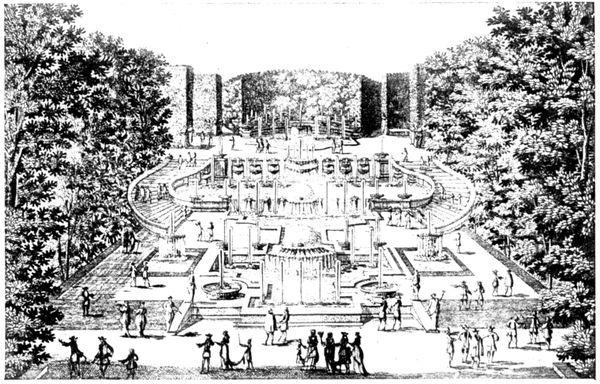
THE OLD
CASCADES
OF CHANTILLY
In 1722, Louis XV. stayed at Chantilly on his way back from his corona[Pg 27]tion
at Rheims. The festivities lasted four days; 60,000 bottles of wine and
55,000 lbs. of meat being consumed.
It was Prince Louis-Joseph who saw the Revolution. He had spent
enormous sums in embellishing Chantilly, besides the twenty-five million
francs which it cost him to build the Palais-Bourbon in Paris, the present seat
of the Chamber of Deputies. He erected the Castle of Enghien, named after
his grandson, the Duc d'Enghien, who was the first to inhabit it. (Early
marriages were usual in these great families: at the birth of the Duc d'Enghien
his father was sixteen years old and his grandfather thirty-six.) The Duc
d'Enghien died in 1804, shot in the moat of Vincennes.
The English garden and the hamlet are due to Louis-Joseph.
In 1789, after the Prince of Condé had gone into exile, the Parisians came
and removed the cannon from the castle (see reproduction of engraving below,
in which the castle appears as altered by Mansart). Thirty guns taken from
the enemy during the Seven Years' War, which were never used except for
firing salutes during fêtes, were brought in triumph to the Hôtel de Ville in
Paris, whence La Fayette had them sent to the arsenal.
The great cascades, the menagerie, the orangery and the theatre disappeared
during the revolutionary era.
Of the great castle nothing remained but the basement, whilst the town
grew and encroached on the park.
In 1814, the Prince de Condé returned to Chantilly and commenced the
restoration of the domain, a work continued by his son. The latter came
to a tragic end in 1830; he was found hanging from the fastening of a window
in his castle of Saint-Leu, and with him died the great family of Condé.
In his will he bequeathed Chantilly to one of his great-nephews: Henri
of Orleans, Duc d'Aumale, fifth son of King Louis-Philippe. After distinguishing
himself in the Algerian campaign, where he carried off the
Smalah of Abd-el-Kader in 1843, the Duc d'Aumale was exiled in 1848. He
established himself at Orleans House, at Twickenham, near London, where
he remained until 1871. It was during that time that he began the splendid
collections which later went to enrich the Condé Museum. On his return
to France he presided at the tribunal entrusted with the trial of Marshal
Bazaine.
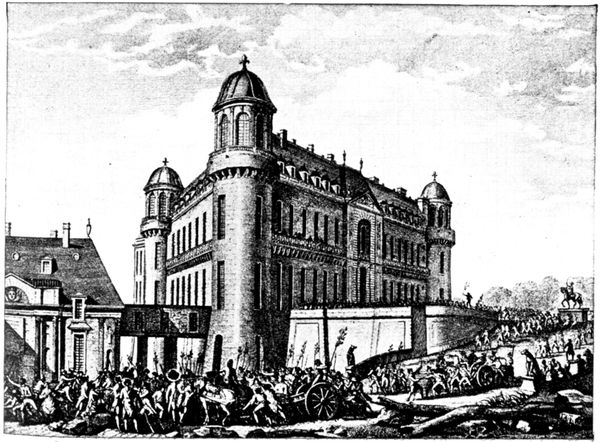
THE PARISIANS
AT CHANTILLY
IN 1789
[Pg 28]
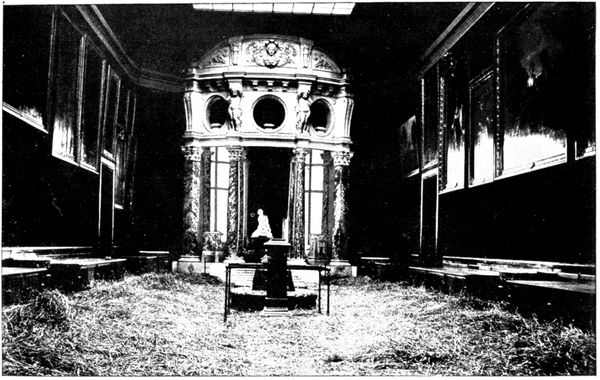
PICTURE
GALLERY
WHERE
THE GERMANS
SLEPT
(1914)
In order to house his collections, the Duc d'Aumale had the big castle
rebuilt, on plans made by the architect Daumet, from 1875 to 1882.
He died in 1897, bequeathing to the "Institut de France" the domain of
Chantilly and the Condé Museum, of which he was the founder.
The Castle in 1914
About 500 Germans stayed at the castle for twenty-four hours. These
reserve troops had not yet fought and did not take part in the battle. They
committed no excesses during their short stay. The great moral firmness
shown by the curators, Messrs. Élie Berger and Macon had great influence on
the conduct of the German soldiers. The troops were lodged in the big castle,
whilst the officers established themselves in the various suites of the small
castle.
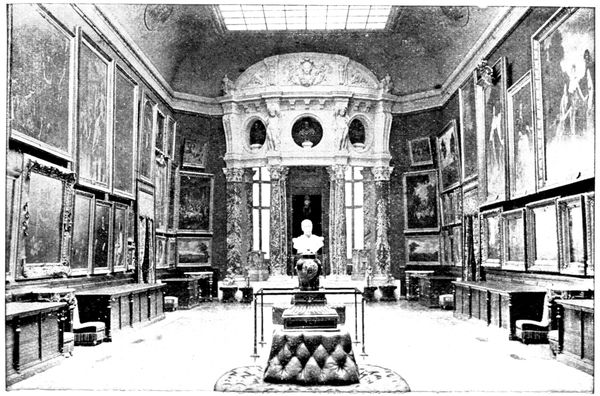
The curators had sent the gems of the collection to Paris and sheltered as
many of the works of art as possible in the basement. This proceeding[Pg 29]
caused some ill humour on the part of the German officer in command. As
seen in the photograph (page 28) straw was spread in the rooms of the
museum, on which the Germans slept. At the end of the room Chapu's
touching Jeanne d'Arc overlooks the scene of desolation. The Germans were
much impressed by the copy of the Duc d'Aumale's tomb in the museum,
where he is represented in the uniform of a divisional general. Many gave the
military salute when crossing the room. However, this did not prevent the
commandant from warning the curators that if his troops were fired on,
the castle would be burnt and they themselves shot.
Sylvie's House
If the tourist makes this journey on a day when the castle is closed, or if he has
not time to visit it, he will at least be able to glance at the charming corner of
the park where stands Sylvie's House. He need only take the path of Avilly
(it is the road which is on the right of the main entrance) and skirt the park railings.
After five minutes' walk he will reach the place from where the view below is taken.
He can return to the gates by the same road.
This little shooting lodge, at first called the "Park House," was built
in 1604 by the high constable Henri de Montmorency for King Henri IV.
Sylvie is the poetical name given by Théophile de Viau to his patroness
Marie-Félicie Orsini, who in 1612, at the age of fourteen, married Henri II.
of Montmorency, aged sixteen. The poet, Théophile de Viau, persecuted
in 1623 for the licentious publication of the Parnasse Satirique, was given
shelter at Chantilly and lodged in the Park House.
Condemned to be burnt alive, he was only executed in effigy through the
intervention of the Montmorencys.
In his Odes to the House of Sylvie, he extolled the grace and goodness of
the young duchess:
Mes vers promettent à Sylvie
Ce bruit charmeur que les neveux
Nomment une seconde vie....
The wish expressed by the poet in these lines was fulfilled and the name
of Sylvie became attached to the house and park surrounding it. The great
Condé rebuilt the house as it is to-day. (The rotunda seen in the photograph,
page 29, was added by the Duc d'Aumale.)

SYLVIE'S
HOUSE
AND THE PARK
[Pg 30]
In the eighteenth century Sylvie's House was the scene of the romance of
Mlle. de Clermont and Louis de Melun. The head of the house of Montmorency
objected to the marriage of his sister, Mlle. de Clermont, with this nobleman,
whose rank he considered insufficient. The young girl disregarded
this and made a secret marriage, soon ended by the tragic death of Louis de
Melun, who was killed by a stag at bay in the course of a hunt in Sylvie's
park. These various episodes in the history of Sylvie's House are recalled
in the paintings of Luc-Olivier Merson, installed by the Duc d'Aumale when
he turned the old house into a museum.
Visit to the Castle
The Castle, Sylvie's House, the Jeu de Paume, and the "Grandes-Écuries"
are open to the public from April 15 to October 14:
1, On Sundays, Thursdays and legal holidays, from 1 to 5 p.m., free;
2, On Saturdays, the same hours, one franc charged for each visitor.
The Park is open to the public all the year round on Thursdays, Sundays
and holidays: from 1 to 6 p.m., from April 15 to October 14, and till 4 p.m. for
the rest of the year.
The Condé Museum is extremely interesting.
We advise tourists to obtain the guide book sold at the entrance, which gives
all useful information for the details of the visit. The plan (p. 31) makes it
easy to find one's way about the museum. By following the numbering in this
plan the various rooms will be seen in the order in which they are marked in the
guide book.
The several photographs which follow can give but a faint idea of the
richness and interest of the collections made by the Duc d'Aumale.
The following view shows the Gallery of the Stags, formerly the dining
room.
The picture on page 32 represents the magnificent carved and inlaid chest
(the work of Riesener, the great cabinet-maker), which stands in room 24
(plan p. 31).
The Duc d'Aumale gathered the gems of his collection together in the
room that he named the Santuario (No. 19 on plan, p. 31).
They are: The Virgin by Raphael, described as "of the House of Orleans,"
having belonged to that family for a very long time. This little panel,[Pg 31]
painted about the year 1506, was bought for 160,000 francs in 1869. It is
reproduced on p. 32.
The Three Graces, another small panel painted by Raphael at about the
same time as The Virgin, was bought for 625,000 francs in 1885.
Esther and Ahasuerus, panel of a marriage chest, executed by Filippino
Lippi, was bought for 85,000 francs in 1892.
Forty Miniatures by Jehan Fouquet, taken from the Book of Hours,
by Estienne Chevalier: this leading work of the French school of the
fifteenth century was acquired for the sum of 250,000 francs in 1891.

- Entrance.
- Grand Vestibule.
- Gallery of the Stags.
- Picture Gallery.
- Rotunda of the Museum (Senlis Tower).
- Vestibule of the Museum.
- Gallery of the House.
- Small Gallery of the House.
- Vestibule of House.
- The Smalah.
- The Minerva Tower (Tower of the High Constable).
- The Antiquity Room.
- Giotto Room.
- Isabelle Room.
- Orleans Room.
- Caroline Room.
- Clouet Room.
- Psyche's Gallery.
- Santuario.
- Treasure Tower.
- The Tribune.
- The Anteroom.
- Guardroom.
- La Chambre.
- The Great Study.
- The Monkey Parlour.
- The Prince's Gallery.
- Library.
- Great Staircase.
- Gallery of the Chapel.
- Chapel.
- Statue of the High Constable.
- Entrance (portcullis).
- Court of Honour.
- Court of the Little Castle.
- Flower Garden of the Aviary.
[Pg 32]
We must also mention the collection of portraits painted or drawn in
the fifteenth and sixteenth centuries, divided between the Gallery of the House
(7 on plan), the Clouet room (17 on plan) and the Gallery of Psyche (18 on
plan). In the Gallery of Psyche, the visitor will notice, besides the pictures,
the forty-four sixteenth century windows, representing the legend of Cupid and
Psyche. There is also a cast of the head of Henri IV.
Lovers of jewels should visit
the treasure tower (20 on
plan). Tn the Monkey Parlour
(26 on plan) will be seen
the screen painted by Huet,
representing the Monkey's
reading lesson, and on the
panels a charming eighteenth
century decoration, attributed
to the same painter.
In the Prince's Gallery
(27 on plan) the great Condé
had a series of pictures painted
representing the battles he had
fought.
In the trophy containing
his sword and pistols there
is also a flag taken in the
Battle of Rocroi in 1643. It
is the oldest standard captured
from the enemy that exists in
France.
In the middle of the gallery
stands the Table of the Vinestock,
carved out of one piece
taken from an enormous vine,
for the Connétable de Montmorency.
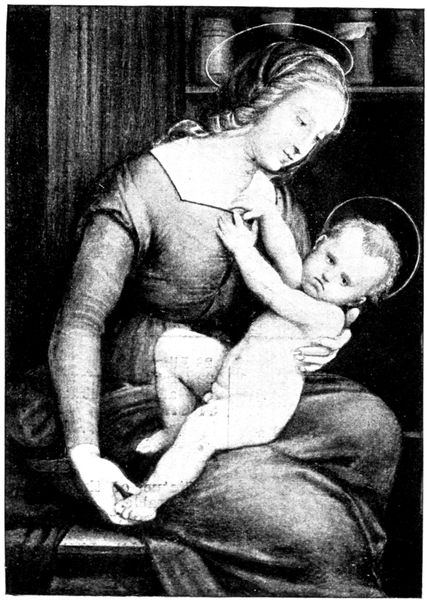
THE VIRGIN
OF ORLÉANS
BY RAPHAEL
[Pg 33]
In the modern chapel (31 on plan), the Duc d'Aumale placed a beautiful
altar, carved by Jean Goujon, also some sixteenth century wainscoting and
stained glass windows taken from the chapel of the Castle of Ecouen.
In the apse stands the funeral urn which holds the hearts of the princes
of the House of Condé.
Visit to the Park
This takes from three-quarters of an hour to an hour and a quarter.
On coming out of the museum we cross the Terrasse du Connétable, in the
middle of which stands the equestrian statue of Anne de Montmorency,
by Paul Dubois (1886). Leaving the Château d'Enghien on the right we enter
the covered way by the avenue which passes before the little chapel of Saint-Paul.
Saint-Paul and Sainte-Croix are all that remain of the seven chapels
erected by Anne de Montmorency (see p. 23). A little further on, on the left,
we come to the Cabotière, a building dating from the time of Louis XIII.
It derives its name from that of the barrister Caboud, an enthusiastic amateur
horticulturist, who made a magnificent flower garden in the park for the
great Condé.
The avenue ends at Sylvie's House (see p. 29). In the interior can be
seen paintings, tapestries, pieces of furniture, and beautiful panelling of the
seventeenth century, which have been placed in the rotunda. From Sylvie's
House there is a lovely view of the pond and park (see p. 29).
Leaving Sylvie's House on the right we walk about 150 yards down the path
which skirts it, then turn to the left and follow the path which leads straight to
the Hamlet (view on p. 35).
The Hamlet, which recalls that of the Petit Trianon at Versailles, dates
from 1775. At this period, under the influence of J. J. Rousseau's works,
nature and country life became the fashion, and it was the correct thing
for princes to play at peasants in miniature villages.
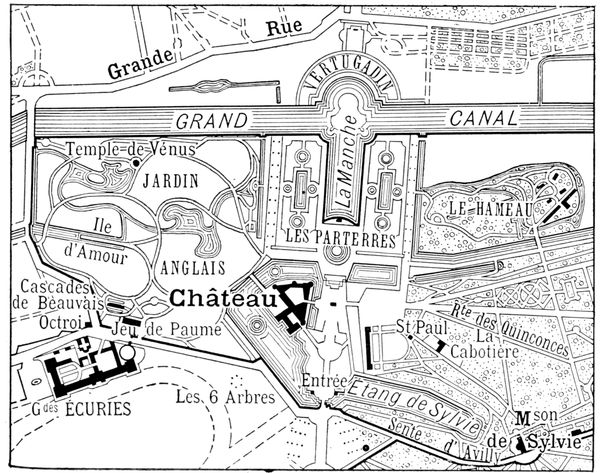
An author of the eighteenth century thus describes the Hamlet of Chantilly:
"Seven detached houses, placed without order, with thatched roofs, stand[Pg 34]
in the middle of a lawn that is always green. Here is an ancient elm, there
a well; further on a fence encloses a garden planted with vegetables and
fruit-trees; a mill, its wheel turned by the brook; in front a stable, a dairy;
one house is used as the kitchen, another is the dining-room, so decorated
as to resemble a hunting lodge. One fancies one's self in the middle of a thick
wood, the seats imitate tree-trunks, green couches and clusters of flowers
rise from the ground; a few openings made between the branches of the trees
admit the light. A third cottage serves as billiard-room, a fourth is a library.
The barn makes a large and splendid drawing-room."

THE CASTLE
SEEN FROM
THE FLOWER
GARDENS
From the time when the hamlet came into being, there was never a big
fête at Chantilly without a supper in this pretty corner of the park. Innumerable
pots de feu illuminated the thickets; on the canal the guests drifted in
gondolas to strains of dreamy music; fancy-dress fêtes were held, and the
singing and dancing continued until dawn.
The hamlet is now greatly fallen into decay, nevertheless, it is worth
a visit.
Retracing our steps we bear to the left and, having crossed, the first bridge,
follow a pretty path which brings us into the flower garden of Le Nôtre, where
we get a good view of the castle (photograph above). One can go straight
back to the entrance gates by the staircase shown in the view. It is called the
Grand Degré (great stair), and was built in 1682 by the architect Gitard.
The groups which adorn the base of the Terrasse du Connétable, on each
side of the stairs, were drawn by Le Nôtre and carved by Hardy.
This walk, from the time of leaving the museum until the return to the entrance
gates, takes about three-quarters of an hour.
If one wishes to visit the English Garden and the Jeu de Paume, which
will take about forty minutes longer, one must walk past the north front of the
castle and follow the walk which opens in the middle of the thickets.
The English Garden was laid out in 1817 to 1819 by the architect Victor
Dubois, according to the orders of the last of the Condés, just returned
from exile. The site occupied by this garden, like the ground on which
stands the town of Chantilly, belonged to the ancient park, devastated
during the Revolution.
We pass near the Temple of Venus, which shelters a Venus Callipyge
of the seventeenth century, near the Island of Love, dating from 1765 and
on which are statues of Aphrodite and Eros. In the eighteenth century the
Island of Love contained a luxurious pavilion, in which nocturnal fêtes were
held, the canals and park being illuminated. The pavilion disappeared at
the time of the Revolution.
[Pg 35]
The ancient Cascades of Beauvais that one sees before arriving at the
Jen de Paume are remnants of the old park. They were the work of
Le Nôtre.
The Jeu de Paume, constructed in 1757, is transformed into a museum.
It contains various curiosities, notably Abd-el-Kader's tent, carried away
when the Smalah was captured by the Duc d'Aumale in 1843.
After 3 p.m. one can leave the park by the gate next to the Jeu de Paume.
We come out in front of the "Grandes Écuries" of the castle and can go in
and look round them. (Enter at the side that faces the lawn.)
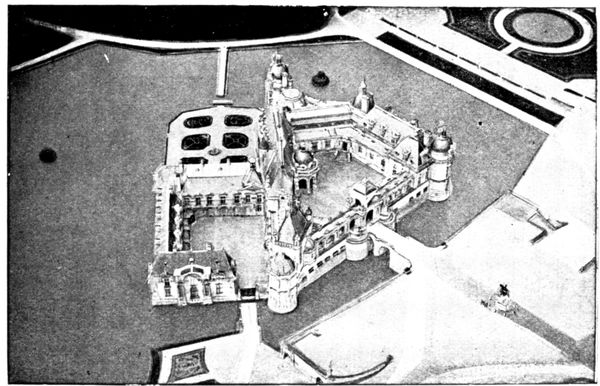
(Cliché André Schelcher.)
GENERAL VIEW OF THE CASTLE
[Pg 36]
FROM CHANTILLY TO SENLIS
(9 km.)
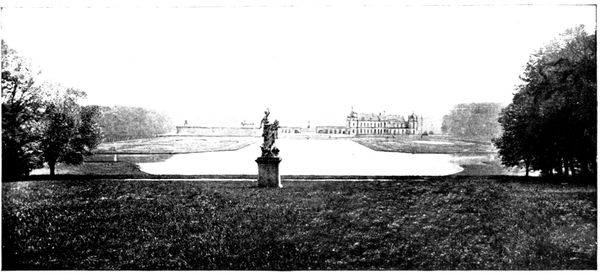
THE CASTLE
SEEN FROM THE
ROUTE
DE VINEUIL
Returning through the monumental gateway, we cross the Rue de Connétable
and go straight on, skirting the castle park on the right. We cross the Saint-Jean
Canal, then the Great Canal, then turn to the right into the High Street of
Vineuil. On the right one soon has a beautiful vista of the castle and park
(view above).
We now go through Saint-Firmin. The church, on the left, contains in
its choir Renaissance windows which are classed as historical monuments.
From Saint-Firmin to Senlis the road is easy. We enter Senlis by the
Creil Gate (see plan inserted between pp. 36-37). Turn to the left by the Avenue
Vernois and the line of boulevards to reach the station, where starts the itinerary
described further on, in Senlis.
[Pg 37]
ORIGIN AND CHIEF HISTORICAL EVENTS
Senlis is of Gallic origin: it was the capital of the Sylvanectes. The
Romans surrounded it with fortifications, a great part of which still exist
(see view below).
The first kings of France, attracted by the hunting in the surrounding
country, frequently stayed at Senlis.
It was in Senlis Castle (see p. 61) that Hugues Capet was elected king by
the assembly of lords in 987.
The Capetians often returned to the birthplace of their dynasty and it
is to them that the town owes its chief buildings.
Taken by the peasants in the war of the Jacquerie in 1358, besieged by
the Armagnacs in 1418, it fell into the hands of the English and was delivered
by Joan of Arc in 1429. Senlis knew great vicissitudes in the fourteenth
and sixteenth centuries.
After Henri IV., who interested himself greatly in Senlis and lived in its
old castle, the kings of France gradually forsook the town in favour of
Compiègne, Fontainebleau and Versailles.
Occupied in 1871 by the Germans, it reappears in history in September
1914. The burning of the town and the summary executions which took
place there will be recalled in the course of the visit (pp. 38-52).

SENLIS IN THE SIXTEENTH CENTURY.
[Pg 38]
VISIT TO THE TOWN
(See plan inserted between pp. 36/37)

THE BURNT
STATION
(Sept. 1914)
At the Station
one gets one's first
view of the havoc
done to the town
by the events of
September 1914.
It was set on fire
on the 3rd.
Follow the station
road (Avenue de la
Gare), which leads
to the Compiègne
Gate.
This is the road
by which the Germans
entered Senlis
on September 2, at
about 3 o'clock in
the afternoon.

BRITISH
SOLDIERS
IN THE PLACE
DE LA GARE
(Sept. 1914)

INTERIOR
OF THE BURNT
STATION
(Sept. 1914)
Whilst one part
of the advance
guard made the
tour of the town,
following the boulevards
and the
ramparts which
encircle it, other
groups descended
directly south by
the two main
streets which
cross Senlis, thus
making sure of a
thorough exploration.
[Pg 39]
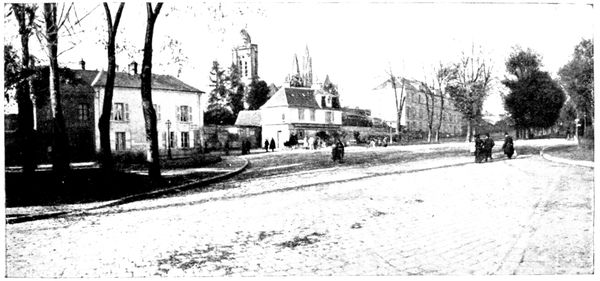
ENTRANCE
TO THE
RUE DE LA
RÉPUBLIQUE
BEFORE THE
WAR
The entrance lo the Rue de la République suffered a great deal, as
is shown by the two photographs, taken before and after the fire of September
2, 1914.

PRISONERS
IN FRONT
OF THE
GENDARMERIE
(Sept. 1914)
On the left, the toll-house is completely burnt down; in the centre, the
Hôtel du Nord and
the Restaurant Encausse
are in ruins.
The building on
the right is the
Gendarmerie.
The German prisoners
who appear
in the picture opposite
are leaning
against the wall of
these barracks.
They were the
few soldiers who,
remaining in Senlis
after the victory of
the Ourcq, were
captured by Zouaves sent from Paris in motor-cars.
Only a few years ago the Rue de la République was called the Rue Neuve-de-Paris,
although it dated from 1753. It was made in order to spare the
Court of Louis XV. the circuitous way and steep ascent of the old road,
which followed the Rue Vieille-de-Paris and the Rue du Châtel.
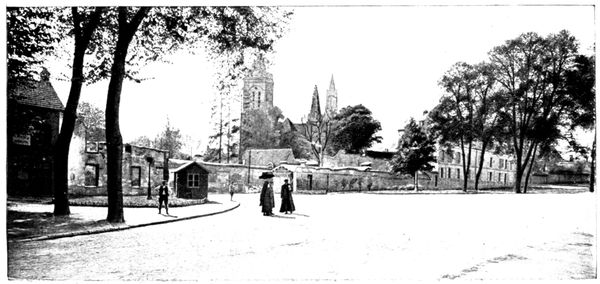
ENTRANCE
TO THE
RUE DE LA
RÉPUBLIQUE
AFTER
THE FIRE
[Pg 40]
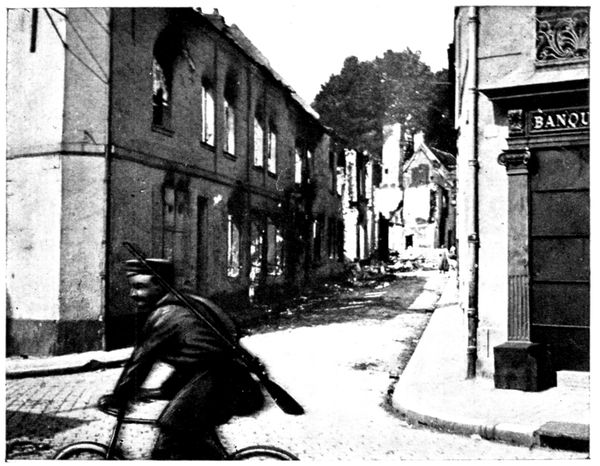
GERMAN CYCLIST AT THE ENTRANCE TO THE
RUE BELLOY (1914)
Descending the
Rue de la République
we come to the Rue
Bellon, which crosses
it. We turn to the
right, at the place
shown on the opposite
photograph, and
a few steps further
on, reach the Carrefour
de la
Licorne. This is
one of the most
devastated places
of the town. The
first view was taken
during the German
occupation, a German
cyclist being
snapshotted while
riding. The other
views show the
state of the ruins
in 1914 and the
present condition.

RUINS OF THE CARREFOUR DE LA LICORNE (1914)
We return to the
Rue de la République.
A few yards
down, on the right,
we see the charred
house, the gable-end
of which appears
in the view on
the following page.
[Pg 41]

BURNT HOUSE RUE DE LA RÉPUBLIQUE (1914)
We next reach the level of the
Hôtel du Grand Cerf, of which the
signboard is seen on the view below.
The German headquarters staff
stayed there, and that is no doubt
the reason for its remaining intact.
The Mayor of Senlis, M. Odent,
was taken there on September 2,
after his arrest at the town-hall,
just before being taken to
Chamant to be shot. The proprietor
of the hotel having left the town,
the German officers commandeered
a restaurant keeper and
made him prepare a meal for
thirty people, with "ices and
champagne."
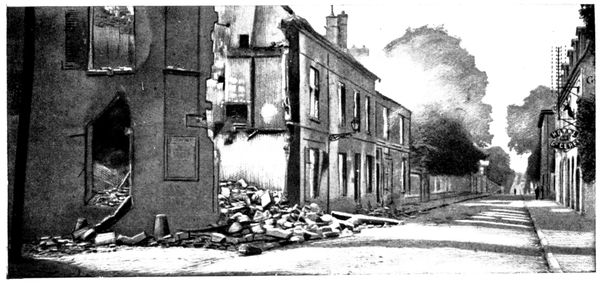
FIRE RUE DE LA RÉPUBLIQUE (1914)
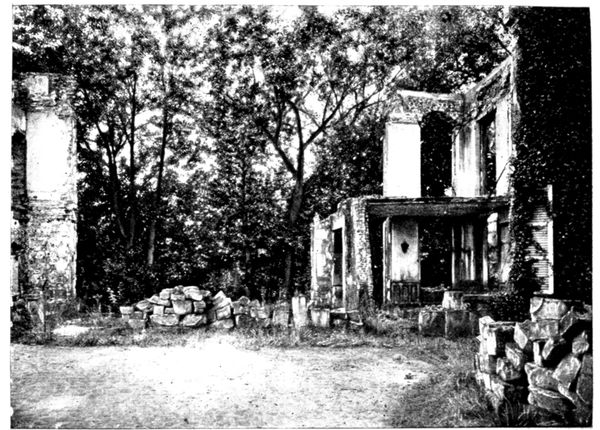
RUINS OF THE NOTARY'S HOUSE (1914)
The houses
which face the hotel
and which were
still burning when
the above photograph
was taken,
are those of the
local justice of the
peace and public
notary.
Looking through
the entrance gates
of the latter residence,
one beholds
the scene of desolation
reproduced
in the opposite picture.
[Pg 42]
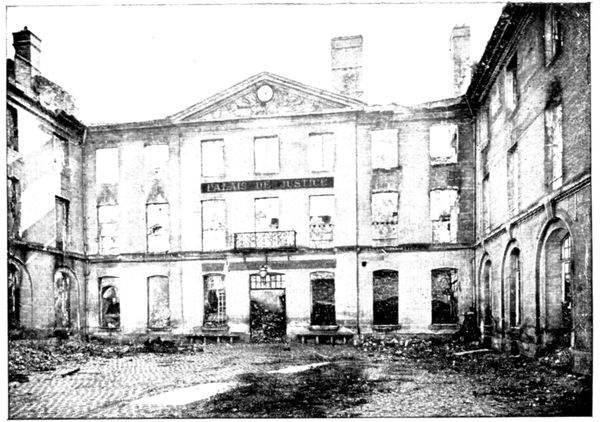
BURNT
COURT
OF JUSTICE
(1914)
On the left of the
Rue de la République
we come to a building
which served
as the sub-prefect's
office and Court
of Justice. This
building, formerly
a hospital, dates
from the beginning
of the eighteenth
century.
The work of the
incendiaries is seen
by comparing the
opposite view with
that given below.
All the ruins already pointed out, as well as those that will be seen further
on, were made systematically.

RUE DE LA
RÉPUBLIQUE
(1914)

COURT
OF JUSTICE
BEFORE
THE WAR
The soldiers to whom this work was assigned arrived in columns; at the
sound of an officer's whistle a certain number of men left the ranks and
smashed in the doors of the houses and the shop-fronts; then others came
who started the fires with grenades and fuses; lastly, the patrols who
followed fired incendiary
projectiles
into those
buildings which
did not take fire
quickly enough.
The above view
was taken during
the German occupation.
It shows
the Red Cross staff
conveying the
wounded from the
overflowing hospital
to the College
of Saint-Vincent.
[Pg 43]

RUINS
AT THE CORNER
OF THE
RUE DU TEMPLE
After crossing the
Nonette, one arrives
at the junction of
the Rue de la République
and the Rue
Vieille-de-Paris.
At the corner
stands the inn "Le
Débit Simon," of
which a view is
given below. Simon
was without doubt
the first victim of
the German occupation.
Tn the middle of
the afternoon a
German patrol,
who had just been drinking at the inn, was shot at by a French rearguard,
who had left Simon's a few moments before.

DÉBIT SIMON
(SIMON'S INN)
THE
PROPRIETOR
WAS KILLED
BY THE
GERMANS
The Germans immediately seized the innkeeper, accused him of having
fired, and shot him point-blank.
Other pretended reprisals were made, causing the death of twenty
unoffending civilians, of which the reader will learn the details further on.
The view below shows the corner of the Place Saint-Martin where
stands the Café
Simon. Two German
cyclists are
seen in the photograph,
which was
taken on September
4, 1914.
It will be noticed
that the one on the
left has a lady's
bicycle, which certainly
did not come
out of the Army
stores!

GERMAN
CYCLISTS
PLACE
SAINT-MARTIN
[Pg 44]

RUINS
FAUBOURG
ST. MARTIN
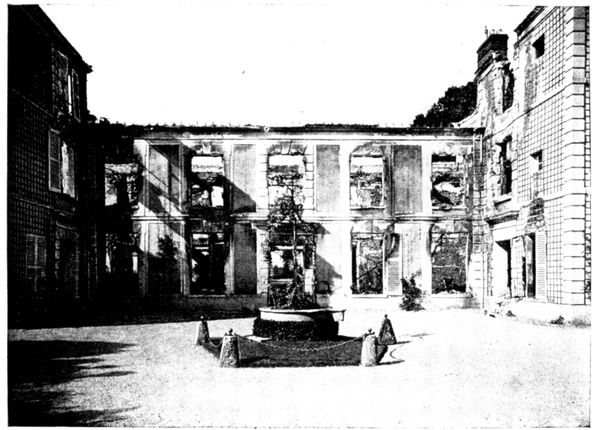
BURNT
BUILDING
17, FAUBOURG
ST. MARTIN
Following the Rue du Faubourg St. Martin shown above, the tourist will
pass a pretty estate (view below), the old quarters of the Gardes du Corps,
which was completely
burnt and
the ruins of which
produce a startling
effect.
In front, partly
burnt, are the headquarters
of the
Cavalry. Still further
on, at the
exit of the town,
is the Hospital.
It was there that
the battle raged
most fiercely.
The German advance-guards,
beating
back the French
soldiers delayed in the Faubourg St. Martin, were met by the fire of the
machine-guns stationed outside the town, along the road.

EQUIPMENTS
ABANDONED
DURING
THE BATTLE
The Germans penetrated into the hospital and the neighbouring gardens,
trying to outflank the French defences which they thought were placed on[Pg 45]
the road, but a deadly fire from the transverse trenches made them fall back.
Furious at this, they seized the passers-by and made them walk in the middle
of the road, they themselves keeping close to the walls.
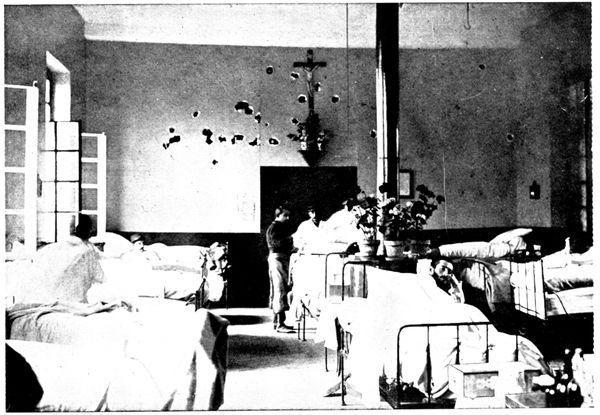
MARKS OF
GERMAN
BULLETS
IN THE
HOSPITAL
Among the hostages were a Mme. Dauchy and her young daughter. The
latter was shot in the leg. Georges Leymarie was killed; one of his companions,
Levasseur, while carrying the body along the pavement beside the
hospital wall, suffered the same fate. Two other hostages, Audibert and
Minouflet, the latter wounded, had also reached the pavement of the hospital.
A German officer discharged a revolver at Audibert and left him for dead;
he ordered Minouflet to show his wounds and, finding them insufficient,
put a bullet through his shoulder. Three other people fell. The shrieks
of the victims reached the French, who ceased fire. The surviving hostages
then slipped past the trees along the road, under German fire, up to the French
lines. The Germans took advantage of this to make a fresh attack, but
were repulsed.
The hospital, situated as it was in the midst of the fighting, was not spared,
A German officer, wounded by one of the first shots, entered the hospital
and meeting an old pensioner, M. Maumus, on the threshold, shot him down
in cold blood.
The ward where the French and Moroccan wounded lay was fired on with
machine guns, as shown in the above photograph. By a wonderful chance
no one was hit, the Crucifix also remained untouched in the centre of a wreath
of bullets.
The tourist will now, retracing his steps, turn to the right into the Rue des
Jardiniers, whence he will have a good view of the whole town. Always keeping
to the left he will pass through the Meaux Gate into the Rue de Meaux which
borders the College of St. Vincent (p. 64). (If on foot, it would be
better to follow the line of the ramparts Bellevue and Saint-Vincent, instead of the
Rue des Jardiniers. At the Meaux Gate he will go down the steps into the
Rue de Meaux.)
Back in the Rue de la République, he will go up as far as the Rue Odent,
which skirts the Hôtel du Grand Cerf. By this road he will arrive at the Place
de la Halle, continued to the right by the Rue Saint-Hilaire, which leads to the
church of Saint-Pierre (see p. 60).[Pg 46]

TRACES
OF SHELLS
ON THE
CATHEDRAL
(Photograph
by M. H.)
From the Place Saint-Pierre
one goes to the left into the
little Rue aux Flageards which
passes in front of the north doorway
of the cathedral, of which
a view is given opposite. The
tower on the right and the spire
were struck by several shells.
Continuing along the Place
Mauconseil and turning to the
left into the Rue Villevert one
reaches the charming square
which lies in front of the parvis of
the Cathedral.
(See pp. 53-59 for descriptions
concerning the artistic
features of the cathedral.)
Here we shall only give the
incidents of September 1914
in which the building shared.

DÉBRIS
AT THE FOOT
OF THE
CATHEDRAL
TOWERS
(Photograph
by M. H.)
During the day of September
2, 1914, about fifty
shells struck the old church
and caused rather serious
damage, as shown in the
following photographs. The
vicar of the cathedral, the Abbé Dourlent, went about the streets of Senlis
during the bombardment and had 125 inhabitants, who had been unable
to find shelter in the cellars, escorted out of the town by one of his curates.
On his return to the vicarage, which stands at the foot of the tower (the
house visible in the photograph on p. 54, on the right, behind the two trees),
shortly after the Germans had entered the town, the vicar heard
violent and repeated blows in the cathedral. Coming out into the
square he saw cyclists, holding a large fragment of a statue (which had
been flung to the ground by a shell) with which they had battered
in the small door of the cathedral (that on the right in the view on p. 54).
Others, axes in their hands, were attacking the door of the steeple on the
south side of
the tower. The
Germans, revolver
in hand,
rushed at the
vicar, and their
leader commanded
him to
take them to
the top of the
steeple, accusing
him of having
allowed machine
guns to be placed
there which had
fired on them.
As they
climbed the
first step they[Pg 47]
heard the first shots fired in the
lower part of the town.

TRACES
OF SHELLS
ON THE
CATHEDRAL
The soldiers sprang up and
declared the vicar their prisoner.
The visit to the steeple confirmed
the Abbé Dourlent's declaration
that no one had been
up and that no military preparations
had ever been made there.
The men drew off, but a few
moments later the porter of the
town-hall brought the vicar the
order to render himself immediately
as hostage at the Grand
Cerf Hotel.
When he arrived the Headquarters
Staff had left, taking
with them the mayor, who was
shot that evening.
The incendiarism had already
started; the vicar saw incendiary
bombs thrown into the
houses facing the hotel, which
are shown in the photograph on
page 41. He entered the
vicarage, then returned to the Grand Cerf to learn what fate awaited him.
It was there that a German superior officer, who spoke French, said
these few words which throw light on the events at Senlis:
Poor Curé, poor Senlis, your civilians have fired on us and we have been
shot at from the top of your church tower, therefore Senlis is doomed. You
see that street in flames (the Rue de la République), well! this night the whole
town will be completely burned down.

TRACES
OF SHELLS
ON THE
CATHEDRAL
We have orders to make of
Senlis another Louvain. A terrible
example is needed for
Paris and for the whole of
France.
The vicar implored for mercy
for the town, and the officer
promised to intervene with his
superiors in order to obtain a
mitigation of the sentence.
Whether he gained his point or
whether the giving up of the
direct march on Paris caused the
part of scape-goat assigned to
the peaceful little town to appear
of less immediate necessity,
the incendiarism was limited to
the Rue de la République and
the Quartier de la Licorne.
The tourist will visit the Cathedral
(see pp. 53-59), Saint-Frambourg
(p. 60), the Castle (pp. 61-63),
and will then go down the old
Rue du Châtel.[Pg 48]
This road was the scene of an
outrage of 1789, famous in the
annals of Senlis. The clockmaker
Billon, seeing beneath his windows
the company of musketeers
from which, as usurer, he had
been dismissed, raised his musket
and killed the commandant and
several others. Trapped in his
house, he backed from room to
room still adding to the number
of his victims. At the moment
when they seized him the mine
that he had prepared exploded,
destroying his house and leaving
twenty-six dead and forty injured.
The Rue du Châtel ends in the
Square Henri IV., in the corner of
which stands the Town-hall. Its
façade (see below) dates from
1495. Above the door is the
bust of Henri IV., with an inscription
taken from the letters-patent
sent by the king to Senlis
as thanks for the town's resistance against the Leaguers:
"Mon heur a prins son commencement en la ville de Senlis, dont il s'est
depuis semé et augmenté par tout le royaume."
(My good fortune had its beginning in the Town of Senlis, whence it has since
sown itself and spread over all the kingdom.)
The Square Henri IV. received the first shells of the bombardment in
September, 1914, which killed a fireman on guard at the town-hall.
When the Germans penetrated into Senlis, one of their superior officers
went to the town-hall and asked for the "burgomaster."
[Pg 49]
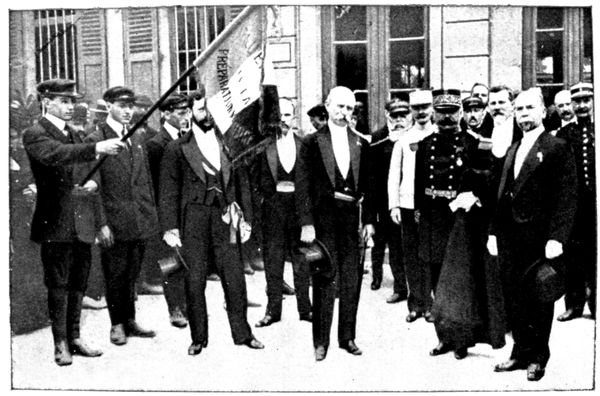
LAST
PHOTOGRAPH
OF M. ODENT
(in the middle)
The mayor, M.
Odent, came
forward.
For three generations
the
Odents had been
mayors of Senlis.
The grandfather
of the present
mayor distinguished
himself during the
cholera epidemic
in 1832; his father
was seized as hostage
in 1870 and
narrowly escaped
being shot.
On the eve of the German occupation, M. Odent took his family to Paris
and on his return to Senlis wrote a postcard to M. Cultru, oldest member
of the municipal council, as follows:—
"Having at last placed my wife in safety, I now belong entirely to Senlis."
M. Odent had the presentiment that he would not come out of German
hands alive; a fervent catholic, he performed his religious duties in view
of a swiftly approaching death, and fastened a crucifix on his breast.
Above we give the last photograph of M. Odent. It was taken on
August 5, 1914, during a military fête. M. Odent is in the middle.
The mayor was violently upbraided by the officer because of the deserted
aspect of the town—barely 1,000 inhabitants remained out of 7,000, and
during the bombardment houses and shops were closed. He was also
blamed for the absence of proclamations exhorting the inhabitants to deposit
their arms at the town-hall and to offer no resistance....
M. Odent pointed out the rapidity of events, and the peaceable ways of
the old city. He was nevertheless led before the headquarters staff at the
Grand Cerf Hotel. Immediately after, came the sound of the first shots fired
by the French rearguard at the lower end of the town. The officer was
furious and vowed that he would hold the mayor responsible and that his
head should answer for the lives of the German soldiers. The town-clerk
suggested to M. Odent that the deputy mayor should be fetched, but the
latter refused, saying: "One victim is enough."

GERMAN
SOLDIERS
PHOTOGRAPHED
AT SENLIS
The resigned hostage was taken from the Grand Cerf to Chamant (see
p. 66). He was brutally treated, his
gloves snatched from him and flung
in his face, his stick seized and brought
down violently on his head. M. Odent
and some other hostages spent several
hours of cruel waiting for their fate.
At last, at about 11 o'clock in the evening,
they were brought before several
officers. After having been made to
stand at attention they were ordered
to lie flat, their hands stretched forward;
they were then again told to
stand at attention. The officers, satisfied
that they had thus asserted their
authority, for form's sake then proceeded
to interrogate the mayor, and
in spite of his denial persisted in accusing
him of having opened fire upon
the German troops. They then informed
him that he would be shot.
[Pg 50]
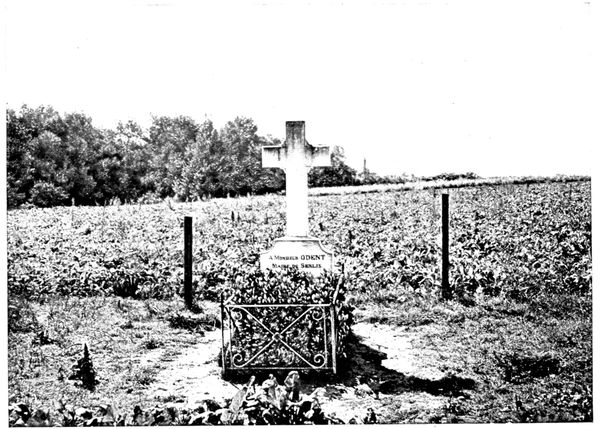
M. ODENT'S
GRAVE
AT CHAMANT
M. Odent returned to his companions in captivity, gave them his papers
and money, shook hands with them, and bade them a dignified farewell.
He then went back to the officers. At their command two soldiers dragged
him about ten yards further off and put two bullets through his head.
The ground was hastily hollowed out and the body was laid under such a
thin layer of earth that the feet were not covered. It was here that the cross
shown in the above photograph was erected. The tourist can visit it when
passing through Chamant (see p. 66). A few hours before the mayor's death
six other hostages had been shot and buried in the same field. M. Odent's
companions were more fortunate, they were sent back to Senlis the next
day. On September 12 the bodies of the mayor and the six other victims
were exhumed and taken to the cemetery in the town (see p. 52). Other
hostages narrowly escaped death. At about eight o'clock in the evening, in
the tailor's shop at the corner of the Rue du Châtel, in front of the town-hall,
three inhabitants were seized and taken to Chamant. To these, in the
course of the journey, were added a dozen others. They were about to
share the fate of the preceding hostages when one of them, who spoke German,
succeeded in inducing the Headquarters staff to set them free.
By the Rue Vieille de Paris (a continuation of the Rue du Châtel) we descend
to the lower part of the town. (In 1358 the "Jacques," masters of Senlis,
drove back the nobles who had entered the lower end of the road by rolling
down the slope heavily laden wagons which overturned anything that
happened to be in their way.)
In front of the old Convent of the Carmes, No. 3 of the Rue Vieille de Paris,
stand Megret's Baths, to which a café is attached. In the afternoon of
September 2 some Germans smashed in the door and demanded drink.
It was no doubt at that time that other German soldiers entered the café
Simon, a little further on (see p. 43). The two proprietors suffered the same
fate. Mégret had barely finished serving the patrol with a dozen bottles of
wine when a shot, fired point-blank, felled him to the ground.
On page 49 appears the photograph of three young German soldiers belonging
to that column of incendiarists and murderers who did so much damage[Pg 51]
to Senlis. With threats they forced the photographer, M. Rozycki, to whom
we are indebted for the views taken during the German occupation, to take
the photograph we have reproduced.
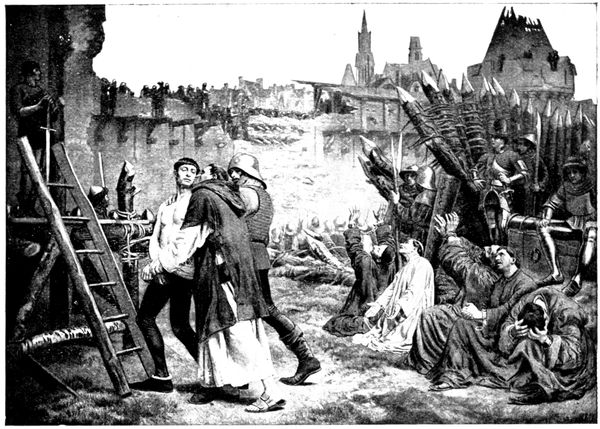
PICTURE
IN THE
TOWN HALL
[Execution of
Hostages
in 1418]
A little way past the Convent of the Carmes (which is turned into barracks,
its chapel being used as a clothing store), we follow, on the right, the line of
ramparts that goes from the Rue Vieille de Paris (where the Paris gate used
to be) to the Place de Creil (where stood the gate of the same name).
These ramparts were made in the thirteenth and fourteenth and strengthened
in the fifteenth and sixteenth centuries.
The first portion is called le Rempart des Otages in memory of the
executions of 1418, during the fight between the Burgundians, who occupied
Senlis, and the Armagnacs, who besieged it.
The town, reduced to famine, was to surrender on April 18 if no help
arrived, and six hostages were handed over as guarantee: two abbots, two
nobles, and two commoners. Help was signalled on the day of the 18th;
but the Armagnacs, before leaving, decapitated four hostages at the foot of
the ramparts on which the tourist is standing. In return, the besieged flung
down from the walls the heads of twenty prisoners captured during a sally.
Six centuries have elapsed, but it will be seen that, towards hostages, the
Germans still retain the mental attitude of the Middle Ages.
A picture by Mélingue (reproduced above), which hangs in the town-hall,
commemorates the execution of the hostages of Senlis in 1418.
The next rampart is called the Montauban, after the square tower which
was added to it in 1588. It was in the dry moat below that the Archers'
Company held their practice. The head of the company, the "King of the
Crossbow," was exempted by Henri III. from paying taxes, and ever since
that remote period archery has always been held in honour at Senlis. At
certain fêtes as many as 4,000 archers were assembled, part of them belonging
to the town, the others coming from the surrounding country.
From the rampart, the view of old Senlis, spread out at the foot of the
cathedral, is particularly picturesque.
[Pg 52]
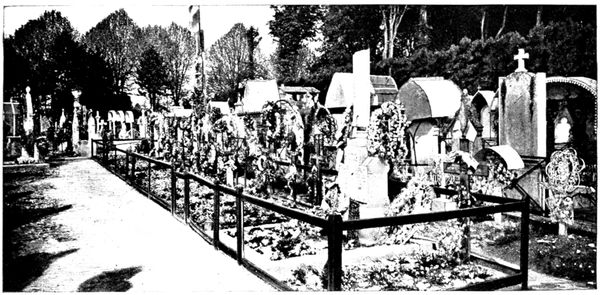
SOLDIERS'
GRAVES
IN THE
CEMETERY
From the Creil Gate, where you come out on leaving the ramparts, the
Arena can be visited (see p. 65). After that, turn down the Avenue Vernois,
at the end of which is seen the entrance to the cemetery. The monument raised
in memory of the hostages who were murdered in 1914 (view below) is in
the western part of the cemetery. In the northern part is the grave of the
soldiers who fell during the battles of Senlis (view above).
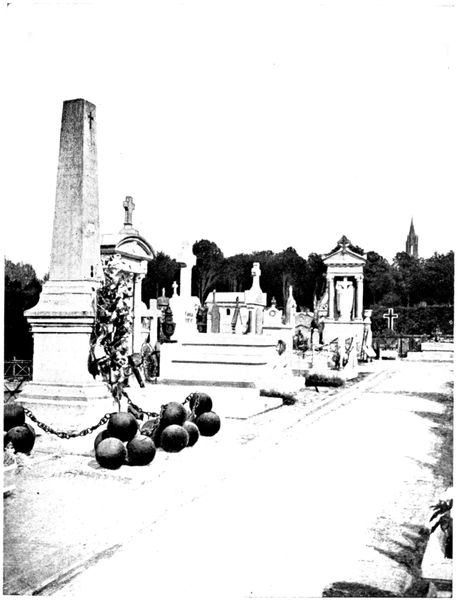
MONUMENT
OF THE
HOSTAGES
IN THE
CEMETERY
From the Boulevard Pasteur, which is a continuation of the Avenue
Vernois, there is
a pretty view of
the country.
At the corner
of the Rue Saint-Joseph
stands a
convent where
seventy nuns
remained during
the German
occupation.
Some German
soldiers made
them open the
door and demanded
wine:
"Oh!" answered
the Reverend
Mother, "the
nuns only drink
liquorice-water."
The tourist
now finds himself
at the Compiègne
gate,
from where he
began his visit
to the town. This
is also the starting
point fixed in
the itinerary for
the journey to
Meaux (see p. 66).
[Pg 53]
ARTISTIC SENLIS
(See plan inserted between pp. 36-37)
The Cathedral of Notre-Dame
(historical monument)
The cathedral was begun in 1153 on the site of a church which had been
destroyed and rebuilt several times since the third century. The work of
construction was slow, as funds
were often lacking, despite the
help given by the kings of
France. For several consecutive
years collections were repeatedly
made throughout the
country in order to obtain
resources for the bishop.
The consecration of the unfinished
church took place in
1191.
Towards 1240, the transept
was raised and the spire, which
is still the pride of Senlis, built.
In 1504, lightning set fire
to the cathedral, which went
on burning for two days.
Luckily the spire was saved.
The reconstruction of all the higher parts and of the façades of the transept
lasted until 1560 and completely transformed the appearance of the
building.
During the Revolution it was used as a ballroom and afterwards as a store-house
for fodder. In 1801 it became once more a place of worship.

CATHEDRAL
SEEN FROM THE
STEEPLE
OF ST. PIERRE
It has been seen (p. 46-47)
that the cathedral was
not spared by the German
shells on September 2,
1914, and that its vicar
very nearly shared the
mayor's tragic fate.
The opposite view is
taken from the top of the
steeple of St. Peter's
Church.
In the foreground are
seen the buildings of the
old bishop's palace, standing
on a Gallo-Roman
site; one of the towers
of this enclosure was utilised
in their construction.
After 1790 Senlis was
no longer a bishopric, and
an archæological museum is
now established in the
old dwelling-place of the
bishops.
[Pg 54]
The west façade of the cathedral, which escaped the fire of 1504, has
retained the simplicity and bareness of the twelfth century church and is in
remarkable contrast with the richness of the side façades built in the sixteenth
century.
The great doorway, which will be fully described further on, is flanked by
two small doors surmounted by a tympanum, the arcading of which forms a
curious ornamentation.
The two towers were originally alike; it was only in the middle of the
thirteenth century that the spire was added to the south tower.
This SPIRE is a masterpiece of Gothic architecture and for nearly seven
centuries has been the admiration of architects and archæologists because of
the science, audacity and solidity of its construction, which was proof against
fire, the inclemency of the weather, and German shells.
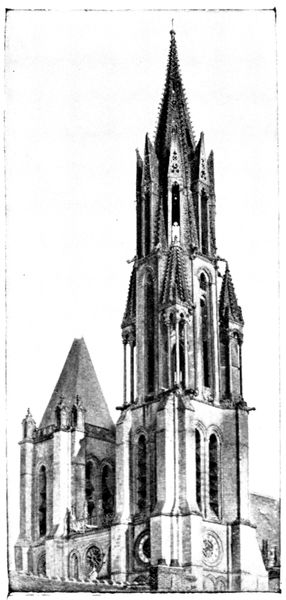
THE SPIRE
OF THE
CATHEDRAL
Its summit is 255 feet above the ground.
Octagonal in shape, it rests on the square
base of the tower.
The transition from the square to the
octagon is masked by the four pinnacles
(each supported by three small columns),
which occupy the four corners of the
square.
The upper part of the spire is pierced
with eight highly ornamented dormer windows;
the arrises of the spire are decorated
with crockets.
This construction reveals the great art
of the architect, who knew how to break the
monotony of the spire's long, sloping lines
without making them appear heavy.
The little Place du Parvis shown above
is charming in its archaical decoration.
The edifice seen on the left of the photograph
is the old home of the Vermandois
family, modified in the fourteenth century.
One can walk round the courtyard of the
old dwelling, entering through the door
seen between two big trees.
Between the house of Vermandois and the
church stands the Chapter House (see p. 59).
[Pg 55]
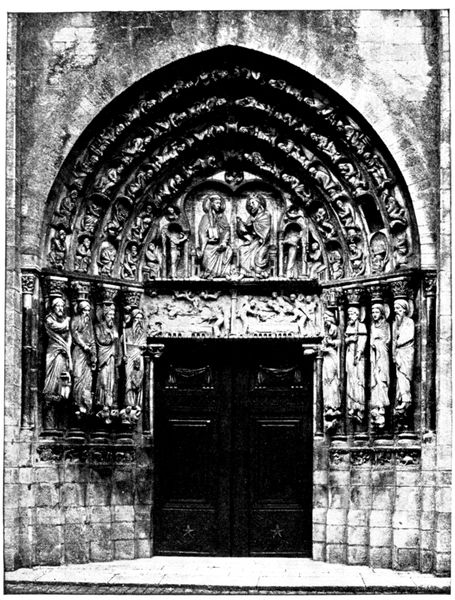
THE WEST
DOOR
OF THE
CATHEDRAL
The twelfth century
doorway was damaged
during the Revolution.
The great statues were
decapitated but have
since been restored. The
bas-reliefs suffered considerably,
also.
This is the first doorway
consecrated to the
Virgin. Its design served
as a model for those of the
Cathedrals of Chartres,
Rheims, Amiens, and
Notre-Dame de Paris.
The bas-relief of the
lintel, shown below, represents,
on its left side, the
death of the Virgin. This
part is much damaged.
The apostles encircle the
bed on which the Virgin is
lying, two of them swinging
censers. Two winged-angels
bear away the Virgin's
soul, portrayed as a
new-born babe wrapped
in a swaddling cloth.
The right side, which represents the Resurrection of the Virgin, is in a
better state of preservation. An angel stands ready to crown Mary, who
is raised from her bed by three others, while a fourth leans forward the
better to see over those in front.
All this sculpture shows a truth and freedom of attitude of which very few
examples are found in the twelfth century.
Above the lintel, in the tympanum, is the Triumph of the Virgin;
the execution of this work is far from equal to that of the lintel.
In the niches of the arches are statues of the patriarchs, the prophets
and the kings of Judah.
The eight great statues which flank the door represent personages from
the Old Testament.
The one nearest the door, on the left, is Abraham. He holds his son by
the hair and stands ready to behead him, but an angel restrains his sword.
Beneath the pedestals of the large statues is a "Calendar," i.e., a set of
symbolical scenes typifying the twelve months of the year, or the seasons.
That of Senlis is carved with much spirit.

LINTEL
OF CATHEDRAL
DOORWAY
[Pg 56]

CALENDAR
OF THE
CATHEDRAL
(right)
| 1. |
January. |
The month of feasts. The peasant, seated at table, prepares to drink. |
| 2. |
February. |
Work is at a standstill. The peasant is at the fireside. |
| 3. |
March. |
Work begins again. The peasant digs. |
| 4. |
April. |
With the spring the time has come to care for the trees. |
| 5. |
May. |
The lord, his falcon on his wrist, goes forth to hunt. |
| 6. |
June. |
The peasant mows his meadows. |
| 7. |
July. |
It is the beginning of the harvest. |

CALENDAR
OF THE
CATHEDRAL
(left)
| 8. |
August. |
The peasant threshes the grain. |
| 9. |
September. |
The peasant gathers the grapes. |
| 10. |
October. |
The peasant gathers in his crops. |
| 11. |
November. |
The peasant kills his pig. |
| 12. |
December. |
The peasant puts cakes in the oven for the fêtes at the end of the year. |
The south front of the cathedral has not the harmony of that of the
west.
The lower part of the apse dates from the twelfth century, with its radial
chapels and, above, the little semi-circular windows of the galleries. The
upper part of the church belongs to the sixteenth century.
The rich façade of the transept also dates from the sixteenth century.

SOUTH FAÇADE
OF THE
CATHEDRAL
[Pg 57]
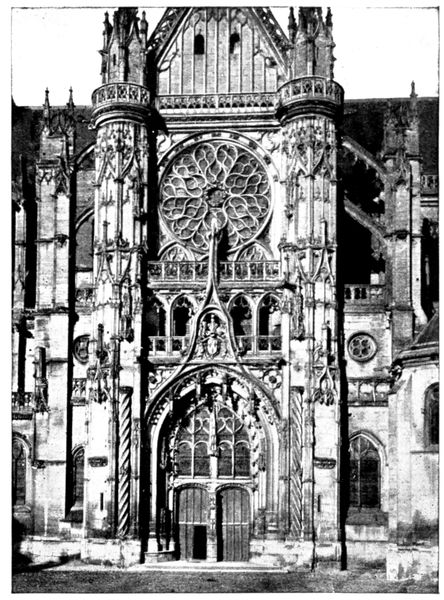
THE CATHEDRAL:
SOUTH
FAÇADE
OF TRANSEPT
The opposite view shows
the detail of the SOUTH FAÇADE
OF THE TRANSEPT designed
by Pierre Chambiges,
son and pupil of Martin
Chambiges. The latter worked
on the Cathedrals of Beauvais,
Sens and Troyes, and his
son drew inspiration from his
work for the execution of that
entrusted to him at Senlis; this
explains the great resemblance
that various portions of those
edifices bear to one another.
In comparing the south
portal with the western façade
one notes the development
of Gothic architecture from
the twelfth century, when
its restraint and simplicity
of line still recalled Roman
art, to the sixteenth century,
when rich, flamboyant
decoration flared in its final
splendour, making way for
the art of the Renaissance that the Italian wars brought into fashion.
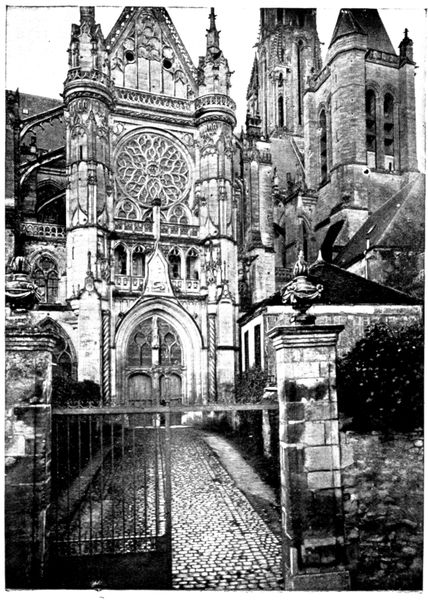
THE CATHEDRAL:
NORTH
FAÇADE
OF TRANSEPT
The appearance of this fine ensemble is spoilt by the adjacent polygonal
vestry erected on its right, which was rebuilt in the nineteenth century. A part
of it can be seen in the
above photograph; though
one can judge still better
of its ugly effect from the
photograph on the preceding
page.
The north façade of
the transept is, in its
general arrangement, the
same as that on the south,
but it is less richly ornamented.
On the pediment which
surmounts the entrance
are carved the salamander
and the "F" of Francis I.
On that of the south are
the arms of France.
The tourist should not
fail to look at the north
side of the Cathedral,
which is very picturesque.
On the north tower the
marks of German shells
are still to be seen.
They are clearly shown
in the photograph (foot
pp. 46-47).
[Pg 58]
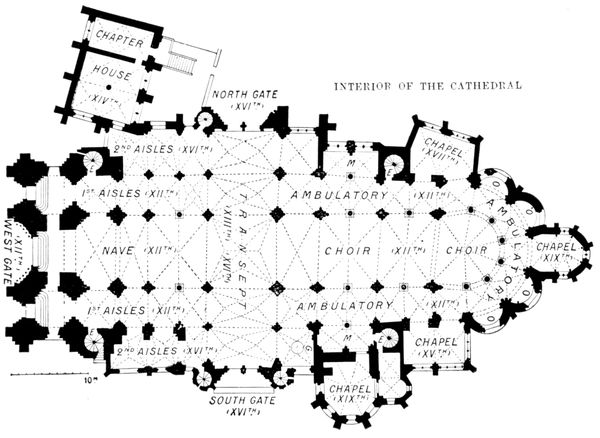
PLAN
OF CATHEDRAL
- E, stairs leading to galleries.
- G, chapel of transept (vault with pendentives).
- M, aisles of choir.
- O, radial chapels of the twelfth century (modern windows).

SECTION
OF CATHEDRAL
- A, roof of nave. B1, B2, B3,
B4, transept.
- C, piers supporting the vault
on the nave by means of
flying buttresses.
- D, first aisles of nave and ambulatory.
- G, second aisles of nave.
- T, galleries running round
the church.
[Pg 59]
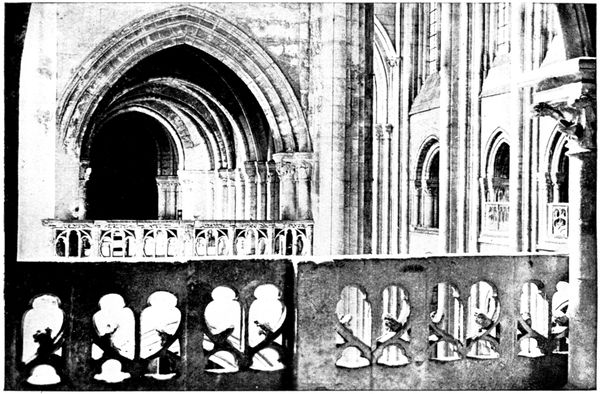
GALLERIES
OF THE
CATHEDRAL
The galleries of the cathedral are
among the most beautiful in France.
The above view, taken from the choir galleries
which overlook the southern part of
the transept, shows those of the nave in
enfilade.
In order to visit these galleries the key
must be obtained from the vestry.
In the chapel seen on the right as one
re-enters the church by the south door,
the visitor will notice the hanging bosses
of the vault of which a view is given
opposite.
In the chapter house at the north-west
end of the cathedral (see plan, p. 58), is
seen the curious capital of the central pillar, on which is carved a feast of
jesters.
The opposite view shows a fragment of it.

CAPITAL
IN THE
CHAPTER
HOUSE
(CATHEDRAL)
Two of the figures
are playing
the organ, that on
the right is working
the bellows, another
with a stick
beats the tambourine
that he holds
between his legs;
on the remainder
of the capital
other figures are
dancing.
The chapter house
was used by
the canons of the
cathedral.
[Pg 60]
Church of Saint-Frambourg
(historical monument)
This stands in a little street which opens on the south of the cathedral square.
The church can be seen from the square.
This church was founded
on the site of a Roman
temple, by Queen Adelaide,
wife of Hugues
Capet. Rebuilt in the
twelfth and thirteenth
centuries, transformed
into a "Temple of
Reason" during the
Revolution, it now serves
as a carpenter's workshop.
On the façade one can
distinguish the place intended
for a large rose
window, which, however,
was never finished.
On the left side of
the façade stood a tower,
since demolished.
The church has no roof left above the vaulting. To visit the interior
(consisting of a single nave of graceful proportions) apply to the carpenter. The
entrance to the workshop is seen on the left of the photograph.
Church of Saint-Pierre
(historical monument)
Market-day on Tuesdays and Fridays. If the tourist should wish to go to
the top of the belfry or to visit the church on other than market days, he must apply
to the concierge of the Tribunal (county court) in the square.
This old town of Senlis is so rich in relics of the past that it puts its ancient
religious monuments to quite profane uses.
We have seen above that Saint-Frambourg shelters a carpenter. Saint-Pierre
serves as a market, another church as a theatre, a fourth as a museum,
and others as clothing stores or barns. Five have completely disappeared;
as for the Abbey of Saint-Vincent, it has been turned into a college.
Saint-Pierre was founded in
1029 and reconstructed during
the thirteenth and fourteenth
centuries.
The roof of the nave was begun
in stone, but completed in
timber-work. The façade dates
from the sixteenth century and
recalls the work of Pierre Chambiges
in the cathedral.
The right-hand tower dates
from the seventeenth century.
From the upper platform
there is a splendid view of the
town and the surrounding
forests. Another more ancient
tower exists, the base of which
is the remains of the primitive
Roman church. The spire (the
top of which is seen in the
opposite photograph) was added
in the fifteenth century.
[Pg 61]
The Castle
(historical monument)
The castle belongs to the Count Turquet de La Boisserie, who allows it to
be visited. Apply to the concierge.

ENTRANCE
TO THE CASTLE
AND THE
HÔTEL DES
TROIS-POTS
The entrance shown in the above view is in the Rue du Châtel, quite close to
the square of Parvis-Notre-Dame. On the left side stands the old Hôtel des
Trois-Pots, so called from the signboard which hangs from the first floor,
and formed of three pots which are being filled by a thin stream of water.
This old dwelling recalls all the history of France from the Gallo-Roman
conquest to the reign of Henri IV.

RUINS
OF THE
CASTLE
CHAPEL
The castle itself, of which only a part exists (visible on the left in the[Pg 62]
above photograph),
was
erected on the
site of an old
Roman fort.
At the foot
ran the boundary
line of
the town,
partly formed
by the wall
which encloses
this side of the
estate and the
tower which flanks the north front of the buildings.

CASTLE
AND PRIORY
OF SAINT-MAURICE
The Merovingian and Carlovingian kings often inhabited the castle,
situated as it was in the midst of their favourite hunting-grounds.
It was the theatre of numerous historical events: Pépin, Duke of Aquitaine,
grandson of Charlemagne, died imprisoned there, and Baldwin of
Flanders carried off from there the daughter of Charles the Bald. In 987,
the last Carlovingian king having died while out hunting, the French lords
assembled in the castle and elected, as king, Hugues Capet whose dynasty
reigned in France until the Revolution. Philippe-Auguste held festivities
there on returning from his wedding with Elizabeth of Hainault. Saint
Louis founded the priory of Saint-Maurice.
During the Hundred Years War, Catherine of France was married to
Henry V. of England at Senlis, in 1420.
After Henri IV., the castle, being very dilapidated, was gradually abandoned.
Justice was still administered there until the falling in of the
Audience Chamber in the eighteenth century.
The interior of the castle is in ruins. There is one room to be seen, called
Henri IV.'s room, which is shown on the following page. It dates from the
thirteenth century, and is covered with fine panelling. The fireplace was
altered in the fifteenth century, but the big circular section flue remains just
as it was two centuries earlier.
On the left of this fireplace a thirteenth century window (now blocked up)
can still be distinguished.
The one at the
further end of
the room belongs
to the
sixteenth century.
In the photograph
some
tombstones
are seen, resting
against
the wall; on
a fragment
placed against
the chimney-piece
are the
arms of Diane
de Poitiers
(characterised
by the crescent); the two cannon balls are of stone; these were hurled from
catapults and from the first bombarding machines.
[Pg 63]
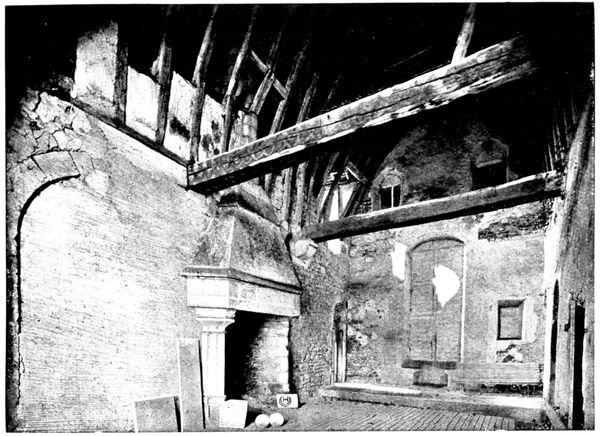
HENRI IV.'S
ROOM
IN THE CASTLE
Of the chapel built in the beginning of the twelfth century nothing remains
but ruins, a view of which is given (page 61). It was situated on the first
floor; a "semi-circular" arcade of the nave is still to be seen, on the right
side. The ground floor, vaulted like an arbour, formed a passage.
The priory of Saint-Maurice, of which one ivy-covered building still exists
(visible on the right of the photograph at the top of the preceding page), was
founded by Saint Louis in honour of Saint Maurice who commanded the
Theban legion, massacred under Diocletian for refusing to worship false gods.
In 1234 the king succeeded in obtaining the bodies of several of these
martyrs from the vicar of Saint-Maurice-en-Valais.
A church, copied from the Sainte-Chapelle in Paris, was built to shelter
these relics, but was destroyed during the Revolution.
Passing under the Roman enclosure by a subterranean passage, we arrive
at the old moat transformed into a kitchen garden. From here, there is a
very interesting view of the wall and the Roman towers, the cathedral and
the castle. A good idea of it is given by the photograph at the foot of the
preceding page.
The Roman enclosure continues towards the cathedral, passes by the
apse, from there to Saint-Frambourg, and its oval rejoins the castle by
the Place de la Halle, the Rue aux Fromages, and the Rue du Puits-Tiphaine.
It measured 312 m. (1,024 ft.) at its greatest diameter and 242 m. (794 ft.)
at its smallest diameter; twenty-eight towers adorned the walls which were
7 m. (23 ft.) high and 4 m. (13 ft.) thick.
The town, having grown, was cramped in the limits of the Roman city,
so the new ramparts were raised between the thirteenth and sixteenth
centuries; the tourist has already travelled over a part of them.
The platform of the Roman fort, which was followed by the castle, stood
on the part which (with the Rue Villevert) forms a corner of the estate. It
is reached by the narrow passage, made in the thickness of the sub-basement,
which led to the dungeons. It was in one of these (towards the year 870)
that Pépin, King of Aquitaine, died, imprisoned by order of Charles the Bald,
against whom he had revolted.
Subterranean passages connected certain important points of the castle.
They were supposed to lead as far as the Castle of Montépilloy (see p. 67)
and the Abbey of Châalis (see p. 70).
[Pg 64]
The old Abbey of Saint-Vincent
To view, apply to the concierge in the Rue de Meaux.
The Abbey of St.-Vincent was founded in 1065
by Anne of Russia, wife of Henri I., King of France,
in fulfilment of a vow.
The abbey church was rebuilt in the twelfth
century.
The tower, which dates from that period, is
square; it has two storeys with very high dormer
windows grouped in pairs on each front, which
give a very light appearance to the general
structure.
The other buildings belonging to the Abbey
were rebuilt in the seventeenth century. Inside, an
interesting cloister still exists, with a Doric
colonnade, shown on the opposite view.

ENTRANCE
THE ABBEY
(RUE
DE MEAUX)
After the Revolution the Abbey was turned
into a hospital, then into barracks, and after that
into spinning mills. In 1836 it became the College
Saint-Vincent, counting among its pupils Marshal
Canrobert and the poet
José-Maria de Hérédia.
Many inhabitants of
Senlis took refuge in the
Abbey cellars during the
bombardment of September
2, 1914. St.-Vincent
soon served as
an annexe to the hospital,
which was too small to
hold all the wounded.
In the photograph (page
42) we see the transport
of the wounded
being carried on by the
Red Cross in September,
1914. This temporary
hospital remained after
the departure of the
Germans, which explains
the presence of the wounded seen in the foreground of the opposite view.
[Pg 65]
The Arena
(historical monument)
The gate at the entrance of the road leading from the Place de Creil to the
Arena is sometimes locked. Apply to the Syndicat d'Initiative (Hôtel du
Grand-Cerf) for the key.
The arena was discovered in 1864. It apparently goes back as far as
the third century.
The tiers encircle a track measuring 130 feet by 110 feet. Two large
entrances, which were vaulted, lead into the arena at each extremity of
the great axis. On the other axis are two little rooms, which were no doubt
reserved for the gladiators. In the southern one, niches are hollowed in
the wall: these probably served as cupboards.
[Pg 66]
FROM SENLIS TO MEAUX (65 km.)
(See maps inserted between pages 80-81)
via Chamant, Montépilloy, Baron, Châalis, Ermenonville.
Starting from the Compiègne Gate, we leave the town by the Route Nationale
(N 17). After having crossed the railway we turn to the right and follow N 32
as far as the first road on the right bordered with trees, which leads to Chamant.
A hundred yards this side of the village we enter a field enclosed by hedges, on the
right of the road (2½ km.). In this field, which appears in the photograph
(p. 50), the German troops were encamped. M. Odent, the Mayor of Senlis,
and six other hostages were shot there (pp. 49-50). M. Odent's grave is near
the wood which skirts the side of the field opposite the one which borders the
road. Near the enclosing hedge is the grave of a German captain.
Go on to the village of Chamant, turn to the right, then to the left as far as
the church, the steeple of which can be seen. This church dates from the twelfth
century, and was modified in the fourteenth and sixteenth. The Roman
spire, shown below, is remarkable. In the interior, the capitals and vaulting
decorated in many colours were restored at the expense of Napoléon the
Third, as was also the tomb of Lucien Bonaparte's wife, which is to be found
in the side chapel.
Go round the church, turn to the left, then to the right, near the firemen's
gymnasium.
The road, planted with trees, which forms a continuation (on the other
side of the Route Nationale) of the road on which we stand, leads (700 yards
further on) to the Castle of Chamant, where the German Headquarters Staff
stayed. The cellar was pillaged, and more than 1,200 bottles of champagne
were emptied.
This castle, which dates from the seventeenth century, was inhabited by
Lucien Bonaparte. Attached to it are important racing stables.
Follow N 17 for about 1,500 yards, then turn to the right towards Ognon
(8½ km.). Turn twice to the right in front of the church and go towards Barbery,
the factories of which can be seen from afar. Cross the railway (12½ km.) near
the station which was set on fire by the Germans, and keep straight on towards
the keep of Montépilloy (13½ km.), which stands on a neighbouring hill.
[Pg 67]
The castle, the
entrance to which
is shown on the
opposite view,
forms part of a
farm.
Its name comes
from Mons speculatorum
or "Mount
of the watchers."
It was built in the
twelfth century.
On August 15,
1429, Jeanne
d'Arc occupied it.
An English army
commanded by the Duke of Bedford was between Montépilloy and Senlis.
The battle took place on August 16, and enabled the troops of the king
of France to retake Senlis. The castle was dismantled under Henri IV.
To obtain a view of the whole and to realise the dominating position of
the castle one must, before entering it, walk a few steps along the road which
descends on the right of the farm.
The entrance door is flanked by two large towers. The bulky masses of
masonry, which supported the chains by which the drawbridge was worked,
are still to be seen. We cross the old moats, of which portions still exist. On
entering the courtyard we see the imposing ruins of the two towers, one
circular (of which
only one large piece
of the wall remains)
the other square.
We retrace our
steps.
On leaving the
village, near an iron
shed we turn into
the paved road on
the right and continue
about 400 yds.
The German guns
which bombarded
Senlis were placed
in the hollow on the
right. A German
grave will be noticed
in the meadow.
We return to the
road and go down
towards Barbery.
After the level crossing,
turn to the
right into the main
road. Journey 4½ km.
turn again to the
right, cross the railway
line, then the
village of Ducy;
climb a ridge and
descend by zig-zags
to Baron (27 km.).
[Pg 68]
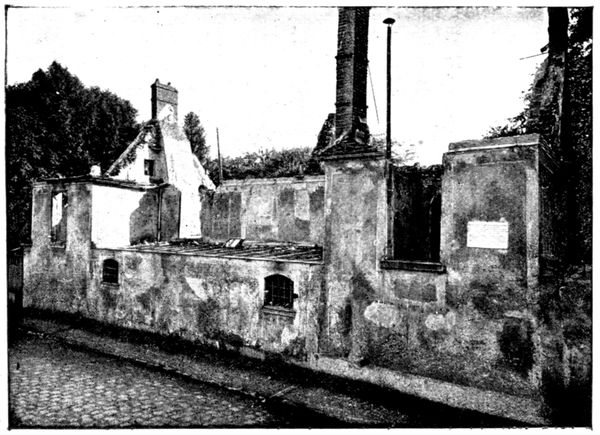
HOUSE WHERE
THE MUSICIAN
MAGNARD
PERISHED
IN THE FIRE
(Sept. 1914)
Entering Baron,
we turn to the left
in the High Street
and, 300 yards further
on, at the end of
the block, reach the
house of Albéric
Magnard.
It is marked by
a marble tablet
(visible in the
opposite view), on
which is engraved
the following inscription:
"Albéric Magnard,
musical composer, born
in Paris on the 9th of
June, 1865; died on the 3rd of September, 1914, shot and burnt in his house while trying
to defend it."
Celui-là qui, rebelle à toute trahison,
Et préférant la Muse à toute Walkyrie
A défendu son art contre la barbarie
Devait ainsi mourir défendant sa maison
Edmond Rostand,
de l'Académie Française.
(He who, revolting against treachery
And preferring the Muse to any Valkyrie
Defended his art against barbarity,
Was doomed thus to die, defending his home)
His inspiration entirely French, Magnard (as Rostand recalls in the above
lines) had kept his art free from German influence.
His artist's sensitiveness made him suffer intensely from the horrors
of invasion; he warned his friends that he was resolved to die rather than
submit to the rule of the conqueror and that his revolver held four bullets
for the enemy and one for himself.
He had sent his family back to Paris, only keeping his young son-in-law
with him. The Germans entered Baron on September 2. On the 3rd at
about 9 o'clock in the morning, a party of soldiers entered the grounds. The
composer had locked and barricaded himself in the villa. After summoning
him three times the Germans fired from the garden at the façade shown in
the view below.

MAGNARD'S
HOUSE
(inner façade)
Magnard retaliated through the Venetian blinds of a window on the first
floor, killing one of the soldiers and wounding another. The composer's son-in-law
returning from
a short walk, arrived
at the beginning of this
scene. Seized and
bound to a tree, he
only escaped death by
passing himself off as
the gardener. After
having fired a few
rounds the Germans
awaited the instructions
of the commander.
The latter at first
decided to burn the
village as a reprisal
but on the entreaties
of the Public[Pg 69]
Notary, Me. Robert, modified
the sentence and
ordered that the incendiarism
should be limited
to the villa Magnard.
After having hurriedly
pillaged the composer's
study, the soldiers set
fire to the kitchen with
straw and grenades.
When the smoke began
to rise Me. Robert and
Magnard's son-in-law
heard a report from the
interior of the house.
The author of Guercœur
and of Bérénice had no
doubt just died by his
own hand. An officer
then said to the Notary
"He takes the best way out." Magnard's body was consumed in the fire.
His revolver was found with three chambers empty.
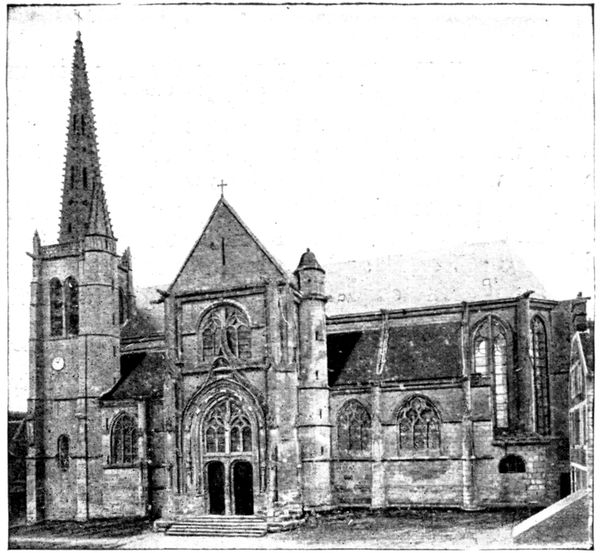
The village was looted. An officer ordered the Notary, Me. Robert, to
open his safe. As he at first refused to obey this order, the officer told two
of his men to load their weapons and Me. Robert was forced to hand over
the 8,300 francs the safe contained. While the Notary was occupied in
satisfying these demands, the Germans stole his silver, his jewellery and that
of his wife, even his personal linen, in exchange for which they left him their
dirty shirts. The cellar was entirely emptied by the officers, who took 1,471
bottles of rare wine.
The same witness saw an officer wearing nine women's rings and three
bracelets.
Returning from Magnard's house follow the High Street as far as the Church
(historical monument). This church is of the twelfth and thirteenth centuries,
with a fine steeple belonging to the fifteenth (view above).
There is beautiful panelling to be seen inside (view below). Jeanne
d'Arc received the
sacrament here
on the eve of the
battle against the
English below
Montépilloy, in
1429.
Follow the road
which is a continuation
of the High
Street. At this
point, and as far
as Senlis, rearguard
actions were
fought in Sept.
1914. After 3½ km.,
turn to the left.
In the field which
forms the corner of
the two roads there
is a German grave.
3 km. further on, turn to the left again into the road to Ermenonville, and after
having proceeded about 1,200 yards, go down the lane which leads, under the trees,
to the entrance of the domain which constituted the ancient abbey of Châalis.[Pg 70]
CHÂALIS
At the very beginning of the twelfth century, on his return from the First
Crusade, a lord of Mello founded a priory at Calisium. In 1136 the king,
Louis le Gros, wishing to honour the memory of his brother, Charles le Bon,
who was assassinated in Bruges, transformed this priory into an abbey
which was placed under the management of the Order of Cîteaux, whose
growing power was beginning to make itself felt.
The Abbey flourished under the protection of the kings of France, the
bishops of Senlis, and the lords of Chantilly, and became of great importance.
Its present condition can only give a faint idea of its former disposition
and size.
The good king St. Louis often came to share the peaceful life of the monks,
cultivating the soil and the vine, looking after the bees, fishing for pike in
the ponds, and eating in the common refectory out of a wooden bowl, amidst
the tame birds that came from all the country around to join in the meals.
At the time of the Renaissance the Abbey fell in commendam, that is to
say it was no longer the property of the community but that of the abbot,
who was thenceforth chosen by the king, instead of being elected by the
monks. The first commendatory abbot was the Cardinal Hippolyte d'Este,
son of Lucretia Borgia. Reducing the monks to a bare pittance, the Cardinal
made free use of the Abbey revenues, which enabled him to build his famous
Villa d'Este at Tivoli and its magnificent gardens.
In 1570, the great Italian poet Tasso spent several months at Châalis
and there worked at his Jerusalem Delivered.

RUINS
OF THE
ABBEY
CHURCH
In the eighteenth century, the reconstruction of the Abbey was undertaken.
Jean Aubert, the architect of the "Grandes Écuries" at Chantilly and the
Hôtel Biron in Paris, was entrusted with the plans. The work was begun
but not completed. The abbatial building, which to-day contains the museum
and which can be seen on the left of the beautiful avenue leading to the
entrance gate, shows the dignified style that Aubert wished to apply to the
new edifice.
[Pg 71]
All these works ran the abbey into debt so Louis XVI. had it closed and
placed in liquidation. The Revolution completed its ruin. Sold as national
property, Châalis greatly suffered.
The buildings were for the greater part destroyed, the old church was
sold piecemeal at the rate of twelve sous (6d.) per cartful of stones.
In the nineteenth century the successive proprietors did their utmost to
reconstitute the domain. The grounds were bought back and the ruins consolidated.
The abbatial building became a castle, and the park was laid
out again. In 1902, Mme. Jacquemart-André bought the estate for 1,200,000
francs. She bequeathed it to the "Institut de France" with the museum
that she had established in the castle. The "Institut" took possession of it
in 1912, at the donor's death.
The Church.
The church, built at the beginning of the eighteenth century, is of great
interest from an archæological point of view, for it shows the first application
(by the Cistercians) of the Gothic style of architecture which had just made
its appearance in the "Ile de France." In the hundreds of abbeys created
by the original abbey of Cîteaux (situated near Dijon), the Roman style had
hitherto held sway. Beginning with Châalis, the Cistercians proceeded to
spread the pointed arch all over Europe, where soon more than 1,800 branch
abbeys were scattered.
The church of Châalis was vast, measuring 269 feet by 89 feet.
Its transept (the ruins of the northern part are seen in the view on the
preceding page) was remarkable for its enormous size, compared with that
of the choir, and for the seven radial chapels—one of which is clearly visible
on the right of the view—enclosed in each of its branches. An outline of
the nave remains (on the left of the photograph); it had twelve bays, preceded
by a porch. The steeple which rose from the tower was destroyed by
lightning in the seventeenth century. The monastery was connected with the
church, and the outline of the storied galleries is seen in the view below.
The abbot's chapel appears in the middle distance, on the right of the view
on the preceding page. It is designed in the style of the Sainte-Chapelle
in Paris.
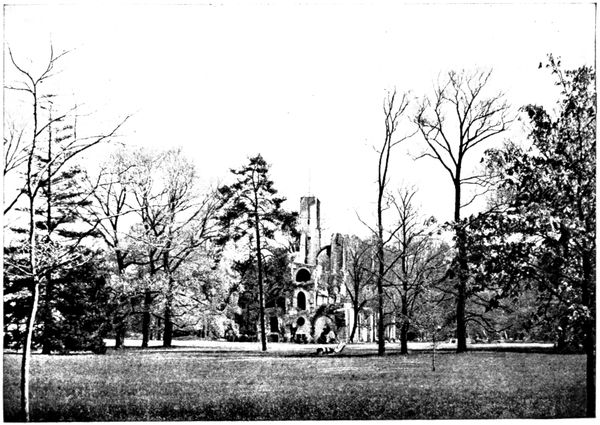
RUINS
OF THE CHURCH
SEEN FROM THE
ROUTE
DES ÉTANGS
[Pg 72]
Visit to the Domain of Châalis.
From April 15 to November 1, the museum and park are open on Thursday
afternoons, from 1 p.m. to 5 or 6 p.m. An interesting guide by the Curator,
Louis Gillet, is sold for 2 francs.
For the passing motorist the visit in detail is not indispensable. The
Museum, although interesting, is far from equal to that which Mme. Jacquemart
André established in her house in the Boulevard Haussmann, Paris,
and which she bequeathed to the "Institut" at the same time as Châalis.
As far as concerns the park and ruins, an adequate idea of them will be
obtained by following our itinerary.
From the entrance gate one sees: in front, the ruins of the church; to the
left, the castle, containing the museum. The whole is quite imposing.
At a moderate pace we take the road (on the right of the gate) which leads
to the ponds. After traversing them, through the enchanting scenery, of which
the photograph below gives some idea, the road runs through woodlands and brings
us back to the high road of Ermenonville, down which we turn to the left.
On the other side of this road spreads the second portion of the domain
of Châalis: the Désert, which formerly belonged to the park of Ermenonville.
In the neighbourhood of this park it consists of a lovely, wooded landscape,
with two ponds in the background; but at the other extremity there
is a great contrast, for an arid stretch of land, the "Sea of Sand," faces the
ponds of Châalis.
The Désert, like the park of Ermenonville, teems with memories of
Jean-Jacques Rousseau (see p. 73).
Skirting the ponds of the Désert we arrive at Ermenonville (40 km.).
The castle, which belongs to Prince Radzivill, is on the left of the road
(it is not open to visitors). The park (open to the public on Sundays, Thursdays
and holidays) is on the right.
The castle was occupied in September 1914, by German staff officers, who
contented themselves with pillaging the wine cellar.

A CORNER
OF THE PONDS
OF CHÂALIS
[Pg 73]
The park of Ermenonville was designed by the Marquis de Girardin. This
ardent disciple of J. J. Rousseau did his utmost to make the park an illustration
of the philosopher's work. In the part which now pertains to
Châalis, the Désert, he claimed to reproduce in miniature the Alpine landscapes
where were laid the scenes of Julie ou la Nouvelle Héloise. This touching
worship succeeded in dispelling the misanthropy of Rousseau, who was
living in Paris in gloomy solitude. He accepted the Marquis's hospitality
and settled down at Ermenonville on May 20, 1778. On July 2, the "man
of nature" passed away amidst trees, flowers, and birds. He was buried in
the Island of Poplars ("L'Ile des Peupliers," view below), in the middle of
the pond that comes into view on the right of the road level with the centre
of the castle. Rousseau's influence on his century was immense, and for a
long time his tomb was the goal of universal pilgrimage. The philosopher's
remains are no longer at Ermenonville; the Convention had them exhumed
and transferred to the Panthéon.
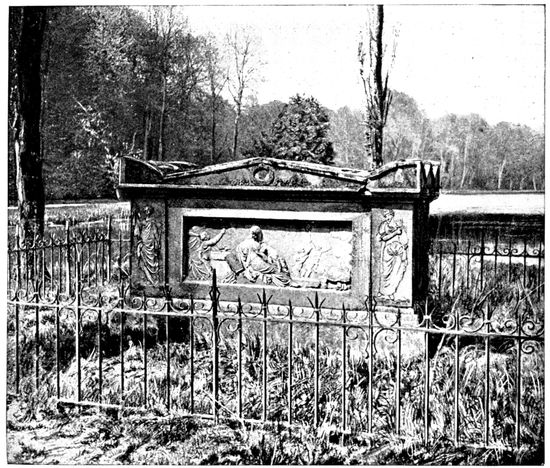
TOMB OF
J. J. ROUSSEAU
AT
ERMENONVILLE
Cross the village, leaving the statue of J. J. Rousseau on the left, and when
at the top of the hill turn to the left. Four kilometres further on is the Plessis-Belleville
School of Aviation. From there go straight on.
At Saint-Soupplets, at the branching off of the road with that of Dammartin
(54 km.), stands the Belle-Idée Inn, which was the scene of an interesting
exploit in September, 1914. A German officer and about fifteen men had
stayed in the inn after the evacuation of Saint-Soupplets, when a French
patrol, composed of Sergeant Vannerot and six men, entered. The officer
immediately fired at the sergeant, but missed. The latter then trans-pierced
him with a bayonet thrust, and the rest of the German troop
were killed or put to flight.
At Penchard (61½ km.) turn to the left beyond the town-hall. The road descends
towards Meaux, giving a beautiful view of the town, dominated by its cathedral.
In Meaux we turn to the left to go under the bridge and arrive at the cathedral
(65 km.) (see plan inserted pp. 74-75).
[Pg 74]
MEAUX
(See plan inserted between pp. 74-75)
ORIGIN AND MAIN HISTORICAL EVENTS
Meaux was the centre of a little Gallic nation: the Meldi—the inhabitants
of Meaux are called Meldois—and afterwards the capital of Brie. It was
joined to the royal domain in 1284.
Religious life was always very active in Meaux: six assemblies of prelates
were held there from the ninth to the thirteenth centuries, and two in the
sixteenth century.
It was the Treaty of Meaux, in 1229, which put an end to the crusade
against the Albigeois. At the time of the Reformation the religious wars in
that region became extremely violent. In the seventeenth century the diocese
became famous on account of its bishop, Bossuet, who was called the Eagle
of Meaux.
The town was taken and set on fire several times in the course of its
troubled history.
In 1358, the peasants in revolt, who were called the Jacques, were cut to
pieces below the walls by the French and English nobles.
MEAUX IN 1914
Happier now than in 1814 and 1870, Meaux escaped in September, 1914,
the horrors of invasion; and it was only crossed by some German patrols. A
few shells fell in the Faubourg Saint-Nicolas and even in the neighbourhood of
the cathedral, but no serious damage was done.
The British troops in retreat crossed the town on September 2 and 3
and blew up the Market bridge (view below) also the foot-bridge, further down
stream. The floating wash-houses, which might have served as pontoons,
had already been sunk.
Thirteen thousand out of the 14,000 inhabitants left Meaux with the
civilian authorities. The bishop, Mgr. Marbeau, showed great energy in
organising help for those who remained in the town and for the wounded that
poured in after September 5. In spite of the abnormal circumstances, a
Te Deum was sung in the cathedral for the election of the Pope Benoît XV.
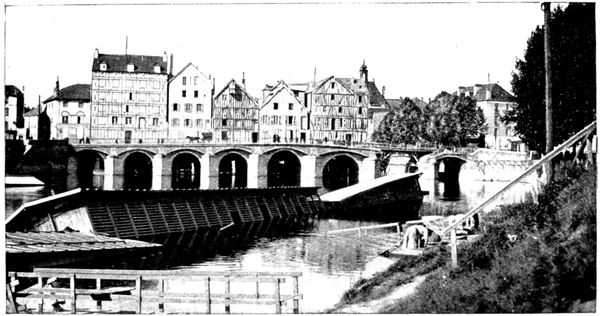
MARKET
BRIDGE
AND
WASH-HOUSES
(Sept. 1914)
[Pg 75]
VISIT TO THE TOWN
St.-Stephen's Cathedral
(historical monument)
Beautiful panorama is visible from the top of the belfry. To visit,
apply to the verger (gratuity).
The building of the
cathedral was begun at
the end of the twelfth
century and continued
until the sixteenth. It
has just been completely
restored.
The left tower, the
only one completed, has
no spire. That on the
right is called the Black
Tower, because of its
covering of slates. The
façade is in the decorated
Gothic style. A
beautiful rose window in
the middle dominates
the three doorways.
The middle doorway
and that on the right are
surmounted by acute
triangular gablets; that
on the left, of a more obtuse
ogive, is placed
under an arch in accolade.
The church is preceded
by a parvis dating
from 1610, which is
reached by means of
eight steps.
The stone used in the
present building has, unfortunately,
very little
resistance and is weather-worn. In the course of the revolutions witnessed
by the old cathedral, mutilations were added to the damage caused by
weather.
The three rows of statuettes which adorn each porch are much spoilt, as
are the bas-reliefs which decorate the tympanum.
The great statues which filled the niches have disappeared.
[Pg 76]

THE LIONS'
DOORWAY
(Cathedral)
After having viewed the
west façade, the tourist,
keeping to the right of
the cathedral, should go
and look at the Lions'
Doorway, which is on the
south front.
This thirteenth century
doorway, restored in the
nineteenth by Viollet-le-Duc,
takes its name from
the gargoyles, representing
lions, which flank it. It
is a reproduction of the
southern doorway of Notre-Dame
de Paris.
Entering the Cathedral
by the Lions' Doorway, the
tourist will be struck by
the lightness and richness
of the decoration of the
interior, which has been
subjected to extensive restoration.
The great height of the
aisles is noticeable. It is
explained by the existence,
in the original church, of
vaulted galleries which
were raised above the aisles,
as in Senlis and Notre-Dame de Paris. These galleries disappeared in the
great transformations which took place at the end of the twelfth century
and the aisles therefore remained notably super-elevated.
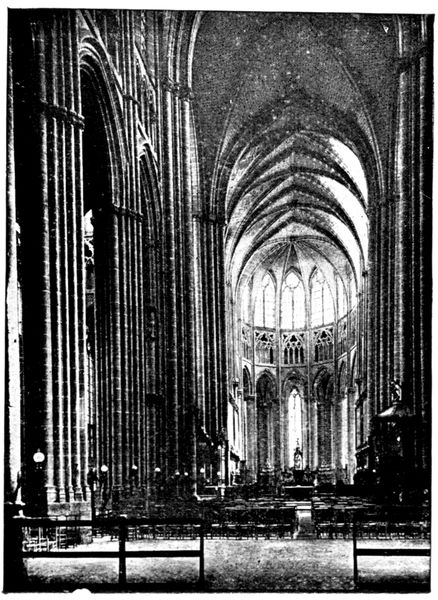
VIEW OF THE
NAVE OF THE
CATHEDRAL
The Tomb of the "Eagle
of Meaux" is in the choir, on
the right, marked by a tablet
of black marble.
The PULPIT (see on the right
in the opposite view) was made
from some of the panels from
the old pulpit where preached
the great Bossuet. The bishop
of Meaux, in spite of his cares
at court, worked very energetically
in his diocese and
preached in the cathedral
many sermons with that same
inspiration that shone through
the magnificent discourses delivered,
during his career
as a preacher, before the royal
audience.
He maintained strict discipline
among the clergy and
religious orders under his jurisdiction.
His contests with the
Abbess of Jouarre went as far
as a forcible seizure of the
abbey buildings.
[Pg 77]
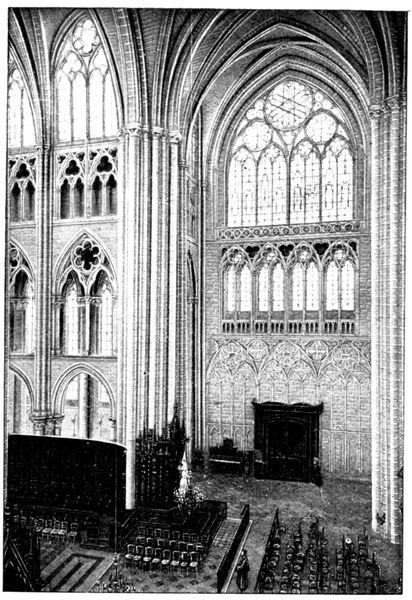
TRANSEPT
AND CHOIR
OF CATHEDRAL
The opposite view shows
the further end of the
TRANSEPT, to which corresponds
the Lions' Door on
the exterior. The decoration
here is particularly rich.
Above the transept rose a
beautiful spire in timber-work
covered with lead, but
as it was in a very precarious
condition it was found necessary
to demolish it in 1640.
On the left of the view one
sees the commencement of
the CHOIR, the execution of
which shows to what heights
of lightness and boldness of
construction Gothic architecture
had arrived. The
walls between the piers are
hollowed out by piercings
and mouldings; it is a miracle
of equilibrium.
Originally the choir had
only three chapels, but two intermediary
chapels were added
in the fourteenth century.
When making the tour of
the choir the visitor will see
opening on the north into the courtyard of the old chapter house the beautiful
Porte Maugarni, dating from the fifteenth century. The name of Maugarni
(a gaolbird hanged on this spot in 1372, by order of the bailiff of Meaux) came
down to posterity by reason of the long lawsuit that the chapter of the
cathedral brought against the bailiff because of this execution, carried out in
ecclesiastical precincts.
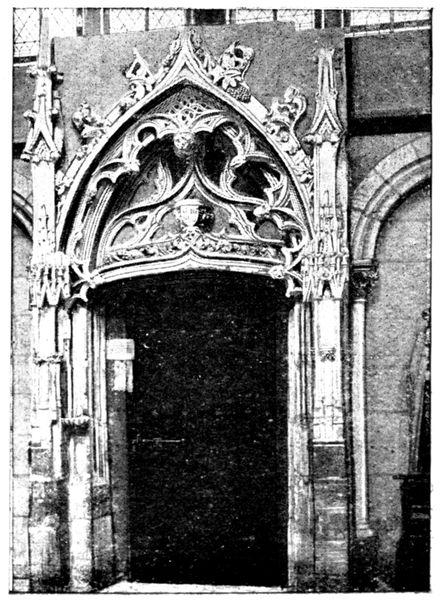
PORTE
MAUGARNI
(Cathedral)
Almost directly in front of the Porte Maugarni, with its back to the choir,
is a white marble statue representing the kneeling figure of a young knight,
Philippe de Castille. In 1603 his
father founded the barefoot order of
Notre-Dame-de-la-Merci. The statue
comes from the church belonging to
the convent of that order.
Beside the door is a stone figure of
Christ, of the sixteenth century.
One can also see in the second
chapel, beyond the great doorway in
the north aisle of the nave, the group
(in high relief) of the Visitation
(seventeenth century) and the picture
of the Adoration of the Wise Men,
attributed to Philippe de Champaigne.
The symmetrical chapel, on the south,
contains the tombstone of Jean Rose
and his wife. Jean Rose was one of
the great bourgeois of Meaux in the
fourteenth century. His name was given
to one of the boulevards of the town.
At the entrance to the nave the
seventeenth century organ is supported
by beautiful arcading.
[Pg 78]
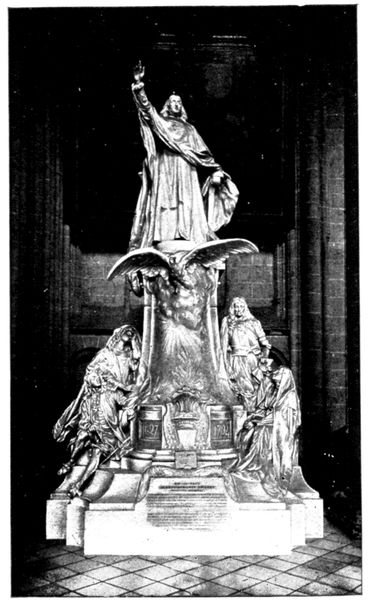
BOSSUET'S
MONUMENT
(Cathedral)
Bossuet's Monument, the work
of the sculptor Dubois (1907), stands
in the north aisle, near the main
entrance.
At the foot of the pedestal, on the
right, are represented Turenne and
Mlle. de Lavallière, converted by
Bossuet: Mlle. de Lavallière appears
in the garb of a nun. It will be
remembered how, after Mme. de
Montespan had replaced her in the
favour of the king, Louis XIV., she
withdrew to the convent of the Carmelites,
under the name of Sister
Louise de la Miséricorde. On the
left are Henrietta of France, queen
of England, whose funeral oration
was delivered by the "Eagle of
Meaux," and the Dauphin, whose
tutor Bossuet had been.
Behind the pedestal is a bust of
the Great Condé. Bossuet was his
friend, and frequently visited him in
his beautiful castle of Chantilly, and
often received him at the Bishop's
Palace. His death inspired the
"Eagle of Meaux" with one of his
most magnificent funeral orations.
The Old Chapter House
(historical monument)
Leaving the cathedral by the west door one walks into the courtyard of
the bishop's palace, the entrance to which is on the right of the square. At
the further end of the
courtyard is the old
Chapter House.
This old dwelling-place
of the canons of the
cathedral dates from
the thirteenth century, and
is in course of restoration.
Its curious, covered
outside staircase, which is
well seen in the opposite
view, is well known to
archæologists.
We have seen already,
in the case of the Porte
Maugarni, how vehemently
the canons defended
their prerogatives.
The Old Bishop's Palace
The old bishop's palace, the courtyard front of which faces the cathedral,
dates from the twelfth century, and was altered in the sixteenth and seventeenth.
On the ground floor are two fine vaulted twelfth century rooms. An
inclined plane leads to the second floor. According to tradition, one of the
bishops had it made that he might go up to his rooms without dismounting
from his mule.
[Pg 79]
Amongst the first-floor
rooms are those
of Marie-Antoinette and
the king. Meaux was
in fact a halting place
for Louis XVI. and the
royal family on their
return from Varennes.
The king's room was
also occupied by Napoléon
I. when he came
back from the Russian
campaign.
The town of Meaux is
now establishing a museum
in the buildings
of the bishop's palace.
The north front looks over a pretty garden, laid out by Le Nôtre (to be
seen on Thursdays and Sundays. On other days apply to the lodge-keeper in
the entrance courtyard. Gratuity.)
At the end of the garden, on the ramparts dating from the Middle Ages,
is a terrace. It is reached by a covered staircase placed at the north-east
angle. From there one has a beautiful view of the garden, the bishop's
palace and the cathedral (view above).
On the terrace stands a little pavilion known as Bossuet's Study. The
great bishop liked to work there, and often, by way of relaxation, took a
walk along an avenue of fine yew trees on the ramparts near by.
The Old Mills
After visiting the bishop's palace we go through the Rue Martimprey to the
banks of the Marne.
The view is extremely picturesque; on one side are the mills which dam
the river; on the other, is the beautiful Promenade des Trinitaires, with
its old poplars. The mills shown in the view below were rebuilt in the
sixteenth century. The other side of the buildings looks on to the market
bridge (view p. 74). These buildings, in spite of their age, withstood the
blowing up of the bridge in 1914.
Slightly downstream are the modern mills of l'Échelle, which replaced
mills similar to those of the market bridge, burnt in 1843.
[Pg 80]
VISIT
to the
OURCQ BATTLEFIELD
(September 5 to 9, 1914)
FROM MEAUX TO MARCILLY
(28 km.)
(See plan inserted between pp. 78-79)
via Chauconin, Neufmontiers, Monthyon, Penchard, Chambry,
Barcy.
Start from Meaux in front of the cathedral. Go down the Rue Saint-Rémy,
pass under the railway bridge, then turn to the left and take the N 3 for about
2 km. Turn to the right in front of a beetroot factory and follow the road planted
with plane trees which leads to Chauconin (4 km.).
After having a peep at the little country church, we take a few steps
along the path shown in the view below. The houses which border it still
show traces of the incendiary fires of September, 1914. The Germans
occupied the village for a few hours on the 5th, just long enough to pillage
the dwellings and partly burn them by means of grenades flung on to the
roofs, and sticks of resin thrust under the doors.
Having crossed the village, we have before us the buildings and high chimney
of Proffit Farm, situated at Neufmontiers. Take the road which leads to
it. On reaching the level of the farm, some French and German graves
(of which a view is given on p. 81) will be seen to the right of the road.

BURNT HOUSES
AT CHAUCONIN
The German grave is on the left, isolated. It is marked by a black cross
on which is painted the letter A. In the background can be distinguished
the wooded heights of Penchard, in the conquest of which fell the French
and Moroccan soldiers here buried.
[Pg 81]
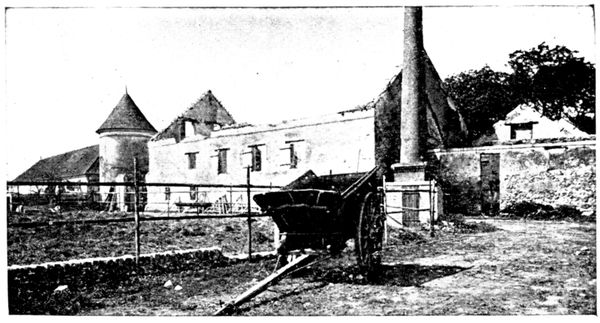
PROFFIT FARM
BURNT
BY THE
GERMANS
In front of the
graves is one of
the entrances of
Proffit Farm.
The view opposite
shows a part of the
courtyard. This
fine farmstead had
been marked down
and condemned in
advance.
The Germans
had themselves specially
guided there
from Chauconin. They looted the farmer's house: near the safe was found
one of the skeleton keys with which they tried to force it.
They then fired the stables and barns, where nearly 20,000 bundles of
straw made a gigantic blaze.
Skirting the walls of the farm, the road leads to the Church, where the
Germans installed an ambulance during their short occupation of September 5.
The inhabitants who remained in the village were commandeered and had
to carry in the German wounded, on ladders, from the surrounding neighbourhood.
On the morning of the 6th the French re-occupied Neufmontiers and
captured the ambulance (view below).

GERMAN
AMBULANCE
IN THE
CHURCH
[Pg 82]
Running between Proffit Farm and the church, the road slopes down to the brook le Rutel, which it crosses. At the fork of the road, turn to the right. A hundred yards further
on is the spot from which the Panorama A seen below (6½ km.) was taken, embracing the field of action of September 5.

A. PANORAMA OF MONTHYON PENCHARD. NEUFMONTIERS
- Road to Villeroy Iverny
- Heights of Cuisy
- Le Rutel
- Monthyon
- Road from Neufmontiers to Iverny Le Rutel
- Heights of Penchard
- Castle Park
- Neufmontiers
The advance guard of the Fourth German reserve corps had placed its artillery in the declivities of the heights of Monthyon and Penchard; the infantry troops and machine-guns
had advanced into the plain, utilising le Rutel and the Neufmontiers to Iverny road as entrenchments. The first cannon shot of the battle of the Marne was fired on the 5th of
September, at noon, from Monthyon at a French battery which was coming out of Iverny, and killed the captain. The fight was sanguinary all that day. The troops of the
55th division tried their hardest to push the Germans back beyond Monthyon but were stopped on the plain by the terrible fire of the machine-guns. At the same time the Moroccan
brigade attacked the heights of Penchard and carried them with the bayonet, but it could not maintain its position there and was forced back behind Neufmontiers and Chauconin,
which the Germans occupied. This occupation only lasted a few hours for, during the night, the German troops, threatened with being outflanked by the Seventh Corps further
north, abandoned their formidable positions at Monthyon—Penchard and the outposts at Neufmontiers—Chauconin. The next morning the French took possession.
[Pg 83]
Continuing along the road to
Villeroy we come, after about
2 km. to the GREAT GRAVE
of which a view is given opposite.
It contains the bodies
of numerous officers and men
who fell in the surrounding
fields. At the extreme end
of the grave on the right is
buried the well-known writer,
Charles Péguy, whose death
seems to have been the one he desired when writing the following lines, now
famous:
Heureux ceux qui sont morts dans les grandes batailles
Couchés dessus le sol à la face de Dieu....
Heureux ceux qui sont morts pour leur âtre et leur feu
Et les pauvres honneurs des maisons paternelles....
Heureux ceux qui sont morts, car ils sont retournés
Dans la première argile et la première terre.
Heureux ceux qui sont morts dans une juste guerre,
Heureux les épis mûrs et les blés moissonnés.
At the fork of the road beyond the grave, go to the right towards Iverny. It
is within 200 yards of these cross-roads, in the field on the left of the
road, that Lieutenant Péguy was killed, shot through the head while
standing amidst his soldiers of the 276th, whom he had ordered to lie down.
On arriving at Iverny, turn to the right towards Monthyon. At the
entrance to this village, near the farm de l'Hôpital, there is a little pond
where the cases of shells abandoned by the Germans were emptied (view on
following page).
These cases belonged to the three batteries of 77's which were established
on the right of the road behind the farm buildings, in a depression of the
ground. We have seen above that these batteries started the cannonade
which began the battle of the Marne. Marked down by the French batteries
they hastily abandoned the position.

POND WHERE
THE GERMANS
THREW
THEIR SHELLS
[Pg 84]
Leaving the pond on the right we follow the road to the left which brings us
to the picturesque village of Monthyon (15 km.).
Despite the difference in spelling, it was the patrimonial fief of the celebrated
philanthropist Baron de Montyon (1733-1820), founder of several
prizes for good conduct and literature awarded yearly in solemn session by
the "Institut de France."
We have seen that Monthyon, attacked without success on the 5th by the
French, was on the 6th abandoned by the Germans. General de Lamaze
established his headquarters there.
On arriving at the church turn to the right and descend towards the highway
from Saint-Soupplets to Penchard.
Half-way down the slope will be seen on the left a villa which overlooks
all the countryside, and where the French staff had a first-rate observatory
during those hard days of September.
The view below, taken from the upper balcony, shows a corner of the
vast panorama seen from there.
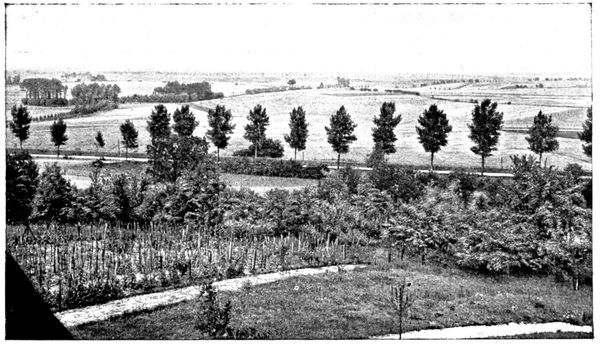
THE PLAIN
AT THE FOOT
OF MONTHYON
At the foot of the slope turn to the right towards Penchard and follow the
railway lines on the road.
Two kilometres further, on the left, an avenue planted with trees leads
to the Villa Automne, belonging to M. Charles Benoist, member of the
"Institut" and deputy of Paris.
There the Germans installed an ambulance which received the wounded
of the first battles with the Moroccans at Penchard.
Those who succumbed, among them several officers, were buried in the
garden of the estate.
The Moroccans captured the ambulance when they re-took possession of
Penchard.
The villa had been ransacked; the most highly appreciated trophy being
the owner's peaceful academician's sword.
At the entrance to Penchard (19 km.), keep to the right as far as the town-hall
square, where the motor can be left.
By the road which borders the town-hall on the right (about 150 yards from
there and going past the church) we reach the edge of the Penchard woods where
the view on the following page was taken. The tourist who enters these
woods for a walk, or a rest, will find graves here and there, the last traces
of the furious battles that were fought around.
[Pg 85]
Penchard was attacked the first time on September 5 by the Moroccan
brigade, which came from the Chauconin-Neufmontiersline, over which
the tourist has already travelled. The struggle was a desperate and particularly
bloody one on the edge of the wood now before us, as also in the
gardens of the neighbouring houses. The Moroccans had the advantage
in this hand-to-hand fight and towards noon succeeded in taking the village,
which they held for several hours under a violent bombardment.
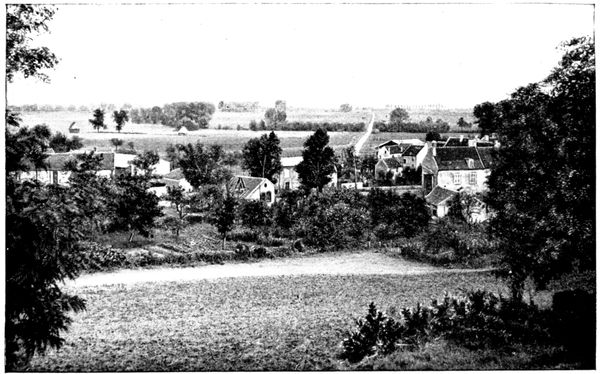
THE PLAIN
AT THE FOOT
OF PENCHARD
But we know that during this time the 55th division's attack on Monthyon
had failed, and the Moroccans, unsupported on their left, had to withdraw
beyond Chauconin-Neufmontiers.
On the 6th the brigade, renewing its efforts, found Penchard evacuated and
went on to the village of Chambry, towards which we will now direct our steps.
When leaving Penchard the Germans posted several spies in the woods,
their mission being to signal the positions of the French troops and artillery
to the aviators.

MONUMENT
OF THE
FOUR ROADS
One of them was caught and shot at the entrance to the wood in the evening
of the 8th. He wore the red-cross armlet and on him were found pennons and
rockets which he
used for signalling.
We must retrace
our steps as far as
the fork of the road
at the entrance to the
village and take the
road that runs to the
right.
Immediately after
this we come to the
crossways of three
roads; we follow the
middle one which
goes towards Chambry.
We arrive at the
Monument des
Quatre-routes, so called because it is placed at the crossing of the Barcy[Pg 86]
to Meaux road with
that from Penchard
to Chambry.

PATRIOTIC
CEREMONY
AT CHAMBRY
(Photo from
l'Illustration)
This monument
was raised by the
engineers, by order
of General Gallieni,
to the memory of
the Army of Paris.
Every year, commemorative
ceremonies
take place at
Meaux and on the
neighbouring battlefields,
particularly
at the monument of
the Quatre-Routes.
The view opposite
was taken in September
1916. The
bishop of Arras
Mgr. Lobbedey, who
some hours earlier
preached a touching
sermon from
Bossuet's pulpit in
the Cathedral of
Meaux, is here seen
placing the tricolour
flag at the foot
of the monument.
At the crossing of the Quatre-Routes, the tourist coming from Penchard continues
straight on to Chambry, which is seen a little further on in a hollow
(see photograph below).
Chambry (22 km.) is one of the points of the French right where the fighting
was fiercest. It was taken and retaken during the days of September
6, 7 and 8. Alternately bombarded by the French 75's (which at
Penchard and Monthyon had taken the place of the German 77's, driven
from their first line), and by the light and heavy artillery that the Germans
had established on the heights of Vareddes and Gué-à-Tresmes, Chambry,
as shown by the great number of new roofs, suffered heavily.
The Germans were thrown back from the western ridge of the hollow into
the village, which they were forced to abandon after violent hand-to-hand
fighting in the streets. They then entrenched themselves on the east flank
and particularly in the cemetery, which is seen in the view below.
[Pg 87]
Driven from the cemetery they fell back on their chief position, visible
on the panorama B (pp. 90-91), whence they made obstinate counter-attacks.
The soldiers of the 45th and 55th divisions fought for the ground foot by
foot, and finally remained masters of it at the cost of heavy losses. Zouaves,
Algerian sharp-shooters, and foot-soldiers of the line vied with each other
in heroism during these terrible days.
Having entered Chambry we cross the square, leaving the main street on the
left, and go straight on. We thus turn round the village by the east—that is
to say, on the front that had to withstand all the German onslaught.
The gardens which border the road contain several graves of soldiers who
were killed in battle and buried where they fell. The upper photograph
shows one of these graves. Some Algerian sharp-shooters fell there, as is
indicated by the crescent drawn on the tombstone placed at the head of
the grave. The tricolour cockade pinned below is that of "l'Œuvre du
Souvenir."
On the slope of the road, to the right, the French troops had established
a trench and some precarious shelters (see photograph below).
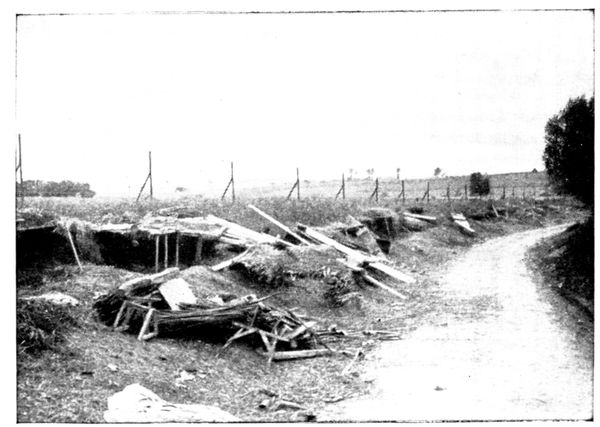
SHELTERS
DURING
THE BATTLE
This chance installation at the beginning of the war contrasts oddly with
the scientific work that the struggle on fixed positions has now made common.
It seems as though it could not have afforded anything more than
moral protection
against the German
artillery, which for
three days riddled
the position with
shells of 77, 105, and
even 150 calibre.
The road followed
by the tourist rejoins
the main street which
lay on his left as he
entered the village.
400 yards from
here, on the right,
lies the CEMETERY
of Chambry. Near
the entrance, on
the left, is a little
chapel, whose doors
were riddled with
bullets. It served as a temporary infirmary but was very quickly filled up.
[Pg 88]
We have seen already the importance of the position held by the Germans
in the cemetery.
Through embrasures pierced in the walls, rifles and machine-guns directed
a fierce fire on the French troops as they advanced to attack from the direction
of Chambry and Barcy. When the latter had taken the cemetery they, in
turn, made use of its defences. The bombardment growing too violent,
Zouaves and foot-soldiers took shelter in the trench outside the cemetery
walls, visible in the photograph on the following page. A goodly number
of these brave men remained there and took up the space that would have
sufficed for the dead of that small parish for many long years.
The cemetery of Chambry has become a pilgrimage centre. Every year,
in the month of September, numerous delegations come to cover the little
graves with flowers. The photograph below was taken in 1915. In the
middle of the crowd can be distinguished in the foreground, kneeling and
leaning against the wire, Mgr. Chesnelong, Archbishop of Sens; behind him
Mgr. Marbeau, Bishop of Meaux. The lieutenant seen on the left is the
Abbé Dugoux, who had just celebrated mass in the Cathedral of Meaux.

PATRIOTIC
CEREMONY
AT CHAMBRY
(Photo from
l'Illustration)
[Pg 89]
On leaving the cemetery one sees in front, on the slope of the road, the
remains of the trenches dug by the French to protect themselves against
counter-attacks from the heights of Varreddes.
Following the road, one soon sees the harrowing sight of the Plateau
of Chambry-Barcy, covered with graves. To the right especially, in the
fields which were crossed by the troops rushing to the attack from the hill
visible in the photograph below, one can reconstruct the progression of the
lines under fire by glancing along the succession of graves.
The principal line of the German defence during the days of September 7,
8 and 9 was established on a position leading from Étrépilly to Varreddes,
plainly visible on panorama B (pp. 90-91). The height shown in the photograph
below formed its southern extremity and its most salient point.
Trenches had been made there, supplied with machine-guns and supported
by batteries of 77's.
One realises what energy the French troops needed to advance thus, over
absolutely uncovered ground, under dropping fire. Several attacks were
unavailing; one of them reached the trenches, but the Germans, who had
every facility for bringing up their reserves, which were kept sheltered
in the declivity on the other side of the hill, thrust the French back on
Chambry.
At last, on September 9, the Germans having begun their retreating
movement, Zouaves, Moroccans, and foot-soldiers hustled their rearguards
and descended in pursuit of them into the hollow of Varreddes.

GRAVES
ON THE
CHAMBRY
PLATEAU
[Pg 90]
Continuing along the same road the tourist comes to a fork. Here he turns to the left towards Barcy and soon comes to a group of poplars, whence the panorama B (below) was taken.
This PANORAMA shows the objective of the French right during the days of September 7, 8, and 9. This was the little ridge which runs between Étrépilly and Varreddes,
followed by a road bordered here and there with poplars. This road was filled with trenches and machine guns which easily swept the uncovered ground that had to be crossed before
they could be reached.
The supporting artillery was in the middle distance, on the Trocy Plateau and the sides of the Varreddes hollow.

B. PANORAMA OF THE ÉTRÉPILLY-VARREDDES LINE
- Plateau north of Étrépilly
- Ridge from Étrépilly to Varreddes
- Torcy
- Ridge from Étrépilly to Varreddes
- Varreddes Road
- Heights of Varreddes
The 55th (Reserve) Division, the 45th Algerian Division, and the Moroccan Brigade hurled themselves against this redoubtable position for three days, while the 56th (Reserve) Division
attacked Étrépilly and the plateau which stretches to the north. The line fell on the 9th, but over the whole surface of this plain (which has been called "the Calvary of the Reserve
Divisions") lay numbers of dead who were buried, some where they fell, others in common graves. These graves, with their flags waving in the wind, give a veritable grandeur to
this landscape of gentle undulations.
[Pg 91]
In the view below, taken in front of one of these common graves on the
plateau, appears the then English premier, Mr. Asquith, who was anxious
to make the Ourcq pilgrimage during one of his visits to Paris. He is seen
standing on the right of the road, near the spot from where panorama B
was taken.
Arriving at Barcy (26 km.) the tourist will see the site of the great commemorative
monument which is to be raised by subscription after the war.
At the cross-roads near the entrance to the village, take the middle road which
goes through Barcy and leads to the church.
It was in the little square, opening out in front of the belfry and the
town-hall, that the second photograph (reproduced on the following page) was
taken, showing Mr. Asquith interrogating a little village girl come to fetch
water from the fountain.
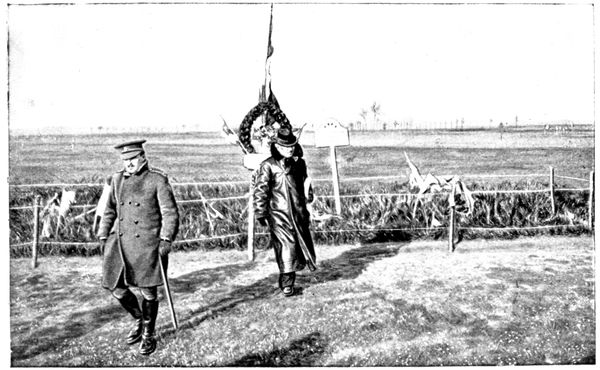
MR. ASQUITH
VISITING
THE
BATTLEFIELD
Behind the fountain stands Colonel Hankey, secretary of the Allies'
War Council; beside him is the French officer who directed and expounded
the visit; Mr. Asquith is in the middle; to the right his son-in-law, and on
the extreme right Mr. O'Brien, Sir Edward Grey's colleague.
On September 4 Barcy was the headquarters of a German division.
A few people, among them the brother of the Bishop of Meaux, had been
arrested near Varreddes, in Mgr. Marbeau's car, and taken before the general.
The latter, announcing that he meant to keep their car, told them to inform
the inhabitants of Meaux that on the morrow, at the same hour, his troops
would be before Paris. But on the morrow Maunoury's army had begun
its flank attack, and on the morning of the following day Barcy was carried
by the French troops arriving from Monthyon.
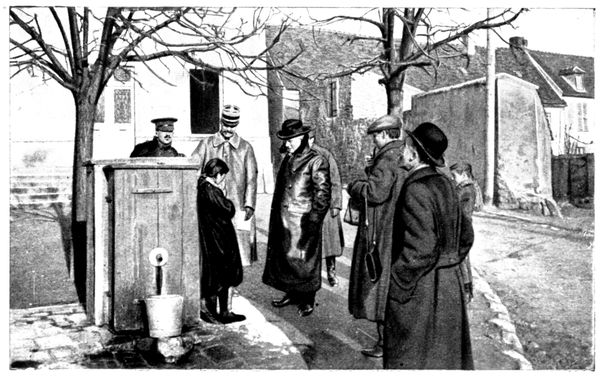
MR. ASQUITH
QUESTIONING
A LITTLE GIRL
[Pg 92]
Barcy served as starting point for the assaults on Chambry and on the
line of defence of Étrépilly-Varreddes; very often also as a place for
defensive withdrawals. The fighting was desperate; on September 6 the
246th had nearly twenty officers, including the colonel, out of action, whilst
the 289th found it necessary to attack three times during the day.
For three days the bombardment was terrific: the batteries of Étrépilly,
Varreddes, and Gué-à-Tresmes
rained shells on
the village and its approaches.
The church suffered
heavily, as shown by the
photographs on this page.
In the upper one is seen
the hole made by the heavy
projectile which brought
down the bell seen in the
foreground of the second
photograph. Many houses,
like those in the church
square, still bear traces of
the cannonade.
Others, less heavily
damaged, have been repaired.
Indeed, to look at
the farm sleeping in the
sunshine (see following
page), one would never
dream that it had lived
through such tragic days.
The new roofing of the
building on the left is all
there is to remind one that
it was not spared by the
shells.
[Pg 93]
Following the road by
which we arrived at the
church, we go towards Marcilly.
Before leaving Barcy,
we pass the cemetery
where lie buried many
officers and men who fell
in the neighbourhood of
the village.
The Germans entered
Marcilly on the evening
of September 4, and
abandoned it on the 6th,
fearing the outflanking
movement of the Seventh
Corps towards the north.
The village was the
centre of operations for the
56th (Reserve) Division. The photograph below shows General de Dartein's
temporary headquarters beside a haystack, not far from the village, whose
church can be seen in the background.
The tourist will have an opportunity of seeing in detail the objectives
of the division when passing through Champfleury, Poligny, and Étrépilly.
The struggle was very fierce and the bombardment incessant for three
days.
The road crosses Marcilly but we do not go beyond the church, which is a
very curious one, with its squat tower and rustic porch (see following page).
Beside it is the school where a light infantry sergeant, mortally wounded,
still found strength enough to write on the blackboard: "The 23rd battalion
Light Infantry, the 350th Infantry, and the 361st Infantry have beaten the
Prussians here. Vive la France!"
The few inhabitants who remained in the village also remember one of
the prisoners brought to the Pernet Farm, whose torn tunic gave glimpses
of a woman's chemise, trimmed with lace and little blue ribbons.
From the church square we turn back about 100 yards and take, on the left,
the road to Étrépilly.
At the end of the village is a GRAVE where foot-soldiers, light infantry and
artillerymen lie buried (see photograph overleaf).

GENERAL
DE DARTEIN'S
TEMPORARY
HEADQUARTERS
AT MARCILLY
[Pg 94]
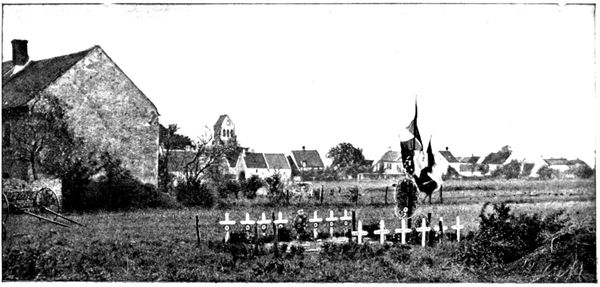
GRAVES
AT MARCILLY
(1917)
We soon arrive at the top of the
ridge which dominates Marcilly.
Turning round, the tourist will
have a wide view of Barcy, Monthyon,
and Penchard; passing to the
other side of the ridge he will see,
on the left, the prominent farms of
Champfleury and Nongloire.
The view below was taken during
the battles of September in a field on
the right of the road. We see a
whole section, which thought itself
in safety behind a haystack, destroyed
by the explosion of a shell.

SECTION
DECIMATED
BY A SHELL
[Pg 95]
FROM MARCILLY TO ÉTRÉPILLY
(45 km.)
via Puisieux, Nogeon, Acy, Étavigny, Betz, Acy, Vincy
Étrépilly is 4 km. from Marcilly by the direct route, but we take the
tourist round a loop of 45 km. before reaching Étrépilly, so that he may
visit the front of the French left wing.
Arriving at a beetroot factory we come to a fork in the road and take the left
branch. Around this factory desperate battles were fought between the
troops of the 56th (Reserve) Division (who, having taken Marcilly, were trying
to take Étrépilly) and the Germans, who defended this advance guard of
their main position foot by foot.
The road crosses the Thérouanne; 50 yards further on, at the cross-roads,
we take the road on the right which rises towards the Farm of Champfleury
(5 km.). From this front, extending from the factory to the Champfleury
farm, the 56th Division made many attacks on the strong line formed by
Étrépilly and the plateau which spreads out north of the village, being also
successful in shattering all the German counter-attacks.
Champfleury, very important by reason of its dominating position (as
shown in the above photograph), was vigorously defended, but after two
unsuccessful assaults it was finally carried by the French. There they
were subjected for two days to a violent bombardment from Étrépilly,
Vincy, and Trocy, which made all their attempts to debouch both difficult
and costly.
The farm buildings suffered badly and the rooms of the farm-house were
reduced to ruins by shell-fire.
The view below shows the façade; the officers seen in the photograph
belonged to the staff of the 56th Division which took the farm. The owners
had evacuated Champfleury at the beginning of September; when they
returned they found in the billiard-room (which was smashed to pieces) a
jeering inscription signed by a German officer, regretting that they (the
owners) had not
been there to take
part in the cannoning
performed on
their table.
To enter the farm
follow a little lane
on the right for
about 100 yards.
Very likely it is still
possible to see the
various seats hidden
in the trees in
the garden, which
were used by the
look-out men.
[Pg 96]
From Champfleury the road descends towards Puisieux. The view below
shows the situation of this village, in a fold of the ground. In the background,
at the summit of the plateau, is seen the farm of Nogeon, which will
be visited in the course of the excursion.
On the tourist's left, and outside the limits of the photograph, is a depression
beyond which, in a position similar to Champfleury (see panorama D,
pp. 106-107), appears the farm of Nongloire.
From the plateau on which stands this farm the French artillery hammered
Champfleury and the Étrépilly position.

PUISIEUX
SEEN FROM
CHAMPFLEURY
On the right, also outside the photograph, is the farm of Poligny,
towards which we go, turning to the right, in Puisieux, into the Rue de Poligny.
The view below was taken from the Poligny road in September, 1914. In it
are seen guns, cartridges, and machine-gun belts abandoned on the battlefield,
and a French drum, which latter doubtless sounded the charge when
the troops of the Seventh Corps, starting from Puisieux, and supported by
the 56th Division coming down from Champfleury, went to attack the farm.
The struggle was desperate, for Poligny, like Champfleury, was an advanced
position of the Vincy-Étrépilly line, and the Germans defended it to the
utmost. Before leaving they set it on fire.
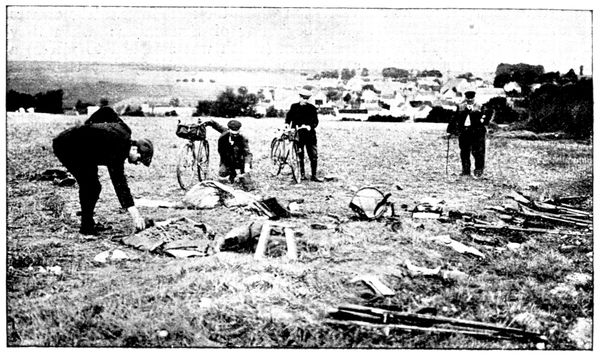
DÉBRIS OF THE
BATTLE IN
FRONT
OF PUISIEUX
[Pg 97]
The view below shows to what a lamentable condition this large farm was
reduced by bombardment and incendiarism.
Only a part of the courtyard can be seen here, but all the buildings belonging
to the farm, including the beetroot factory, are in the same state.
From Poligny the Germans fell back on their positions on the Étrépilly
Plateau, which is in the background of the photograph, and the farm became
a valuable point of support for the Seventh French Corps.
The German battery defending Poligny could not withdraw in its entirety,
the fire of the French 75's having destroyed at least one of the field-pieces, of
which a photograph is given below.
After this visit the tourist will return to the Puisieux Road (8½ km.) following
the road, he came by, and crossing the village by an S-shaped route, leave the
church on the right.
On the French front Puisieux formed the connecting point between the
right (group Lamaze) and the centre (Seventh Corps). It received many
shells from the batteries of 77's established on the Vincy-Étrépilly line and
from the heavy howitzers of the Trocy Plateau.

GERMAN
FIELD-PIECE
DESTROYED
NEAR POLIGNY
Having passed the church, the tourist arrives at a little square, with several[Pg 98]
roads opening into it. He takes the one on the right, which leads him to the
plateau that dominates Puisieux on the north. On the left can be seen
the distillery of Fosse-Martin; straight ahead is the Nogeon Farm with its
beetroot factory.
West of Fosse-Martin, in a room in the Castle of Brégy, the flag of the
72nd Thuringian regiment was found, abandoned.
The French artillery, installed between Fosse-Martin and Bovillancy,
maintained a terrific fight against the German batteries at Étavigny, Vincy,
and Trocy. Colonel Nivelle, future generalissimo, commanded the Fifth
Artillery Regiment which had just done great deeds in Alsace, and whose
daring and enthusiasm shone forth anew on the
plateau of Multien.
Nogeon Farm was one of the principal
centres of battle during the days of September 6
to 9. Taken by the French after a hand-to-hand
fight, it was subjected to several counter-attacks
which, supported by violent bombardments,
completely destroyed it. But labour
soon claims its rights, and the view above shows
the rebuilding in progress.
From Nogeon, and the trenches around it,
the troops of the Seventh Corps gained Acy and
attempted to reach Vincy. The progression
towards this last position, over open ground
swept by an intense cannonade, was particularly
difficult. Many actions took place at night.
It was during one of these, in a bayonet charge
on September 7, that the soldier Guillemard,
having transfixed with his bayonet the officer
standard-bearer, captured a flag belonging to
the 36th Magdebourg Fusiliers, decorated with
the Iron Cross in 1870. Guillemard received
the Military Medal from the hands of General
Gallieni.
The young fellow shook with emotion during
the ceremony, and the general said good-humouredly:
"Now then, embrace me and
imagine I'm a pretty girl."
[Pg 99]
From Nogeon
the road descends
to Acy-en-Multien
(14½ km.) of which
the slender steeple
can be seen.
We cross the Gergogne
and go through
the village, following
the High Street
up to the twelfth
and thirteenth century
church, which
is classed as an
historical monument.
This church
came practically
unscathed through
the struggle which
drenched the village with blood.
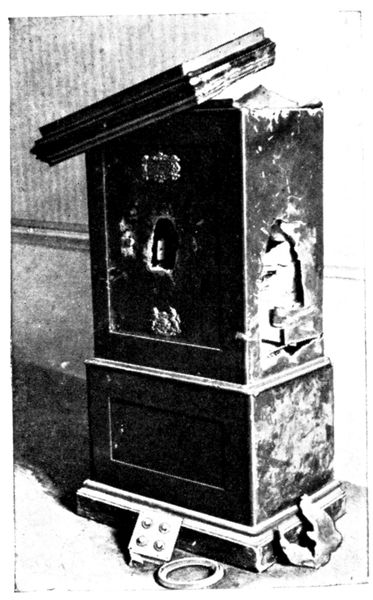
SAFE
DYNAMITED
BY THE
GERMANS
Acy's situation in the hollow of a valley
robbed its steeple of all value as an observatory;
it was therefore respected by the
artillery on both sides.
After glancing around the interior of the
old church, with its squat pillars, shown in
the above view, we go on along the High Street,
passing the town-hall.
Opposite is a photograph of the town-hall
safe, which was blown up by the Germans
during their occupation of the place.
A little further on is the cemetery, in front
of which is a big military grave.
Acy's churchyard was much too small
to hold all the heroes who fell on the territory
belonging to that parish.
In front of the cemetery, on the other side
of the road, stands the castle where the
Germans quartered themselves.
The view opposite gives but a slight idea
of the state in which it was found by its
owners.

ROOM
IN THE CASTLE
WHERE
THE GERMANS
SLEPT
The park was
placed in a state
of defence and the
Germans made a
tenacious resistance
there.
The tourist will
now take the road
in front of the cemetery
which skirts
the castle railings.
Then turning to the
left he will follow
the zig-zag road
which climbs the
Étavigny Plateau.
[Pg 100]
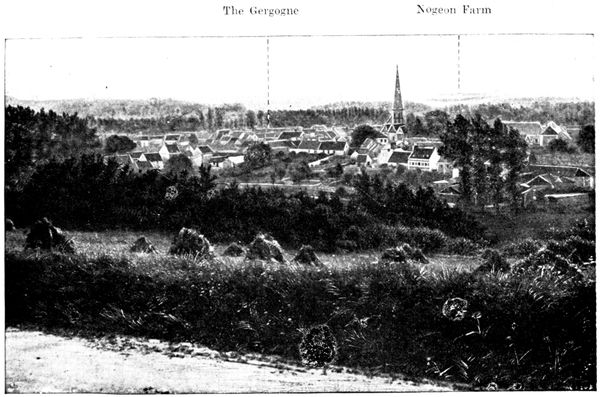
ACY
SEEN FROM THE
HEIGHTS OF
ÉTAVIGNY
The above panorama was taken from the last turn of the climbing path
and gives a good view of the valley in which Acy is built.
Here we can follow the course of the battle: the French held the Nogeon
Plateau, the Germans the valley and the heights where the tourist stands.
Troops belonging to the Seventh Corps descended on Acy from Nogeon and
came up in front of the village, others slipped along the Gergogne and made
a flank attack.
After furious fighting in the
streets, in the castle grounds and
in the little woods on the hillsides,
the Germans were flung back from
Acy to the heights of Étavigny.
They returned to the charge, and
in their turn drove the French back
to the Nogeon Plateau.
The village thus changed hands
several times, and this terrible beating
backwards and forwards caused
great losses on both sides.
Continuing his road to Étavigny,
the tourist will go over the position
that the Germans established on the
plateau.
The infantry and the machine-guns
were entrenched along the
road itself; the light and heavy
artillery were in the hollow on the
right. They showered shells on the
French positions at Nogeon, and in
return received the fire of the
batteries placed, as before mentioned,
between Fosse-Martin and
Bouillancy.
Arriving at Étavigny (18 km.)
our attention is at once drawn
to the church, which suffered terribly.
[Pg 101]
The part played in the
battle by the church of
Étavigny was very different
from the passive one
assigned to the church
of Acy. Its dominating
position afforded priceless
views of the French
lines to the observer installed
in its steeple. It
was therefore by shells
from the 75's that the
church was damaged (see
pp. 100 and 101).
Étavigny was taken and
retaken in the course of
the Battle of the Ourcq.
The struggle was hard,
the Germans making a
desperate resistance, as a
serious French advance in
this locality would have
meant the outflanking
of their whole line. They
succeeded in forcing the
troops of the Seventh
Corps off the plateau.
Taking the road to the right, beside the church, and continuing about 200 yards
we come to the cemetery, which is in a state of upheaval from the bombardment.
The photograph below was taken through one of the gaps.
The windmill pump, on the left of the view, was riddled with bullets.
From Étavigny the tourist can either return to Acy by the same road, or
follow the itinerary that we now give, which forms a loop around the northern
part of the battlefield. In the first case, the distance to Acy is 3½ km., in the
second 14 km.
Starting again from the church along the road which crosses the village,
continue straight on towards Boullare. Here keep turning to the left and take
the road to Betz. In the hollow on the left were placed the German batteries
which joined in action with those of Étavigny.

ÉTAVIGNY
CHURCH
SEEN FROM
THE CEMETERY
The road descends into a rather picturesque valley. Through it runs a small
river, the Grivelle, which we
must cross, then go through
Antilly, turning to the right
on entering, and to the left
at the fork in the road just
after leaving the village.
We arrive at Betz (26 km.).
Turn to the left near the
church.
Betz did not suffer
much from the guns, but
some of its houses were
burnt by the Germans,
notably the Hôtel du
Cheval Blanc (see p. 102),
which can still be recognised
by its signboard.
[Pg 102]
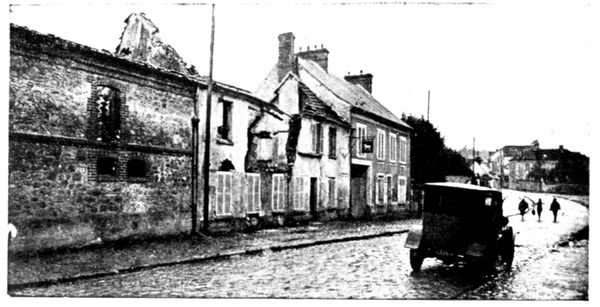
HÔTEL DU
CHEVAL BLANC
AFTER
THE FIRE
The castle was
occupied by a German
headquarters-staff,
who left it in
a deplorable state.
During the pursuit
the French
officers had to
abandon the idea
of lodging there:
one of them records
in his notebook:
"The German
officers have left disgusting traces of their passage; we see slices of melon,
bearing the marks of their teeth, in the wash-hand-basins, and enormous
heaps of empty and broken wine bottles."
The tourist will cross Betz by the main street, which is seen in the
above illustration, and at the further end of the village he will go straight
on under the railway, leaving the road to Nanteuil-le-Haudouin on the
right.
This last-named town has not been included in the itinerary, although
it played an important part in the ultimate manœuvre attempted by Von
Kluck—that of outflanking the French left wing. The paved road which
leads to it is bad, and the other roads by which one could rejoin the planned
route are extremely rough. Below we give a view of a corner of this battlefield.
It gives some idea of the great plain which extends from Betz to
Nanteuil, where the 7th and 61st French Divisions resisted with desperate
energy the furious attacks of the Fourth German Corps. The dead horses
seen in the photograph belonged to a French battery. The 75's, fully
exposed, supported the foot-soldiers in their efforts until they came almost
into actual contact with the enemy.
After passing under the railway the road rises to the plateau and soon
brings us near a commemorative monument, on the right (view on following
page).
Thence it passes through the Woods of Montrolles, where the 61st Division
particularly distinguished itself on the evening of September 8. Worn out
with fatigue, its reserve supplies exhausted two days before, it yet, by a
supreme effort, succeeded in driving back the Germans.
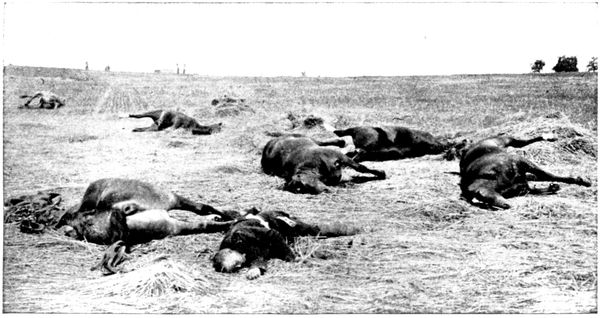
THE PLAIN
OF NANTEUIL-LE-HAUDOUIN
[Pg 103]
Having passed through
the Woods of Montrolles,
we soon come to a fork.
Here take the road on the
left.
To the right are the
Heights of Bouillancy,
where the French artillery
was placed; on the
left the Plateau of Étavigny
on which were the
German batteries.
A hollow, where runs
a river, separates the
two positions, between
which the artillery duel
was intense, preparing
and accompanying infantry
assaults which
succeeded one another from September 6 to 9, with alternate advances and
retirements.
The road then returns to Acy, skirting the wall of the Castle park. We again
pass the church and, on leaving the village, cross the Gergogne. Immediately
after the bridge turn to the left towards Vincy (35½ km.). The photograph
below shows that this village also suffered from incendiarism and
bombardment.
After passing through Vincy, bear to the left in order to pass in front of the
Manœuvre distillery, leaving the hamlet of that name on the left. Étrépilly
(41 km.) will be reached by the middle road of the crossways, which are about
1 km. further on past the distillery.
This Vincy-Étrépilly line formed part of the defensive front established
by the Germans west of the Ourcq, marked out further north by the localities
of Betz, Étavigny, and Acy, which have just been visited, and more to the
south, by the position seen on panorama B (pp. 90-91). The Germans had
made trenches and machine-gun shelters over the whole plateau, which
stretches on the right of the road towards the farms of Poligny and Champfleury.
On the right slope of the road one can still see the dug-outs where
the snipers sheltered themselves.
The position was attacked from September 6 to 9 by the 63rd Division
of the Seventh Corps and the 56th of the Lamaze Group which carried the
advance positions constituted by the farms of Nogeon, Poligny, and Champfleury.
They were stopped, however, on the line itself until the general
withdrawal of the German troops.
[Pg 104]
To reach the spot where the view below was taken, follow the track which branches off the road from Vincy to Étrépilly, between the memorial and the burnt hangar. This is the road
we see across the middle of the panorama. The tourist finds himself at the southern extremity of the Vincy-Étrépilly position, on the site of a German battery which was severely
treated by the French 75's.

C. PANORAMA OF TROCY, ÉTRÉPILLY, LA THÉROUANNE.
- Road from Vincy to Étrépilly
- Trocy
- Memorial
- Burnt Shed
- Church of Étrépilly
- Valley of the Thérouanne
- Heights of Penchard
In the background is seen the Trocy Plateau, separated from the road by a hollow, in which flows a tributary of the Thérouanne. On the Trocy Plateau, where this itinerary
will in due course lead the reader, the Germans had established their powerful artillery, composed of heavy and light batteries, which swept the whole battlefield from Nogeon
Farm to Barcy, taking in Puisieux and Marcilly. Beyond the valley of the Thérouanne, south of Étrépilly, stretches the position of which the details appear in panorama B (pp. 90-91).
The view extends to the wooded Heights of Penchard, which are outlined against the horizon.
[Pg 105]
On the brow of the hill where stands the observer, fierce battles were
fought at the time of the attacks on Étrépilly. The 350th Infantry did
once, on the morning of the 7th, make their way into the village, following
the valley of the Thérouanne, but violent counter-attacks forced them back.
They returned to the charge at night and climbed from the river's edge
to the plateau. They were greeted by the fire of a machine-gun section
upon which two companies flung themselves with fixed bayonets. Two
field-pieces were taken. The French troops maintained their position
until ten o'clock in the evening, but finally, as the German reinforcements
poured in, were obliged to descend the slope and cross back to the right
bank of the Thérouanne.
Returning to the Étrépilly road we pass in front of the memorial raised
by the engineers in front of the cemetery, at the place where the battles
of Étrépilly reached their climax. A military grave has been made behind
the memorial.
The Germans had entrenched themselves in the cemetery, where they
succeeded in checking the night attack of the Zouaves on September 7.
The Second Regiment,
coming from
Barcy, reached
the village and
carried it at
the point of the
bayonet.
Without stopping,
the Zouaves
began to climb
the height at the
foot of which Étavigny
is built.
Their rush carried them as far as the cemetery, and here, met by a terrific
fire from the machine-guns, they tried to keep the position, but German
reinforcements having come up, they were forced to abandon the plateau,
evacuate the village, and return to their trenches at Barcy. Lieutenant-Colonel
Dubujadoux, commanding the regiment, was killed; three-fourths of
the officers and half the effective force fell in the course of this heroic
charge.
In front of the memorial the twisted metal framework of a burnt shed is
to be seen. According to certain accounts, the Germans, before evacuating
the position on September 9, used this shed to burn the bodies of those of
their soldiers who fell in the battles of Étrépilly. Some of the inhabitants
say that to these were added the badly wounded, whose hurts were such that
they could not be removed.
We believe, as a matter of fact, that a large pyre of corpses was set alight
here by the Germans, who generally burn their dead when they cannot carry
them away. But the hangar was destroyed by the French artillery which fired
repeatedly on that
side of the plateau
at the battery of
77's installed there,
at the cemetery,
and at the German
trenches.
In the cemetery
lie the heroes who
were killed in attempting
to regain it.
From the cemetery
the road descends
towards Étrépilly.
[Pg 106]
Turn to the right at the foot of the slope into Étrépilly and on leaving the village take the road on the left; cross the river, turn again to the left and follow the track which climbs the
plateau. After a few hundred yards the right slope disappears. It was at this point that panorama D was taken, showing, from the German side, the same battlefield seen from the
French side in panorama B (pp. 90-91).

D. PANORAMA OF THE BATTLEFIELD OF THE FRENCH RIGHT
- Heights of Penchard
- Montheon
- Barcy
- Heights of Cuisy
- Factory at Marcilly
- Road from Marcilly to Étrépilly
- Farm of Nongloire
- Farm of Champfleury
The road on which the tourist now stands goes on to the heights of Varreddes. Bordered with trenches and machine guns, it constituted the principal line of the German defence south
of Étrépilly, the advance lines resting thus: the first on Penchard—Monthyon—Heights of Cuisy; the second on Chambry—Barcy—Marcilly. In this theatre of operations fought,
south of the Marcilly-en-Étrépilly road, the 55th (Reserve) Division, the 45th Division and the Moroccan Brigade; at Marcilly and on the plateau north of Étrépilly, which is
outlined on the extreme right of the panorama and crowned by the Champfleury Farm the 56th (Reserve) Division.
[Pg 107]
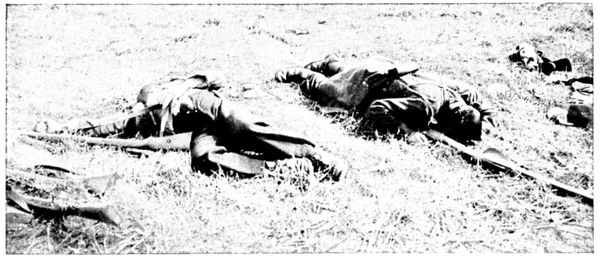
A CORNER
OF THE
BATTLEFIELD
Leaving the trenches hastily dug on the Chambry—Barcy—factory of
Marcilly line, the troops of the Lamaze group, before getting up to the
German trenches, had to cross two kilometres of uncovered ground, under
terrible fire. It was in one of these attacks, starting from Barcy, that Major
d'Urbal (brother of the general) fell at the head of his Zouaves as, waving
his cane, he drew them along. He was brought back to the French lines,
thanks to the devotion of one of the few officers who survived the attack,
helped by two Chasseurs d'Afrique. Because of his great height the commander's
body could not be carried back, and they were obliged to place it
on a horse. The group returned thus to Barcy under a hailstorm of bullets,
where a shell-hole in the cemetery served for a grave.

A CORNER
OF THE
BATTLEFIELD
In the counter-attacks, the Germans as they left their trenches also
suffered serious losses, as one can judge from the preceding photograph,
which was taken in front of the position.
The tourist will return to Étrépilly by the road he came, leaving the church
(the roof of which was hit by several shells) on the right, and taking the Trocy
Road on the left.
[Pg 108]
ÉTRÉPILLY TO MEAUX
(19 km.)
via Trocy, Gué-à-Tresmes, Varreddes.
The beautiful shady road that leads from, Étrépilly to Trocy first crosses
a hollow, then winds up the hillside to the plateau on which Trocy is built
(3 km.). On arriving,
turn to the left and so
enter the heart of the
village.
Trocy did not actually
suffer from the German
attacks, but it was bombarded
by the French
artillery. In front of
the horse-pond, on the
left of the little church,
stands a farm (view opposite)
which in 1917 still
showed traces of the "75"
shell which damaged its
roof. Other houses were
completely destroyed.
The Germans had concentrated
their chief
artillery forces on the
Trocy Plateau. Heavy and light batteries were in position north and south
of the village, the greater part being north, between Manœuvre, Plessy-Placy,
and Trocy.
The intense cannonade poured from this dominating platform very much
hampered the progress of the French centre.
The position was evacuated by the Germans on the 9th, not without
serious losses of light artillery, as shown by the photograph below and that
at the top of the following page.
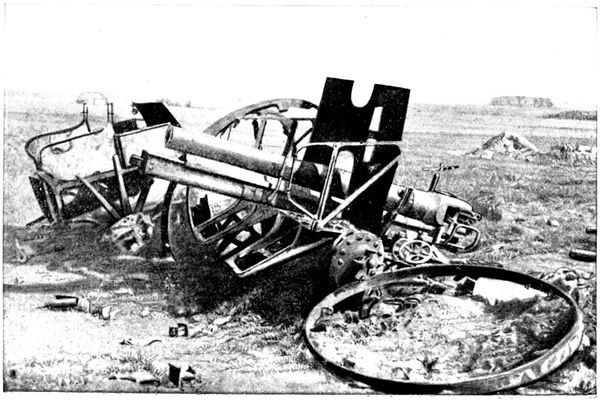
GERMAN GUN
DESTROYED
ON
TROCY
PLATEAU
[Pg 109]
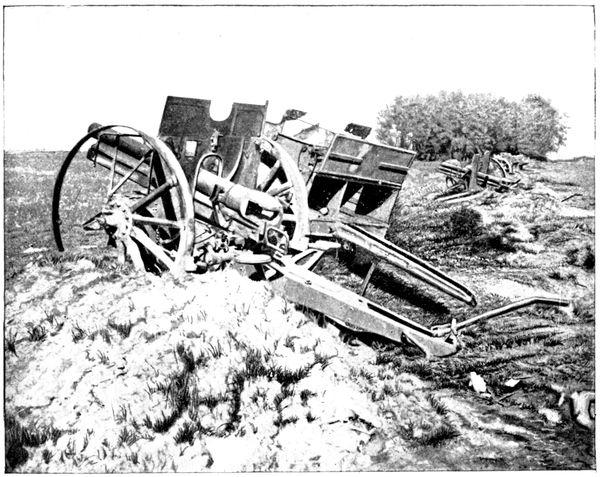
GERMAN GUNS
DESTROYED
ON
TROCY
PLATEAU
The limber (shown below), abandoned at the side of the road, is an infantry
limber which contained rifle and machine-gun cartridges.
The French artillery which swept the plateau hit it in the course of the
retreat.
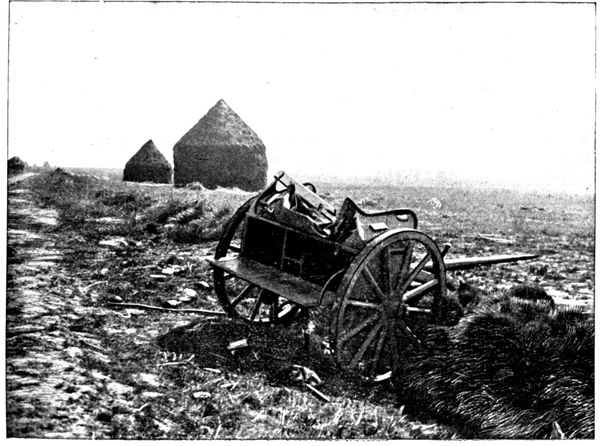
GERMAN
LIMBER
ON
TROCY
PLATEAU
[Pg 110]
Rounding the horse-pond, we take the road which runs under the monumental
gateway, a view of which is given above.
This gate is one of the chief remains of the fortifications which guarded
Trocy in the Middle Ages.
It will be seen that the strategic importance of the position has at all
times been appreciated at its full value.
Having passed through the gate, we take, 100 yards further on to the left,
the road that dips into a hollow, on the opposite slope of which stands out the
fine farm of Beauvoir.
We reach this farm by a zig-zag ascent which comes out on the Route Nationale
(N. 36). We then turn to the right and go down towards Gué-à-Tresmes.
This little place played the part, in relation to the extreme German left,
that Trocy played in the centre. It was a heavy artillery position supporting
the advanced line of defence.
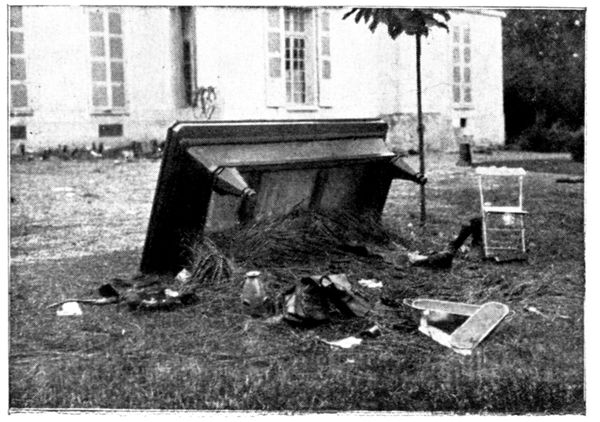
THE
BILLIARD-TABLE
OF
THE CHÂTEAU
At the entrance to the village, on the left side of the road, is a large
residence surrounded by a park. It was occupied by the Germans and converted
into a field hospital. In order to make room rapidly, the furniture was
flung outside. It was thus
that the billiard-table was
found in the park. A soldier
who was evidently a lover
of fresh air used it as a
shelter. On the opposite
photograph can be seen a
fish-kettle which did duty
as a basin: frequent washing
being indispensable
during those hot September
days.
The façade shown in the
view is the one which faces
the road.
[Pg 111]
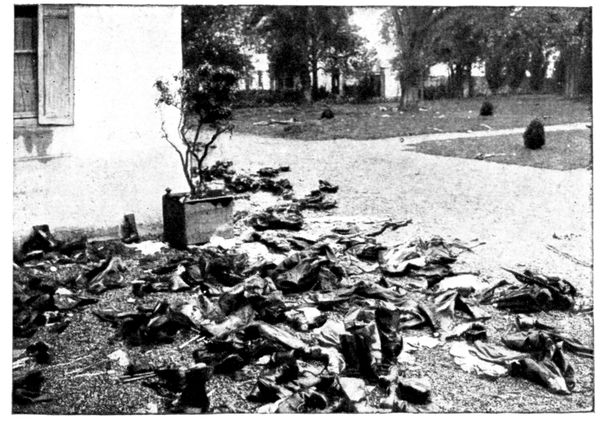
PERSONAL
BELONGINGS
LEFT AT
GUÉ-À-TRESMES
BY THE
GERMANS
A certain number
of German
wounded died in
the hospital and
were buried in the
garden; their belongings
were left
behind at the time
of the retreat, as
shown in the opposite
photograph.
This retreat
must have taken
the occupants unawares,
for a meal
was on the officers'
table when the
French troops entered
the château.
At the cross-roads, about 300 yards beyond the château, go to the left along
the Thérouanne. 200 yards further along this road is seen (on the right) the
place where a group of German artillery was hidden. Well-screened in the
hollow shown in the view below, several heavy batteries, for a long time out
of reach of the 75's, made extremely difficult the advance of the French
right on the Plateau of Chambry-Barcy. They also hampered the left, of
the British army and the 8th French Division on the left bank of the Marne.
In the course of this tour, we have already seen several examples of the
German battery positions. Wherever the ground allowed of it, the guns
were placed in a hollow, visible only to aerial observers. Telephones linked
them up with the posts established on the ridges whence the firing was
directed.
Returning to the Route Nationale, turn to the left towards Varreddes. On
both sides of the road, which was their main way of retreat, the Germans
had made lines of defence: trenches were dug and furnished with machine-guns,
and light batteries were established as supports.
The whole, which joined up with the defence works of Trocy, constituted
a position of withdrawal for the Étrépilly-Varreddes line, seen
in panorama B (pp. 90-91). This was the first stage of the retreat on
September 9.

HOLLOW
WHERE
THE GERMAN
ARTILLERY
WAS PLACED.
[Pg 112]
This panorama was taken at the intersection of the Meaux-Soissons road (N 36) and a track which leads to Étrépilly, in the field bordering the road and where German
machine-guns were established in order to sweep with their fire the Route Nationale and the bottom of the hollow.

E. PANORAMA OF THE VARREDDES HOLLOW
- Varreddes
- Road from Meaux to Soissons
- The Ourcq Canal
- Road to Étrépilly
It is easy to understand why the Germans attached so much importance to the Varreddes position.
The slopes west of the hollow (they form the background on the left of the panorama) were protected from the blows of the French artillery, and by availing themselves of this
protection the Germans could easily bring up supplies or relieve the defenders on the crests, facing Chambry-Barcy. This ensured their resistance until the moment when
the general trend of the action forced them to fall back.
[Pg 113]
After having examined panorama E, continue the descent towards Varreddes
(12 km.). Before crossing the canal one can see, on the right, a '75'
shell which has remained fixed in the wall of an inn, of which the sign has
now become: "A l'obus."
We now enter the High Street of Varreddes.
At the entrance of the village is a certain number of houses that were
damaged by the bombardment.
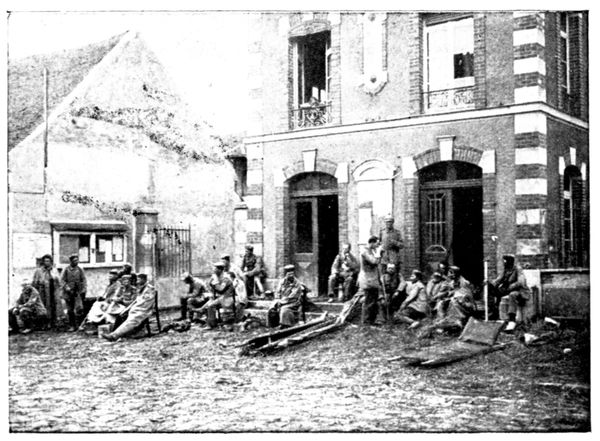
GERMAN
WOUNDED
IN FRONT
OF VARREDDES
TOWN-HALL
The German wounded, forsaken during the hasty retreat of September 9,
were sheltered and
nursed at the town-hall.
They are
seen in the opposite
view. When leaving
the village the Germans
took twenty
hostages with them,
all very old, among
them being the vicar.
Three succeeded in
escaping, but, for
the others, the retreat
proved (as
will be seen) a veritable
torture. Seven
of them were murdered.
On the first day they were forced to march seventeen miles. M. Jourdain,
aged 77, and M. Milliardet, aged 78, taken away with only slippers on their
feet, were the first to fail from exhaustion: they were shot point-blank. Soon
after, M. Vapaillé suffered the same fate.
The next day M. Terré, an invalid, fell, and was killed with revolver-shots;
M. Croix and M. Llévin stumbled in their turn and were also shot.

TREE
PIERCED
BY A 75
SHELL
All three were from 58
to 64 years of age. Finally,
M. Mesnil, aged 67, utterly
exhausted, gave in: his skull
was smashed in with blows
from the butt end of a
rifle.
The other hostages, better
able to endure, held on as
far as Chauny and were
sent to Germany by rail.
They were repatriated five
months later.
After having traversed
Varreddes and before re-crossing
the canal, a tree will
be noticed on the left of the
road (the 38th on the way
out) which has been pierced
by a '75' shell as if by a
punching-press.
[Pg 114]

F. PANORAMA OF THE VARREDDES HOLLOW
- Varreddes
- Road from Meaux to Soissons
- The Ourcq Canal
- Road to Étrépilly
40 yards beyond the canal, on the right, are seen several tracks which scale the
heights. We climb the one on the right up to the summit, where the above
panorama was taken. This gives a view of the Varreddes hollow in the
opposite direction to that of panorama E (pp. 112-113).
Germigny, seen on the right of the photograph, is known through having
been Bossuet's summer residence. The Germans had a heavy battery there,
which bombarded Meaux in the early days of September. On the 8th they
re-crossed the Marne, blowing up the bridge behind them.
The appearance of a French reconnoitring party composed of a sergeant-major
and nine men had sufficed to cause the evacuation of the position,
which, with the river behind it, seemed a dangerous one. These ten heroes
were killed in the course of the battle and buried at Germigny. On the
9th, the Marne was crossed on a pontoon bridge built by British engineers,
under fire, whose heroic tenacity triumphed after seventeen fruitless
attempts.
The Germans, attacked besides on the heights where the tourist now
stands, were obliged to retire rapidly from the hollow by the Soissons Road,
under fire from the French batteries.
On the crest of the hill a track crosses the ascending one, near two isolated
walnut-trees. On the right this road goes to Étrépilly; it constituted the
German line of defence which is the subject of panorama B (pp. 90-91).
The tourist will go to the left between the two walnut-trees and explore
the crest which formed the redoubtable position occupying the background
of the view on p. 89. It was well provided with trenches,
machine-guns and light batteries, and all attacks against it failed, until
September 9.
Turning again to the left 1 km. further on, at the first fork in the road, the
reader will follow a little path which brings him back to the Route Nationale
at the point where he left it. The walk takes about 30 minutes. The two paths,
by which the ascent and descent have been made, served the Germans as
channels for bringing up supplies. Their rearguard, which disputed the
ground foot by foot, was routed there by a bayonet attack.
We now return towards Meaux. The retreating Germans followed this
road, but in a contrary direction and pursued by the French shells.
At the highest point, on the right, is seen the trunk of a tree decapitated
by artillery fire, at the top of which the workmen of the entrenched camp
of Paris have fixed a branch to form a cross: humble and touching tribute
to the brave men killed in going up to the attack.
Before arriving at Meaux we have a beautiful view of the town. We pass
under the railway; then, on the right, take the N. 3 or Rue du Faubourg-Saint-Nicolas,
which brings us back to the Cathedral (19 km.)[Pg 115].
II
THE MARSHES OF SAINT-GOND
COULOMMIERS-PROVINS-SEZANNE
[Pg 116]
FROM MEAUX TO COULOMMIERS
(44 km.)
(See map opposite)
FROM MEAUX TO CRÉCY-EN-BRIE
Leaving Meaux Cathedral by the Rue Saint-Étienne, which skirts it and
is continued by the Rue Saint-Nicolas, turn to the right 100 yards beyond the apse
of the cathedral into the Rue du Grand-Cerf in order to gain the "Pont du
Marché." After crossing it, keep straight on along the Rue du Marché, leaving
on the right the market where the famous Brie cheeses are sold wholesale. Take
the Rue Cornillon and the Rue du Faubourg-Cornillon, and at the top of the slope,
look back in order to have a general view of Meaux, dominated by its cathedral.
On leaving the town continue straight along N. 36 to Couilly (9 km.) where
we reach the valley of the Grand-Morin.
(The quickest road from Couilly to Crécy-en-Brie is N. 34, which turns
to the left into the paved street of Couilly before arriving at the bridge, but
the prettiest road is that indicated to the tourist, on the opposite bank of
the Morin.)
Make for Saint-Germain, traversing the bridge and the level-crossing, and
turn to the left immediately beyond the railway into the Rue de la Gare. Turn
to the left again into the Rue de Villiers, which is bordered by telegraph poles.
The road follows the railway which is on the left.
On the other side of the valley are to be seen the red-tiled roofs of the
modern buildings of the "Home" for actors, built on the site of the old
Abbey of Pont-aux-Dames. This abbey, which was founded in the thirteenth
century, was destroyed during the Revolution. Louis XIV. sent the
abbess of Port-Royal-des-Champs to end her days there, after the destruction
of the famous abbey of the Jansenists. Mme. du Barry, favourite of
Louis XV., after an eventful life, became acquainted with the calm and
self-denial of Pont-aux-Dames, when the king was no more.

The "Home" was founded in 1903 by the comedian Coquelin aîné, who
died there in 1909 while on one of his visits to it. He is buried in the grounds,
where is also his statue. Pont-aux-Dames has room for eighty inmates. There
is also an open-air theatre used for performances. It is open to visitors on
Thursdays and Sundays from 2 p.m. to 5 p.m. (one franc each). The entrance
is 1,200 yards from Couilly bridge on N. 34 which follows the right bank of
the river.
[Pg 117]
The road draws nearer to the Morin, and the railway changes over to the
right bank. One hundred yards beyond "La Picardie" (little rustic inn) we arrive
at Villiers-sur-Morin and turn sharply to the left at the first street.
At this crossing, standing against the house on the right, is a pyramidical
monument to the memory of the painter Amédée Servin, who died in 1884.
His medallion was engraved by Falguière. It was Servin, together with
the native poet Jules Grenier, who introduced the Valley of the Morin to
the public. A little school of artists was formed there, which recalled that
of Barbizon in the Forest of Fontainebleau, or that on the banks of the Yvette.
The part known by the name of the "Morin des Peintres" (the artists' Morin)
stretches from Couilly to Tigeaux (south of Crécy); many artists visit there
each year.
Traverse the bridge over the Morin and the level-crossing. Immediately afterwards
turn to the right (14½ km.) into N. 34 towards Crécy-en-Brie.
The Grand Morin was crossed on September 6, 1914, at the beginning of
the battle of the Marne by the British troops, who utilised the several bridges
between Villiers-sur-Morin and Coulommiers. The Germans offered but
a feeble resistance; their forces at this point consisting merely of a screen
of cavalry supported by a few artillery and infantry units. Their task was
to cover the retreat northwards of the two army corps recalled by Von
Kluck to resist the flank attack of the Army of Paris, to the north-west
of Meaux.
Shortly before arriving at Crécy, the road traverses, by means of a level-crossing,
the little railway line already met with several times since Couilly and which
has its terminus at Crécy.
CRÉCY-EN-BRIE
The entrance to the burgh (16½ km.) is marked by a little brick belfry
surmounting a tower which belongs to the ancient fortifications. That
part of the Morin which flows at its foot forms the boundary of the town,
and also served as moat to the ramparts erected in the Middle Ages. Of these
important defences only a few scattered towers remain of the original
fifty-five.
From the bridge we have, on the right, a picturesque view of the[Pg 118]
tanneries shown in the
photograph opposite.
The tourist would be
advised not to cross the
bridge, but to follow on
the left the pretty avenue,
planted with trees, which
encircles Crécy on the
outside.

FOOT-BRIDGE
OVER AN ARM
OF THE MORIN
This avenue, however,
is not accessible to motors.
The latter may take the
Rue du Marché, the Rue
Serret, and on the left
of the Place Camus, the
Rue Barrois and its continuation,
the Rue Jean-de-Compans.
At the bridge
over the Morin, at the
extremity of the town (view
opposite), the motor may
await the tourists, who will
rejoin it by the pretty
shady walk beside the Morin
shown in the photograph
above.
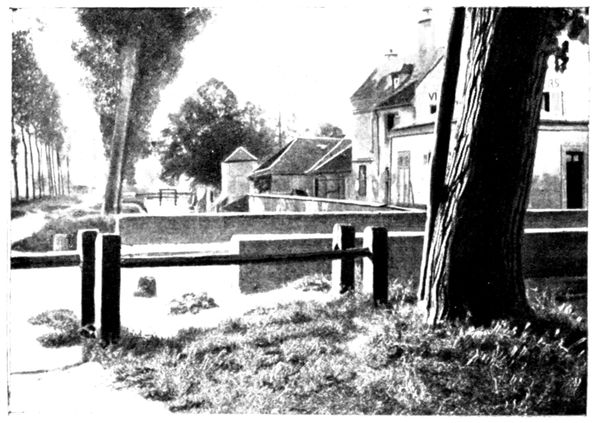
BRIDGE OVER
AN ARM OF
THE MORIN
Each one of the houses
bordering the river has
communication with the
boulevard by means of
a foot-bridge, some of
which are also draw-bridges. The little wash-houses fitted up in the lower
storeys of the houses add to the picturesqueness of this rustic corner.
[Pg 119]
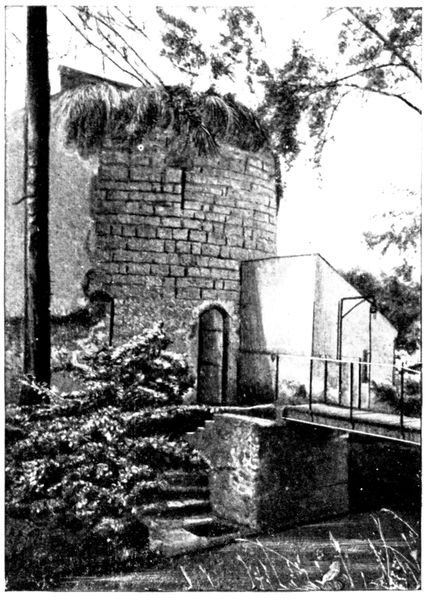
TOWER
BELONGING
TO THE
OLD WALL
The ramparts, which in former
times were reflected in the
Morin, have almost disappeared;
the opposite view depicts a
remaining vestige: and during
the walk others will be noticed.
Having returned to the car and
if it is intended to visit the beautiful
church of La Chapelle-sur-Crécy
(see pp. 120-121), cross
the bridge over the Morin and
follow the Route Nationale (N. 34)
for about 1 km.
(This is also the road to take
if, instead of following the tour by
the valley of the Grand Morin
described hereafter, tourists prefer
to go straight on to Coulommiers,
14 km. from Crécy.
The tour is much prettier, but
11 km. longer.)
After visiting La Chapelle-sur-Crécy
return to Crécy by the
same road, cross the bridge over
the Morin, follow the Rues Jean-de-Compans
and Barrois and
come to a halt at the Place Camus. Take a few steps towards the church in
the Rue de Penthièvre and glance at the arm of the Morin which crosses the
street. On the right is an old mill; on the left the charming scene reproduced
below; in front is the tower of the church, and its most interesting
part.
Returning to the car, take the Rue Dam-Gilles, immediately to the left of the
Rue de Penthièvre.
Cross the Morin (19½ km.), then at the fork in the road 50 yards beyond the
bridge turn to the left into G. C. 20 towards Tigeaux and Dammartin.
[Pg 120]
La Chapelle-sur-Crécy

THE CHURCH
SEEN FROM
THE ROAD
This beautiful
church, classed as
an historical
monument, dates
from the thirteenth
century and was
restored in the fifteenth
thanks to
the generosity of
Jeanne de Navarre,
wife of Philippe
de Bel.
Its situation, on
a lower level than
the Route Nationale,
has necessitated
the raising
of the ground.
At the present
time, the height of the building is diminished by about ten feet, a fact
which destroys the balance of its proportions.
This impression strikes us at once on entering, for the door is almost
reduced to its ogival part. In the interior, as the view below shows, there
is a flagrant disproportion between the height of the pillars and that of the
arcades.
The triforium encircling the nave and choir is worthy of notice. The
capitals of the pillars are finely carved; and the grimacing heads, which
terminate the vaulting shafts of the choir supporting the ribs of the vault,
show spirited workmanship. Before the window, at the end of the church
and on the right on entering, is a group in painted stone dating from the
Renaissance. It is reproduced in the photograph on p. 121.
[Pg 121]
FROM CRÉCY-EN-BRIE TO COULOMMIERS
VIA THE VALLEY OF THE GRAND MORIN
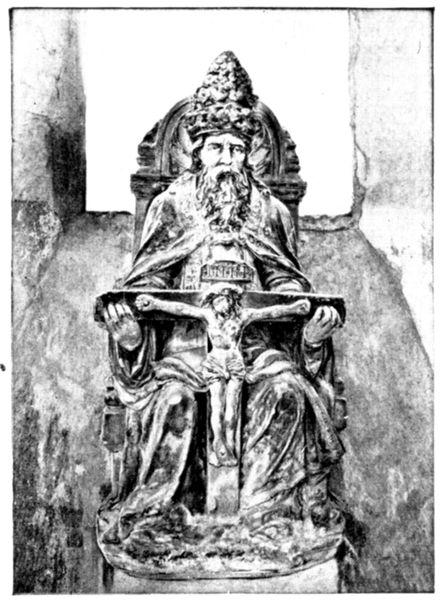
GROUP
REPRESENTING
THE TRINITY
Turning to the left on leaving Crécy
into G. C. 20, beyond the bridge over the
Morin, a mill is to be seen on an island
in the middle of the river. Then, on the
other bank, standing out boldly against
the sky line, is the church of La Chapelle-sur-Crécy.
Leaving the houses behind,
telegraph posts begin to mark the road,
and on following them we soon reach
Tigeaux (24 km.), through which we pass
to arrive at Dammartin. Enter the latter
and turn to the left beyond the cemetery.
Go up towards the church (26½ km.), but
skirt it and leave to on the left hand.
Take the first road to the left beyond the
church, and follow the wall of the castle
park. A little before the end of the wall,
take on the right the "Chemin Vicinal" to
Guérard, which dominates the Valley of
the Morin. This road rejoins the railway,
and fringes it, leaving it on the right.
A pretty descent through woods leads down to the valley. When the road begins
to mount, before arriving at Guérard, take the road which goes up on the right
(31 km.), but without entering the village. 800 yards further on, at the cross roads,
turn to the left towards La Celle, through which we pass (32 km.).
We leave on the left, in La Celle, the road which crosses the Morin, and
which, after following the right bank, rejoins, by way of Tresmes and near
Pommeuse (6 km. further on), D 16 coming from Faremoutiers. We advise
tourists to take the latter (D. 16) in order to give more variety to the tour
by climbing the height above the river.
After passing through the lower part of La Celle, the road begins to mount,
traverses a level-crossing, and then by a series of zig-zags reaches the height on
which the other part of the village of La Celle is built. Turn to the left in the
Grand'rue (D. 16) towards Faremoutiers, whose church, surmounted by a
tiny steeple, may be perceived in the distance. On arriving at the Place du
Marché at Faremoutiers, turn to the left into the Rue de Moutiers, then to the
right into the Avenue de Garenne, which runs between the church and the
town-hall, and descend into the valley.
Faremoutiers was the "moûtiers" (monastery) of Sainte-Fare, who
founded a convent there in the sixth century. Among its abbesses was a
daughter of Charlemagne. The nuns, who were much talked of, belonged
to the Order of St. Benedict. They had also many disputes with the bishops
of Meaux. The monastic building was destroyed during the Revolution.
Still following D. 16, traverse a rather dangerous level-crossing, after which
turn to the right towards Pommeuse. At the cross roads preceding the village,
turn to the left, thus leaving the church on the right. Cross the Grand-Morin, and
50 yards farther on, turn to the right (38 km.). It is here that we once again meet
the road which we crossed at La Celle, and which follows the right bank of the
Morin.
At Pommeuse, during the short German occupation at the beginning of
September, 1914, the inhabitants were obliged to erect a barricade which
was destined to bar the passage of the Morin against the British. One of
the workers not displaying sufficient ardour was tied to a cart-wheel.
D. 16 leaving Mouroux on the right joins N. 34 coming from Crécy; turn
to the right towards Coulommiers (44 km.).[Pg 122]
[Pg 123]
COULOMMIERS
ORIGIN AND PRINCIPAL HISTORICAL FACTS

LODGE OF
THE GUARDIAN
OF THE CASTLE
The following is a poetical
version of the origin of
Coulommiers. When Julius
Cæsar arrived in the region,
a tower dominating a few
huts stood on the site of
the present town. A large
number of doves had made
their nests in this tower,
and flew around it, a fact
which caused the spot to
be known as Castrum
Columbarium, from which
is derived Coulommiers
(the inhabitants are called
Columériens).
Coulommiers developed greatly under the Counts of Champagne. The
tower was surrounded by ramparts, and protected by a moat fed by the
waters of the Grand Morin. These fortifications have disappeared, only
a few fragments, situated in the Avenue Victor-Hugo, remaining. Coulommiers
was occupied by the English in the fifteenth century, by the Russians in 1814,
and by the Germans in 1870.
On September 4, 1914, the retreating British army abandoned Coulommiers,
from which the greater part of the population had fled, barely 600
inhabitants remaining in the town. The Germans entered on the 5th
and remained until the morning of the 7th. During this short stay they
pillaged methodically, and it was owing only to the energy of the mayor,
M. Delsol, 77 years of age, and of the "Procureur de la République,"
M. Chatry, whose adventures are related below, that Coulommiers did not
experience the horrors of Senlis.
VISIT TO THE TOWN
Enter Coulommiers by the Rue de Paris, which crosses the Rue de Melun
opposite the Hôtel de l'Ours. Cross this street in order to follow the Rue des
Capucins, which forms the continuation of the Rue de Paris.
We arrive before a gateway, on the right, opening into the picturesque grounds
of the old castle. Enter by the gateway on the left of the principal building. A
German Staff established itself here during the occupation of September, 1914.
Of the eighteenth century castle, built by the Duchess of Longueville,
only the large moat and a few quaint ruins remain.
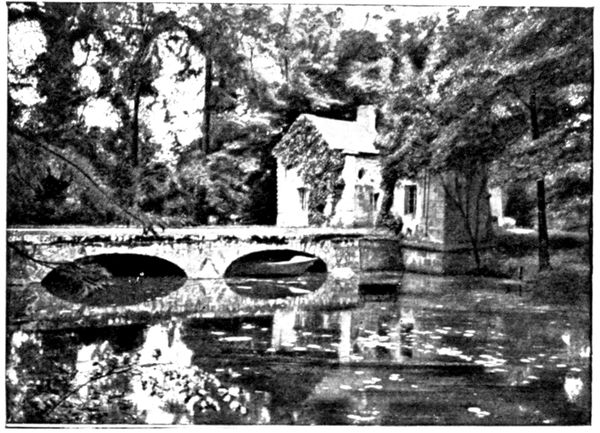
BRIDGE
OVER THE
CASTLE MOAT
We cross the moat by
the bridge shown in the
photograph opposite, and
pass in between two little
lodges, on which some curious
carving is still to be seen
(view above). Enter the
inner courtyard of the castle,
now transformed into a
garden. On the right and
on the left a few ruins are
to be seen. The view on
p. 124 is of those on the
left. After having re-crossed
the bridge turn to the
left in order to take a[Pg 124]
glance at the ancient chapel
of the Capucins dating
from the seventeenth century.
At the far end is a rood-loft
whose rich wood
carvings contrast with the
dismantled walls of the
chapel.
Leaving the grounds,
take the Rue des Capucins
again, and on arriving at
the Hôtel de l'Ours (where
the Germans held orgies as
well as at the Hôtel du
Soleil Levant, a little lower
down, in the Rue de la Pêcherie,) turn to the right into the Rue de Melun.
We arrive at the bridge from which the photograph below was taken.
The building on the left, of which only a corner is to be seen, is the town-hall.
Further to the right, in the background and half-hidden by the trees,
is a large house, which lodged a German staff during the occupation. Behind
the trees is the theatre.
A little beyond the bridge is a green painted house, 7. Rue de la Pêcherie,
where M. Chatry, Procureur de la République, was held prisoner. The
latter, in his account before the Enquiry Commission, recalled the incidents
of his arrest and of his imprisonment.
"In the evening I was at the town-hall, when a rough-looking Staff
Officer came up to me in the secretary's office, saying: 'Take your casque
(the magistrate's "toque") and follow me,' continuing: 'You said you did
not know where to find any oats; we have just found some, so you lied; you
are a liar and a swine. Come with me and see.' I accompanied him to the
granary of the town-mill, which had been broken into and pillaged by the
Germans. I remarked that after all there were oats there, and I became again
the object of redoubled insults: 'Swine, you will be shot.' And when I
protested, declaring my ignorance of this provision of oats, the officer shouted
repeatedly: 'Swine, shut your mouth'; at the same time, I was roughly
handled and my arm and shoulder bruised.
"He then forced me to go round the town looking for more oats. I was
again insulted and roughly used in a shop where the officer kicked those
who were there. 'If, within an hour,' he told me, 'you have not found more
oats, you will be shot.'
"After a fresh search, I returned to the Place de l'Hôtel-de-Ville, to be
again insulted by the same officer, with whom was another, tall, pale, and bareheaded,
with a monocle in his right eye, who said mockingly: 'You are
responsible for this; it is all your fault.'
"The first officer then
complained that the gas
gave a bad light, and it
was in vain that I explained
to him that all the
men from the gasworks
had left us. He continued:
'We know that the
town is rich, we could ask for
one million or even two
million francs here, but if at
eight o'clock to-morrow morning
you have not found
100,000 francs, you will
be shot, and the town bom[Pg 125]barded
and set on fire' I replied:
'You can do what you like with me,
but I cannot possibly find you this
sum, all the inhabitants having left
and taken their money with them.'
I was then arrested, hungry and
dinnerless.

M. CHATRY,
PROCUREUR
DE LA
RÉPUBLIQUE
"Shortly after, the mayor, M. Delsol,
and the town-clerk, M. Bard,
came to join me. Armed soldiers
then conducted the three of us to
the Rue de la Pêcherie, to the house
(No. 7) of a druggist named Couesnon.
This house had been broken into by the
Germans, and served them as a lock-up.
We were led into the dressing
room.
"During the night I overheard
the following conversation which
took place in German between the
soldiers guarding us. I repeat it
word for word: 'The Procureur de
la République will be shot; the
"gay brothers" of the Company have
been fetched to kill him; and the
street has been swept to look nice.' Another soldier replied: 'Be careful,
he understands German and is listening to all you say, for he is awake.'
"About 2 a.m. the platoon came to fetch us, and we descended the stairs.
Below, in the dining-room, a German soldier played Chopin's 'Funeral March,'
and other pieces of music for our benefit. We were ordered out into the street,
and made to stand on the pavement, all three of us on the same side, whilst
the platoon, with arms ready, stood on the opposite pavement facing us. We
waited, thus for fully twenty minutes, after which we were ordered to join the
main body of the army. At about 300 yards beyond Montanglaust (the hill
overlooking the town to the north) a superior officer of the Death's Head
Hussars said to us: 'You are free.'"
The preceding minute account shows how heavy and painful was the
task of the civil authorities in the occupied towns.
(Leave M. Couesnon's house, and on coming to the Rue le Valentin, turn to
the right and continue for a few steps towards the Place de l'Hôtel-de-Ville, in
order to have a view of an arm of the Morin bordered by picturesque old houses.
Return to the Rue de la Pêcherie.) We arrive at the Place Saint-Denis, where
is the old thirteenth and seventeenth century church of that name, transformed
into barracks during
the war (view opposite).
Turn to the right in front
of the church and take the
Rue du Palais-de-Justice
which leads to the Place Beaurepaire,
on which is the
statue to the hero of Verdun
of 1792. (Major de
Beaurepaire killed himself
rather than sign the capitulation
of the town decided
upon by the communal
council.)
[Pg 126]
FROM COULOMMIERS TO PROVINS
(44 km.)
Leave Coulommiers by the Avenue de Rebais skirting the new church, and
passing it on the right. Cross a little bridge after about 2 km., and 1,500 yards
further on take the road on the right (G. C. 66), which follows the Morin in the
direction of La Ferté-Gaucher.
This part of the river was crossed by the Franco-British forces only on
September 7, the British crossing at Coulommiers and in the neighbourhood,
the 2nd French Cavalry Corps at La Ferté-Gaucher.
Pass through Chauffry (8 km.) then Jouy-sur-Morin (17 km.). Turn to
the right in the latter village, and leaving the church on the left, cross the Morin
before turning to the left. Here the road passes over the railway, then skirts it to
rejoin N. 34, in which turn to the left (19 km.) in order to descend towards La
Ferté-Gaucher. At 400 yards from this crossing, turn to the right into D. 4
in the direction of Courtacon and Provins (a line of telegraph-poles breaks off
from N. 34 to follow D. 4). The road ascends and gives a pretty view of La
Ferté-Gaucher shown in the photograph below.
An anecdote relating to the passage of the Grand Morin has been recalled
by Professor Delbet, whose mother's estate contains a bridge over that river.
A German general obliged Mme. Delbet, aged 77 years, to be present at the
passage of the troops over the bridge, a spectacle which lasted seven hours.
"Madame," said he, "when you become German, for German you are going
to be, you will feel very proud to have seen my army pass through your gates.
I have, besides, the intention to order a handsome memorial tablet to be fixed
here mentioning this fact." As Mme. Delbet protested at the idea of
becoming German, he continued: "The French race is degenerate and worn
out. As you belong to a family of doctors, you must know that this is a fact.
The French are done for. I may as well tell you what we mean to do. We
shall keep the finest men and marry them to solid German girls; in this
way, they may be able to have healthy children. As for the other survivors,
we shall ship them off to America."
A few days after, Mme. Delbet had the pleasure of seeing the German
troops re-crossing the river in haste, pursued by French cavalry.
At the "Château de la Masure," at 3½ km. south of La Ferté-Gaucher,
much more tragic events took place, as the Enquiry Commission has established.
The occupants were M. Quenescourt, late mayor of Sézanne, aged
77 years, with an old servant, and a lady from a neighbouring hamlet who
had come to seek refuge.

LA FERTÉ-GAUCHER
SEEN FROM
THE PROVINS
ROAD
[Pg 127]
On September 5
several German
soldiers and a
non-commissioned
officer took possession
of the
estate. In order to
protect one of the
women from the
brutal attentions
of the latter,
M. Quenescourt
sent her to hide in
the farm near by.
The German hastened
to look for
her, found her,
brought her back
to the castle and
took her to an attic. The old gentleman, wishing to save her, fired his
revolver up the stairs. He was killed point blank by the German officer
who then ordered the woman out of the attic, and handed her over to two
soldiers who outraged her in the room where lay the dead man; during
this time the first brute fell upon the old servant.
At the cross roads, about 1 km. beyond the spot where the view was taken, turn
to the left, abandoning the line of telegraph poles.
On arriving at Courtacon, we cross D. 8 (27½ km.) at the spot where
the view above was taken (the photographer standing before the police
station which was burned in September, 1914, but has since been rebuilt).
Continue straight on along D. 4, towards Provins; on the left is the group
of burnt houses shown in the view below.
The Germans occupied Courtacon on September 6, and immediately
set fire to it, after having drenched the houses with paraffin oil. The
inhabitants were obliged to furnish the faggots of wood and the matches.
The mayor and five other hostages were led away, and guarded in the
midst of the troops during the combats which took place around the
village. After having pretended to shoot them, the Germans sent them
home again.
A young man named Rousseau, a conscript of the 1914 class, was torn
from his house with blows from the butt-end of rifles, and led with his hands
tied behind his back after the other hostages. Although the mayor declared
that the youth's "class" had not yet been called up, he was shot at 50 yards
from the village as a spy.
On leaving we may see, if we look behind us, the line of heights running
eastwards from
Courtacon to Esternay,
and on which
were established
the German positions
when Franchet
d'Esperey's army
began its offensive.
We arrive without
difficulty at Provins
(44 km.) after a zigzagging
descent,
which gives us a
charming view of
the town (see pp.
128-129).
[Pg 128]
PROVINS

- N.-D. du Val.
- St. Quiriace.
- Cæsar's Tower.
GENERAL
VIEW
OF PROVINS
The Upper Town of Provins dates from the Gallo-Roman period. In the
third century a "castrum" was established there on the hill. The Roman
general Probus, afterwards emperor, halted there about the year 271, and
caused the walls of the fortress to be repaired. Domitien had forbidden
the cultivation of the vine in Gaul, but Probus, during his sojourn at Provins,
abolished this prohibition, and thus won the gratitude of the inhabitants.
This fact has given rise to one of the versions of the origin of the word
"Provins," which is supposed to mean "the vine of Probus."
ORIGIN AND PRINCIPAL HISTORICAL FACTS

PROVINS
IN THE
SIXTEENTH
CENTURY
[Pg 129]
The lower town is of monastic origin. In the seventh century some
monks, flying before the Norman invasion, took refuge in the forest which
stretched at the foot of the fortress, and there buried the remains of the
martyr St. Ayoul. The body was discovered in 996, and a church was
erected on the spot. The church was followed by a large monastery of the
Cistercian Order, around which grew up the lower town.
In the tenth century Provins passed from the royal domain into the
hands of the Counts of Champagne, under whose rule it flourished exceedingly.
Many buildings were erected—abbeys, churches, palaces, and a
hospital; also a new wall enclosed the town. Commerce and industry
flourished. Dye-works, tanneries, weaving, and the manufacture of cutlery
occupied thousands of workmen, and the town counted, we are told, 80,000
inhabitants (there are now only 9,000). Its fairs were famous and were
visited by strangers from all parts of Europe; even the silks and carpets of
the East were to be found there. Business was carried on by means of
money struck at Provins. The "sou provinois" was accepted far beyond
the borders of France.
This brilliant period did not outlast the thirteenth century. In 1270
Count Henri-le-Gros established heavy taxes on commerce and industries
which the principal citizens refused to pay. The mayor, Guillaume Pentecôte,
to calm them, lengthened the hours of the workmen, who revolted
and put him to death. The English Prince, Edmund of Lancaster, who had
married the widow of Henri-le-Gros, cruelly repressed these troubles.
Provins finally lost its independence by the marriage of the daughter of
Henri-le-Gros with the King of France. Philippe-le-Bel (1284).
In 1870 Provins was occupied by the Prussians and suffered many
requisitions, but in 1914 the German wave stopped at its gates.
Provins is also known under the poetical name of the "City of Roses,"
because of the profusion of these flowers, which formerly constituted its beauty
and its wealth. According to tradition, the red rose of Provins was brought
back from the Crusades by Thibaut IV. The Earl of Lancaster introduced
it into his coat-of-arms, and thus it became the rival of the white rose of
York during the War of the Roses which, in the fifteenth century, drenched
England with blood.
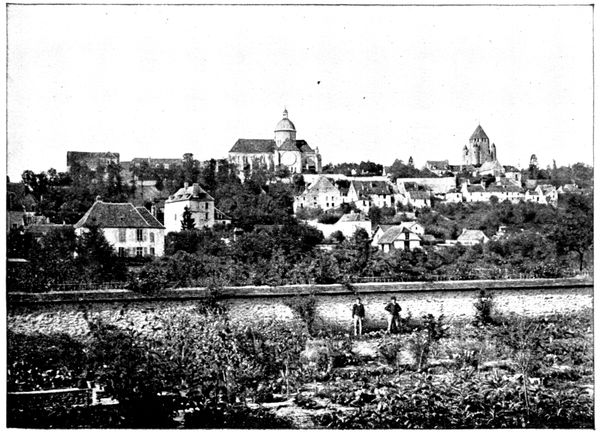
THE
UPPER TOWN
OF
PROVINS
[Pg 130]
VISIT TO THE TOWN
(See plan inserted between pp. 128-129)
Enter Provins by the Courloison Gate and Bridge, and, take the Rue Courloison
which follows. At the end of the street, turn to the right into the Rue Abailard
in order to arrive at the Place St-Ayoul, on to which fronts the façade of the
church of that name. If it is considered desirable to take lunch before visiting
the town, go directly to one of the hotels indicated, returning later to the Place
St.-Ayoul.
CHURCH OF SAINT AYOUL
(classed as historical monument)
We have seen on p. 129 that a monastery was erected on the spot where
the body of the Martyr Saint Ayoul was found.
About 1122, the great theologian Abailard, cruelly mutilated by the
vengeance of
Canon Fulbert,
uncle of Heloïse,
and persecuted
on account of
the boldness of
his views, took
refuge in the
monastery adjoining
the
church of Saint-Ayoul.
He continued
to teach
there, and gathered
round
him as many
as 2,000 students.
[Pg 131]
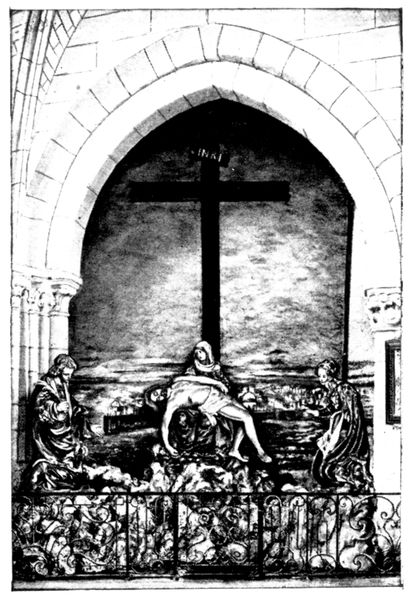
THE
CRUCIFIXION
AT
SAINT-AYOUL
Saint-Ayoul was burned, then
rebuilt in the twelfth century, and
restored in the fourteenth and sixteenth
centuries.
The façade is reproduced in the
photograph on p. 130. In spite of
mutilations suffered during the Revolution,
and the inclemencies of the
weather, the great doorway is still
worthy of interest.
A Renaissance gallery, terminated
by a lantern, flanks on the left the
great bare gable pierced by three
windows which surmount the gate.
The whole has thus a very original
appearance.
In order to see the choir (thirteenth
and fourteenth centuries), the chapel
(fourteenth century) which adjoins it,
and the transept (twelfth century), go
round the church to the left of the façade.
This part of the building, which
appears in the view at the foot of the
preceding page, is now used by the military authorities as a fodder store.
The Roman tower, which rises at the intersection of the transept, no
longer possesses its belfry, which was destroyed by fire, The bells now
used are those of the Tower of Notre-Dame-du-Val (visible on the right of
the photograph on p. 130).
In the interior, in the part reserved for worship, the central nave and the
side aisles of the thirteenth century may be visited. The north aisle was
doubled in the sixteenth century by a second nave.
The most interesting objects are the seventeenth century pulpit, and
a fine reredos, also of the seventeenth century, in carved wood, above the
high altar. It contains a picture, Jesus in the Temple, painted in 1654 by the
artist Stella, of Lyons, who, falling ill whilst passing through Provins, had
been cared for in one of the convents in the town.
In the lady chapel, on the right of the high altar, is some beautiful[Pg 132]
wood-panelling, dating also from the
seventeenth century. It is by the
same hand as the carved reredos, and is
the work of Pierre Blasser of Amiens.
Standing against the panelling is a
delicate Virgin in ivory, of the sixteenth
century, reproduced on p. 131.
To the left of the high altar is a
group representing the Virgin and
Christ crucified, between Mary Magdalene
and St. John. These statues
belong to the sixteenth century; as do
also the smaller ones in white marble,
representing angel-musicians, which
ornament the altar placed in the angle
of the church, to be found on the left
on entering (see photo, p. 131).
On leaving Saint-Ayoul take a few
steps along the first street on the right
in order to glance at the tower of Notre-Dame-du-Val (classed as historical
monument). The tower may be seen in the view at the foot of p. 130.
It was built in the sixteenth century on the site of an ancient gate. Its
construction occupied four years and cost only 1,400 "livres" (about £56),
the workmen at this period receiving 2 sous (one penny) a day. The church
and the cloister belonging to the tower disappeared during the Revolution.
Returning to the Place Saint-Ayoul, cross it on the right side, and at the far
end take the Rue de la Cordonnerie, which is a continuation.
It was at No. 17 that the poet Hégésippe Moreau was brought up, and
where he worked as a typographer. He has sung of Provins and the Voulzie
in verses which are well-known:—
La Voulzie, est-ce un fleuve aux grandes iles? Non,
Mais, avec un murmure aussi doux que son nom,
Un tout petit ruisseau coulant, visible à peine:
Un géant altéré le boirait d'une haleine,
Le naiu vert Obéron, jouant au bord des flots,
Sauterait par-dessus sads mouiller ses grelots.
Cross the Place de l'Hôtel-de-Ville, and
following the Rue du Val, stop at the
corner of the Rue Sainte-Croix in order to
visit the church of this name a few steps
further on.
Whilst the tourist continues his walk
towards the Hospital-General and the
ramparts, which are not accessible to
motor-cars, the latter may go and wait
at the Porte de Jouy. This is reached by
following the Rue du Val and its continuation
the Rue St.-Thibaut, which brings one
to the upper town. Here cross diagonally
the Place du Châtel, follow the Rue Couverte
and the Rue de Jouy till the porte is reached.
Church of Sainte-Croix
This Church was originally the Chapel
of Saint-Laurent-des-Ponts (it was
impossible to enter it save by bridges
thrown across the ditches, which are now
covered in).
[Pg 133]

STAINED GLASS
WINDOWS,
SAINTE-CROIX
CHURCH
It was enlarged in the thirteenth
century, and took its present name
on the return from the crusades of
Count Thibaut IV. of Champagne,
who presented it with a fragment of
the Cross, which he had brought from
Jerusalem.
The church was destroyed by fire in
the fourteenth century, and rebuilt
during the sixteenth. During the Revolution
it became a saltpetre factory.
The most interesting part of the
façade is the doorway of the side aisle
(see p. 132) which is a beautiful specimen
of sixteenth century art.
Above the transept rises a twelfth
century tower, whose semi-circular
belfry windows on the lower stage have
been blocked up. The upper part is
surmounted by a modern spire.
In the interior, the nave and side
aisles date from the thirteenth century,
but the vaulting has been restored in
recent times. It is noticeable that the
pillars have not their normal height. The reason is that the level of the
ground had to be very much raised, in order to protect the church from the
floods, which were so frequent before the construction of the "Fausse
Rivière" which now drains the town.

PILLAR,
SAINTE-CROIX
CHURCH
As at Saint-Ayoul, the
north aisle was doubled
in the sixteenth century.
This part of the church is
interesting on account of
its moulded pillars whose
carved capitals represent
fantastic animals, as may
be seen in the opposite
photograph.
The choir, which was
rebuilt towards the middle
of the sixteenth century,
is surrounded by a double
ambulatory, and the
screen which shuts it off
is a beautiful piece of
wrought-iron work.
A chapel terminates the apse, where are to be seen three windows of
gray-toned stained glass, also dating from the sixteenth century. In the
photograph above is the one on the left of the chapel; it represents the
Annunciation.

CAPITAL
OF PILLAR,
SAINTE-CROIX
CHURCH
The baptistery (in the left angle
of the church on entering) is closed
off by a railing which may be
perceived in the above view. It
contains an interesting thirteenth
century font, on which are carved
a series of figures taking part in
a baptismal procession (see
p. 134).
[Pg 134]
Beside the railing of
the baptistery is a fine
wrought iron lectern,
dating from the seventeenth
century and reproduced
in the opposite
photograph.
Worthy of notice also
is a small stone stoup,
dating from the twelfth
century, which stands
at the entrance to the
south aisle (photograph
opposite).
On leaving Sainte-Croix,
turn to the right into the
Rue Sainte-Croix; then
take the first street on the
left. At the end of this is
the Rue de la Bibliothèque,
on the right of which is the
entrance to a public garden
left to the town by M. Garnier. Before entering it, take a few steps to the
left as far as the little river, le Durteint, which, flowing between houses,
forms a picturesque sight.
Cross the garden, in the middle of which is the former residence of the
donor, now transformed into a public library and museum. Passing alongside
a monument to the memory of the sons of Provins killed in action, we
leave the garden by the little entrance opening on to the Boulevard d'Aligre.
This boulevard, constructed on the site of the ramparts, forms a pretty
walk. On the other side of it, opposite the "Jardin Garnier," is the mineral
water establishment. The ferruginous waters of Provins were discovered
in 1646; they may be drunk or bathed in.
On taking the Boulevard d'Aligre to the left, we perceive, standing out on the
right, the "Hôpital-Général." In order to reach it, cross the canal by the
foot-bridge, and follow the path which leads to the foot of this building and to
a gate giving access to the terraced gardens. Turn to the right in front of the
gate, keeping to the wall; then take a steep path, half-way up which is the
entrance door. Ring and ask permission to view the "hospital."
[Pg 135]
Hôpital-Général
(classed as historical monument)
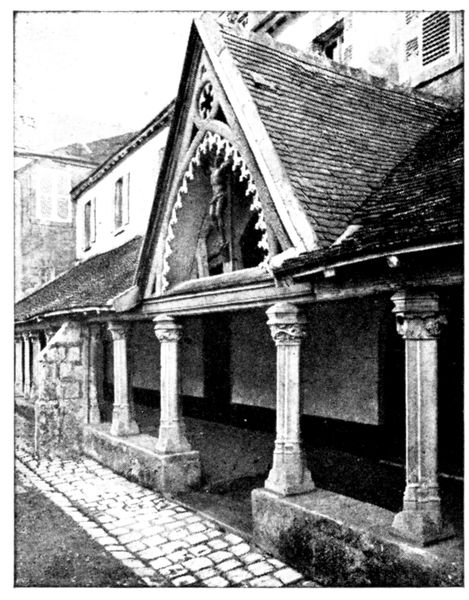
CLOISTER,
HÔPITAL-GÉNÉRAL
We must climb a double staircase
to reach the upper terrace where is
the hospital proper.
The beautiful view of the whole
town thus obtained is alone well worth
this visit.
The hospital was originally a convent
of the "Cordelières," founded in
1237 by Thibaut-le-Chansonnier,
Count of Champagne. Tradition
relates that he decided to build a
convent because of a vision which
came to him one night in his palace
in the upper town: he saw St. Catherine
on the hill opposite tracing the outlines
of a building with her sword.
The convent was several times
destroyed by fire.

CLOISTER,
HÔPITAL-GÉNÉRAL
Henry IV. made it his headquarters
when he besieged Provins in 1592,
and he narrowly escaped
death by a cannon-ball, which
killed several of his officers.
In 1748 Louis XV. turned
the convent into a "Hôpital-Général."
To-day it is a
home for old people and
orphan children, managed by
nuns, who act as guides to
tourists desirous of visiting
the establishment.
The galleries of the cloisters,
dating from the fourteenth
and fifteenth centuries,
are interesting as
showing specimens of very
fine timber-work. The foliage of the
capitals of the pillars is also to be
remarked (see opposite photograph).

MONUMENT
OF THIBAUT'S
HEART
In the old chapter-room some
handsome vaulting is still to be seen.
In the centre of the chapel is a little
stone monument, of the thirteenth
century (view opposite), which contains
the heart of Thibaut, the founder
of the monastery; that of his wife,
Isabel of France, daughter of St. Louis;
and that of her son. It consists of a
carved and gilded metal cover surmounting
six panels, each one containing,
under a canopy, a monk reading
a book.
The visit ended, we retrace our steps
to the Boulevard d'Aligre and follow it
to the right, crossing the Durteint.
The city wall begins at this point.
[Pg 136]
The Ramparts
(historical monument)

ENTRANCE
TO THE TURRET,
THE
TROU-AU-CHAT
The line of the
ramparts climbs
upwards. At
the summit is a
doorway pierced
in a part of the
wall which juts
off from the principal
line of
ramparts. It is
the "Porte Faneron"
and formed
part of the
original wall
which surrounded
the upper
town.
Under the
Counts of Champagne
the ramparts were considerably developed, and in the thirteenth
century were made to include the lower town. The opening in the
wall on the right of the above view leads to a thirteenth century tower.
The exit is by the "Trou-au-chat," so called because it was formed during
a siege by a "cat" (a form of catapult for throwing heavy stones). The
photograph below shows the picturesque view obtained from the interior
of the turret.
Take the climbing path amidst the trees towards the top of the hill. It is a
pretty walk, and affords a good opportunity to judge of the solidity of the
walls, which are dotted here and there with towers. The path ends at the
Porte de Jouy, where we shall find the car which we left in the lower town,
and which has followed the directions on p. 132.
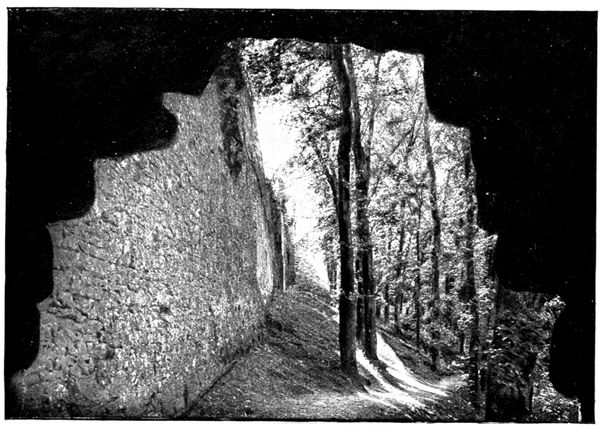
THE RAMPARTS
SEEN FROM THE
TROU-AU-CHAT
[Pg 137]
La Porte de Jouy
(the Jouy Gate) reproduced
opposite was constructed
in the twelfth
century and demolished
in the eighteenth, as its
keep threatened to
fall. It comprised two
gates, two portcullises and
a drawbridge. A subterranean
passage united
the two sides; its entrance
is still to be seen
on the interior of the left
hand portion.
Continue the visit of
the walls by the outer
"boulevard" which is accessible
to motors. This
part of the fortifications
is being restored
at present. The way
leads past the "Brèche
des Anglais" (the
English Breach) (photograph
opposite), by
which the English are
said to have effected an
entrance in 1432. The
great corner tower, the
foremost on the photograph
below, is the
"Tour aux Engins";
it is 65 feet high and its walls are 8 feet thick.
[Pg 138]
We arrive at
the handsome
Porte Saint-Jean
by which we re-enter
Provins.
The Porte
Saint-Jean defended
the old
Paris road. It
was built in the
twelfth century,
strengthened in
the thirteenth,
and was surmounted
by a keep
which has since
disappeared. A
drawbridge, a
portcullis, and a double door presented
successive obstacles to assailants. The
masonry of the walls is worthy of note, the
stones being dressed in embossment, that
is to say, instead of being flat, they are protruding.
This arrangement gave a greater
force of resistance.
The guard rooms on the ground floor of
the two towers communicate with each other
by means of a subterranean passage; those
of the first floor communicate by means of
a gallery.
Re-enter Provins by passing through the
gateway and take the Rue Saint-Jean.
La Grange-aux-Dîmes (Tithe Barn)
(historical monument)
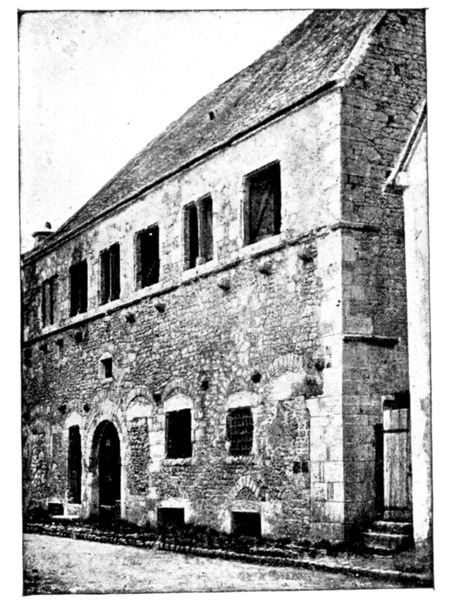
GRANGE-AUX-DÎMES
(TITHES)
At the end of the street on the left is the
"Grange-aux-Dîmes" (view opposite). An
old military building, rebuilt before 1176, it
became in turn
a market and
then an inn. It
was afterwards
a store-house for
the tithes of the
harvest, and it is
to this last use
that it owes its
present name.
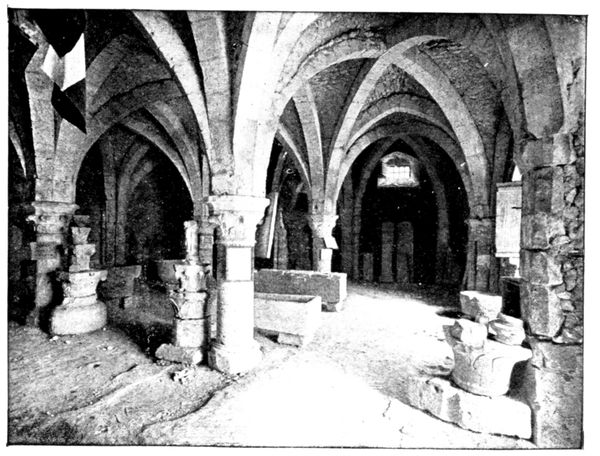
MUSEUM IN
THE GRANGE-AUX-DÎMES
To visit it, ask
for the key from
the guardian who
lives opposite, in
the house at the
corner of the Rue
Saint-Jean and
the Rue Couverte.
There is an
archæological[Pg 139]
museum on the
ground floor (photograph
on p. 138).

CRYPT OF
THE GRANGE-AUX-DÎMES
We descend
into the crypt,
which resembles
the ground floor
in disposition
(view opposite), by
a stairway whose
entrance is hidden
by a sort of wooden
trap-door.
A great many of
the houses in the
upper town have
somewhat similar
basements or cellars,
with subterranean
passages
giving access to the open country, for use in times of danger.
The upper hall, which is of no especial interest, is reached by an outer stair,
visible on the right of the façade.
Place du Châtel
On leaving the Grange-aux-Dîmes, take on the right, at the end of the Rue
Saint-Jean, the Rue Couverte leading to the picturesque Place du Châtel seen
on the photograph below. The old feudal well on the left, with its wrought-iron
top, is 120 feet deep. Beside it is the Crois-aux-Changes, dating
from the fourteenth century, on which the "edicts and ordonnances" were
posted up.
Beyond the Place may be seen the "Cæsar's Tower."
[Pg 140]
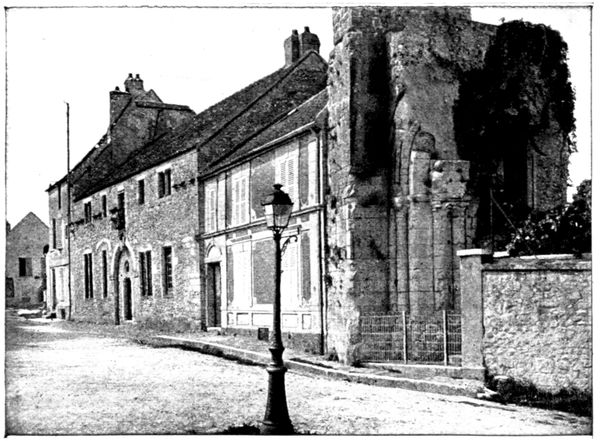
THE HÔTEL
DE LA COQUILLE
AND THE RUINS
OF ST.-THIBAUT
Turning to the
left on the Place
we reach in the
north-west corner,
the old "Maison-des-Petits
Plaids" where
the provost meted
out justice.
It may be seen in
part in the background
of the
opposite photograph.
The curious
low roof
covers an interesting
vaulted
passage. The
house is built
over fine thirteenth century cellars in which the poet and songster Pierre
Dupont (1821-1870) composed his "Chanson de la Vigne" (song of the
Vine), during a vine-dressers' festival.
In the centre of the above view is the old "Hôtel de la Coquille,"
which derives its name from the shell carved above its entrance.
The neighbouring ruins are those of the twelfth century Church of Saint-Thibaut.
Motorists are advised to send their car to wait for them in the lower
part of the Rue Saint-Thibaut at the corner of the Rue Christophe-Opoix, whither
they themselves will return after having visited the Cæsar's Tower and Saint-Quiriace.
The beginning of the picturesque Rue Saint-Thibaut is to be seen
in the photograph below.
Tourists should walk to the south-east corner of the Place and there take the
Rue de l'Ormerie, then immediately on the right, the Rue Pierre-Lebrun. The
house in which this writer lived is situated in a charming little square, opening
off the street.
[Pg 141]

CÆSAR'S
TOWER AND
ST.-QUIRIACE
The Rue Pierre-Lebrun makes a bend in order to rejoin the Rue Jean-Desmare's,
along which turn to the right. From this spot there is a fine view of
Cæsar's Tower and of the Church of Saint-Quiriace (see the above photograph).
The ruined wall seen in the centre jutting off from the tower belongs to the
original fortifications. That piece breaking off from the "Porte Faneron"
(p. 136) rejoined Cæsar's Tower.
Continue to descend, passing before the "Pinacle," the old palace of the
mayors of Provins. It was there that Guillaume Pentecôte was murdered
by the workmen of the town (see p. 129). Further remains of the city wall
are encountered, which descend the slope of the hill to the right before rising
to the east in order to enclose the lower town.
The steep path skirting the wall is called the "Chemin du Bourreau"
because the executioners of Provins lived here. Their house still exists and
may be seen at the foot of the slope, on the wall. Its last inhabitant was
Charlemagne Sanson, who, together with his brother the executioner of
Paris, guillotined
King Louis XVI. in
1793. The opposite
photograph of the
Executioner's
House was taken
from the foot of the
hill.
Tourists after descending
as far as
the "Maison die
Bourreau" should
remount the same
steep path, then gain
Cæsar's Tower by
the path leading to it.
[Pg 142]
Cæsar's Tower
(historical monument)
This superb keep
was built in the
twelfth century on
the site of a Roman
fort. The lower
battlemented portion
was added in
the fifteenth century
by the English
to serve for the
installation of their
artillery. The pyramidical
roof was
added in the sixteenth
century.
The entrance is on
the left in the old
city-wall, at the
top of a little
stone staircase.
The guardian
shows visitors the
rooms, the prisons,
and the bells which
ring for the services
in Saint-Quiriace.
From the summit
a splendid view is
obtained.
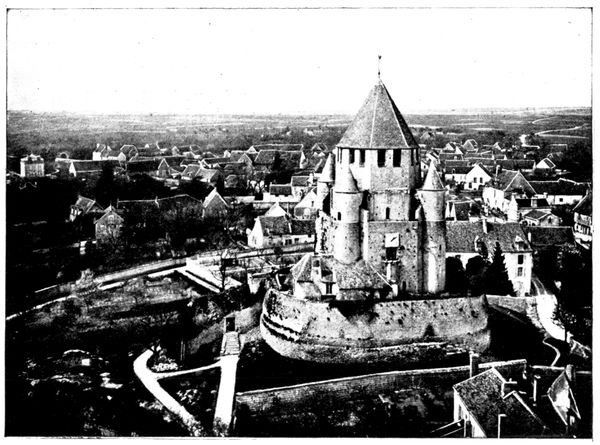
CÆSAR'S
TOWER SEEN
FROM
ST.-QUIRIACE
[Pg 143]
Saint-Quiriace Church
(historical monument)

ST.-QUIRIACE
SEEN FROM
CÆSAR'S
TOWER
A pagan temple
dedicated to the
goddess Isis existed
in early times on
the site of this
church. It gave
place in the third
century to a wooden
chapel, which
in its turn was
succeeded by the
present building,
erected in 1160 by
Count Henri-le-Libéral.
Saint-Quiriace,
a converted Jew,
who became Bishop
of Jerusalem in the
fourth century, indicated
to Saint
Helena, mother of
the Emperor Constantine,
the spot
where the three
crosses of Calvary
had been hidden.
He suffered martyrdom in 363, and the basilica which crowns the upper
town was built to receive the saint's skull.

THE CHOIR OF
ST.-QUIRIACE
SEEN FROM
THE TRANSEPT
[Pg 144]
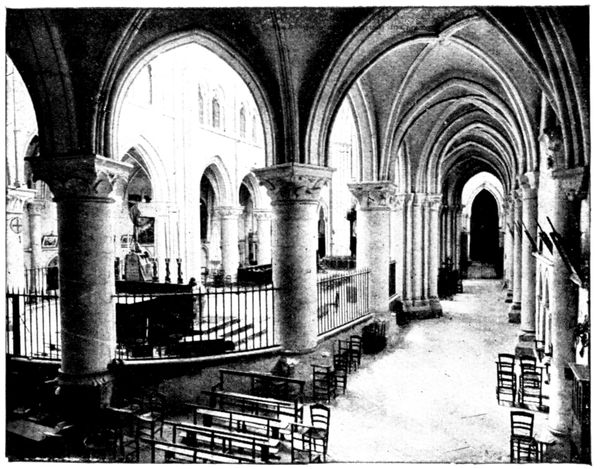
THE
AMBULATORY,
ST.-QUIRIACE
The original
tower which rose
above the centre
of the transept,
was burned in the
seventeenth century.
It has been
replaced by a
vast zinc-covered
cupola, which,
while giving the
church a quaint
appearance, harmonises
little
with its style of
architecture.
Saint-Quiriace
is full of historical
memories. King
Philippe-Auguste
here stood godfather to Count Thibaut-le-Grand
(1201); Jeanne d'Arc and Charles VII.
heard Mass in it (1429); and Louis XI., Francois I.
and Louis XIV. came to take part in "Te Deum."

ENTRANCE-GATE,
ST.-QUIRIACE
If the church had been finished it would be
extremely large. Unfortunately, in the thirteenth
century, the construction of the nave was
interrupted at the second triforium, a fact
which explains the very marked disproportion
existing between the choir and the transept on
one hand and the nave on the other.
The fabric of the choir is very imposing. It
contains an elegant blind-storey gallery extending
into the north and south transepts (view on
p. 143), and is surrounded by an ambulatory
(view above), terminated at the east end by
three square chapels.
The greater part of the church furnishings
was destroyed at the Revolution; but the fine
Louis XV. gate of the principal doorway still
exists (view opposite), as does the wood-panelling
at the end of the church on the left (photograph
below).

WOOD-PANELLING, SAINT-QUIRIACE
[Pg 145]
On leaving Saint-Quiriace, take on
the right the Rue des Beaux-Arts leading
into the Rue du Palais.
Take a few steps to the left in order
to glance at a house in the Roman
style, dating from the tenth century
(photograph opposite). The
tourist will then retrace his steps in
the direction of the College installed
in the ancient palace of the Counts
of Champagne; then descend the Rue
du Collège, in which, on the right, are
the ruins of St. Peter's Church,
built in the thirteenth century and
destroyed during the Revolution.
At the head of the flight of steps
leading to the lower town, beside
St. Peter's, was the "Hôtel des
Monnaies" (the Mint), which was
founded by Charlemagne. It was
there that the "sous Provinois,"
so well known in the Middle Ages,
were struck (see p. 129).
Descend St. Peter's steps, and the Rue des Petits-Lions, which lead to the
Rue des Capucins. On entering the latter, one perceives the old "Hôtel de
la Croix d'Or," dating from the thirteenth century (photograph below);
whilst a little to the right, on the opposite side of the street, is the "Hôtel
Vauluisant," also of the thirteenth century. Its front, pierced by four
fine mullioned windows with trefoil tracery, may be seen in the photograph
below and in that on p. 146.
Retracing our steps we rejoin the Rue St. Thibaut by way of the Rue Christophe
Opoix, a continuation of the Rue des Capucins. Here motors coming
directly from the Place du Châtel by the Rue Saint-Thibaut may wait.

WINDOWS OF THE HÔTEL VAULUISANT
[Pg 146]
Before leaving, take a few steps up
the Rue Saint-Thibaut to glance at
the "Hôtel-Dieu," the former
palace of the Countesses of Blois and
of Champagne.
In the vestibule (view below), on
the left is a Renaissance reredos in
stone. The donatrice (the wife of
a bailiff of Provins) is represented
in the central panel kneeling to the
Virgin.
The vaulted hall, which follows,
is very large, and beneath is a crypt
of the same dimensions.
This brief visit to Provins and its
curiosities being over, regain the hotel
for dinner and bed by taking the Rue du
Val, the Place de l'Hôtel de Ville, and
the Rue de la Cordonnerie. Turn to
the right at Saint-Ayoul into the Rue
Edmond-Nocard
continued by the
Rue Victor-Arnoul
where stands the
hotel.
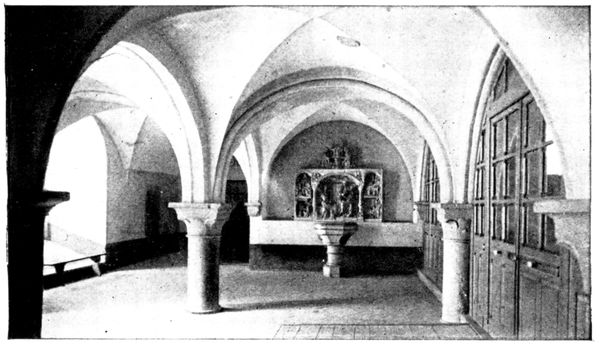
VESTIBULE
OF THE
HÔTEL-DIEU
Next morning
in leaving Provins
make for the
Place Saint-Ayoul,
and turn to the
right into the Rue
Abailard which
skirts the church.
Here take the Rue
Courloison on the
left. After crossing
the Courloison
Bridge, turn to the
left into D. 4, which
climbs in zig-zags the
slope of the hill to the
north of Provins. We
entered the town by this
same road.
During the morning
we shall visit the
field of operations of
the Fifth French Army
and arrive at Sézanne
for lunch.
[Pg 147]
VISIT TO THE FIELD OF OPERATIONS
OF THE
FIFTH & NINTH FRENCH ARMIES
FROM
PROVINS TO CHÂLONS-SUR-MARNE
FROM PROVINS TO SÉZANNE
(80 km.)
(See map inserted between pp. 116-117)
via Voulton, Augers, Montceaux, Courgiveaux, Esternay,
Champguyon, Charleville, and La Villeneuve.
At the top of the zig-zag hill at the exit
of Provins is a fork in the road. Turn
to the right; then take, on the left, the road
not lined with trees (G. C. 71) going to
Voulton (9 km.).
On the right of the road, in the village,
is the church (historical monument) which
dates from the twelfth and thirteenth
centuries. The interior is worth a visit
as the photographs opposite indicate. If
the door of the church is locked, ask the
"curé" for the key. (The "presbytère"
(rectory) is the house with a little garden
before it, lying to the left front of the
church.)
When the battle of the Marne began
on the morning of September 6 the 18th
Corps was at Voulton and to the east of
this village.
After Voulton, cross through Rupéreux, when Augers may be seen in
the distance, with
its much damaged
CHURCH (photograph
p. 148). The
heights which
formed the principal
German position
shut in the horizon.
The task of the left
of the 18th French
Corps was to push
back the advance-guards
of the Third
German Corps between
Voulton and
Augers.
On the evening
of the 6th, the
French camped
round Augers.
[Pg 148]

CAPITAL
IN VOULTON
CHURCH
Arriving in the village, pay
a visit to the church, which is to
the right of the road. Augers
was bombarded in turn by the
French and by the Germans, each
believing the other to be in the
village, whereas they were merely
in the neighbourhood. The
church suffered particularly, as
may well be realised by passing
through the breach in the wall
shown in the photograph below.
The interior presents a scene of
desolation.
Returning to the road after visiting the church, turn to the right, then immediately
afterwards to the left, and take the "Chêmin vicinal" leading
to the main road from Courtacon to Sézanne (D. 8) in which turn to the
right.
The tourist now finds himself on the principal German position during
September 5 and 6. After a preparation by the artillery, the French troops
left the shelter furnished by the undulations of the plateau, and attacked
and carried the road on September 7. Following up the pursuit of the
retreating Germans, they reached La Ferté-Gaucher on the same day, and
crossed the Grand Morin, thus gaining more than 10 km.
2 km. after the cross-roads at Augers, the road leaves on its left the Village
of Sancy.
Sancy was not bombarded, the fighting taking place some distance in
advance of the locality; but its inhabitants were obliged to submit to the
law of the conqueror during two days.
The following is the account given by the "curé" of Sancy before the
Enquiry Commission:—
"On Sunday, September 6, about 9 p.m., the Germans were carrying
off the remaining bottles of wine from my cellar, and I was about to sit down
to supper, when a non-commissioned officer announced to me and to my
guests that we were to 'Hurry to the Place'. We were put into a sheep-fold
to sleep. At 5 a.m. thirty of us were led as far as the barn
at Perrelez (4 km. north of Sancy). We were given a little water and
finally, to most of us, a small quantity of soup was doled out. The barn
had been turned
into a German ambulance.
A doctor
spoke a few words
to the wounded who
immediately loaded
four rifles and two
revolvers. A French
hussar, wounded in
the arm and a prisoner,
said to me:
'Give me absolution,
Sir; I am going
to be shot. Afterwards
it will be
your turn.' I did
as he wished, then
unbuttoning my
cassock, I placed
myself against
the wall between
the mayor and[Pg 149]
my parishioner
Frederic Gillet.
But two French
mounted soldiers
arriving at this
instant saved our
lives, for the Germans
surrendered
to them."
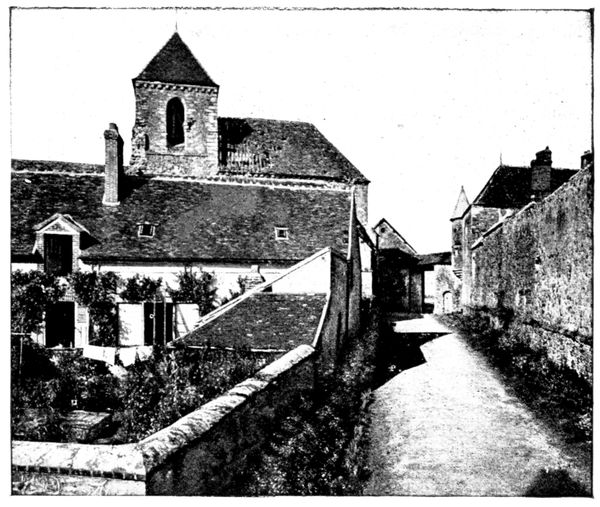
MONTCEAUX
CHURCH
AND FARM
Without entering
Sancy, continue
to follow
D. 8 which leads
to Montceaux.
Turn to the left
and go up the village
as far as the
church (23 km.).
Montceaux, on
account of its
dominating position,
had been organised as a defensive position by the Germans. The
French artillery bombarded the whole village vigorously and especially
the large farm whose entrance is visible at the end of the street in the above
photograph. The Germans had established a heavy battery there, directing
its fire from the top of the church tower. The church therefore received
numerous projectiles, whose effects may be seen in the photograph below,
which represents the chapel in the apse. The right of the 18th French Corps
attacked the village on September 6, on the south and on the west, and carried
it after a violent combat which lasted from 4 p.m. until nightfall.
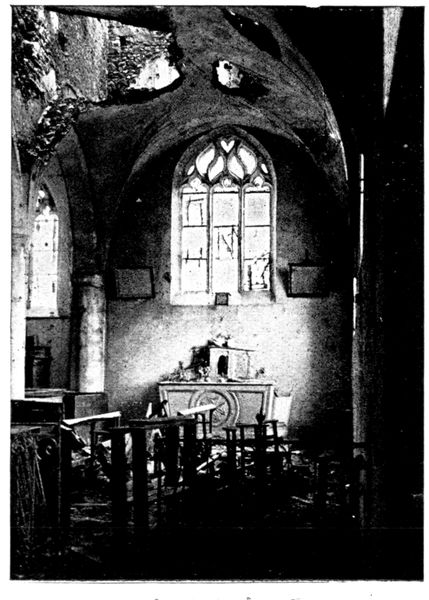
INTERIOR
OF
MONTCEAUX
CHURCH
We retrace our steps and turn to the left into D. 8 in the direction of Courgivaux.
On the right of the main road, the Germans, holding the heights
where stands the hamlet of Les Châtaigniers, offered a desperate resistance
to the efforts of the Sixth Division of the Third French Corps commanded
by General Pétain, afterwards Commander-in-Chief. On September 6
this division succeeded in taking
the hamlet, but was not able to
advance beyond it, in spite of the
fact that the 18th Corps held Montceaux.
On the following morning,
the Germans counter-attacked unsuccessfully,
and in the afternoon
the French (whose 123rd Regiment
had particularly distinguished itself
at Montceaux) hurled their
adversaries back on to the farther
side of the Grand Morin.
D. 8 becomes G. C. 46 on entering
the Department of the Marne.
Before arriving at Courgivaux,
pass over a level-crossing, then turn
to the right by the drinking-pond,
and ascend the village, bearing to the
left towards the cemetery (29 km.).
The latter occupies a dominating
position and played an important
part in the actions engaged in by the
Fifth Division, commanded by
General Mangin, for the possession
of Courgivaux.
[Pg 150]
The German advanced
defences
around Escardes
(about 2½ km.
along this road)
were carried after a
stiff fight in which
the two colonels of
the Ninth Brigade
were wounded.
The Germans fell
back on the
line formed by the cemetery of Courgivaux and the farm of Bel-Air
visible in the photograph above, and about 300 yards west towards the
village.
After a bombardment by "75's," the troops of the Third Corps, leaving
the woods, crossed the open ground at a run, and after several fruitless
attempts dislodged the Germans from the cemetery, then from the farm,
and finally from the village. The French held these positions in spite
of a counter-attack at night, and on the 7th the Germans were in retreat
towards the north.

COURTYARD
OF ESTERNAY
CASTLE FARM
After having visited in the
cemetery the graves of
several officers of the 39th,
74th and 129th Regiments,
who fell here, we retrace our
steps and turn to the right
into the G. C. 46 in the direction
of Esternay. A long
climb leads to Retourneloup
where G. C. 46 rejoins N. 34
coming from La Ferté-Gaucher.
We are now entering the
theatre of operations of the
First French Corps. Retourneloup
was bombarded, as
a German battery had been
established there to hold the road to the Esternay hollow. This battery was
hammered by the French artillery. The "curé" of Esternay, who had been
made prisoner at the very beginning of the German occupation, was led to
Retourneloup, and passed an anxious time during the battles of the 6th and
7th. Each time that the French attacked—and they attacked ten times
during the day of the 6th, the "curé" was placed at the head of the German
column which advanced to resist them. He was also roughly handled and
given nothing to eat, besides being frequently threatened with being placed
against a wall and shot. The Germans took him with them in the retreat
and continued to put him in
an exposed position in all
rearguard actions. They
finally set him at liberty about
ten kilometres from Esternay.

ENTRANCE
TO THE
ESTERNAY
CASTLE
A zig-zag descent leads
down to Esternay, in the
hollow. Go straight on without
entering, and gain the
opposite slope. After crossing
the railway line, take
the road on the left leading
to the castle (36 km.).
[Pg 151]
This last is
preceded by a
farm which still
bears traces of the
bombardment
which it suffered
(view p. 150).
The castle,
which belonged
to Marshal Fabert,
is now the
property of the
Marquis de la
Roche-Lambert.
The opposite
view gives a good
idea of its picturesqueness.
It
was occupied by
a German staff, and its park defensively organised. The castle suffered
less than the farm.
We retrace our steps over the 300 yards separating the entrance to the castle
from N. 34, which we cross in order to take the opposite "Chêmin vicinal"
leading down to Châtillon-sur-Morin. Pass over a level-crossing in order
to enter the village, which was completely destroyed by the bombardment
and by the fires lighted by the Germans before evacuation.
Turn to the left in the village to arrive at the little church (38½ km., view
below), which by a curious chance alone remained untouched in the midst
of ruins. The above view was taken from the church tower.

BURNT
HOUSES
AT CHÂTILLON
Châtillon formed the advanced position of the defences of Esternay. The
troops of the First Division had the honour of being chosen to attack, and fierce
was the fighting in the burning streets of the village. The 84th Infantry,
many of whose officers and men are buried in the churchyard, gave a brilliant
example of stubborn courage. On the evening of the 6th, Châtillon
was in the hands of the French, who were, however, for that day unable
to advance further towards
Esternay, being held up by
the defence works on N. 34
(see panorama on p. 152).
Return to the main road
from Esternay to Sézanne
(N. 34), stopping at the
last houses of Châtillon,
the spot from whence the
above photograph was[Pg 152]
taken. The position which the French troops in possession of Châtillon
had to carry was formed by the plateau seen on the horizon, along which
passes D. 8 at the foot of Esternay castle.

PANORAMA
OF THE
ESTERNAY
POSITIONS
This frontal attack presented many difficulties, for even if the French
arrived as far as the railway line which runs along the bottom of the valley,
and were able to take cover under the embankment, they would be mown
down when they attempted to scale the bare slopes. The woods which
appear on the right in the above view afforded shelter to the troops up to
the main road, but when they attempted to advance into the open they
were met by a murderous fire. Being unable to force the frontal defences,
the commandant of the First Corps ordered the Second Division to make a
considerable detour to the east, under cover of the woods, in order to take the
positions on Esternay Plateau in the flank. On the evening of the 6th, a
first attack failed, but next morning the Second Division carried the position
which covered the German flank, and combining its efforts with those of the
First Division on the front, entered Esternay about 10 o'clock in the morning.

PANORAMA
OF THE
CHÂTILLON
POSITIONS
- Châtillon Church
- Spot from whence the above panorama was taken
- Railway line
Once more on the N. 34, turn to the right. The slope served as a protection
for the Germans, who dug many individual shelters there. One of[Pg 153]
these may be seen
in the foreground
of the preceding
photograph. We
begin to realise the
difficulties which
the French had to
surmount when we
remember that
after the battle, on
the front of a
single battalion,
11 officers and 4 non-commissioned officers lay dead, killed while leading
their men.
Leaving behind, on the left, the park which adjoins the road, we perceive
on the right the great common grave of Esternay (view above), where lie
buried the heroes of the 73rd who fell during the attack. The turning
movement mentioned on page 152 led across the road at about 3 km.
from this spot, at the other extremity of the wood. The village of La Noue,
to the north of the road, was carried, and the Second Division then turned
back towards Esternay.
(Sézanne is only 10 km. from this point by N. 34, but the tour indicated
hereafter, which leads across part of the line where the direct attack on this town
was broken, makes a circuit of 34 km. The remainder of the line will be explored
to-morrow.)
We retrace our steps. A little wood fringes the road on the right. The
German machine-guns were installed there, and cut down the French who
attempted to leave their shelter on the other side of the road. About
100 yards further on the wood gives place to a field, on the edge of which,
at about 20 yards from the road, in the midst of the trees, is the grave of an
unknown French soldier—a pathetic sight. A little further on, in the field,
are to be seen the isolated graves of two German officers, one of them of the
family of the Chief of the General Staff, Von Moltke (view below). Between
these graves and the border of the castle park many Germans lie buried.
The fighting was very violent here in the trenches which the enemy had
dug at right angles to the road. Outflanked on the north by the turning
movement we have spoken of, the castle and the farm, as well as the park,
were carried at the point of the bayonet. From this moment, Esternay,
situated in the hollow, could offer no serious resistance, and the French
entered it without difficulty.
Re-cross the railway line and take the first road on the right, leading into
Esternay and to the Place de l'Église (48 km.). The church was transformed
into an ambulance station by the Germans.
The following evidence given by the deputy-mayor and other witnesses
before the Official Enquiry Commission recalls painful incidents of the
occupation by the enemy.
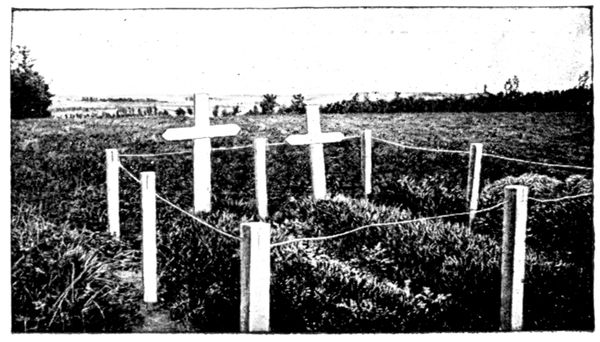
GRAVES
OF GERMAN
OFFICERS
"On September 6 the Germans pillaged nine-tenths of the houses in
the town. This pillage was
organised, objects of all
kinds, linen and other belongings,
being placed on
carts."
Another witness declared:
"About 3 o'clock in
the afternoon, thirty-five or
forty Germans came out of the
church shouting, and leading
with them M. Laurenceau,
aged 52 years. The latter on
arriving at the road made[Pg 154]
a movement as if
to escape and was
immediately felled
to the ground.
Then, although he
lay quite still, he
received three
bullets."
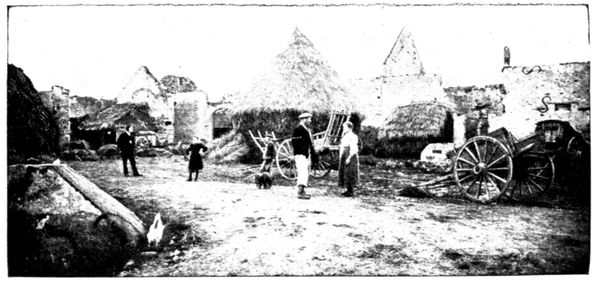
FARM
SET ON FIRE
AT
CHAMPGUYON
A third witness
declared: "On the
night of September
6 I was with my
two daughters and Mme. Lhomme in hiding under the stairs of the cellar
of Mme. Macé, a widow. Groups of German soldiers kept passing round
the house, and some had even come into the cellar without discovering us.
Between 11 p.m. and midnight, one of these bands having found women's
clothes in a cupboard, came towards our hiding-place. As they had seen
us, Mme. Macé exclaimed: 'Do you wish to kill old women?' To which
they replied: 'No, no harm to grandmother,' and pushed her on one side.
They next tried to push me aside, crying 'Fraulein all naked,' but could
not move me. One of them then shouldered his rifle. I raised my arm
to strike up the muzzle, but he was too quick for me, and, taking advantage
of the space thus disclosed between the young girls and myself, lowered his
arm and fired. Mme. Lhomme was wounded in the left arm by a ball which
then shattered the left arm of my daughter Marcelle, aged 27 years. She
died between 4 and 5 o'clock on the afternoon of September 7."
In the Place de l'Église, turn to the right, then immediately afterwards to
the left towards Champguyon. The road (G.C. 48) shortly afterwards
traverses a level-crossing and passes alongside the cemetery which contains the
remains of many French soldiers. This road was the one followed by the
Germans when they fell back on Montmirail, before the French.
Traverse the long street of Champguyon (53 km.) which suffered much
from the bombardment, but more from the fire started by the enemy. The
view above was taken in the courtyard of a farm, which stands on the left
of the road, a little this side of the church. The view below shows a ruined
house, being one of a group about 1 km. further on.
Several of the inhabitants were murdered. The widow of one, Mme.
Louvet, thus related the death of her husband:
"About 5 p.m. on September 6, my husband, whom the Germans were
dragging along and striking with sticks, called to me, exclaiming: 'My wife, my
poor wife.' I ran and kissed him through our garden gate, but was roughly
repulsed by his captors, and fell. My poor husband was in a piteous state,
blood streaming from his ears. He begged for mercy and asked: 'What harm
have I done you?' He also cried out: 'Colonel, colonel.' I could not help
him, for the Germans who were torturing him were from ten to fifteen in
number, and kept their rifles pointed at my throat. They bore off their victim
to the end of the village, doubtless to put an end to him. The next evening
about 5 p.m., I found the unfortunate Louvet. His head was horribly smashed,
one eye was out of
its socket, and one of
his wrists was broken.
He was almost unrecognisable."
Continue to follow
G. C. 48, then take,
on the right at the
cross-roads, G. C. 46
leading to Morsains
(56 km.). Arrived
at the latter, turn to[Pg 155]
the right beyond the
church. This road
is the G.C. 47. Cross
through the village,
and before arriving
at Perthuis, turn to
the left at the cross-roads.
At Perthuis
(58 km.) turn to
the right, and, traverse
the locality,
turning again to the
right on leaving it. We thus leave the theatre of operations of the First
French Corps and enter that of the Tenth Corps. On the right of the horizon
may be seen the Forest du Gault, on the borders of which the Tenth Corps
engaged furious combats with the Tenth German (Reserve) Corps.
On reaching La Rue-le-Comte (59½ km.) traverse it throughout, as
also a level-crossing, in order to arrive at Le Gault-la-Forêt (60½ km.).
Pass through it.
Several of its
houses were burnt
by the Germans, who
also shot the old
rural policeman.
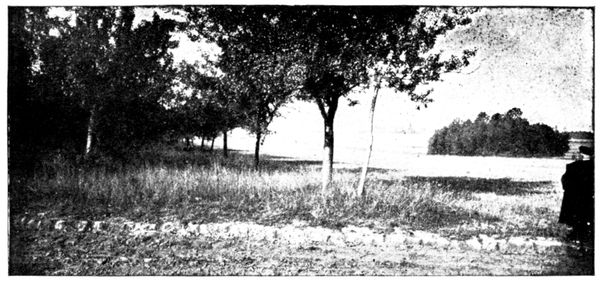
BATTLEFIELD
OF
CHARLEVILLE
At the cross roads
at the end of the
village, turn to the
right, then immediately
afterwards to the
left, going round the
church. After reaching
the hamlet of
Le Recoude (63 km.), the western portion of which was damaged by bombardment,
turn to the left on entering and traverse the village from one end to the other.
During the morning, on September 6, the left of the Tenth French Corps,
after penetrating the Forest du Gault, reached the road which the tourist
has been following between La Rue-le-Comte and Le Recoude. In the
afternoon it was obliged to retire into the forest, but on the following
day it attacked again, took numerous prisoners in the forest, and carried
the line which it had occupied the day before. It was from this line that it
set off on the 8th to continue its advance to the north-east. G. C. 47 continues
in the direction of Charleville. Before entering the village, stop the car
at the mile-stone
"6 km. 2," 20 yards
before arriving at
the first isolated
house.
Take on foot the
path on the left,
which leads to the
grave seen in the
photograph on p.
155, and which is
about 150 yards distant.
This grave
made in a sand-pit
contains the bodies
of 180 officers and
men who fell in the[Pg 156]
engagements at Charleville. 50
yards further on may be seen
from the path and to the left,
the view shown in the photograph
on p. 155.
The French occupied a trench
dug under the line of trees seen
on the left; the Germans were
installed on the hills which shut
in the horizon. It was only on
September 8, after three days'
fighting, that the 20th Division
was able to dislodge the enemy
from these slopes.
Return to the car and enter
Charleville (66½ km.). The
church, seen in the photographs
on p. 155 and opposite, was much
damaged by the German bombardment.
Walk round it, then enter.
Although the neighbouring villages
of La Villeneuve and Le
Recoude changed hands several
times, Charleville, which had
been taken on the 6th by the
20th Division, remained in the possession of the French. The fighting
was extremely fierce all round the village, and particularly on the spot
indicated above where the 2nd Infantry Regiment distinguished itself.
Continue to follow G. C. 47, leaving on the right the road which leads through
the village. At the next cross-roads bear to the right and continue until La
Villeneuve (68½ km.) is reached.
Numerous houses were destroyed by the French and German bombardments.
The church, as may be seen in the photograph below, is in ruins.
La Villeneuve was where the Fifth and Ninth French Armies joined. It
was occupied by the 42nd Division on the evening of September 5. On
the 6th it passed from hand to hand: lost at 8 a.m., retaken at 9 a.m.;
lost again towards midday, and finally re-conquered at nightfall by the
French.
On the 7th the struggle was equally obstinate and violent. La Villeneuve
was again taken and retaken. It was only on the 8th that the
42nd Division succeeded in breaking the German resistance, and advanced
northwards. The principal obstacle had been a howitzer battery installed
beyond the Morin,
near Le Thoult
(5 km. from La
Villeneuve.) It
rained shells on
this locality and
also prevented the
Tenth Corps from
advancing from
Charleville.
This battery was
marked down,
thanks to the
knowledge of the
country possessed
by the "curé" of
La Villeneuve,[Pg 157]
l'Abbé Laplaige.
From an attic
window he discovered,
by means
of field-glasses, the
spot from which
the shots were
fired, and pointed
it out to the officer
commanding the
French batteries.
The Germans were
soon reduced to
silence, and progress
became possible
for the 42nd
Division at La Villeneuve and the Tenth Corps at Charleville.

WINDMILL
WATER-PUMP
AT LA
VILLENEUVE
Near the middle of the village, take on the left, skirting the drinking-pond,
the "Chemin vicinal" leading to Corfélix and Le Thoult. The windmill pump,
seen in the photograph above, will soon be perceived, near a group of
ruined houses. It was from the upper platform of the pump that the
officer commanding the French artillery, guided by the Abbé Laplaige,
directed the fire which destroyed the German battery at Le Thoult, The
rising ground of the left bank of the Morin, which attains a height of 670 ft.
directly north of La Villeneuve, hid the whereabouts of the German guns
on the right bank on Hill 189. The elevated structure of the pump made
an ideal observatory and compensated for the height of the ground on the
left bank of the river.
Return by the same path to the drinking-pond and take, on the left,
G. C. 47, leading to Chapton. On the right of the road are the woods of
Bois-de-la-Ville, on the left those of La Braule. The troops of the 42nd
Division fought desperate engagements in these woods during the alternatives
of retreat and advance from September 6 to 8. Pass through Chapton
(72½ km.), which marked the utmost limit of the direct German advance on
Sézanne.
Shortly afterwards, on arriving at the main road (N. 51), turn to the right
and descend into Sézanne, which suddenly comes into view at the foot of
the hill, and makes a pretty picture. It was to attain this edge of the
plateau, which commands a wide horizon, that the Germans made such
desperate efforts on either side of N. 51, efforts which were, however,
rendered vain
by the admirable
resistance of the
42nd Division.
Enter Sézanne
(80 km.) by the
Rue d'Épernay,
then turn to the
right into the Rue
de la Halle leading
to the Place de
la République.
Here is the
church (view opposite).
From
thence we seek out
the hotel where we
intend to dine and
sleep (see plan, p.
158).
[Pg 158]
SÉZANNE
VISIT TO THE TOWN
The most interesting sight is the church (historical monument), a view
of which is given on p. 157. It dates from the fifteenth and sixteenth centuries.
To visit the interior, enter by the little door opening on to the Place
de l'Hôtel-de-Ville, and opposite an old well enclosed within a wrought-iron
railing.
The stone reredos, against the wall on the left on entering, is worthy of
note. An interesting walk is to follow the line of the ancient fortifications
now changed into a public promenade. The most interesting part is the
"Mail des Cordeliers" to the north.
[Pg 159]
THE MARSHES OF SAINT-GOND
TOUR IN THE NEIGHBOURHOOD OF SÉZANNE
(65 km.)
via Broyes, Allemant, Broussy, Bannes, Coizard, Congy,
Champaubert, Baye, Saint-Prix, Oyes, Reuves, Mondement.
This part of the tour
should be done in the
morning, for the region
of the marshes is devoid
of hotels, even of inns, and,
tourists must therefore
return to Sézanne for
lunch. After lunch, we set
out for Fère-Champenoise,
ascend the valley of the
Somme, to arrive at Châlons-sur-Marne
for dinner and
bed.
Leaving the hotel, re-cross
the Place de la République
and take on the left the Rue
de la Halle, continued by
the Rue de Broyes. The latter
turns suddenly to the left
(the street which continues
in the former direction is the
Rue de Châlons). The road
(G. C. 39) skirts the cemetery
and mounts towards
Broyes, through which we
pass, leaving the church on
the left (5½ km.). On a
level with the church, take
the street on the right, and
300 yards further on we encounter the old "Castle des Pucelles," seen in the
photograph above.
General Humbert, commanding the Moroccan Division, established his
headquarters in this castle on September 7, Mondement Castle having
become uninhabitable. It was from here, when Mondement had been
taken by the Germans, that he directed the counter-attacks which drove
them from it. The "Castle des Pucelles" is perched on the edge of the
plateau dominating almost vertically the immense plain of the Aube.
Mondement is only 3½ km. distant. One can easily realise how tragic was
the situation during the days of September 8 and 9, 1914, of the troops
standing at bay at Broyes, and understand the savage fury with which they
attacked Mondement.
Quitting the "Castle des Pucelles," continue straight along G. C. 39, leaving
on the left the "Chemin vicinal" leading to Mondement (we shall follow it in
the opposite direction on our return).
Traverse Allemant Woods and the village of that name, through which we
pass, leaving the church (9 km.) on the right. From its steeple in 1814 Napoléon
watched the battle which was raging in the plain below. After the first group
of houses comes a fork in the road; the one on the right descends into the plain,
that on the left goes towards the marshes of Saint-Gond.
Before taking the latter, turn to the right on the crest for a few steps in order
to contemplate in its entirety the beautiful view reproduced in the panoramas on
pp. 160 to 163.
[Pg 160]

I. PANORAMA OF ALLEMANT
- Allemant
- Broyes Church-Tower
- Allemant Church-Tower
This part of the panorama
fits on to the right of panorama
II (p. 161).
The plain which stretches at our feet, as far as the eye can reach, right up to the Aube, and of which the panoramas on pages 160 to 163 give a good idea, was the stake
in the battle which for five days engaged the army of Foch and those of Von Bulow and Von Hausen. The heights whose crest we have been following since leaving Sézanne
assured its control. From there the Germans with their powerful artillery would have been able to destroy the French Corps which had withdrawn to the plain. They would
also have been able to manœuvre freely in order to fall on the rear of the army of Espérey on the west, and that of Langle de Cary on the east. The whole plan of the
battle of the Marne would have collapsed. The nature of the ground permits us to understand the particular violence of the struggle at this point: the Germans ready
to sacrifice everything in order to attain the heights, the French disputing fiercely every inch of the ground.
[Pg 161]

II. PANORAMA OF THE PLAIN OF THE AUBE.
- N. 34 between Fère and Sézanne
- N. 34 between Fère and Sézanne
- Allemant
- Péas
This part of the panorama
fits on to the left of panorama
I (p. 160).
[Pg 162]

III. PANORAMA OF THE PLAIN OF FÈRE-CHAMPENOISE.
- Mont Chalmont
- N. 34 between
- Fère and Sézanne
- Linthes
- Pleurs
- Linthelles
- N. 34 between Fère and Sézanne
- Saint-Loup
This part of the panorama
fits on to the left of panorama
II (page 160).
While attacking the height on its front, from the south bank of the Marshes (see the panorama on pages 182-183), the Germans also tried to outflank it on the east.
We have seen in the general account of the battle how prodigious were their efforts to cross the Somme, which formed a covering line, and then to debouch from Fère-Champenoise.
This locality is hidden behind Mont Chalmont, on the left of the panorama above. This manœuvre very nearly succeeded. During the day of September 9, the
soldiers occupying the promontory, where stands the tourist, saw to the north in the direction of the Marshes, the advancing Germans arrive within firing distance of the
farthest trench. If they turned their eyes eastwards, they saw the 17th Division falling back on Mont Chalmont (panorama above) and the artillery take up its position on the
western slope. Further south, debouching from the screen formed by this ridge, the firing line came into view spreading towards Linthes and Pleurs. The terrible anxiety
of these hours of waiting only ceased when the 42nd Division came into action.
The fine strategic movement of the 42nd (see p. 14) is easy to follow. The Division gained the plain from the plateau north of Sézanne which we traversed yesterday.
The infantry descended the slopes of Broyes and Allemant. The military wagons followed the N. 34 and the railway which skirts this road. The batteries stopped on
the way at Broyes, in order to take part in the bombardment of Mondement Castle. The division formed up between Linthes, Linthelles and Pleurs, and it was from this
point that it began its attack. The tourist may picture to himself these red and blue columns marching eastwards under a violent artillery fire, and causing the German
troops, bewildered by the arrival of these unexpected French reinforcements, to disappear again behind the ridge. The villages of Péas (panorama II) and Saint-Loup (panorama
III) served as shelters for the reserves of the Ninth Corps. Much-tried companies withdrew there to reform. It was from Saint-Loup that the 77th Infantry Regiment started
forth to take Mondement. Leaving their dinner which was warming, these gallant fellows stormed the slopes of Allemant and of Broyes in order to take in this action the
heroic part explained on p. 117.
[Pg 163]
Rejoin G. C. 39. The long dike of the marshes of Saint-Gond becomes visible
almost immediately. From this distance nothing indicates the marshes,
whose reeds are lost to view among the crops; one can only distinguish
the line of the Petit Morin, marked by poplar trees, which traverses the
depression from one end to the other.
After passing a small group of houses, take, at the cross-roads, the road
on the left descending towards the marshes. We can perceive Mont-Août
first in front, then to the right. This solitary little hill played an important
part in the battle. There, until September 9, the 17th Division resisted all
attacks from the north and from the east.
Follow G. C. 39, and arriving at Broussy-le-Grand (16 km.), pass through
it. Held first by the Moroccan Division, Broussy was carried by the Germans
after a fierce struggle. The French troops were thrown back on the slopes
of Allemant which we have just descended. There are still many ruined
houses in Broussy.
The road now turns towards Bannes (19 km.). Across the plain which
stretches south and east of Bannes, the 17th and 52nd Divisions fought
desperate engagements to prevent the Germans from breaking through the
marshes. On the 8th, the French front, which followed the boundary of
the marshes from east to west, was pushed back with violence. The left
remained in the neighbourhood of Bannes, but the centre drew back to Mont-Août,
and the right to the south of this hill. On the 9th, Mont-Août fell
in its turn. Between Bannes and Mont-Août, in a trench, numerous letters
and telegrams and a box bearing the address of Prince Eitel, son of Wilheim II.,
were found.
Many new roofs are to be seen in Bannes, a proof of the violence of the
bombardment.
At the cross-roads at the entrance to the village, turn to the left towards the
Marshes and Coizard, to which G. C. 43 leads us.
[Pg 164]
The above photograph gives an aspect of this marshy region. The line
of poplars crossing it follows the course of the Morin. The heights on the
horizon are those of Toulon-la-Montagne and Vert-la-Gravelle. They were
occupied on September 6 by the outposts of the 17th Division, who, however,
could not hold them. The Germans then installed batteries there which
swept all the south-east portion of the marshes. In spite of this fact, on
the same day a battalion of the 77th Line Regiment tried to retake
the heights.
We are now following the course of the attacking troops who left Bannes
under a murderous fire from the heavy artillery and machine-guns. When
the road became too dangerous, they entered the marshes and advanced
painfully up to their waists in water. Some disappeared suddenly, swallowed
up by the bogs. They succeeded eventually in reaching Coizard
and, after fighting in the streets and houses, drove off the Germans, and
began to assail the slopes which dominate the village. But the enemy had
here a crushing superiority, and after a seven-hours' fight the French were
obliged to retire across the marshes, pursued by the dropping fire of the
batteries on the northern bank which raked the narrow causeways. The
Germans wished to push home their advantage and take foot on the southern
bank, and accordingly began to cross the marshes by the Coizard-Bannes
road. Their losses were heavy, for the machine-guns and "75's" directed a
cross-fire on them. They came on nevertheless and reached Bannes, but
when they endeavoured to advance on Mont-Août, they were met by so fierce a
fire that they were obliged to draw back into the village. Mont-Août did
not fall until September
9, having
been outflanked on
the south.

DESTROYED
BRIDGE OVER
THE MORIN
Cross the Morin,
whose bridge was
destroyed at the
beginning of the
battle (photograph
opposite), then
leaving the soft
ground of the
marshes, cross one
of the drained parts[Pg 165]
whose number
increases every
year; thus reducing
considerably
the original
swamp which comprised
all the
hollow.
On reaching
Coizard, turn first
to the left, then to
the right in order
to arrive at the
church (24 km.).
The villages on
the north of the
marshes suffered
less than those
on the south, for
the French bombardment was less intense than the German. A few houses
were however destroyed in Coizard (view above).
Turn to the left this side of the church (the road, is visible in the above photograph)
and continue to follow G. C. 43 for 1 km. as far as Joches. At the corner
of the farm, of which the view below shows the interior, and which was
burnt by the Germans, turn to the right towards Congy, thus leaving the
marshes.
(If pressed for time, instead of turning to the right, continue on the road, along
the marshes by Courjeonnet and Villevenard, thus reaching Saint-Prix.
The distance by the direct road is about 6 km.; going round by Congy it is
16 km.).
In Congy (30 km.) follow the main street, turning to the right before reaching
the town-hall, then to the left to cross the railway.
On September 5 and 6 the Ninth Corps, who still had outposts at Toulon
and at Vert, tried to extend its line towards Congy. Blondlat's Brigade
of the Moroccan Division crossed to the north bank and attempted to gain
Congy by Joches and Courjeonnet. The difficulties were great, for the German
artillery swept the slopes. The attack failed in the end and the brigade was
obliged to re-cross the marshes. During the battle the German heavy guns
on the heights commanding Congy pounded the French positions on the
opposite side of the marshes.
About 2 km. beyond Congy we meet the "Route nationale" 33 and turn
into it, to the left, towards Champaubert, which is 2.7 km. further on.
On the left is the column commemorating Napoléon's victory in 1814.
Champaubert
Farm where he
slept is a grey
house with red-brick
facings
standing opposite
the column on
N. 33.
On arriving at
the column, turn to
the left into N. 51,
in the direction of
Baye.
[Pg 166]
In Baye (37½
km.) on the left
is to be seen the
interesting thirteenth
century
church, which has
recently been restored
(photograph
opposite), 900 yards
further on is the
castle, of which a
view is given below.
It was the
birthplace of Marion
Delorme, who there
passed a tranquil
childhood before
becoming acquainted
with the
feverish life of
the courtesan.
The castle is the property of the Baron de Baye, and contained many
rich archæological and artistic treasures. It was inhabited by a member
of the German Imperial family from September 5 to 9, and was pillaged
methodically.
The following is the report of the Inquiry Commission:
"Having repaired to Baye Castle, we verified the traces of the pillage which
this edifice has suffered. On the first floor, a door leading to a room which adjoins
the gallery where the proprietor had amassed valuable works of art had been
broken in; four glass cases had been broken, another opened. According to the
declarations of the caretaker, who, in her master's absence, was not able to inform
us of the full extent of the damage, the principal objects stolen were Russian
gems and gold medals. We noticed that tablets covered with black velvet, belonging
doubtless to the glass cases, had been dismantled of part of the jewels
which they formerly bore.
"The Baron of Baye's room was in a state of great disorder. Numerous
objects were strewn about on the floor and in drawers which had been left open.
A flat-topped secrétaire had been broken into. A Louis XVI. 'commode'
and round-topped desk of the same period had been rifled. This room was
doubtless occupied by a person of high rank, for on the floor still remained
chalked the following inscription: 'I. K. Hoheit.' Nobody could tell
us exactly who was this 'Highness,' but a general who lodged in the house
of M. Houillier, one of the town councillors, told his host that
the castle had sheltered the Duke of Brunswick (William II.'s
son-in law) and the staff of the Tenth Corps."
N. 51 now descends
into the
valley of the Petit
Morin. From September
5 to 9, the
German reserves
followed closely on
each other along this
road, hastening to
the attack on
the Plateau of
Sézanne.
After having
passed the little
station of Talus-Saint-Prix,
we
arrive at the bridge
over the Morin.
[Pg 167]

THE MORIN
NEAR THE
MARSHES
This bridge, forming the narrow bottle-neck in which the German attack
was to be precipitated, constitutes one of the most interesting points of the
battlefield. It is here that the marshes come to an end, and the Morin
continues its course along a gradually narrowing valley. The view above,
taken from the bridge eastwards, shows the river leaving the marshes. The
tree stump in the foreground, which has now disappeared, recalls the
successive bombardments, French and German, which the bridge experienced.
The other view is taken westwards.
From the heights which form the background of the two photographs,
the German cannon rained shells on the French positions on the southern
edge of the marshes.
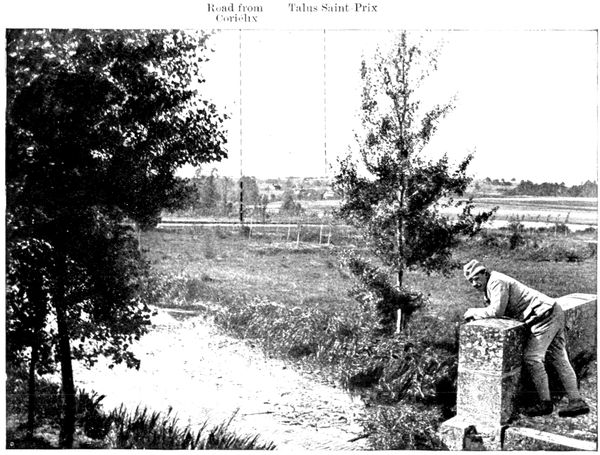
THE MORIN LEAVING THE MARSHES
- Road from Corfélix
- Talus-Saint-Prix
[Pg 168]
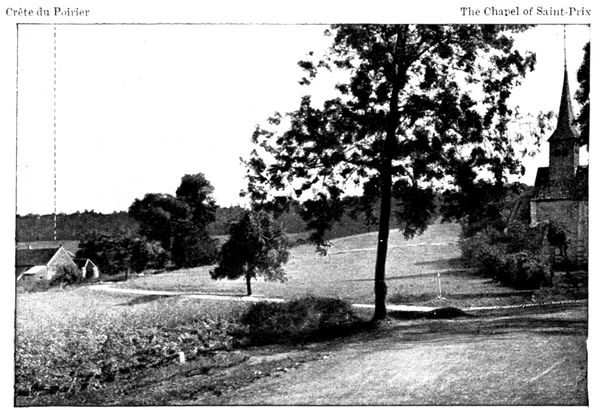
THE HEIGHTS OF SAINT-PRIX (to the west of the road)
- Crête du Poirier
- The Chapel of Saint-Prix
The heights of Saint-Prix form the northern edge of the Plateau of Sézanne,
on which depended the liaison between the Fifth and Ninth French Armies.
The Germans had bitten into the plateau on the west and on the north-west
at Esternay, Charleville, and La Villeneuve, which we have already visited.
They tried to complete their success by attacking also on the point now
before us.
On the left of the road (view above) may be seen the little Chapel of Saint-Prix,
below Botrait Woods. On the bare part of the summit are the remains
of the trenches in which the Germans had placed machine-guns. Further
to the left is the "Crête du Poirier" which was so bitterly disputed. To
the right of the road (view below) appear the woods of the Grandes-Garennes
which clothe the heights towards Corfélix.

- Woods of Grandes-Garennes
- Valley of the Morin towards Corfélix
- Petit Morin
THE HEIGHTS OF SAINT-PRIX (to the east of the road)
[Pg 169]
On N. 51, in the
Woods of Botrait
and the Grandes-Garennes,
attacks
and counter-attacks
followed
each other during
four days. The
thickets were the
scene of fierce
hand-to-hand
struggles. In the
rare clearings the
combatants sheltered
themselves
in hastily-dug
trenches. This
stubborn resistance
exasperated
the Germans; and after the battle witnesses found a company of Algerian
sharp-shooters whose brains had been beaten out by blows from the butt-end
of rifles. This fact is vouched for by the Inquiry Commission. Other
corpses belonging to the same regiment had been placed in a ring round
a fire which had burnt all the heads.
The battle continued until the French, after having silenced the German
guns at Le Thoult and Corfélix (see p. 157), finally reached Corfélix and
the Morin. Advancing along the valley (seen in the views at the foot of
p. 167, and at the top of p. 168), they debouched on the flank of the enemy's
troops deeply engaged in the interior of the Plateau of Sézanne.
The manœuvre of September 9 was decisive. Attacked on flank and
front, and driven from the woods, the Germans re-crossed the Morin; while
their rearguards fought desperate covering engagements, of which the
chapel and its little cemetery (seen in the view above), the machine-gun
trench (seen in the photograph at the top of p. 167), and the neighbourhood
of the station of Talus-Saint-Prix were, in particular, witnesses. The retreat
however continued briskly, and on September 10 the Tenth Corps, which
had performed the outflanking movement, was able, setting forth from
the Champaubert-Saint-Prix front, to sweep the whole of the north of
the marshes.
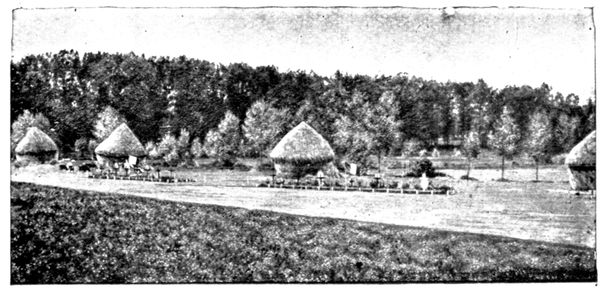
Follow the zig-zags which N. 51 makes to climb the slope and continue
towards Soizy-aux-Bois (45 km.). On this road, and in the woods which
border it, the 42nd Division met with a repulse at the hands of the German
troops who, on the 7th, took Soizy and even pushed on to Chapton (we
passed through this village before arriving at Sézanne). On the 8th, the
162nd Line Regiment counter-attacked and carried Soizy at the point of
the bayonet; and
on the 9th, as we
have seen above,
the Germans were
driven back across
the Morin.
Soizy still
shows the ruins of
houses destroyed
by bombardment
or fire. After
glancing at them
return to the[Pg 170]
entrance to the village and take (on the left looking towards Soizy) G. C. 44
in the direction of Oyes.

I. PANORAMA OF THE "CRÊTE DU POIRIER" AND BOTRAIT WOODS
- Botrait Woods.
- Crête du Poirier.
- North bank of Marshes.
Almost immediately after, on the left, below the level of the road, may
be seen two large graves, where the French soldiers who fell during the
combats at Soizy were buried (view p. 169). The Germans were buried to
the right of these graves.
Cross through the woods of Saint-Gond. Sign-posts indicate that military
graves exist in the thickets, and recall the hand-to-hand struggles which
took place here during the fluctuations of the battle round Soizy.
Descend again towards the marshes between the "Crête du Poirier" on
the left and the heights on Montgivroux on the right. Before arriving at
Oyes there appears on the left a chalky road with a quarry on its right,
leading to the top of a hill.
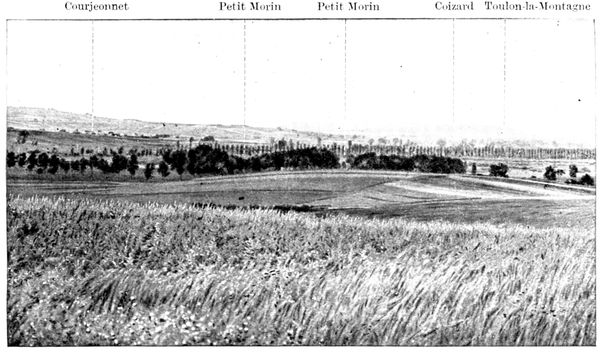
II. PANORAMA OF THE MARSHES AND THEIR NORTH BANK
- Courjeonnet
- Petit Morin
- Petit Morin
- Coizard
- Toulon-la-Montagne
[Pg 171]

III. PANORAMA OF THE MARSHES AND THEIR SOUTH BANK
- Broussy-le-Grand
- Mont-Août
- Reuves
- Oyes
Follow this road, on the left of which are remains of trenches. 150 yards
from its commencement may be seen an interesting view, of which the photographs
on pp. 170-171 give fragments.
The summit on which we now stand is connected by a little valley with the
summit of the Poirier seen on panorama I. These two heights constituted
on the north the advanced line of defence of the heights of Mondement.
Panorama IV. shows the position of Mondement which will be visited in
due course. The castle and the church may be perceived. The road in
the foreground, in the centre of this panorama, is the one which we took
to climb the hill.

IV. PANORAMA OF MONDEMENT
- Allemant Woods
- Mondement Castle
- Mondement Church
[Pg 172]

ENTRANCE TO
THE PRIORY OF
SAINT-GOND
The line of the Poirier was the object
of furious combats. The "tirailleurs"
of the Moroccan Division had
dug trenches there in order to protect
themselves against the withering fire
of heavy and light artillery which the
Germans directed from the north of
the marshes. When the Germans had
succeeded in crossing the Morin by the
bridge at Saint-Prix, they penetrated
into Botrait woods (panorama I.) and
attacked the Poirier. They drove
the sharp-shooters from the summit,
and then from the southern slopes
where the latter had made a stand.
On September 8 a bayonet charge
brought the Poirier again into the possession
of the sharp-shooters, but the
German artillery rendered the position
untenable, and they were obliged
to evacuate it and fall back on the
heights of Mondement-Montgivroux.
At the same time Blondlat's Brigade
which held Oyes and Reuves (panorama
III.), was thrown back on the
Allemant Woods by superior forces which had managed to cross the marshes.
The position of Mondement had thus lost all advanced protection and
so fell on the following day, but the same evening it was retaken (see pp.
176-178), and from this moment the battle was lost for the Germans. The
Tenth Corps, by means of its outflanking movement described on p. 169,
obliged them to re-cross the Morin at Saint-Prix (below Botrait Woods,
panorama I.). The flank of the marshes was thus turned. During the night
of the 9th-10th, the German troops hurriedly regained the northern edge by
the causeways running from Oyes, Reuves, and Broussy (panorama III.).
Rejoin G. C. 44 and turn to the left towards Oyes (50 km.). The village
still bears traces of the bombardment during its heroic defence by Blondlat's
Brigade. Turn to the right, thus leaving the church on the left, and, passing
through the village, turn to the left to regain the marshes, in the middle of which
stands the old Priory of Saint-Gond. The entrance, seen in the photograph
above, is on the right of the road (51 km.).
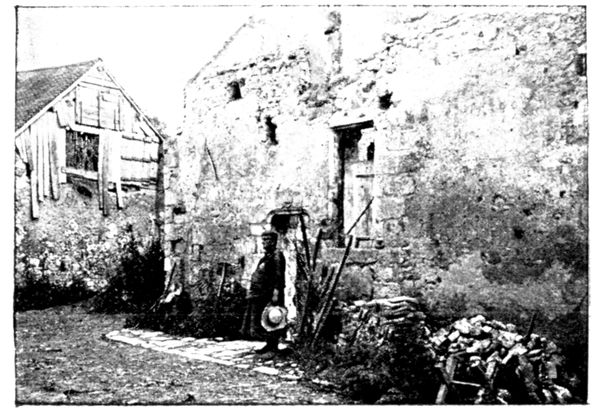
INTERIOR OF
THE PRIORY OF
SAINT-GOND
Saint-Gond, who gave his name to the marshes, was a seventh century
hermit. Charmed by the solitude of the spot, he there founded a little
monastery. Destroyed during the barbaric invasions, then rebuilt, it became
an abbey and later a priory, after which its decline was rapid. All that
remains to-day consists of the
entrance (view above), and in
the interior, a door (seen on
the opposite view behind the
Abbé Millard). The Abbé
Millard who occupied the
priory is an elderly ecclesiastic
who divides his time between
studies and rural tasks. In
the photographs on this page
he is seen in the simple
apparel which he prefers.
He is a distinguished historian
and member of several
learned societies.
[Pg 173]

REUVES
CHURCH
AFTER THE
BOMBARDMENT
The Abbé Millard, who was
recovering from a long illness,
reluctantly left his hermitage a
little before the arrival of the
Germans. The sharp-shooters
had established on the road
opposite his house a barricade
flanked by machine-guns behind
which they tried to stem the
German advance; but the latter
surmounted this obstacle and
advanced on Oyes.
Leaving the priory, we come
across the road which runs from
Villevenard, on the right of the
marshes, to Oyes and Reuves, on the
left. This was the road taken by
the Germans who attacked Oyes
and Reuves for three days. They
suffered heavy losses from the
fire of the French artillery
which swept Villevenard and
the causeways, but came resolutely
on and carried the two
villages on September 8, in spite
of the heroic defence of Blondlat's
Brigade.
At the cross-roads turn to the right towards Reuves (53 km.) and traverse
its length. It suffered terribly. The views on this page show the state of
the church after the bombardment.
Turn to the right at the end of the village, leaving on the left the road which
continues to follow the edge of the marshes in the direction of Broussy. This
village fell at the same time as Oyes and Reuves, having been attacked
by the German troops coming down from Joches and Coizard. Immediately
on leaving the village, take, on the left, G. C. 45 and make towards
Mondement.
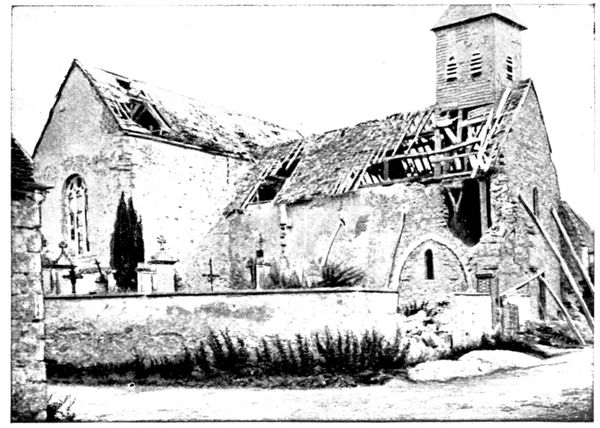
REUVES
CHURCH
AFTER THE
BOMBARDMENT
We are following the last stage of the German advance. On the morning
of September 9, the troops which had taken Oyes and Reuves, after
having been reinforced during the night, assailed the Heights of
Mondement
and wrenched
from the grasp
of the few
remaining
Zouaves and
sharp-shooters
the castle,
the church
and the village.
The road
passes before
the castle
(56 km.)
whose fame
since the
war has become
worldwide.
[Pg 174]
On September 6, 1914, the owners, Mme. Jacob and one of her sons,
were still at Mondement. The bombardment by the German big guns
on the north of the marshes began on the morning of the 7th. The inhabitants
of the castle,
together with the
"curé" of Reuves, who
had come to join them,
passed many anxious
hours. The cellar, in
which they had taken
shelter, almost fell in
on them. It was useless
to think of seeking
refuge in the neighbourhood
of the castle,
for the shells fell like
hail. Their motor-car
had been destroyed (as
may be seen in the
photograph at the foot
of p. 178) and the only
horse in the stable had
been killed.

A CORNER
OF THE CASTLE
PARK
There was nothing
left for it but, at night,
to set out on foot
along the road to
Broyes, in spite of the
feeble state of M. Jacob,
who was suffering from
heart-disease.
They were picked up
fortunately by a motor-car
sent by General[Pg 175]
Humbert, but
M. Jacob died
a few days afterwards,
as a
result of the
shock and of
the fatigues
which he had
experienced.
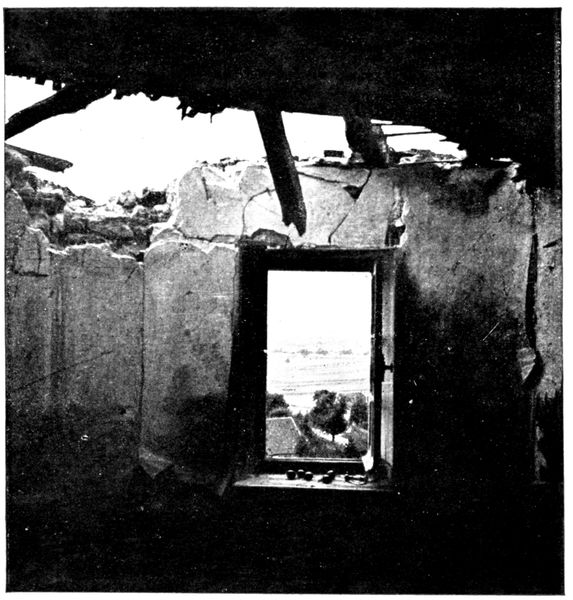
THE MARSHES
SEEN FROM
A WINDOW
IN THE
NORTH-EAST
TOWER
On the 7th,
General Humbert
established
his headquarters
in the castle,
which made a
splendid observation
post.
He followed
the course of the
battle through
his field-glasses
from the foot
of the towers.

NORTHWESTERN
ANGLE OF THE
CASTLE
When the
shells fell too
thickly on the
castle, he gained
the little
church near at hand (from which the panorama on pp. 182-183 is
taken), and came back to the castle when the Germans began to
direct their fire on the church-tower. During these comings and goings,
a shell fell among his escort and killed several horsemen. As the
bombardment continued
to increase in violence,
the headquarters were
transported to the "Castle
des Pucelles" at
Broyes, which we
have already seen (p.
159).
The road goes round the
castle. The opposite photograph
gives a side view
of the façade. The tower
at the end has been cleared
of the ivy which covers
it (in the photograph on
p. 174), and completely
restored. The ruined roof
has been removed, in order
to give place to a new
one. In the foreground
is a tree which has been
felled by a shell. Shells
from the '105's' and '150's'
laid low many others,
sometimes killing at the
same time the persons who
had sought shelter under
them.
[Pg 176]

THE CASTLE,
WESTERN
FRONT
Take the Broyes
road which passes
before the principal
entrance
(photograph opposite).
The two
heraldic lions
surmounting the
pillars of the
gateway are worthy
of notice.
The roofs of the
buildings were destroyed
by shells,
and the main-building
opposite
the gate has a temporary
zinc covering.
In the field on
the other side of
the Broyes road is
the grave where
the Zouaves and
other foot soldiers,
who fell during
the attack on the
castle, were buried
(photograph opposite).
After the entrance
gate come
the out-buildings,
and then the
kitchen-garden,
whose wall we
skirt.
[Pg 177]

THE CASTLE
AS IT APPEARED
TO THE
ATTACKING
TROOPS
The above view shows the two sides on which the French attacked on
the afternoon of September 9. The trees behind the kitchen-garden
are those of the park. On the right of the horizon, and separated from
Mondement by a hollow, are Allemant Woods.
The castle was taken by the Germans at daybreak on the 9th, and was
immediately put into a state of defence. Loop-holes were made in the
walls, and machine-guns placed on the towers and at prominent windows.
The 77th line Regiment which was reforming at Saint-Loup (see pp. 162-163)
was directed in all haste to Mondement to counter-attack. Colonel
Lestoquoi placed a battalion on either side of the Broyes Road in the woods
which come to an end a few hundred yards from the south side of the kitchen-garden.
The Zouaves and sharp-shooters of the Moroccan Division, also
hidden among the trees, were to attack on the other side, by the principal
entrance.
The artillery preparation was entrusted to the guns of the Moroccan
Division, aided by the batteries of the 42nd Division, which had halted at
Broyes before descending into the plain (see pp. 162-163).

BREACH IN THE
SOUTHERN
WALL
OF THE CASTLE
The attack began
at 2.30 p.m.
Major de Beaufort's
battalion,
composed of Bretons,
to whom one
of their comrades,
a soldier-priest,
had just given the
absolution, left
the woods, their
bugles sounding
the charge. A
murderous fire
met them from the
castle, but could
not stop them.
A breach had been[Pg 178]
made in the wall by one of the French "75's," and towards this Major de
Beaufort rushed, only to fall struck by a ball in the forehead. Officers
and men succeeded him, but as soon as they appeared in the opening the
fire of the machine-guns and rifles, hidden in the out-buildings (photograph
above) was concentrated upon them, and they succumbed before even
reaching the garden. A few, hoisting themselves on the shoulders of their
fellows, gained the summit of the wall, but an entry in mass, which alone
could have ensured success, was impossible.

On the other side, the attack of the Zouaves and sharp-shooters had met
with equally great difficulties. Sheltering themselves behind the trees on the
road and the pillars of the railings, they sniped at the occupants of the castle
without being able to advance.
At the end of an hour of costly efforts, orders were given to fall back, and
the troops retired into the woods from which they had set out.

DÉBRIS OF
THE CASTLE
MOTOR-CAR
Pieces of artillery were then dragged by the men to within three or four
hundred yards of the castle. The breaches in the wall increased, the railing
collapsed in parts, and the interior of the castle became untenable. When
the French renewed
the attack at nightfall,
they no longer
met with resistance,
for the garrison
had fallen back on
the marshes. The
retreat had become
general on
the front of Von
Hausen's and Yon
Bulow's armies.
The bombardments
devastated
the interior of the
Castle. The views
on this page show
to what a state[Pg 179]
were reduced the out-buildings from which came the terrible fire rendering
the passage of the breach so difficult.
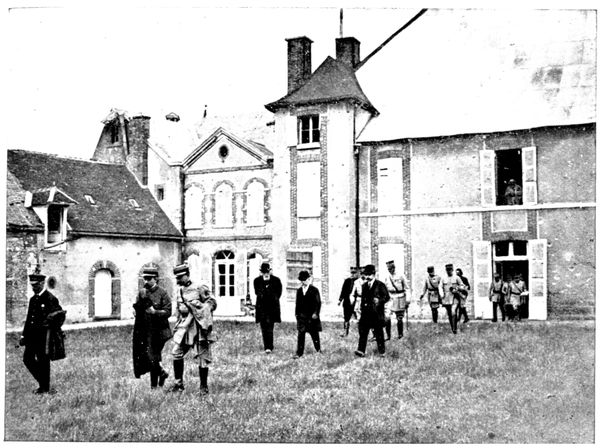
VISIT OF THE
PRESIDENT OF
THE REPUBLIC
On September 6, 1917, the third anniversary of the Battle of the Marne
was celebrated at the castle of Mondement. The President of the Republic,
accompanied by the President of the Council and several ministers, as well
as by Field-Marshal Joffre, General Foch, and General Pétain, stopped at
Mondement on his way from Fère to Sézanne, after having visited the
Plateau of Rochelle near Fère-Champenoise (see p. 188).

VISIT OF THE
PRESIDENT OF
THE REPUBLIC
[Pg 180]

GENERAL FOCH
DESCRIBING
THE BATTLE
OF THE MARNE
In the photograph at the top of p. 179 we see the group leaving the castle
by the principal entrance. The walls, under their temporary roof, still show
traces of shot and shell. M. Poincaré may be seen between M. Ribot,
President of the Council, and M. Painlevé, War Minister. Field-Marshal
Joffre is behind.
The photograph at the foot of p. 179 was also taken during the official
visit of September 6, 1917. The tower on the left is the one seen on p. 174
from the exterior. On comparing the two photographs, we realise that
the signs of war are fast disappearing at this point. In the middle, near
the wall, the group formed by M. Poincaré, M. Ribot, M. Bourgeois, Field-Marshal
Joffre and Generals Foch and Pétain, may be distinguished.
Those who took part in this pilgrimage had the good fortune to
hear an account of the events of September, 1914, from the lips of
General Foch. The above photograph was taken whilst, in quiet but
moving terms, he described the different phases of the desperate battle
fought by the
Ninth Army from
September 6 to 10.
This extempore
military lecture
took place at the
foot of a walnut-tree
which stands
in the meadow
before the castle.
On pp. 182-183
may be seen the
view of the
marshes which
appeared to the
eyes of the audience.
[Pg 181]
Opposite the turret seen in the photograph at the foot of p. 175 take a path
leading to the church, which suffered much from the bombardments, but
whose breaches have now been repaired.
In the little graveyard (photograph p. 180) which surrounds it are buried
the officers who fell at Mondement; among them Major de Beaufort, who
commanded the attack, and Dr. Baur, killed by a shell which at the same
time split the tree against which he was leaning.
General Humbert followed the march of events from the foot of the
church, on the side facing the marshes (view above), when the castle became
untenable. It is from this point that the panorama on pp. 182-183 was
taken, and which will now be described.
In the foreground of panorama I (pp. 182-183) may be seen the houses
of Mondement, which village was carried by the Germans at the same time
as the castle and church, at daybreak on September 9. The French on their
victorious return the same evening, drove out the remaining occupants,
firing on them as they hastened down the slopes to the Marshes.
On the right may be seen Reuves and the road connecting it with
Mondement. Oyes is visible on panorama II. We can easily follow the
course of the German attack. After having crossed the marshes, the Germans
drove Blondlat's Brigade of the Moroccan Division from these villages on
the 8th. The following day the handful of Zouaves and sharp-shooters
remaining in the castle, church and village, were forced to retire into the
woods near Broyes.
On panorama II, the hill-top from which the panorama on pp. 170-171
was taken may be distinguished, as also the "Crête du Poirier" which
carries it to the left towards Botrait Woods. This advanced line was, as
we have seen, fiercely disputed, the bombardment being terrible. In his
fine work on the Marshes of Saint-Gond, in which he relates the memoirs
of M. Roland, schoolmaster at Villevenard, M. Le Goffie tells us that the
percentage of German shells as compared with the French, was five to
one, and he cites a detail which illustrates the German character. "The
great '150' shells made a noise like a siren, and drew shrieks of joy from
those assembled. 'Oh, Germany,' bleated an old doctor, lifting his eyes
to heaven each time that one of these steel monsters went bellowing
forth."
[Pg 182]

I. PANORAMA OF THE MARSHES OF SAINT-GOND.
- Petit Morin
- Toulon-la-Montagne
- Reuves
- Petit Morin
This portion of the
panorama fits on to the right of
panorama II (p. 183).
[Pg 183]

I. PANORAMA OF THE MARSHES OF SAINT-GOND.
- Botrait Woods
- Saint-Gond Woods
- "Crête du Poirier"
- Point from which was taken the panorama of Mondement (p. 171)
- Oyes
This portion of the panorama
fits on to the left of
panorama I (p. 182).
[Pg 184]
When the Germans had taken "Le Poirier," they advanced on the Woods of Saint-Gond, in whose thickets violent combats took place. A final effort carried them on September
9 on to the plateau at Montgivroux (see p. 184), a little to the west of Mondement, which fell likewise in its turn, under the direct attack from the marshes. This important
success, however, came two days too late. The Tenth Corps was menacing Mondement on the flank, and the intervention of the 42nd Division (see p. 14) destroyed the
Germans' hope of taking the plateau on the Broyes-Allemant side. The counter-attack of the 77th (see p. 177-178) precipitated their retreat. Driven from the castle, the Germans
re-crossed in haste during the night of September 9-10 the great dike of Saint-Gond. They left baggage and numerous wounded along the causeways. The Germans of
1914 were more fortunate than the conscripts of 1814, for whom the
marshes formed a grave. In the darkness they escaped the fire
which the French batteries at Mondement and Allemant would have
poured on them in daylight. When the Tenth Corps began its march
eastwards on September 10, starting from the Champaubert-Saint-Prix
front, it was able to sweep the north of the marshes and pick up the
laggards and heavy beer-drinkers, to whom the champagne had rendered
bad service.
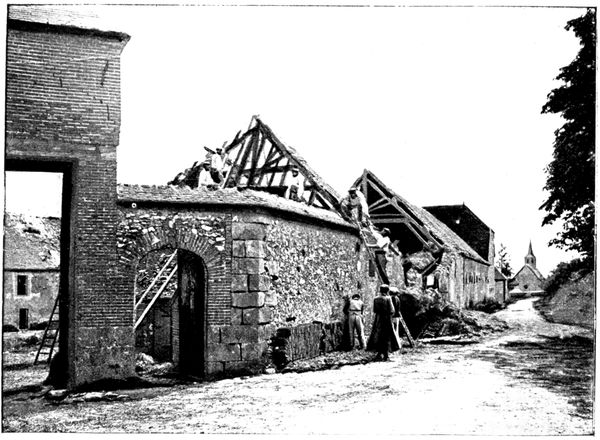
After having examined the panorama of the marshes, return to the road
which leads to the church and continue it in the direction of the farm, seen
in the photograph above. It suffered much from successive French and
German bombardments. As may be observed, the work of reparation
has begun.
The French, when driven from the farm, took shelter in the wood a few
hundred yards away on the other side of the road. It was from the wood
that they began the counter-attack which gave them back the farm, as well
as the castle and the church.
We retrace our steps to the castle, leaving the road which continues to follow
the edge of the plateau in the direction of Montgivroux, and rejoins No. 51, below
Soizy. This part of the plateau was carried by the German attacks coming
from the Poirier and the Woods of Saint-Gond (see p. 170). The "tirailleurs"
fought heavy engagements at this point.
On returning to the castle take the Broyes road (G. C. 45) which passes before
the gates, then pass through the woods in which the 77th and the troops of
the Moroccan Division which took Mondement found shelter, and so on to
Broyes and the Castle des Pucelles which we saw at the beginning
of our excursion.
Turn to the right into G. C. 39 and cross the village. At the cross-roads
beyond Broyes, turn to the left and return to Sézanne, down a long slope which
offer a fine view of the plain and of the heights surrounding it. At the crossing
beyond the cemetery take the Rue de Broyes. In the middle, turn to the right
and regain the hotel (65 km.) for lunch, by way of the Rue de la Halle and the
Place de la République.
[Pg 185]
FROM
SÉZANNE TO CHÂLONS-SUR-MARNE
(106 km.)
via Connantre, Fère-Champenoise, Connantray, Sommesous,
Haussimont, Vassimont, Lenharrée, Normée.
Return to the Place de la République and descend towards the lower part
of the town by the Rue des Lombards; without crossing the railway turn to the left
along a road planted with trees. This is N. 34, which traverses the plain in a
perfectly straight line, and which is to be seen in the panorama on pp. 160-163.
On the left, on the horizon the heights of Sézanne, Broyes, Allemant, and
Mont-Chalmont are once more visible.
After a run of 10 km. we reach the villages of Linthes and Linthelles, from
which the counter-attack of the 42nd Division started on September 9.
At that time, in the plain stretching to the left of the road, the French
troops, which had been driven from the edge of the marshes and even from
Mont-Août, were falling back southwards. With them, too, were those
who had been pushed back from the line of the Somme on to Fère-Champenoise,
Connantre, and still further beyond. These troops, although worn
out by four days' fighting, and exposed to violent artillery fire from the north,
east, and south, would not give in, and took every opportunity for rearguard
actions.
The coming into the line of the 42nd Division braced up their forces for
the supreme effort asked by Foch.
We are following the axis of the French march during this counter offensive,
the first result of which was the relief of Connantre. This village may
be seen from the road, on the right, before traversing the level crossing. 100 yards
further on is the entrance to Connantre Castle, in which the Light Infantrymen
took prisoner several hundred Guards.
[Pg 186]
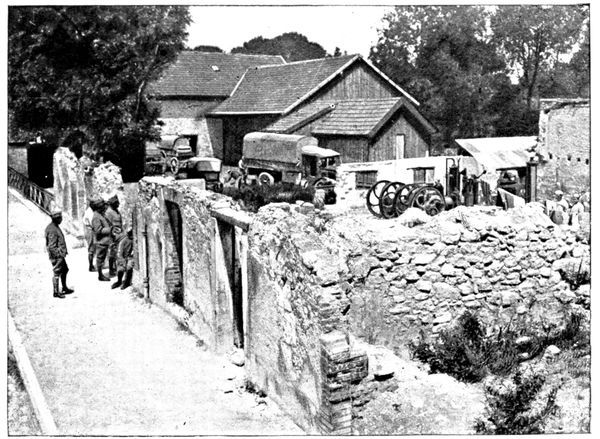
RUINS OF THE
ELECTRIC
POWER STATION
The road goes straight towards Fère-Champenoise across the plain, which is
dotted here and there with clumps of trees. At Fère-Champenoise (21 km.)
turn to the left into the "Grand-Place" in order to reach the station, which is
about 900 yards away. This was much damaged by bombardment. About
300 yards on the right, by following the railway lines, may be seen the grave in
the photograph below.
The fighting around the station was very violent.
We retrace our steps to the Grand-Place Square, turn to the left before the
town-hall, and, passing it, take the first street on the right in the direction of
Sommesous and Vitry-le-François. In this street, on the left, are the ruins
of the electric power station (view above), and on the right a few burnt houses.
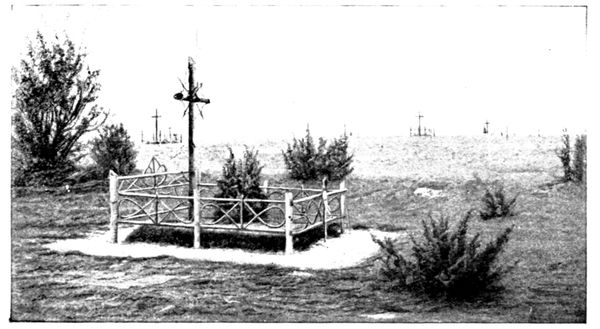
PLATEAU OF
ROCHELLE
SEEN
FROM THE ROAD
Fère-Champenoise fell into the hands of the Germans on September 8
when the heroic defence of the Eleventh Corps had been broken on the line
of the Somme, over which we are about to travel. The reserve of the guards
pillaged as a matter of course, and celebrated noisily the German victory.
Near the town-hall a piano was brought into the street to accompany
the dance of the soldiers, attired in all sorts of headgear, taken from the
window of a neighbouring hatter. Wine flowed, and the streets were
strewn with
empty bottles. It
was in the midst
of these rejoicings
that the order to
retreat arrived
like a thunderbolt
on September
9. On the
10th, General
Foch made Fère
his headquarters.
On leaving the
town we come
across fan-shaped[Pg 187]
cross-roads and take the road farthest to the left. 200 yards along this, take the
lane on the right, following the edge of the hill which dominates the Vaure.
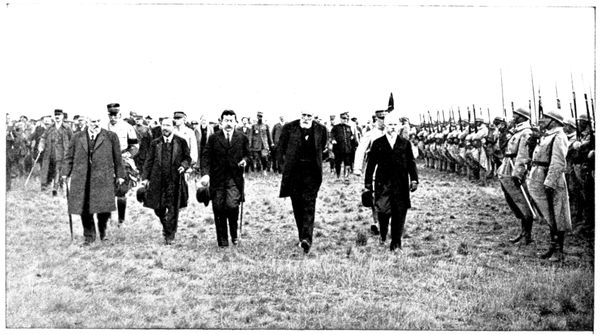
REVIEW
ON THE
PLATEAU OF
ROCHELLE
After climbing 2½ km. the summit of the hill is reached. On the right of
the road stretches the plateau of Rochelle, dotted with clumps of pine and
covered with graves. Leave the car at the spot indicated in the photograph at
foot of p. 186 and set out on foot towards the centre of the plateau.
The third anniversary of the victory of the Marne was celebrated on the
plateau on September 7, 1917. In the photograph above may be seen
(from right to left) the President of the Republic, General Pétain (half
hidden by M. Poincaré); M. Ribot, President of the Council; M. Painlevé,
War Minister; M. Chaumet, Marine; M. Bourgeois, Public Works. Field-Marshal
Joffre is in the background.
The tourist who, during the tour of the Ourcq, visited the plateau of
Barcy-Chambry, will experience with even greater intensity the impression
of sadness which is evoked by the calm landscape and the numerous graves,
signs of the fierceness and obstinacy of the battle.

VIEW OF THE
PLATEAU OF
ROCHELLE
A remnant of the Eleventh Corps, which had been driven on the 8th from
the woods to the west of Normée (see p. 194), made a gallant stand on the[Pg 188]
summit and sides of the plateau in the pine thickets and in improvised
trenches which still exist here and there.
One of the most moving incidents was the defence of the standard of
the 32nd. Two hundred men belonging to the 66th and the 32nd Regiments
were hemmed in a little wood near the Vaure, having with them the standard
of the 32nd, whose bearer had been killed. All the officers were dead or
missing, only a few adjutants and sergeants remained. These asked Sergeant-major
Guerre of the 66th, a man of energy and resource, to take command.
The handful of heroes then formed a square and succeeded in repulsing
the attacks of the enemy, until the arrival of a field-piece rendered the
position in the wood untenable. Guerre divided his remaining troops into
small companies, then charged with the bayonet where the enemy was
strongest. A machine-gun soon laid the brave fellow low. The other companies
took advantage of this diversion to rejoin the French lines. Thirty
men in all were able to do so. Private Malvau and his comrade Bourgoin
brought back the standard. They lost themselves in the German lines, but
were put on the right path by an officer of the guards, suffering from a bad
wound which they dressed for him.
After visiting the Rochelle plateau we retrace our steps towards Fère and at the
entrance to the village take, on the left, N. 34 in the direction of Sommesous.
Pass straight through Connantray (33½ km.) to arrive, after traversing
a level-crossing, at Sommesous (44½ km.).
The station is on the left of the level-crossing. It changed hands
several times during the desperate encounters which took place here.
Graves were dug in the little station garden on the left to receive
the bodies of the soldiers of the 60th (reserve) Division who fell on
this spot.
Follow N. 34 for about 200 yards in Sommesous, then turn to the left into
N. 77. The combats were particularly violent at the junction of these
two roads. Next, take the second street on the left, seen in the photograph
below, in order to reach the centre of the village. Sommesous was entirely
destroyed by bombardment and by fire, but is slowly rising again from its
ashes.
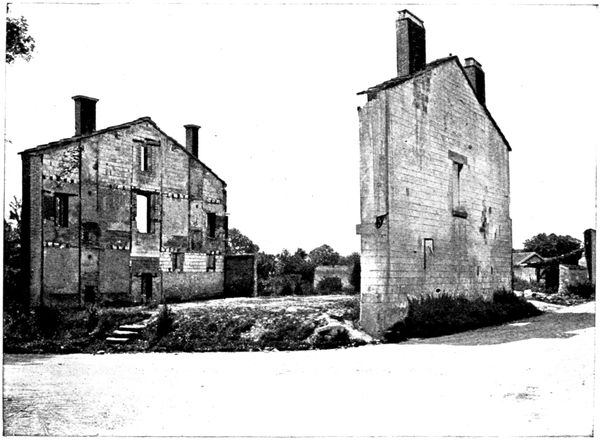
RUINED
HOUSE AT
SOMMESOUS
[Pg 189]
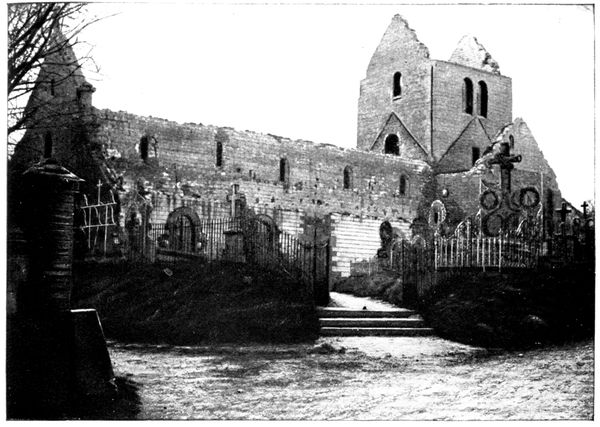
THE CHURCH
AFTER THE
BOMBARDMENT
The church, of which the photographs on this page show the state
after the bombardment, is on the right of the street, towards the end
of the village. It is now being restored.

THE CHURCH
AFTER THE
BOMBARDMENT
In going from Sommesous
to Écury-le-Repos
we traverse the line of
the Somme which the
Eleventh Corps and the
60th (reserve) Division
defended so energetically.
This line was formed by
the river, and by the
railway which follows
it at a little distance,
along the plateau of the
left bank. On September
6 and 7 this position
was held by the
French against furious
attacks by Saxons and
Guards supported by
artillery. On the 8th the
French troops, heavily
outnumbered, were
obliged to withdraw to
Connantray and Fère-Champenoise.
September 9 witnessed
Foch's counter-attack,
which reached
the Somme on the
10th and crossed it, on
the 11th, in pursuit of
the enemy.
[Pg 190]
Naturally at the bridge-heads of Sommesous, Haussimont, Vassimont,
Lenharrée, Normée, and Ecury some of the most obstinate fighting took
place; thus the ruins there are numerous.
On leaving Sommesous, the road crosses the railway on the level and goes
towards Haussimont, skirting the Somme, the valley of which lies to the left.
At Haussimont, cross the Somme and turn to the right into G. C. 18 in order
to enter and pass through the village. A few houses are still in ruins, but many
have been rebuilt.
[Pg 191]

ROAD
IN HOLLOW,
LENHARRÉE
G. C. 18 continues between the Somme and the railway towards Vassimont
(where we cross the river again). Turn to the left in order to traverse this
locality, which was much damaged, as may be seen in the view on p. 190.
Leaving the village, take the first road on the left and cross the Somme. 500
yards further on is the hamlet of Chapelaine, with its castle of the same name
(photograph p. 190). The fighting was intense at this point.
Return to G. C. 18 and turn to the left towards Lenharrée (54 km.). Arriving
there, we have on the left (on the right in the view above) the road, which
descends to the river. The many graves around indicate the fierce struggle
for the possession of the ford.

GRAVE IN A
FARM-YARD,
LENHARRÉE
[Pg 192]
Lenharrée formed a bridgehead on the right bank. The French held it
on September 6 and 7 under a heavy fire, but on the morning of the 8th
the two companies of the 225th, who, by good shooting and frequent bayonet
charges, had held at a respectable distance a much superior German force,
were obliged to withdraw towards Connantray. The Saxons and the Guards,
holding Normée, had managed to advance down the left bank and thus
threatened to take the defenders of Lenharrée in the rear. Of this small
force all the officers and non-commissioned officers were lying dead or wounded
around Captain de Saint-Bon, who himself fell as he gave the order to retire.
"Never mind me," he said to his soldiers, who wanted to carry him away
with them, "Don't be killed trying to save me."
[Pg 193]
After their withdrawal
on September
8 and 9
the French returned
to the
neighbourhood of
Lenharrée. This
they reached on
the 10th and entered
the next day.
They found in a
barn 450 wounded
Germans and 150
French. The terrible
struggle had
drenched the village
with blood
and reddened the
waters of the river. "There are heaps of German dead everywhere," wrote a
witness, "in the streets, in the cellars, in the church, and in the cemetery. One
walked on them without being aware of it. Behind a hedge ten yards in length I
counted twenty-two; a hole in a rock five to six metres deep was a regular
charnel-house."
Graves in the courtyards of the houses recall the hand-to-hand fighting.
There is one in the large ruined farm seen in the photograph on p. 191. This
farm is on the right after the first group of houses at the entrance to the
village, fifty yards beyond the cross-roads seen in the view at the top of p. 191.
During the German occupation an old inhabitant, M. Félix, was killed
by blows from the butt-end of the rifles of the German soldiers whom he
tried to prevent from pillaging his house.
Going through the village, leave the church on the right. We come to the bridge
around which are the graves of the men who fell during the combats on this
bitterly disputed spot (photograph p. 192).
Cross the bridge and turn to the right; 50 yards further on, take, on the left,
the road leading through a cutting to Lenharrée railway station (800 yards).
Numerous graves border the railway and the road, for the struggle,
which began at the Somme, continued on the railway before spreading
under German pressure to Fère-Champenoise, Connantray, and beyond.
Return to G. C. 18, in which turn to the left. The road commands
the Somme, and here the troops of the eleventh Corps established
trenches along the river bank in order to obstruct the passage. The
view on p. 192,
taken about 1 km.
beyond Lenharrée,
shows one of
these trenches in
which is a German
grave.
On the left, the
plateau of which
G. C. 18 follows the
edge, is dotted
throughout with
graves, the fighting
being particularly
desperate here on
the 6th and 7th.
Engagements also
took place on the[Pg 194]
plateau on the opposite
bank. The
91st line Regiment,
coming up from
Lenharrée, particularly
distinguished
itself during
a night attack on
the guards.
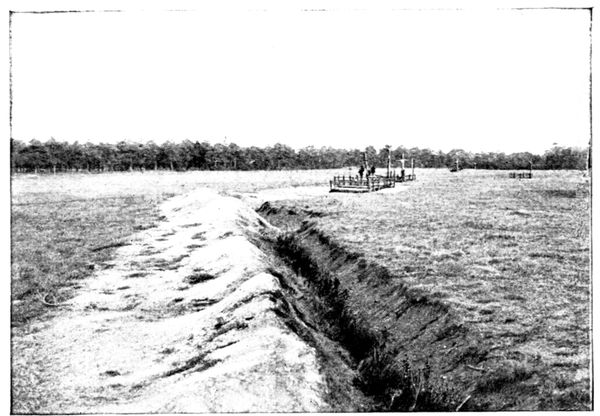
OLD TRENCH
NEAR
THE SOMME
AT ÉCURY
We arrive at
Normée (59 km.),
which suffered
much from bombardment
(see
p. 193). Shells fell
so thickly that
the village was
evacuated on the
6th, the troops retiring to the railway line and to the woods around.
In order to visit this portion of the battlefield, turn to the left immediately
after leaving Normée, into G. C. 5, which goes towards Fère-Champenoise. 2
km. further on is the level-crossing (view p. 193) which became famous after
the events of September 6-8.
Leaving the car at the gate, cross the line on foot. In a clearing on the left
(view below) may be seen the old French trenches and the graves which
were afterwards made near by. Other trenches are to be seen in the pine
woods which line the road.
The Colonel commanding the 42nd Brigade was killed whilst defending
this level-crossing.
The German attacks, violent enough on the 7th, redoubled in fury on
the 8th; the line of defence was pierced and the 35th Brigade, stationed
in the woods adjoining the plateau of Rochelle, previously visited (see p. 187),
had to fight under difficult conditions. Certain sections were surrounded,
and only fought their way out with heavy loss, all the officers being killed.
It was under these circumstances that the fine defence of the standard
of the 32nd line Regiment, related on p. 188, took place.
Return to G. C. 18 and turn to the left in it towards Écury-le-Repos. 200
yards before arriving at the village, in a field on the right of the road overlooking
the Somme, is an old trench which has been used as a grave (view above).
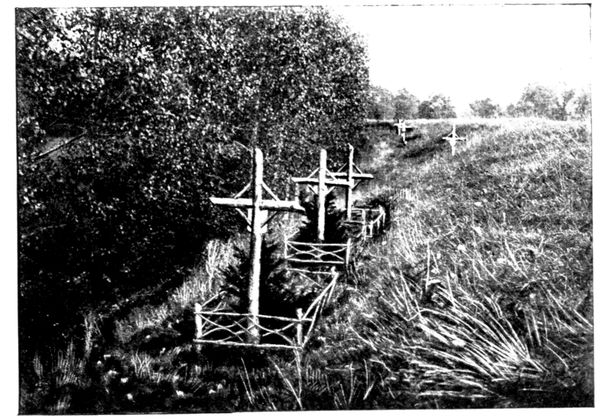
TRENCHES AND GRAVES NEAR THE LEVEL-CROSSING AT NORMÉE
[Pg 195]

HOUSES
BEING REBUILT
AT MORAINS
In Écury (67 km.) turn to the left beyond the church, then take the first
street on the right towards Morains-le-Petit. A few trenches are to be seen
here and there, and graves are still numerous.
Morains-le-Petit (70 km.) is rising from its ruins, as the photograph above
shows. Turn to the right in the village, then to the left on leaving it, into
G. C. 9 in the direction of Bergères-lès-Vertus. We are now in the theatre
of operations of the 17th Division and of the 52nd (reserve) Division. The
task of the troops forming the right wing of the Ninth Corps was to prevent
the marshes from being outflanked on the east. They held on bravely,
but were obliged to retire to Mont-Août on September 8, their right having
been left exposed by the withdrawal of the Eleventh Corps.
At 100 yards from Morains is the source of the Morin, which at this point
is a tiny rivulet, often dry in the summer. The ditch in which it flows was
used as a trench in the battles of 1914.
The view below, taken on the left of the wood, shows this ditch bordered
by a few shrubs and surrounded by graves.

TRENCH AT
THE SOURCE
OF THE MORIN
[Pg 196]
The road continues towards Mont-Aimé, which we reach about 5 km. beyond
Morains. This hill, 750 feet high, appears a veritable mountain as it rises
solitary in the midst of the great Plain of Champagne.
Leave the car on the road and set out to climb the hill, an easy task. It is
possible to climb direct, or to follow the zig-zag path which begins at the road.
From the top there is a very fine view of the marshes and of the whole Plain
of Champagne. The entire journey, up and down, takes about twenty-five
minutes.
Return to G. C. 9 and continue to Borgères-lès-Vertus (78 km.), where we
meet with N. 53, where turn to the right towards Châlons-sur-Marne.
The Germans traversed this road in both directions within six days. They
advanced in all the excitement of a victorious pursuit: they returned in the
gloomy disappointment of defeat.
The journey to Châlons (106 km.) presents no difficulties, it being merely
necessary to follow N. 33, which passes through Chaintrix and Thibie. We
enter Châlons by the Avenue de Paris, then take the Rue du Faubourg-de-la-Marne
on the left. Cross the railway, then the Marne, and continue straight
along the Rue de la Marne. Here cross the canal, leaving the cathedral on
the right. Before arriving at the Place de Ville turn to the right into the Rue
des Lombards, which leads to the Place de la République, where the hotels will
be found.

GRAVES BETWEEN ÉCURY-LE-REPOS AND MORAINS-LE-PETIT
[Pg 197]
III
THE PASS OF REVIGNY
CHÂLONS—VITRY—BAR-LE-DUC
[Pg 198]
CHÂLONS

CHÂLONS
IN THE
SIXTH
CENTURY
ORIGIN AND CHIEF HISTORICAL FACTS
Châlons is of very ancient origin and was in the third century the capital
of the "Catalauni." In that part of the Plain of Champagne which surrounds
it, known as "the Catalaunian Fields," numerous invasions were brought to
nothing. The invasion of 1914 recalled the epoch of Attila's Huns, who
were beaten here in 451 by the Roman General Actius; Merovic, King of
the Franks; and Theodoric, King of the Visigoths. It is between Châlons
and Troyes, rather nearer the latter town, that the most eminent authorities
assume this great victory over barbarism to have taken place.
Up to the eighteenth century the bishopric of Châlons was one of the most
important in France.
CHÂLONS IN 1914
The town, which had been evacuated by three-quarters of its inhabitants,
received a few shells on September 4. Some of the stained glass windows
of the cathedral were smashed; a part of the roof of the Hôtel-Dieu was
broken in, and the children's ward, which was fortunately empty, received
a 4·2 shell.
Saxon troops entered the town at 4 p.m., and the Mayor, M. Bernard,
having left, M. Servas—his deputy—took over the direction of municipal
affairs. The bishop, Mgr. Tissier, and the Abbé Laisnez, his chaplain, were
equally heroic during these tragic times. A contribution of £1,200,000 was
demanded for the Department of the Marne by the Germans. Mgr. Tissier
was able to persuade them to lower it to £20,000 for Châlons.
From September 7 to 11, great numbers of German wounded came in,
and were treated in the military hospital, the Hôtel-Dieu, the town-hall,
and, when these overflowed, in the barracks, the college, and even in private
houses. On September 11 the Saxon troops left the town hurriedly, and
on the 12th the French re-took possession.
VISIT TO THE TOWN
(See map opposite)
Of great interest: the Cathedral (pp. 199-202); Notre-Dame (pp. 203-205);
Notre-Dame-de-l'Épine (pp. 210-212).
Of interest: Saint Alpin (pp. 206-207); to archæologists: Saint-Jean
(p. 207); pretty walk: the Jard (p. 208).
[Pg 199]
Cathedral of Saint-Stephen
(historical monument)
(See map opposite)
The Cathedral
has had a
very eventful
history. It dates
from the Carolingian
times,
and was destroyed
in 963,
when the town
was taken by
Robert of Vermandois.
It was
rebuilt, only to
be destroyed
again in 1138
by a fire, caused
by lightning.
It was once more
rebuilt and enlarged,
but in
1230 a similar disaster overtook it. The rebuilding this time took many
years to accomplish, for at the beginning of the fifteenth century the nave
was unfinished and the western doorway not yet begun.
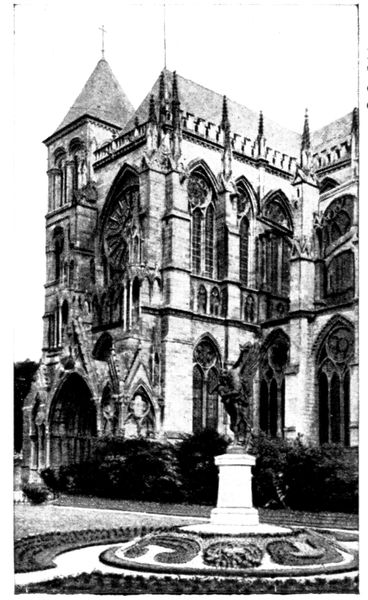
NORTH
TRANSEPT
OF THE
CATHEDRAL
In 1520 there was set up in the north tower of the transept (see photo
below) a wooden spire covered with lead and richly ornamented, about
310 feet in height. In 1628 the two final bays of the nave were completed
and the western doorway entirely built (photo above). Unfortunately, its
style jars with the Gothic of the rest of the church. In 1668 the cathedral
was struck by lightning for the third time; the spire fell and drove in the
vaulting and the crypt. After another restoration, the two towers of the
transept were embellished with stone
spires, which were reconstructed in
1821, but, later, removed. In 1850
the south front of the transept was
entirely rebuilt. In 1862 all the sixteenth
century chapels in the aisles off
the nave were done away with. Quite
recently the two towers, together with
the doorways of the transept, have
been restored.
On the whole the cathedral is an
imposing edifice. We have seen above
that the west front dates from the seventeenth
century and is in the Classical
style. Corinthian columns and pilasters
flank a Gothic rose-window. A balcony
runs along each storey, and a pediment
surmounts the whole. A much damaged
bas-relief above the entrance-door represents
the stoning of Saint Stephen.
The long nave, with its lines of elegant
flying-buttresses, rejoins the transept,
of which the north front (photo opposite)
is the most interesting. The southern
one was completely rebuilt in the nineteenth
century.
[Pg 200]

APSE AND
TRANSEPT
OF THE
CATHEDRAL
The north
tower of the
transept is the
older. The
lower part of
it dates back
to the ancient
Romanesque
cathedral.
The walls are
pierced by
round-arched
bays. The
south tower
belongs to the
thirteenth century.
Its bays
are Gothic in
style. Three
radial chapels,
dating probably from the fourteenth century, open off the apse.
In the interior the nave comprises nine bays, the first two of which,
starting from the west front, date from the seventeenth century; the others,
and also the choir and transept, are of the thirteenth century.
As in the Cathedral of Rheims, the choir advances into the nave, of
which it occupies two bays. The high altar, under a canopy (see photograph
below), supported by marble pillars, belongs to the seventeenth century.
In the north branch of the transept is a fine sixteenth century bas-relief
representing Christ lying in His tomb (see p. 201), which is attributed to
Ligier-Richier, the Lorraine master, whose masterpiece we shall see in St.
Peter's Church at Bar-le-Duc (p. 245). The cathedral is paved with tombstones.
The most beautiful ones are to be seen in the ambulatory, especially
two adjoining the pillars of the choir.

In the sacristy, which
opens off the south branch
of the transept, may be seen
the treasure (see p. 201). This
is composed of a little thirteenth
century enamelled brass shrine
called Saint Rémy's, with
medallions representing the
apostles; and a twelfth century
mitre and shoe, said to be
Saint Malachy's. The mitre
is of red silk embroidered in
gold and silver; the shoe is of
red leather inlaid with gold.
The stained glass windows
of the cathedral are very
remarkable, although most
of them have been restored.
The three upper windows at
the back of the apse belong
to the thirteenth century, as
also the rose-window in the
north arm of the transept dedicated
to the childhood of
Christ, and the twelve panels
of the triforium representing
the apostles.
[Pg 201]
Lights in the first south window
(fifteenth century stained glass)
The stained glass windows of the north aisle are almost all modern, and
in imitation of the style of the thirteenth century. Those of the south aisle
belong to the fifteenth and sixteenth centuries, except the ninth window
nearest the transept, which dates from the thirteenth century. Our illustration
give an idea of the simple yet skilful composition of these little masterpieces,
but cannot reproduce the beauty of their colouring.

ADAM AND EVE BEFORE THE TREE
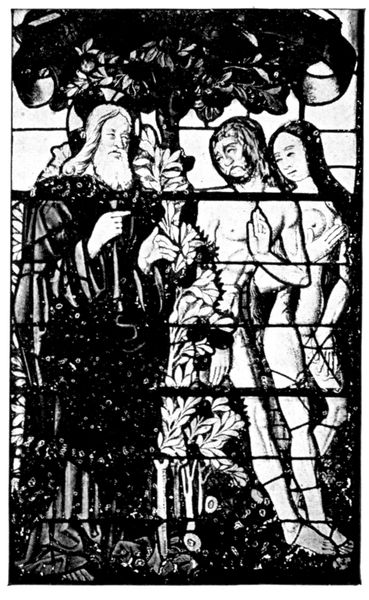
ADAM AND EVE HIDING THEMSELVES
[Pg 202]
Lights in the first south window
(fifteenth century stained glass)
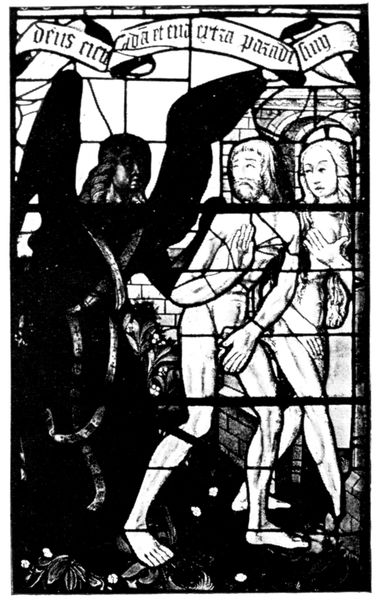
ADAM AND EVE DRIVEN OUT OF PARADISE
The second window on the south represents scenes from the life of the
Virgin. The third and fourth are devoted to Christ; the fifth to the life
and stoning of Saint Stephen; the sixth to the Virgin, and different saints
and donors; the seventh to the life of Christ; the eighth to the life and
miracles of Christ; the ninth to the baptism of Christ and to various saints.
All this stained glass has been removed and put into a place of safety for
the duration of the war.
[Pg 203]
Notre-Dame de Vaux
(historical monument)
(See map inserted between pp. 198-199)
Like the cathedral, Notre-Dame
dates back to Carolingian
times. In the eleventh century
it possessed no transept,
but included a semi-circular
apse flanked by two towers, on
the site of which rise the two
present ones (see p. 205), which
date from the twelfth century
and recall those of the cathedral.
There remains of the
twelfth century Romanesque
church, besides almost the
whole of the transept, the south
door under the porch, the pillars
and the aisles of the nave,
as well as the ground floor of
the west front.
In 1157 Notre-Dame collapsed,
and was partly reconstructed.
The apse was rebuilt with three
radial chapels. In the nave
and choir the round arches of
the tribunes and arcades were replaced by pointed ones: the walls were
raised in height and pierced by windows, below which was established a
triforium (photo below). Gothic vaulting in the nave and transept replaced
the wooden roof. The two storeys and the pinnacle of the west front, between
the towers, belong also to this period.
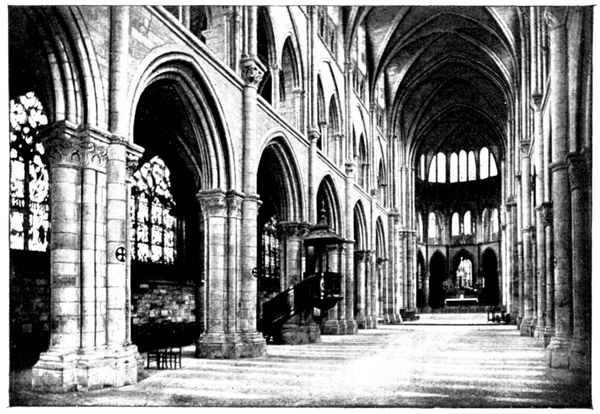
In the fourteenth century the four towers were surmounted by wooden
spires covered with lead, painted and gilded. To the fifteenth century
belongs the beautiful porch in the Flamboyant style which precedes the south
door of the twelfth century. The Revolution destroyed three of the four spires
in order to utilise the lead, and mutilated the sculptures of the doors. Notre-Dame
was completely restored about 1852. The steeple of the north tower
of the west front was reconstructed, but the towers of the apse remained
despoiled of the elevated pyramids which gave to Notre-Dame a very
characteristic silhouette recognisable in the centre of the old engrav[Pg 204]ing
reproduced on
p. 198.

PORCH AND
SOUTH
TRANSEPT OF
NOTRE-DAME
The south porch, visible
in the opposite photograph,
was built in 1469. The bay
is surmounted by an angular
pediment, and the gable is
ornamented by graceful arcading
in the Flamboyant
style.
The south front of the
transept (photograph opposite)
which adjoins the Gothic
porch, is a fine piece of work
in the Romanesque style,
with its round arches and
its sculptured rose-windows.
The little thirteenth century
sun-dial on the buttress in
the middle-front below the
windows is worthy of note.
It is one of the oldest known.
The interior of Notre-Dame
is simple and dignified
(see below and on p.
203). It has been completely
restored. The pillars which
support the arcades are
those of the early Romanesque church (see photograph p. 205). Their capitals
are finely sculptured. Above the lower arcades runs a gallery which opens
on to the choir and nave by means of bays composed of twin lights. A little
triforium separates this gallery from the higher windows (see below).
The windows of the aisles of Notre-Dame are filled with beautiful sixteenth
century stained glass, which
at the beginning of the war
was taken down and put away
for fear of damage from
air-raids. We reproduce a
panel from one of them, which
represents the donor kneeling
in prayer to Saint Martha,
her patron saint, who is
trampling under foot the
"Tarasque," a mythical
monster of Tarascon. The
saint is subduing it by
sprinkling it with holy water.
The principal stained-glass
windows in the north aisle
are: in the first window
beginning at the great doorway,
the battle of "las Novas
de Tolosa" won by the Spaniards
over the Moors in the
thirteenth century; donors;
patrons; the transfiguration.
The next window deals
with the death and coronation
of the Virgin and represents
the donors (the panel[Pg 205]
reproduced on p. 205
belongs to this window).
The third window
is dedicated to
the life of Saint Anne
and the Virgin; the
fourth represents the
Adoration, the Massacre
of the Innocents,
the Flight into Egypt,
the last Supper; the
fifth, the Passion; the
sixth, the Ascension,
the Virgin, Christ
crowned; patrons and
donors. In the south
aisle, the first window
represents the
life of Saint James,
the Transfiguration,
Christ appearing to
his disciples; the second,
scenes from the
life of the Virgin; the
third, the Last Supper;
the fourth, the
life of the Virgin and
the legend of Saint
James.

As in all the churches
in the neighbourhood, mortuary stones are
numerous.

DONOR AND SAINT MARTHA
(Sixteenth century stained glass)

ROMANESQUE PILLAR
IN THE NAVE
[Pg 206]
Church of Saint Alpin
(historical monument)
(See map inserted between pp. 198-199)
This was at first merely
a chapel dedicated to Saint
Andrew. In the ninth century
it was placed under
the patronage of Saint Alpin,
when the body of this Bishop
of Châlons was transported
there.
Saint Alpin, like Saint
Loup at Troyes, and Saint
Geneviève in Paris, went out
to confront Attila, and succeeded
in obtaining a promise
that the town should
be spared by the "Scourge
of God." A sixteenth century
stained-glass window (the
first in the south aisle) commemorates
this episode in
the life of the saint (photograph
below). The bishop, his mitre
on his head, the cross in
his hand, surrounded by clergy
and laymen, is pleading the
cause of the town before
the King of the Huns, seated on a sumptuous throne amidst his warriors.
At the foot of the throne are captives in chains.
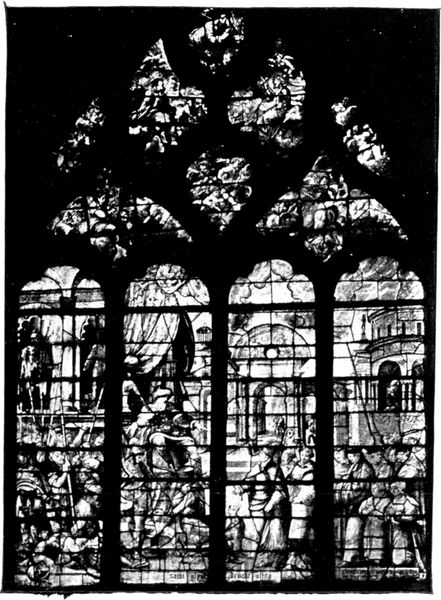
SAINT ALPIN
BEFORE ATTILA
(sixteenth
century
stained glass)
As we have seen on p. 198, fifteen centuries later the same scene was enacted.
In September, 1914, Mgr. Tissier, Saint Alpin's successor in the bishopric of
Châlons, was obliged to plead
for his town with the invaders.
The Church of Saint Alpin
was reconstructed and enlarged
in the twelfth century. From
this period date the west front
(see above), the nave and its
side aisles. The north branch
of the transept belongs to the
fourteenth century, the south
branch to the sixteenth.
The apse goes back to the
sixteenth century, as does the
tower surmounting the middle
of the transept, also the
chapels of the side aisles.
At the same period, doors
leading into each aisle were
pierced on either side of the
doorway of the West Front.
The church was subjected
to important repairs in the
nineteenth century, and statues
of Saint Andrew and Saint
Alpin, its two patrons, were
installed in niches on either
side of the central doorway.
[Pg 207]

LIFE OF THE
VIRGIN
(sixteenth
century
stained glass)
In the interior we find a fine
collection of sixteenth century
stained glass in the windows
of the south aisle and of the
ambulatory. As in the other
churches in Châlons, the war
caused them to be removed to
a place of safety. We reproduce
two of them: Saint Alpin
before Attila (see p. 206), and
the life of the Virgin (photo
opposite).
In the latter the top of the
right hand light represents the
birth of the Virgin; the lower
portion of the middle light, the
Presentation in the Temple.
Saint Anne and Saint Joachim,
bringing the sacrificial lambs
and doves, lead Mary to the
high priest. The upper portion
of this light depicts the
glorification of the Virgin.
On the left of the window is Saint Martha, in a rich Renaissance costume,
holding in her hand the vessel of holy water and the sprinkler which she
used to subdue the "Tarasque" (see p. 205).
Mortuary stones are also to be seen here; and let into the wall of the
ambulatory is a beautiful sixteenth century bas-relief of the Virgin and
Child; two donors and their patrons. On one of the southern pillars of the
transept is a fine "Ecce homo" on a background of gold, also of the sixteenth
century.
Church of St. John
(historical monument)
(See map inserted between pp. 198-199)
This church is the most ancient building in Châlons. The nave
dates from 1050; the choir, the apse, and the transept belong to the
thirteenth century; the principal front to the fourteenth. The tower of
the transept was built in the seventeenth, when the side aisles were
vaulted and reconstructed.
The Romanesque nave with its
round arches, has a seventeenth
century wooden vault; but
above it, the wooden framework
of the interior of the roof
contains some skilful fourteenth
century carpentry. The capitals
and the pillars are very plain
and some seem to be anterior to
the eleventh century; the
branches of the transept are
doubled by side-aisles transformed
into chapels, which flank
the choir. The apse terminates
in a flat wall. Important restorations
were carried out in
this old church in the nineteenth
century.
[Pg 208]
The Jard
(See map inserted between
pp. 198-199)

SAVINGS BANK
SEEN FROM
NAU CANAL
(Photo L. L.)
The Jard is a very pretty park of
extremely ancient origin, being mentioned
in thirteenth century documents.
The marshy ground was drained,
raised, and planted with trees. In
the eighteenth century it was laid out
as it is to-day. The walks were bordered
with elms which, after a century
of existence, were cut down in 1870
and replaced by horse-chestnut trees.
On Sundays and Thursdays concerts are
given here.
The garden, which occupies the north-east
portion of the Jard and reaches the
banks of the Nau Canal, was made in
1861 for a horticultural exhibition. The
old seventeenth century castle of
Marché, now transformed into the
savings bank, looks on to this canal.
The photograph opposite gives an
idea of its picturesque aspect.
The English garden stretches between
the canal and the Marne. It was laid out in the beginning of the nineteenth
century. A foot-bridge (photo below) connects it with the Jard. From
the top of this bridge there is a pretty view of the canal which divides at this
point to surround a wooded isle.
Other Monuments and Objects of Interest
(See map inserted between pp. 198-199)
Church of Saint Loup
This dates from the fourteenth and fifteenth centuries, but was rebuilt
in the nineteenth. The front, the tower, and the spire which rises above the
transept are entirely modern, and the old seventeenth century doorway has
been removed to the courtyard of the museum in the town-hall.
In the interior, in the second chapel of the right aisle, is a little sixteenth
century Flemish triptych representing the "Adoration of the Wise Men."
At the end of the right aisle, near the branch of the transept, is a fifteenth
century wooden carving of Saint Christopher.
Hôtel de Ville
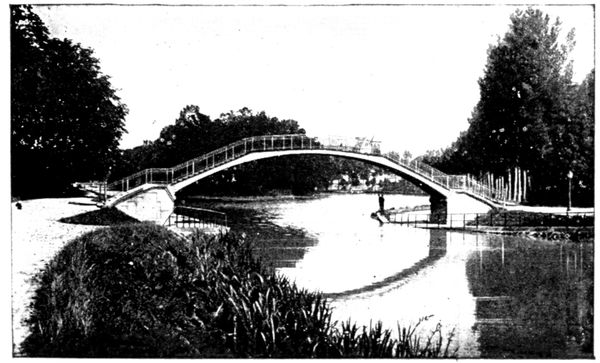
FOOT-BRIDGE
CONNECTING
THE JARD
WITH THE
ENGLISH
GARDEN
The present
building replaced
at the end of the
eighteenth century
the old Renaissance
town-hall. It
contains the
library and the
museum, the latter
looking on the
Place Godart.
Enter by the Rue
d'Orfeuil (open to[Pg 209]
the public on Thursdays and Sundays, from noon to 5 p.m. and every day to
visitors to the town). The museum contains interesting collections of sculpture,
ancient paintings, and a natural history section.
Préfecture
This, built in the eighteenth century, was formerly the hôtel of the
"Intendance de Champagne." The north wing was built in 1846. The
préfecture contains a remarkably fine fifteenth century chimney-piece (photo
below), on which is carved a mythological triumphal procession, flanked by
figures representing faith and charity.
Sainte-Croix Gate
Here is a triumphal arch erected in 1770 for the passage of Marie-Antoinette,
on her arrival in France to wed the Dauphin. It was never
finished.
National School of Arts and Crafts
This institution, founded by Napoléon in 1806, is one of the five important
State schools for turning out engineers and skilled foremen. The buildings
are of the eighteenth century. The school possesses fine laboratories and
industrial collections.
Sainte-Croix and Saint-Jean Avenues
Both are fine avenues, remains of the boulevards which surrounded the
town.
The Military Cemetery
Rue Kellerman, in the eastern part of the town, near the cavalry quarters,
is on a lower level than the old civilian cemetery. It contains the remains
of several thousand soldiers who died in the hospitals of the town.

CHIMNEY-PIECE IN THE PRÉFECTURE (FIFTEENTH CENTURY)
[Pg 210]
Notre-Dame de l'Épine
(historical monument)
(See plan inserted between pp. 198-199 and map between pp. 212-213)

NOTRE-DAME
DE L'ÉPINE
IN THE MIDST
OF RUINS
In order to reach
Notre-Dame de
l'Épine, which is eight
kilometres from Châlons,
leave Châlons
by the Avenue de Metz,
which begins at Saint-Jean
Square. This
avenue rejoins N. 3,
in which turn to the
right. It is a straight
road to l'Épine. Notre-Dame
comes into view
suddenly at the entrance
to the village,
which, as the above
photo shows, has suffered greatly. A large number of its houses have been
destroyed by fire, but the old church had a miraculous escape. Notre-Dame,
which dates from the fifteenth century, replaced an earlier edifice built on the
spot where, according to legend, a heavenly light disclosed a statue of the Virgin
in a bush. From the beginning of the thirteenth century, pilgrims flocked to
say their prayers at the foot of the miraculous statue. Although now seven
hundred years old this pilgrimage still retains its famous reputation.
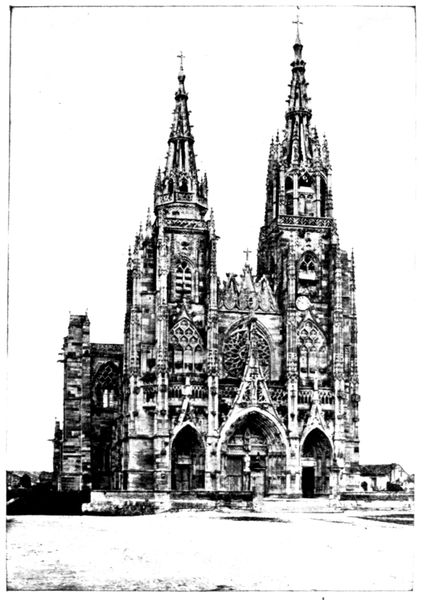
FRONT OF
NOTRE-DAME
DE L'ÉPINE
The church was built by the inhabitants of the district, pious workmen
coming from as far as Bar and Verdun; and the expression "aller à l'Épine,"
meaning to work for nothing, still exists. The church was finished in the
sixteenth century. Three doorways in the fifteenth century front open on
the ground floor, and are surmounted by angular pediments. The central
doorway, the largest and most interesting of the three, is dedicated to
Christ. A crucifix is to be seen in the centre of the pediment. In the
tympanum is represented the
Birth of Christ; and scenes from
the Passion are carved on the
lintel. A sixteenth century
Virgin, holding in her arms the
Infant Jesus, stands with her back
to the pier which supports the
tympanum and divides the entrance
into two parts. The
curve of the arch and the side
doors of the porch were ornamented
with sculptures, of which
many now are missing or mutilated.
A beautiful rose-window
and two large windows light the
front below the towers.
The spires of unequal height
are of stone, and are formed of
eight branches united in a crown
in their middle: that on the
right is a royal crown with the
lilies; that on the left is an
imperial one, bearing eight
eagles. In 1798 Claude Chappe,
the inventor of aerial telegraphy,
installed an apparatus[Pg 211]
on the left spire. This was destroyed, but was restored again in the nineteenth
century.
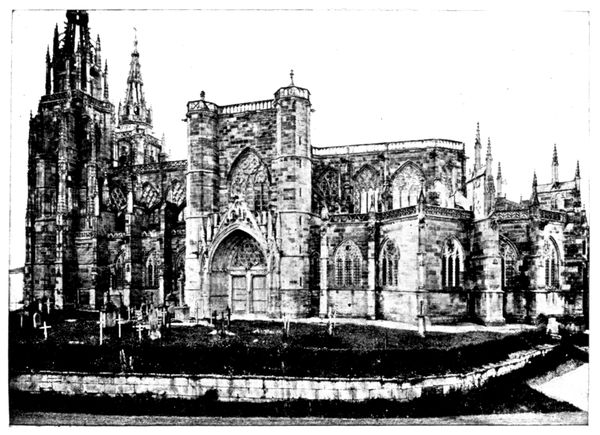
SOUTH FRONT OF NOTRE-DAME DE L'ÉPINE
Walk round the exterior of the church in order to examine the succession
of gargoyles projecting from the buttresses. They have been carved in a
keen, satirical spirit.

ROOD-LOFT OF
NOTRE-DAME
DE L'ÉPINE
The south doorway is flanked by two turrets, each containing a stairway.
All the statues which ornamented the curve of the arch, the jambs and
the pier are missing. On the much-damaged lintel is a representation of
the life of Saint John
the Baptist. The doorway
is dominated by a
beautiful window. The
chapels round the apse
were added in the sixteenth
century.
The interior of Notre-Dame
de l'Épine, which
has been completely restored,
is very interesting.
The most striking parts
are the transept and the
choir. In the north arm
of the transept, visible
in the photo opposite,
the Renaissance woodwork
of the organ is
noteworthy. In the
sculptured figures with
which it is decorated,
Greek divinities, Jupiter,
Venus, Apollo, etc.,
are side by side with the
apostles.
A well, with fine
wrought-iron fittings,
seen in the photograph,
dates from the origin of[Pg 212]
the edifice. It is the Virgin's Well, from which pilgrims drink and carry
away the water.
The curious rood-loft at the entrance to the choir shelters the miraculous
statue. One obtains access from the choir to the rood-loft by two spiral
stairways. It was from the upper gallery that in former times the epistle
and gospel for the day were read. The name of "Jubé" is derived from
the formula by which the reader previously besought the blessing of heaven:
"Jubé, Domine, benedicere."
The Virgin is in a modern gilded shrine, which may be seen under the
first arch in the photograph at the foot of p. 211. The statue has been
restored in modern times. The choir is surrounded by a stone cloister
whose style varies from Gothic to Renaissance.
On the left side of this cloister is a beautiful Gothic edifice which contained
sacred relics. It may be seen in the photograph below.
Five chapels adorn the apse. The first on the right, shut off by a stone
balustrade, is used as a sacristy; the next one contains a sixteenth century
stone carving representing the Entombment.
After visiting Notre-Dame de l'Épine, return to Châlons by N. 3, the road
along which we came.
If it is desired to begin at once the tour of which indications are given on
p. 19, turn to the right at Saint-Jean Square, taking the Rue du Général-Compère.
Follow the tram-lines which cross the Place des Ursulines, and take Rue Pasteur
on the left. Cross the canal, and by the Rue d'Orfeuil reach the Place de l'Hôtel-de-Ville.
Turn to the left, then following the Rue de Marne, leave the town
by the Faubourg de Marne.

INTERIOR VIEW OF NOTRE-DAME DE L'ÉPINE
[Pg 213]
VISIT TO THE FIELD OF OPERATIONS
OF THE
FOURTH FRENCH ARMY
I—FROM CHÂLONS TO VITRY-LE-FRANÇOIS
(62 km.)
via Vatry, Bussy-Lettrée, Dommartin-Lettrée, Soudé, Sompuis,
Humbauville, Huiron, Courdemanges, Frignicourt.
(See map inserted between pp. 212-213)
Leave Châlons by the Faubourg
de Marne, taken on arrival
there. At the end of the Faubourg,
turn to the left into the
Avenue de Paris, then to the
right into N. 77 in the direction
of Vatry (18 km.). In this
village, leave the "route
nationale" in order to take,
on the left, G. C. 12 going
towards Bussy-Lettrée, reached
after having crossed a level-crossing.
Enter the village as
far as the middle; there, turn
to the right, then to the left,
leaving the church on the left
(20½ km.). The road next leads to Dommartin-Lettrée (26 km.) and
passes before the quaint church reproduced above. Its two doorways are
interesting; the western one which faces the road is reproduced on p. 215;
the southern one may be remarked under the porch in the general view
of the church.
Continue straight on, arrive at Soudé, pass through it, turning to the right
in the Square, and come out into N. 34 (30 km.). Turn to the left in it, then
leave it almost immediately to take, on the right, G. C. 12, which continues as
far as Sompuis (38 km.), after passing under the railway embankment. We
are entering the field of operations of the extreme left of Langle de Cary's
Army. Several graves have been made in the embankment; one
of them, visible in the photo on p. 214, marks the place where, on September
10, the same shell killed General Barbade and Colonel Hamon,
who were commanding the two Brigades of the 23rd Division, as
well as their aides-de-camp. The body of General Barbade is buried in
the cemetery.
On the right of the road, closing in the horizon, are the wooded heights
on which the Germans had organised strong positions. They were taken
from the Saxons on September 9-10 by the 21st Corps.
Cross straight through Sompuis, passing before the church, which is
surrounded by a graveyard (see p. 214).
[Pg 214]

DOORWAY
OF DOMMARTIN
CHURCH
On the evening of September 6 the
Germans entered the village unopposed,
a fact which did not prevent them from
setting fire to several houses, or from
taking a number of hostages under various
pretexts. One of them, M. Arnould, was
taken because he had set up on the roof
of his house a chimney-pot to replace
one destroyed during the bombardment.
Some soldiers passing at this very moment
saw in this humble domestic task an
attempt to signal to the French troops.
Abbé Oudin, Rector of Sompuis, aged
73 years, and his servant, aged 67 years,
were also arrested, the installation of
electric bells in the rectory causing
suspicion. They were shut up in their
cellar, where several other hostages were
soon sent to join them. Here they were
left without any food until the afternoon
of September 8. The abbé had been taken out for a short period in the
morning in order to assist at the celebration of Mass in his church, where
Abbé Prince Max of Saxe officiated.
The hostages were led away towards Châlons. "It was evident," said
one of them in his statement before the Commission of Enquiry, "that on
account of his age and feebleness, Abbé Oudin could not walk far. We were
obliged to carry him, so to speak. Near Coole (7 km. to the north of Sompuis)
our escort made us halt, and two soldiers who had seen a butcher's cart standing
abandoned in a field, dragged it on the road, and said: 'Get in, Curé.' The
poor man was so feeble that he was unable to do so. The Germans
tipped up the cart, and as the back did not open, they made the old
priest sit on the edge, then raised the shafts so quickly that he fell on
his back into the bottom of the cart, his feet in the air. The old servant
got up beside him, and the Germans made signs to us to put ourselves
between the shafts and to drag the cart. As we set out, they all threw
their haversacks on the top of the Abbé and his servant, as they would have thrown
them on to a bundle of hay."
The hostages thus traversed Châlons and arrived at Suippes, where, in
the rain, they spent the night out of doors, in the playground of the school.
"At Vouziers, during the whole of Sunday, the 13th," declared a witness,
"Abbé Oudin was unceasingly ill-treated by the German officers, as well as
by the soldiers, but principally by the officers. The latter came in large numbers,
and each of them, in passing, spat in the Abbé's face or struck him with their
riding whips. I saw officers and soldiers kick the poor man with their spurs.
He was so weak that he no longer stirred, in spite of all that he must have been
suffering. I saw soldiers, too, strike him with the butt-end of their rifles; but
I insist that the officers were worse than the men. These atrocities only ended
in the evening. Abbé Oudin passed the night lying on the ground like us; we
hardly heard him once complain."

The Abbé's old servant did not escape
ill-treatment either. On the Sedan Road,
in Tannay Church, four soldiers seized
her, threw her into a blanket of which
they held the four corners, and tossed her
on to the altar steps; then, laying hold of
her again, they threw her into the midst
of the seats, not troubling about the piercing
cries which her many bruises drew from her.
Sedan was Abbé Oudin's last stage; there[Pg 215]
death put an end to his sufferings.
His servant, after careful
nursing in the hospice,
recovered, but another victim,
a hostage named Mougeot,
aged 72, succumbed to the
results of German brutality.
He was brought in a hand-cart
to Pafert barracks,
with four ribs broken by
kicks, and thrown on to a
bundle of straw, where he soon
expired.
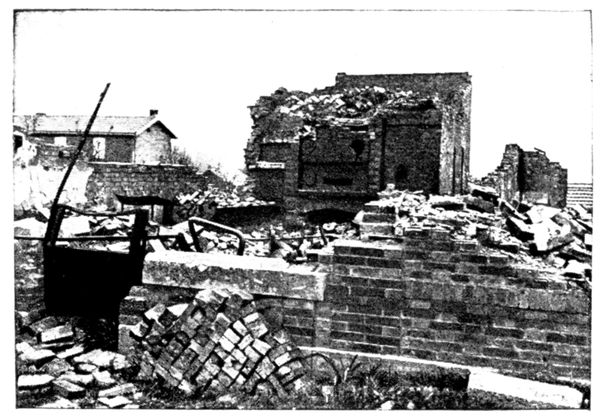
HOUSES
DESTROYED
IN HUIRON
While these events were
in progress the battle of the
Marne had been won. Sompuis was retaken amidst fierce fighting at 5 p.m.
on the 10th by the 21st Corps, which freed another victim in the village
itself: an old man of 70, named Jacquemin. He had been tied to his bed
by a German officer and left there without food for three days. "Each
time that he asked for food or water," declared his daughter-in-law, "he
was struck." A shell fell on the house and killed the tormentor
on the spot. The corpse of the officer was found in the house of his
victim, who died two or three days after his
deliverance as the result of the ill-treatment he
had received.
On leaving Sompuis, continue straight along G. C.
12 to Humbauville.
On September 8 the heights seen on the right
were gallantly defended against Saxon attacks by a
detachment of Bretons.
On the 9th the latter were thrown back in
disorder by the 13th Division, which had been sent
as a reinforcement.

CHURCH AND
ANCIENT
ABBEY
HUIRON
At the entrance to Humbauville (42 km.) turn
to the right, then, at the church, take on the left G. C.
14 in the direction of Huiron. We are now
on the battlefield of the 17th Corps. G. C. 14
formed the French position at the beginning of
the battle; on the 6th the road was left behind,
and the Germans driven back northwards as far
as the railway line going from Sompuis to Huiron. But on the 8th the
17th Corps was repulsed in its turn, and G. C. 14 became the German line.
The French troops clung to the heights to the south of the road
and particularly to Certine Farm, where General Dupuis was killed. The
fighting was of a desperate character. The Germans, in their fury, revenged
themselves on the
wounded; eight badly hurt soldiers
of the 88th Infantry Regiment,
whom Sub-Lieutenant
Baudens had been obliged to
leave behind, were afterwards
found with hands tied behind
their backs, their bodies riddled
with bullets and bayonet
wounds.
On the 9th and 10th the 17th
Corps counter-attacked vigorously
and, with the aid of the
Goullet Division which had been
attached to it, succeeded on the[Pg 216]
night of the 10-11th in re-crossing
the railway line.
We reach Huiron (53 km.)
which was completely destroyed
by the fire kindled
by the Germans on September
7, after having taken
the village from the 12th
Corps. The interesting twelfth
century church, and the
ruins of the abbey buildings
backing up to it, have
been ravaged by the flames.
The pillars of the nave have
crumbled away, and in the
photograph opposite fragments
of broken columns
may be seen
scattered about.
Huiron was only retaken
on the night
of the 10-11th.
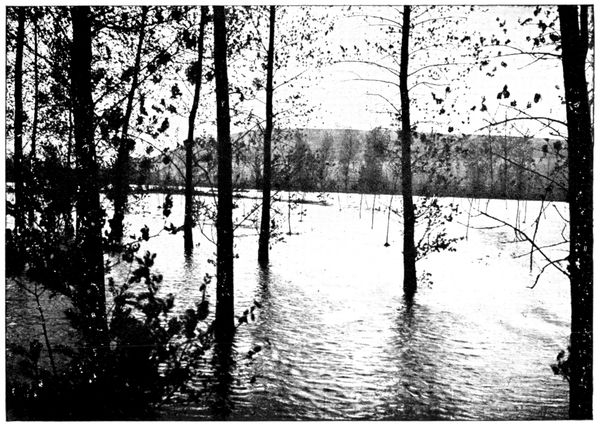
FLOODS
AT FOOT OF
MONT-MORET
400 yards from the
church turn to the
right into G. C. 2;
then after about
700 yards, turn to the
left in order to enter
the village of Courdemanges.
This
has suffered much
from fire and
bombardment. On[Pg 217]
the right of the
street stood the
castle, which has
been completely
destroyed.
Courdemanges,
which was occupied
on the 6th by the
12th Corps, was attacked
with great
violence. It was
abandoned at 5 p.m.,
and retaken during
the night. Continuously
shelled by the
Germans on the 7th
and 8th, it fell on
the latter day into
their hands. The 12th Corps counter-attacked energetically, but succeeded
only on the 11th in re-entering the village.
After going as far as the church, return again by the same road to G. C. 2
and cross it in order to go straight towards Frignicourt. On the right is Mont-Moret
which played an important part in the fighting in this region. The
batteries of the 12th Corps were installed there on September 6. After
heavy shelling and infantry attacks, Mont-Moret fell on the morning of the
8th, but units of the 12th Corps, aided by the Colonial Corps, counter-attacked
with determination, and in the evening obtained possession of
the ridge, capturing a few machine-guns. They remained there in spite
of fierce assaults, which caused heavy losses to the Germans and gave no
result.
The road crosses the railway in a low-lying plain often flooded by the Marne,
as seen in the photograph on p. 216; Mont-Moret can be distinguished in
the background.
100 yards before arriving at Frignicourt, on the right and on the left of
G. C. 14, are the graves depicted in the photos on this page. The soldiers
who lie buried there are those who gallantly defended the passage of the
Marne on September 6. The French troops, overwhelmed by the fire of the
German artillery at Vitry, were obliged to fall back on Courdemanges
and Mont-Moret. The Germans in their turn were violently shelled by
the French guns, but succeeded in holding out in Frignicourt until the
11th.

After crossing the Marne, enter Frignicourt (60 km.), whose ruins are
being gradually reconstructed. Turn to the left to reach Vitry-le-François
(plan p. 218). Passing through
the toll-gate, take the Rue du
Passage-Supérieur on the
left, then, after crossing the
railway, turn again to the left
into the Avenue du Colonel-Moll.
Cross the Boulevard François
I, and take the Petite-Rue
de Frignicourt on the
left, which leads into the Rue
de Frignicourt. Along this
main road turn to the right
to reach the hotel (62
km.).
[Pg 218]
[Pg 219]
VITRY-LE-FRANÇOIS
ORIGIN AND CHIEF HISTORICAL FACTS
Vitry-le-François dates from the sixteenth
century. The town was built in
1545 by order of Francis I. in order to
replace Vitry-en-Perthois, burned the year
before by Charles V. The ruins of old
Vitry were utilised for the construction
of the new, which was named after its
founder. This complete rebuilding
explains the remarkable regularity of the
town, plans of which were drawn up by
an Italian architect, Marino. Vitry was
fortified, but its ramparts were condemned
and demolished in the nineteenth century.
VITRY-LE-FRANÇOIS IN 1914
At the beginning of the war, Vitry was
the seat of the French General Headquarters
Staff. On September 5, almost
the whole of the population evacuated
the town, together with the civil
authorities. Out of a population of
8,500, barely 500 to 600 persons remained. In the morning a rearguard
action commenced to the north and east of Vitry. About 5 p.m., German
shells began to fall in the suburbs, and in the evening Uhlans entered the
town by the Châlons Road. In default of the mayor, the curé, M. Nottin,
and his curate were at once arrested as hostages, and M. Nottin was directed
to find two more. Two patriotic citizens, M. Paillard and M. Bernat,
offered themselves for this onerous duty. Together with M. Foureur, the
schoolmaster, they took upon their shoulders the charge of maintaining
order, ensuring requisitions, the victualling of the inhabitants, and the
treatment of the wounded. MM. Nottin, Paillard and Foureur, were amongst
the first civilians to be mentioned in dispatches.
Up to September 10 the battle raged round Vitry. The allied and enemy
shells crossed one another over the town: the German batteries established
on the heights to the north replying to the French guns on Mont-Moret.
The wounded came crowding in. On the third day, they numbered 2,500,
of whom 200 were French. The hospital being full the church was then
transformed into one, as well as all the teaching establishments and the
savings bank.
On the evening of the 10th the evacuation by the Germans began. It
took place in an orderly manner. The next evening the French re-entered
the town.
Apart from the gas works, which suffered from the shelling, and a few
burnt houses, the events of September have left few traces at Vitry. A
few houses and shops were pillaged, but, thanks to the influence and activity
of Abbé Nottin and his companions, the town was spared the horrors which
the surrounding villages experienced.
VISIT TO THE TOWN
(See map p. 218)
Leaving the hotel, follow the Rue de Frignicourt to the Place d'Armes in
which is the Church of Notre-Dame, shown above. The first stone
of this edifice was laid in 1629. The king gave 300,000 livres (about
£12,000) towards the cost of construction, and numerous families in the
neighbourhood subscribed also. They bought, by means of a heavy burial
duty, the right to be buried in the church itself. The subsoil of[Pg 220]
Notre-Dame became
on this account
a veritable
ossuary.
When the high
altar was moved
about twenty
skulls were unearthed.
In 1850,
when the present
paving was laid,
thirty-two mortuary
stones were removed
from the nave. The
chapels were built
by rich parishioners,
who placed their
tombs there and
dedicated the altar to the patron saint of their family. The apse was constructed
in 1835, and the work of building finished in 1895.
Notre-Dame recalls Saint-Sulpice in Paris, and its interior is worth
visiting. The first chapel on the left has a fine eighteenth century railing. In
the last chapel, off the nave on the left, the reredos above the altar should
be noted. A bas-relief depicts Saint-Jerome kneeling beside a lion.
In the south branch of the transept is a fine mortuary stone in black
marble, showing a knight standing with hands joined, his foot on a greyhound.
The four pillars at the intersection of the choir and of the transept are
decorated with sculpture.
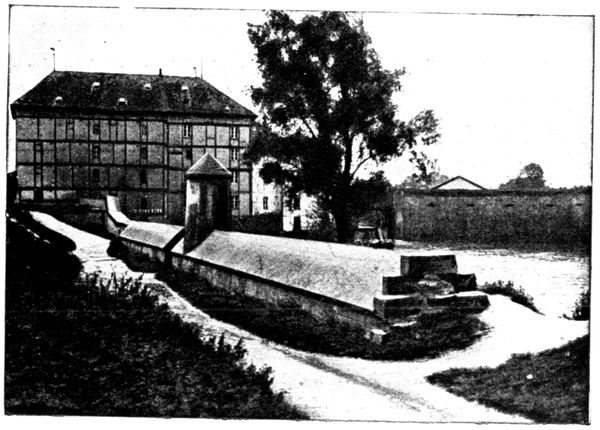
After having visited the church, take on the opposite side of the Square
the Rue du Pont leading to the monumental gateway reproduced above, which
dates from the seventeenth century and formed part of the old enclosure.
Turn to the right along the side of the Marne by the Quai des Fontaines as
far as the mills. Turn to the right again, take a few steps from the Place des
Moulins alongside the river in order to obtain the picturesque view of the old
ramparts shown in the photo below. Take the Rue des Moulins, which
is continued by the Rue d'Enfer, and at the barracks turn to the right
into the Rue des Minimes, then into the Rue des Sœurs. In the middle
of the latter turn to the left, in order to glance at the old wooden
market-buildings. Pass round them to the left and regain the Place
d'Armes by the street opening on to the market on the opposite
side to that by which we entered. Cross the "Place," and take the
Rue Domine de Verzet which skirts Notre-Dame on the left. Opposite the
town-hall (the old
monastery of the
Récollets, which
dates from the end
of the seventeenth
century and contains
the Library and
Museum), turn to the
right, into the Petite
Rue de l'Hôtel de
Ville, then to the left
into Boulevard Carnot.
Leave this
in the middle of the
Place Carnot in
order to take the
Faubourg de Saint-Dizier
on the left.
[Pg 221]
VISIT TO THE FIELD OF OPERATIONS
OF THE
FOURTH AND THIRD FRENCH ARMIES
II.—FROM VITRY-LE-FRANÇOIS TO
BAR-LE-DUC
(82 km.)
via Vauclerc, Écriennes, Favresse, Étrepy, Heiltz-le-Maurupt,
Pargny, Maurupt, Cheminon, Trois-Fontaines, Sermaize, Vassincourt.
(See map inserted between pp. 212-213)
After leaving Vitry by N. 4, crossing the Marne and a level-crossing,
Marolles (3 km.) is reached. In this village an old man of 70 years, M. Mathieu
Coche, was seized by German cavalrymen and led away tied to a horse,
with which he was obliged to keep pace. On arriving in the neighbourhood
of Vitry-en-Perthois (nearly 30 km. to the north of Marolles) the poor old
fellow's strength gave out, he fell and was dragged along by the horse
until death ensued. His body was then left behind, and could not be buried
until after the German retreat.
N. 4 next passes through Vauclerc (6 km.). On the left of the road a
great number of new roofs are to be seen, although many of the houses
are still in the same state as that in which the shelling and the fire left
them. During the whole of the battle this village was the objective
of the Lejaille Brigade. It was only retaken, by the Colonial Corps, on
September 11.
About 1,300 yards beyond Vauclerc, where graves border the road on either
side, is, on the right, a road leading to Écriennes. Before taking it, follow
N. 4 for 400 yards further, in order to see a burying-place of the Colonials,
shown in the photo below. The view gives an idea of the immense plain,
where furious encounters took place between this crack corps and the troops
of the Duke of Wurtemberg.
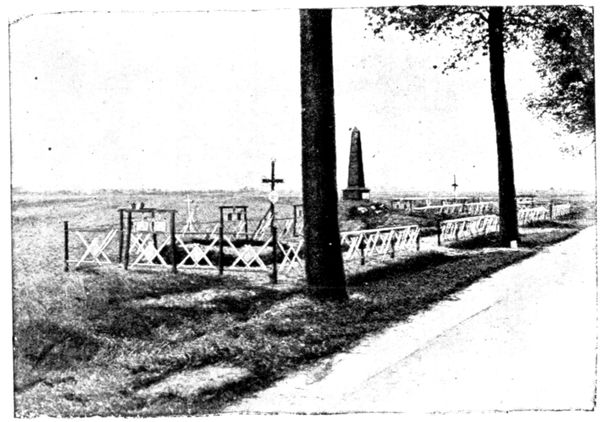
BURYING-PLACE
OF THE
COLONIALS
ALONG N. 4
In that part of the plain which lies to the right of the road, beyond
Écriennes, near Matignicourt, there took place in 1891 the famous review
of troops by President Carnot. It was the first important military
demonstration since the
war of 1870. It signalised
the resurrection of the
national spirit, and because
of this fact it produced
a very deep impression
both in France and in
foreign countries. Monuments
to the memory of
President Carnot have been
raised on the field of the
review, at Vitry; in the
Carnot Square; and at
Châlons in the Place de
l'Hôtel-de-Ville.
[Pg 222]
Taking the road leading
to Écriennes (10 km.) we
arrive at this village, which
has been completely devastated,
as may be seen
in the photos on this page.
The church, the upper part
of which is of timber-work,
was blown in by shells.
Écriennes was hotly disputed
from September 6
to 11. It was taken on
the 6th by the Germans,
in spite of an heroic defence
by the 21st Colonials;
then retaken only to be
lost again by the French on
the 8th, and retaken finally
on the 11th.
After passing in front of
the church, turn to the left
in order to rejoin N. 4, along
which turn to the right in
the direction of Farémont.
The road is bordered on
both sides by graves, for
the fighting here was very
violent. On the road and
to the south of it the Colonial Infantry fought doggedly, sometimes gaining,
sometimes losing ground. To the north of N. 4 the Lejaille Brigade tried
to push towards Vauclerc.
We enter Farémont (12½ km.), some of the houses of which have been
burned. On emerging, leave N. 4 and turn to the left in order to reach Thiéblemont
(13½ km.). This village was also completely devastated by shells
and fire, but the church is still standing. This side of the church, turn to
the left into G. C. 60 leading to Favresse. Graves may be seen along
this road. On September 6, that portion of the Colonial Corps which held
Favresse followed G. C. 60 in the opposite direction, falling back on Farémont,
while the Lejaille Brigade came to take their place at Favresse.
Favresse (16½ km) was gallantly defended on the 7th; taken and
retaken several
times on the 8th,
and finally remained
in the
possession of the
Lejaille Brigade,
whose chief was
wounded by a shell-splinter
during the
afternoon.
The village,
which was violently
shelled, suffered
heavily, but has
been partly rebuilt.
The beautiful little
church, of which[Pg 223]
the photos on this page give a general view, as
well as a detailed one of the Romanesque doorway,
bears traces of numerous shells. As
at Écriennes, and in many little country churches
in this region, the upper part of the walls of the
nave is of timber work.

DOORWAY OF
CHURCH
FAVRESSE
Turn to the right alongside the church and leaving
it on the left, take G. C. 16 to Haussignémont and
Blesmes.
On this ground on September 8 the Eighth
German (reserve) Corps tried to break through
between Favresse and Blesmes. At one time
this effort seemed about to be successful, but,
reinforcements having been opportunely sent to
Haussignémont, the Lejaille Brigade was able to
hold the position.
In Haussignémont (17½ km.), turn to the left near the church,
and continue
along G. C. 16 to
Blesmes, which
is reached
after passing
over a level-crossing.
In the centre
of Blesmes
(20 km.), turn
to the left in
order to pass
in front of the
church. Numerous
houses in
the village were
destroyed by
shells, and the
roof of the
church was
damaged; but
most of this
damage has
been repaired.
On leaving Blesmes,
pass over a
level-crossing,
then under the
railway. At the
cross-roads immediately
beyond
turn to the right,
then at the fork
in the road,
turn to the right
again into G. C.
14 in the direction
of Étrepy.
Half-way thither,
on the right,
is Sorton Farm,
which was fiercely[Pg 224]
disputed. As may
be seen in the
photo on p. 223, it
was completely
destroyed. The
Eighth German
(reserve) Corps
managed to take
it on September 8,
but, on the following
day, the troops of
the Second French
Corps re-took possession
of the
ruins and held them.
Along the road in
front of the farm are
the graves of some
of its defenders.
At Étrepy (25 km.), we pass in front of the church (see above). There
are numerous ruins in this village, which was set on fire by the Germans on
September 7.
Of the seventy families who remained at Étrepy during the battle, sixty-three
were homeless after the incendiaries had passed by. Two old people,
more than eighty years of age, M. and Mme. Miliat, were led away almost naked
to a distance of 3 km. from the village and horribly ill-used. In order to
quicken their pace, rendered slow by age, they were struck with the flat of
swords. Mme. Miliat died four days afterwards as a result of this treatment.
On leaving the village, on the right is the entrance to the castle of the Morillot
family. (The son of Count Morillot, a naval lieutenant and commander
of the submarine "Monge," went down with her, after having made the
crew put off in their boats, rather than surrender to the enemy.) The castle,
which is built at the meeting place of the Saulx and the Ornain, and is
surrounded by a moat, dates from the seventeenth century. It was set on
fire by the Germans.
The position of Étrepy is important, being a bridgehead on the waterway
formed by the Saulx, the Ornain, and the canal from the Marne to the Rhine.
The passage was defended on September 6 by the Third Division of the Second
French Corps, but the bridges were forced in the evening, and at dawn on
the 7th the village fell into the hands of the Germans. It was only retaken
on the 11th.
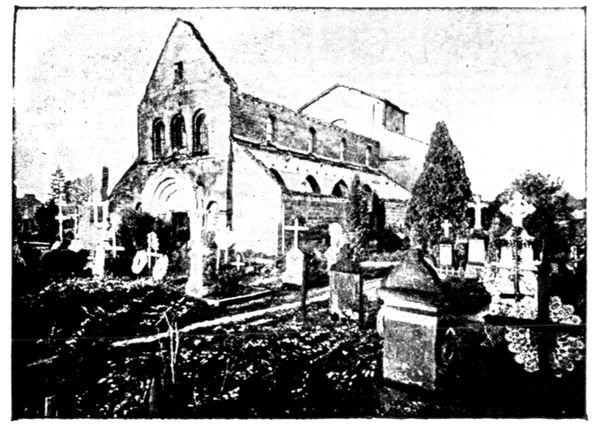
CHURCH,
HEILTZ-LE-MAURUPT
After crossing in succession the Saulx, the canal, and then the Ornain,
which flows through a frequently
flooded plain, we arrive
at Heiltz-le-Maurupt (29½
km.) and, after turning to
the right, take the left
towards the church.
On September 6, on
the arrival of the Duke of
Wurtemberg's troops, the
beautiful Romanesque
church was devastated by
fire, at the same time as
the little town. Before setting
fire to the houses, the
Germans pillaged them.
The spoils were placed on[Pg 225]
waggons under the superintendence of
an officer. These removals having been
effected, German soldiers were next
seen, two by two, carrying buckets slung
on poles and filled with inflammable
liquid, which they threw on the houses.
The result was a huge outburst of fire,
in which the church, the town-hall, the
school, and 187 houses out of 210, were
destroyed.

NAVE OF CHURCH,
HEILTZ-LE-MAURUPT
The photos opposite show that the
roof of the church has disappeared, exposing
the nave. The vaults of the
transept and of the apse have resisted
the flames. The Romanesque apse is
very interesting; the vaulting is round-arched,
and on the exterior are sixteen
blind windows, also round-arched, separated
from each other by small pillars. The
old Romanesque tower was surmounted
by a spire about 100 feet high built in the
sixteenth century. It collapsed in the flames. The western doorway is also
in the Romanesque style (photo below). The work of restoration is in
progress, as may be seen in
the photo opposite.
The Germans had installed
at Heiltz-le-Maurupt an
important heavy battery
which, during the whole
of the battle, seriously
tried the French troops
entrusted with the defence
of Pargny, Maurupt, and
Sermaize.
In order to regain the
line of the Ornain and the
Saulx, take the street on the
right a little to the east of the
church. On reaching the fork,
again take the right, and follow
the line of telegraph posts as far as Pargny.
[Pg 226]

THE CANAL
AT PARGNY
(looking
westwards)
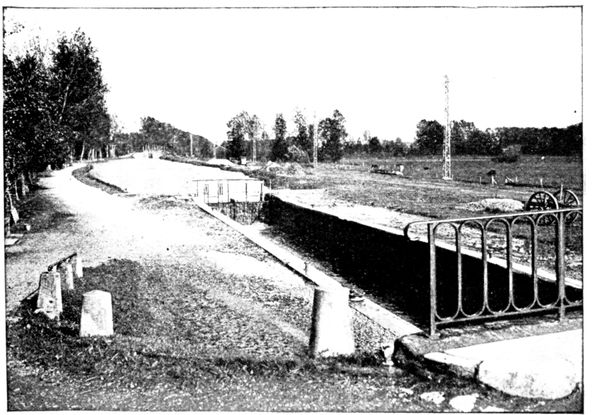
THE CANAL
AT PARGNY
(looking
eastwards)
The road passes
over the Ornain
then over the
canal from the
Marne to the
Rhine, of which
the two photographs
opposite
and below give
two views: the
first to the west,
the second to
the east. The
struggle was violent
on the banks
of the canal. The
infantry of the
Third Division
was guarding the
bridges, which
were taken by
the Germans on
September 6,
but the French,
entrenched in
Pargny (towards
which the road
leads the tourist),
held out during
the whole of the
day of the 7th
in spite of the
terrific shell fire,
which completely
destroyed the
little town. On
the 8th, attacked
on the north and
east, Pargny fell.
The next day,
the valiant
troops of the
Second Corps re-took
it. On the
10th it fell again
into the hands of
the Germans, to
be definitely retaken
by the
French on the 11th.
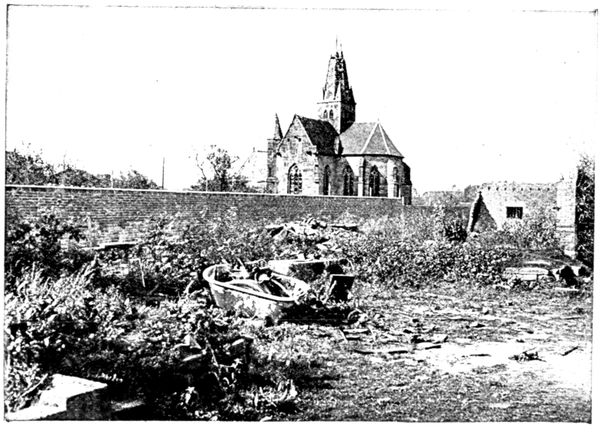
CHURCH AND
RUINS OF
PARGNY
Pargny church
(33½ km.), in front
of which we
pass, had its roof
pierced, and the
vaulting broken
in. The spire was
truncated by
shells.
After having[Pg 227]
passed the church,
we reach the principal
street, in
which we turn to
the left. The scene
is very desolate
(see pp. 226-227).
Having followed
the principal
street, we
take the first turning
on the right towards
the level-crossing.
Immediately beyond
the crossing, we turn
to the right in order to reach Maurupt by G. C. 61.

INTERIOR OF
CHURCH,
PARGNY
Before reaching the village, the tile-field of Pargny comes into view, as
seen in the photograph at the foot of
this page. The fighting here assumed
a particularly violent character, as
the French, having lost Pargny, endeavoured
to check the German advance
on Maurupt. A large grave
contains the remains of the brave
fellows of the 72nd Line Regiment
who fell on this part of the battlefield.
The tile-field was for many days an
important position of the French artillery
which swept the line of the Saulx
and the Ornain from this point.
The supplying of the tiles and bricks
necessary for the reconstruction of the
whole region gives occupation to these
works, now reorganised.
Maurupt is separated from the tile-field
by a dip in the ground, clearly
visible in the panorama on p. 228.
The road, bordered by telegraph poles,
which traverses the region from right
to left, is G. C. 61, which the tourist is following. It is thus easy to
realise the importance of the tile-field as an advanced position. Whilst
the French held it they were able to utilise the valley (out of sight of the
enemy coming up
from Pargny) for
massing reserves of
troops and artillery.
The position
once captured,
Maurupt became
singularly exposed.
In point of fact,
Maurupt fell on
September 8, the
same day as the
tile-field. The
German attack
came, not only from
Pargny, but from
the east; the loss
of Sermaize by the[Pg 228]
right of the Second Corps having made this flanking movement possible to the
enemy. On the 9th, the French threw the Germans back on Pargny, but
on the 10th, the tile-field and the village were lost anew. Violent hand-to-hand
fighting took place in the streets of Maurupt, and in one hour the
ruins were taken and retaken. The Germans were making progress to the
west of Maurupt, however, and the French troops, in order to avoid being
enveloped, were obliged to abandon the position and retire towards Cheminon.
On the 11th Maurupt was definitely regained.
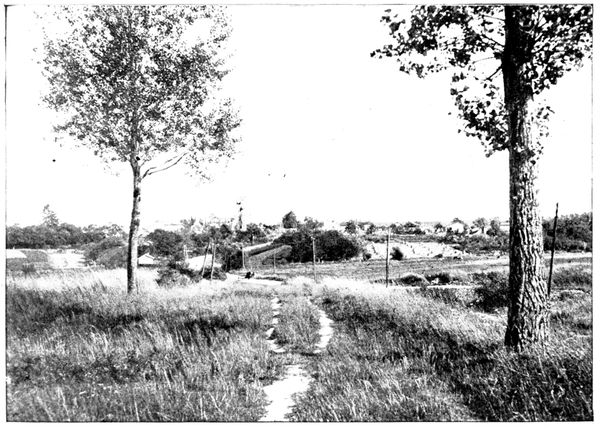
MAURUPT SEEN
FROM THE
TILE-FIELD
[Pg 229]
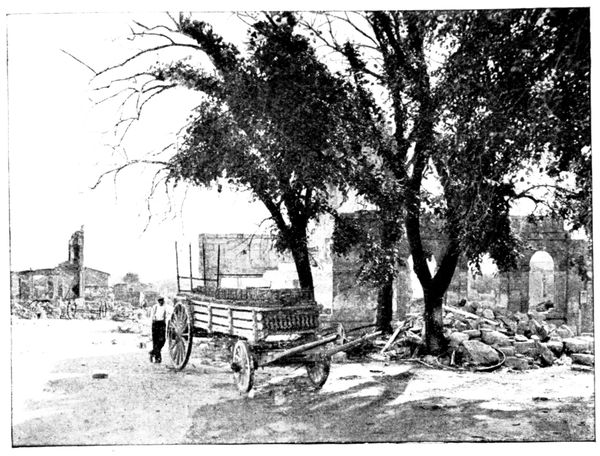
RUINS OF
TOWN-HALL,
MAURUPT
G. C. 61
comes out
into Maurupt
opposite the
church
(36½ km.);
visible in
the photo on
p. 228. This
fine Romanesque
edifice,
restored in
the fifteenth
century,
is classed as
an historical
monument.
It has suffered
greatly.
The spire
has been
smashed, the tower
torn open, the roof
and the barrel-vaulting
have given
way. The town-hall,
near the
church, met with
the same fate (view
above).
Turn to the
right opposite the
church, and then
proceed for 800
yards towards the
Hill of Le Montois.
Half-way up is to be
seen the burial-place
reproduced below.[Pg 230]
Farther along the road other graves are visible on the left, for at this
point the 128th Line Regiment put up a splendid resistance against superior
German forces.

VIEW OF
CHEMINON
(looking east)
These attacks on the west, joined to those on the north and east, led as
we have seen to the fall of Maurupt.
Return to the village, which is in course of reconstruction, and at the church
go straight on, then turn to the right, towards Cheminon, into G. C. 16, which
follows the line of telegraph posts.
On arriving in Cheminon (43 km.), turn to the left to descend the principal
street, shown in the photo above. Cheminon did not experience the German
invasion, and, after the desolation of the villages which we have traversed,
this little township gives an impression of repose, with its picturesque
houses sloping down towards the old thirteenth-sixteenth century church,
which is classed as an historical monument.
We pass under the market (beware of the depression in the ground), then turn
to the right towards Trois-Fontaines.
Reaching the fork in the road, go straight on. Pass through Le Fays
(47½ km.). 800 yards further on, leaving the road to Saint-Dizier on the right,
turn to the left to enter the village of Trois-Fontaines (49 km.). At the end
of it the monumental doorway of the old abbey of Trois-Fontaines is visible,
as shown in the photograph on next page.
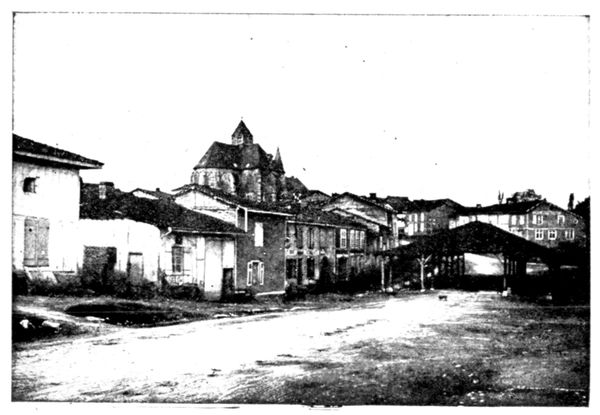
VIEW OF
CHEMINON
(looking west)
[Pg 231]
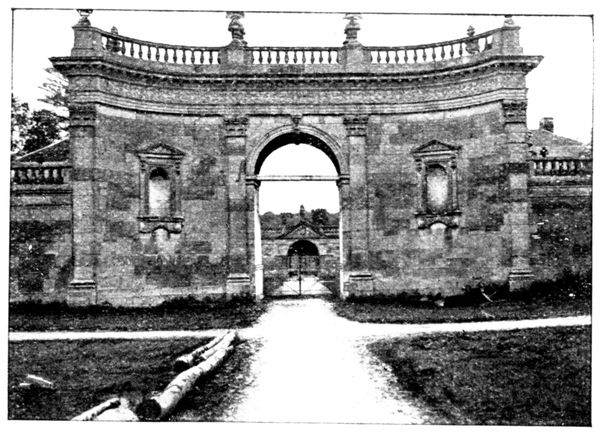
ENTRANCE TO
THE OLD ABBEY
The Germans
did not get as far
as Trois-Fontaines,
but fighting took
place to the north
and to the north-east,
in the forest.
This region,
where the Fourth
and Third French
Armies linked up,
was particularly
important. At Trois
Fontaines, the
Germans would
have been 9 km.
from Saint-Dizier,
from whence they
would have been able to outflank the whole of the Army of Langle de Cary.
The Second Corps' admirable resistance, and the aid given by the flank attack
of the Fifteenth Corps of Sarrail's Army, brought about the German defeat.
The abbey is at the present time the property of the Count
of Fontenoy. After asking permission to visit, cross the court to the
left, in order to view the ruins of the church which are still standing in the
corner of the park.
The photos on pp. 231, 232 and 233 depict the interior and the exterior.
The abbey was
founded in the
beginning of the
twelfth century by
Saint Bernard.
The major portion
of the church
dates back, however,
a century earlier. It
was sacked during
the Revolution,
but the ruins
now covered
with verdure
have an impressive
grandeur.
Enter the principal
nave by the
doorway seen on
the left in the
view opposite.
After traversing
the
body of the
church, consisting
of the central
nave and two
side aisles, we
see enormous
fragments of the
arches strewn on
the ground. As
seen in the photographs
on p. 232.[Pg 232]
Nature has resumed her
sway, and tall trees rise
from what was the choir
and the apse of the old
church.
By way of the small
but charmingly planned
park, we arrive at the
abbey buildings proper
(see p. 233), which form
the habitation of the proprietor.
They are formed
of two wings, built in
the eighteenth century, and
united by a charming
arched gallery covered
with climbing plants.
These buildings were
much more extensive
before the Revolution, and
several hundred monks
devoted themselves in the
calm of this remote
forest-valley to a life
of contemplation, interrupted
only by rural
tasks.
A river traverses the
abbey from one end to
the other, but the monks
made important works in order to render it subterranean for a portion of
its length. Thus it passes under the buildings and crosses the centre of
the park, flowing through underground arches, so solidly constructed that
the passage of centuries has left no apparent weakness.
[Pg 233]
At the end of
the park, the river
comes again to the
surface in order
to form part of
a skilfully arranged
decorative scheme
in which water,
trees, and lawns
combine to make a
harmonious whole.
After this short
inroad into the far
past, the tourist
takes once more the
road to Cheminon
(55 km.). In this
village, pass under
the market again,
then turn to the
right into the road
(visible in the photograph
at the foot of
p. 230) opposite the
inn.
Cross the river
Bruxenelle, then, on
reaching the fork, turn
to the left towards Sermaize.
The way lies
through woods into
which part of the
extreme right of the
Second Corps retreated after abandoning Sermaize. The pursuing Germans
began to creep towards Cheminon and Maurupt, and, as we have seen, succeeded
in reaching the latter village, but Cheminon did not fall into their hands.
[Pg 234]
Affording a fine
view of the Valley
of the Saulx, the
road enters Sermaize
(61 km.).
The town was
occupied on September
6 by the Fourth
Division of the
Sixth Corps. Violently
attacked on
the north and east,
and threatened
with being cut off
from the rest of the
French line by the German advance from the west, Sermaize, already set
on fire by shells, was evacuated on the 7th by the French troops, who retired
towards Maurupt and Cheminon. The Germans entered the little town
and completed the work of the shells, but first they pillaged the houses.
It was proved to the Enquiry Commission that "German Red-Cross nurses
came with carts, in which they piled up the goods which the soldiers passed
to them from the drapery and millinery establishment of M. Mathieu, a
merchant serving with the colours." 505 houses were completely destroyed;
only forty-four remained standing.
Numerous personal outrages were committed. About fifty hostages were
taken; some, rigged out in cloaks and casques, were obliged thus to guard the
bridges. Here is the declaration of the road-man of the district, Auguste
Brocard: "My son and I, together with my grandson aged 5½ years, were
led away on September 6 by the Germans, who shut us into the sugar factory,
and kept us there under guard for four days. When they arrested us,
my wife and my daughter-in-law, insane with fear, ran to drown
themselves in the Saulx. I managed to run after them, and tried
three times to rescue the unhappy creatures, but the Germans forced
me away, and left the poor women struggling in the water. I ought to add
that when we were set free four days afterwards, and went to find the corpses,
the French soldiers who helped to bury them pointed out to us that both my wife
and my daughter-in-law had bullet wounds in the head."
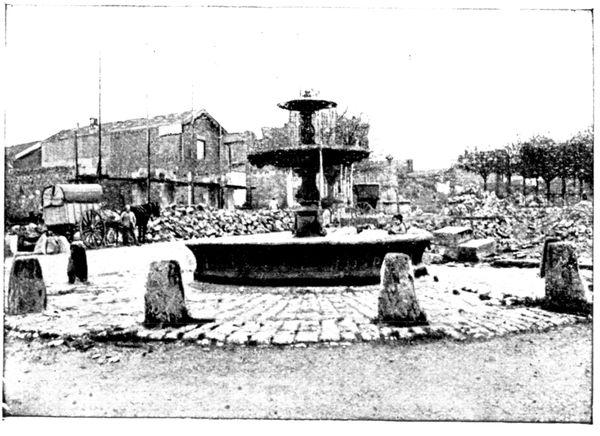
THE
GRAND SQUARE,
SERMAIZE
On arriving in the town, turn to the right. The street leads to the
central square, which is adorned by a fountain (see below). The enormous
rubbish heap which the town represented after the battle is gradually
being cleared. The inhabitants have returned, and bravely set about
the rebuilding of
their homes.
Helped by various
organisations,
French and foreign,
and above
all by bodies of
Quakers known as
the "Society of
Friends," who
have set up numerous
wooden
houses throughout
the countryside,
they are bringing
this desolate
region back to
life.
[Pg 235]
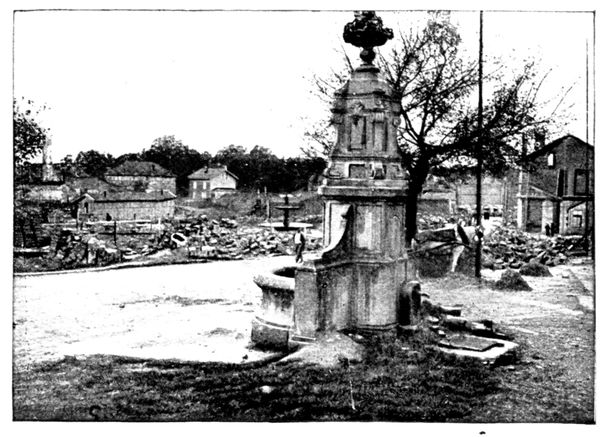
RUINS
AROUND THE
GRAND SQUARE
Take the Rue
Bénard, on the left of
the Square, in order
to visit the
church, which is in
the lower part of
the town, near the
Saulx. The photo
below was taken
from the right of
this street. In the
foreground is the
doctor's house, of
which only the
brass plate remains;
in the background
is a temporary
shanty run
up by the chemist.
We reach the
Saulx, on the opposite
side of which
stands the church,
which was shelled
and then burned by
the Germans. The
Romanesque porch,
which stood out
from it, has been
destroyed; the
nave is open to the
sky; and the spire
has collapsed. The
Romanesque
vaulting of the
transept and of the
apse has alone survived.
A fine fifteenth
century wooden
carving of Christ
has been burned, or
perhaps more probably
taken away
by the Germans.
Retracing our
steps, we take, on
the left before arriving
at the Place,
the Rue d'Andernay,
from number
35 of which the
central photograph
on the following page
was taken. A little
further on we rejoin
the road (G. C.
15, which becomes
G. C. 1 on leaving
the county), and[Pg 236]
follow it out of the town. On the right,
two kilometres further, is the "Établissement
thermal," whose waters are used
for drinking purposes, as well as for
baths and shower-baths. Pass through
Andernay (64½ km.), where a few houses
were burned down. Cross over the Saulx,
then, without entering Contrisson, turn
to the right (66 km.) and follow the railway
along the road.
Two kilometres further take the level-crossing,
and then, leaving the railway, which
breaks off to the right, follow G. C. 20.
Continue straight along G. C. 1.
G. C. 20 follows the Valley of the
Saulx, which, gradually narrowing, stretches
southwards. The Germans came up
the valley, driving in a wedge between
the Fourth and Third French Armies.
During September 9 and 10 the Fifteenth Corps was working astride this
valley, trying to re-establish connection. On the evening of the 10th, the
30th Division of this Corps
took Mognéville (2 km. distant
along G. C. 20), and
practically reached the spot
where the tourist is now standing.
The danger of a break
through was thus averted.
G. C. 1 leads the tourist to
Vassincourt (71 km.), which
has been entirely destroyed
by fire and shells. The
photo below depicts the entrance
to the village, those
of p. 237 the sacked church.

On the evening of September
6 Vassincourt was
the extreme left of Sarrail's
Army. It was attacked furiously by the German troops which had
just carried Revigny, and sought to take possession of the plateau commanding
the valleys of the Saulx and the Ornain, by which they hoped to
push on towards Bar-le-Duc and Saint Dizier. On the 7th, the 46th Line
Regiment was
clinging to the
edge of the village.
Colonel Malleterre, commanding
this fine
body of men, inspired
them with
his own indefatigable
energy. On the
8th the 57th Brigade
of the Fifteenth
Corps, attacking
from Mognéville
tried to free the
west of Vassincourt,
and to drive
back the Germans[Pg 237]
towards Revigny. Two dashing attempts,
resulting in heavy losses to two
Light Infantry Battalions of the 57th
Brigade, failed before the German resistance,
supported by a great superiority
of guns. The 46th maintained its
positions from Vassincourt to the Ornain.
On the 9th the attack began again
at dawn, and by the evening the burning
village was closely surrounded on
the east and to the south by trenches
which the French troops had dug hastily.
In the course of this day, Colonel Malleterre,
who had taken over the command
of the 19th Brigade and was directing
operations, was seriously wounded. It
was only on the 11th that the Plateau of
Vassincourt was completely cleared of
the German troops who had entrenched
themselves there.

Turn to the left in the middle of the village, in order to visit the church,
of which the spire has been brought down and the interior laid waste, then
return to the road.
After Vassincourt, G. C. 1
passes through Mussey (74
km.). Varney and Fains,
further up-stream, constituted
with Mussey three
passages which were covered
by the Fifth French Corps.
The Crown Prince had
given orders to the Thirteenth
German Corps to make themselves
masters of the bridges,
but the splendid resistance
of the French troops did not
allow the enemy to cross this
part of the waterway, which,
however, had been crossed further down, at Revigny.
After leaving Mussey cross over the canal, which the road follows on a lower
level, and pass Varney on the left. At Fains (79 km.) the canal has to be crossed
again, turning to the right. Then turn to the left, along the canal bank. This
leads to the high road to Bar-le-Duc G. C. (D. 4). Follow it, and enter the town
by the Boulevard de la Banque, the Rue d'Entre-deux-Ponts, and the Boulevard
de La Rochelle, where the hotel will be found (82 km.).
[Pg 238]
BAR-LE-DUC
ORIGIN AND CHIEF HISTORICAL FACTS
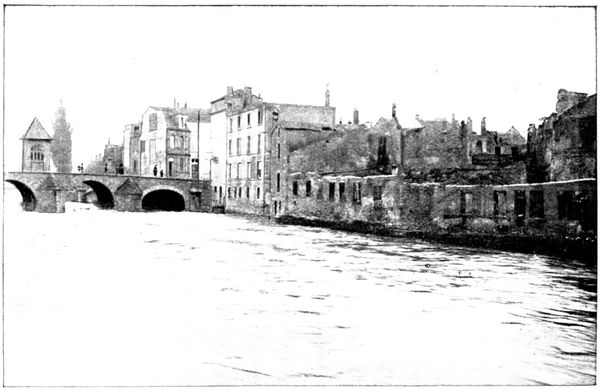
ENVIRONS OF
NOTRE-DAME
BRIDGE
AFTER AN
AIR-RAID
Bar-le-Duc is of Gallo-Roman origin. The name of Bar is very probably
derived from the bar which the Ornain forms at the spot where the Notre-Dame
Bridge now stands. The few dwellings erected at the edge of the
river were called Barrivilla, and occupied the site of the present "faubourg"
of Couchot, where the "Rue des Romains" still exists. At a later date, and
on the opposite bank of the Ornain, rose a fortified township named Burgum
Barri, which is to-day the district traversed by the Rue du Bourg. In the
middle of the tenth century Frederick I., Count of Bar, built a castle on the
hill overlooking the Ornain, to the west, and thus the upper town was created.
When Frederick I. became Duke of Haute-Lorraine the name of the town
was changed into Barro Ducis, whence Bar-au-Duc, then Bar-le-Duc.
In the middle ages Bar-le-Duc experienced the restless life of fortified
places. In the twelfth century Henry V., Emperor of Germany, then, in the
fourteenth century, the King of France, Philippe le Bel, declared their
suzerainty over the Counts of Bar. In the fifteenth century Anne of Beaujeu
gave up the district of Bar to the Dukes of Lorraine. During the seventeenth
century Bar changed hands ten times. The most celebrated siege was that
by Turenne in 1652, the lower town being taken at the end of a fortnight and
the upper town succumbing two days later. In 1670 Louis XIV. caused all
the fortifications, with the exception of the "Tour de l'Horloge," to be razed
to the ground. In 1737 the last hereditary Duke of Lorraine, Francis II.,
ceded the province to Stanislas Leczinski, the dethroned King of Poland,
on whose death it was to return to France. When this occurred in 1766
Bar was definitely incorporated in French territory.
Francis, Duke of Guise, and Marshals Oudinot and Exelmans, were born
at Bar.
The town was occupied from 1870 to 1873 by the Germans. In 1914
the Crown Prince thought he would be able to enter it without difficulty,
but Sarrail's Army undeceived him very decidedly, and the battle of the
Marne spent itself a few kilometres from the gates of the town. During the
period of trench warfare there were numerous air raids, although Bar is an
unfortified town (photo above).
[Pg 239]
[Pg 240]
VISIT TO THE TOWN
(See plan p. 239)

LIBERTY
BRIDGE
AND CHURCH
OF
NOTRE-DAME
Lower Town.—See Notre-Dame
Bridge and Church of Notre-Dame.
Upper Town.—See The Castle;
Gilles-de-Trèves College; The
Clock-Tower (tour de l'Horloge);
The Esplanade; The Place and
Church of Saint Pierre.
This town is famous for its celebrated
red-currant jam; the pips of
the fruit being removed one by one
before cooking. Also "Vin gris."
THE LOWER TOWN
Notre-Dame Bridge
This was first built of wood, then
towards the middle of the fourteenth
century, of stone. The Chapel to the
Virgin on one of the piles has been in existence since the seventeenth
century. It escaped destruction in the troubled times of the Revolution in
consequence, it is said, of the prudent substitution of the busts of Marat and
Robespierre for the statue of the Virgin.
There is a pretty view of the Ornain from the bridge; but in order to
see the bridge itself in its most picturesque aspect, take a few steps along
the edge of the south bank, whence the photo below was taken.
Notre-Dame
This church may be seen from the bridge. Parts of it date from the
thirteenth to the fifteenth centuries, whilst one front and one tower belong
to the eighteenth. The bas-relief of the façade representing the Assumption
belongs to 1750. In the interior, in the right branch of the transept, is an
interesting fifteenth century bas-relief representing the Virgin and symbolic
figures.
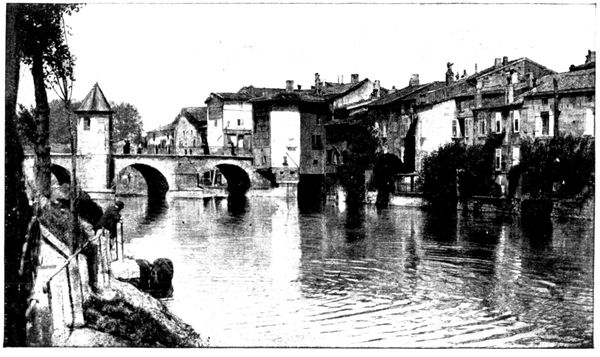
NOTRE-DAME
BRIDGE
(Photo L. L.)
[Pg 241]
THE UPPER TOWN
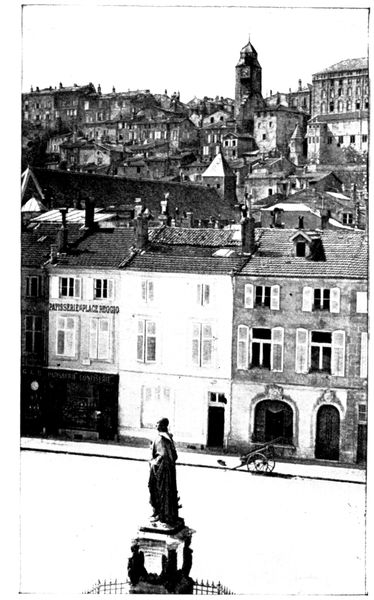
PLACE REGGIO
AND THE
UPPER TOWN
The upper town is the most
interesting part of Bar-le-Duc.
The two photographs on this
page show it as it appears from
the lower town.
Motors can reach it easily
by following the Boulevard de
la Rochelle, then taking, on the
right, the Rue Lapique, which passes
before the town-hall and leads to the
Avenue du Château.
At the top of this avenue after
passing, on the left, the Romanesque
entrance to the old ducal castle
(reached by about twenty steps)
by turning to the right one can
follow on foot the Rue Gilles-de-Trèves
for about one hundred
yards, as far as the ancient
college of the same name, which
is classed as an historical monument.
It has an interesting Renaissance
front looking on to the
courtyard.
Return to the Avenue du Château,
which is continued on the left by
the Rue du Baile. It is from there
that the photographs on p. 242
were taken, the one looking
towards the lower town, along the castle walls, the other towards Old
Bar.
At the end of the Rue du Baile, on the left is the Clock Tower shown in
the photograph on p. 243.

RUE ROUSSEAU
AND THE
UPPER TOWN
Pedestrians need not follow the above itinerary, but can gain the Clock Tower
directly by taking the Rue d'Entre-deux-Ponts and the Rue Rousseau, visible in[Pg 242]
the foreground of the photo on
p. 241. The Rue Rousseau after
skirting the Place Reggio (see
page 241), crosses the Canal des
Usines. In doing so, the little
Church of Saint-Anthony may be
seen astride the canal. It dates
from the fourteenth century. Turn
next to the left into the Rue Oudinot.
After about 200 yards, take on the
left the Rue Saint-Antoine as far as
the bridge over the Canal des Usines,
from whence there is a picturesque
view of the old houses which
throng this narrow stream of
water. We retrace our steps and
go beyond the Rue Rousseau in order
to take the Rue de l'Horloge on the
left. This street mounts to the
upper town and passes at the foot
of the Clock Tower. One rejoins
the latter by means of a stair,
the beginning of which is seen on
the left in the photo at the top of
page 243. The fourteenth century
Clock Tower is all that remains of the fortifications of Bar, which, as we have
seen on p. 238, were destroyed by order of Louis XIV. in 1670. From the
top of the stair, to the left of the tower, there is a fine view of the lower
town and of the valley. The photo at the foot of p. 243 was taken from this
spot. If one wishes to climb the tower, the guardian must be consulted.
Turn to the right on leaving the Clock Tower, in order to reach the Castle Esplanade,
which is planted with ancient trees. From this point there is a view of
another part of Bar-le-Duc (see photo p. 244).

[Pg 243]
To the left of the esplanade
are the remains of the old
ducal castle. The photo at the
foot of p. 244 depicts the
Romanesque doorway which is
the oldest part of it. We saw
this doorway from the other
side when ascending the
Avenue du Château. It was
formerly on the level, but in
1871, when the carriage road
was made, it was united to the
avenue by steps.
The castle occupied formerly
the whole of the plateau. It
was built in 964 by Frederick I.,
Count of Bar, and altered in
succeeding centuries. All that
remains are a few sixteenth
century buildings, seen in the
photo at the foot of p. 244, and
of which the external view is
reproduced at the top of p. 242.
The buildings and the chapel
seen between the Clock Tower
and the esplanade belong to
an old Dominican
convent built in the
nineteenth century.

VIEW OF BAR FROM THE CLOCK TOWER
After going round
the esplanade, return
to the Rue du Baile
and follow it towards
Old Bar.
Take, on the right
of the Place-de-la Fontaine,
Rue des
Ducs de Bar, which
has preserved some
quaint sixteenth and
seventeenth century
houses. Turn to the
left in this street in
order to enter Place
Saint-Pierre, at the
extremity of which
stands the church
of this name, classed
as an historical
monument.
The Place has retained
its old world
aspect. Sixteenth
and seventeenth
century houses, of
which the most
beautiful, No. 21, is
a museum, form a
fitting frame to the
old church.
[Pg 244]
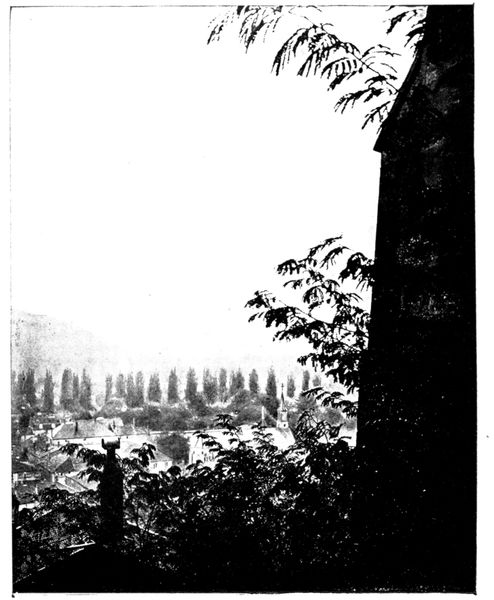
BAR SEEN FROM THE ESPLANADE
The museum is
open to the public
on Sundays, from
1 p.m. to 4 p.m.,
and at any time
to strangers to the
town (gratuity).
It contains collections
of painting,
sculpture, and
natural history.
Saint-Pierre is
the oldest church
in Bar-le-Duc.
It was begun in
the fourteenth century;
the front, reproduced
on p. 245,
dates from the sixteenth
century,
with the exception
of the quadrangular
cupola surmounted
by a lantern, which
crowns the tower.
This portion,
which jars with
the transitional
Gothic of the rest
of the edifice, was
added in the seventeenth
century. The plans for the right hand tower were never executed.
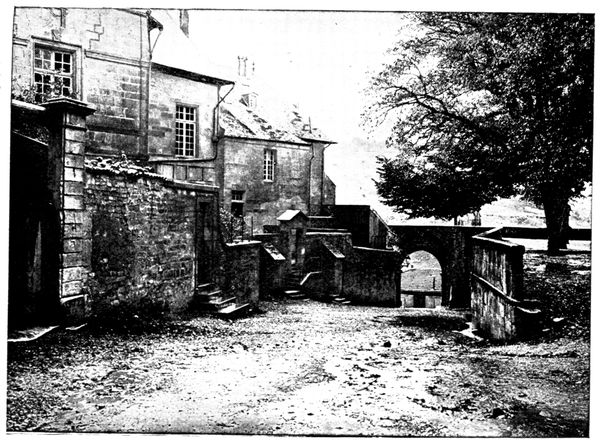
THE OLD CASTLE
SEEN FROM THE
ESPLANADE
In the interior, in the right branch of the transept, is the masterpiece of
the great Lorraine sculptor of the sixteenth century, Ligier-Richier, pupil of[Pg 245]
Michael Angelo. It is the
funeral monument of René
of Châlon, Prince of Orange,
and is commonly known as
"the Skeleton."
René de Châlon, who was
killed in 1544 at the siege of
Saint-Dizier, is said to have
expressed the wish to be impersonated
on his tomb as he
would be three years after his
death. It was in order to
conform to his wish that his
widow, Louise of Lorraine,
ordered Richier to execute the
strikingly realistic monument
seen in the photo below. The
"Skeleton" was carved in
stone, then placed in a bath
of oil and wax which gave it
the appearance of old ivory.
Opposite the pulpit and
suspended from the pillars in
the nave, is a carving of Christ
between the two thieves. This
crucifixion-group dates from
the sixteenth century and is in
walnut wood, but has been
repainted in modern times.
It has sometimes been attributed to Ligier-Richier. In a chapel to the
left of the choir there is kept a sixteenth century bas-relief representing
St.-François d'Assises, patron saint of François Brûlé, rector of Saint-Pierre,
between Saint Peter and Saint Max, Abbot of Chinon.
In the right aisle there is a beautiful Renaissance chapel and the baptistry.
Motors descend again into the lower
town by the same road taken in coming
up.
Other secondary places of interest
Monument des Michaux, at the
corner of Rue Rousseau and Rue du
Bourg, was erected in 1894. The
two Michaux were the carriage-builders
who invented the fitting of
pedals to bicycles.
The "Café des Oiseaux," in the
theatre in the Rue Rousseau, the hall
of which is surrounded by glass cases
containing more than 50,000 natural
history specimens.
The Rue du Bourg is famous for
its old Renaissance houses.
The Public Garden lies behind
the town-hall.
The Church of Saint-Jean at
the end of the Boulevard de la
Rochelle was begun in 1882 in the
Romanesque style.
The "Porte de la Couronne"
(Place de la Couronne) dates from
1751.
[Pg 246]
FIELD OF OPERATIONS
OF THE
THIRD FRENCH ARMY
III.—TOUR ROUND BAR-LE-DUC
(66 km.)
(See map inserted between pp. 212-213)
Via Villers-aux-Vents, Brabant-le-Roi, Revigny, Nettancourt,
Sommeilles, Laheycourt, Louppy-le-Château, Louppy-le-Petit,
Génicourt, Vavincourt
Leave by the Boulevard de
la Banque. Cross the Canal
des Usines, then take on the
right the road to Revigny or
G. C. D. 4, 1,500 yards further.
Cross the railway by a level-crossing
and then the Marne-Rhine
Canal.
The road dips down to the
left in order to follow the
railway, and then crosses the
Ornain, of which it follows the
right bank. We come to the
hamlet of Venise, but continue
in the direction of Laimont
(12 km.). Half-way thither,
on the right, may be seen the
woods which constituted the ultimate line of resistance of the Fifth Corps
during the violent attacks which it experienced on September 6, and in which
it lost about ten kilometres. Snatched from the Tenth Division of the Sixth
Corps on the night of the 6th, Laimont was only retaken on the 11th by
the Fifteenth Corps. As may be seen in the above photo, the church was
damaged by shells. Many houses were destroyed. When they left Laimont
the Germans took away seven hostages, among them the rector.
G. C. D. 4 branches off to the left to cross through Laimont, and passes in
front of the church; but instead of following it, leave the village on the left and
continue straight along the road which becomes G. C. D. 15.
2 km. 4 further on, take the "Chemin vicinal" to the right leading to Villers-aux-Vents.
After crossing a stream, turn to the left at the entrance to the village,
following a winding road which leads to the church. Villers-aux-Vents
(16 km.) was completely destroyed by the fire which the Germans kindled
before leaving. It was attacked on September 6 by masses of infantry
coming up from the north and north-west, and gallantly defended by the
Tenth Division, which occupied the village and its neighbourhood. Violent
fighting took place to the north of Villers, near the Grand-Morinval Pond, in
the course of which General Roques, who was commanding the Division,
was mortally wounded. Giving way under force of numbers, the Tenth
Division was obliged to evacuate Villers and fall back on Laimont. As
we have seen above, this village also was lost during the night, and the line
of defence was taken up in the woods to the east.
The Germans took three hostages at Villers, under circumstances of
which one of them, M. Vigroux, gave details before the Commission of
Enquiry. He was coming out of his house when he perceived another
resident, M. Minette, surrounded by soldiers. "At the same time," he[Pg 247]
declared, "a Prussian came
up to me, seized me, and
led me away, his revolver
pointed at my head, without
my having threatened or gesticulated.
I next saw the Prussians
strike Minette with their
fists and with the butt-end of
their rifles; they also tore off his
clothes, finally leaving him naked.
"They then secured his hands
with an iron chain."
The hostages were led one
kilometre from the village.
Minette was separated from the
group and made to kneel. He was then shot. As far as his companions were
able to understand, the Germans appeared to have found in his house an
old and useless revolver. After the death of Minette, the other hostages were
set free.
At the other end of the village from the church, in a field on the left, is a
subterranean shelter, known in the village under the name of the "Crown
Prince's Dug-out," the photo at the top of this page shows the entrance to
it. This shelter was dug during the German occupation, and the armchairs
from the church were placed in it to make it more comfortable.
According to local authority,
the Crown Prince stayed for a
time at Villers, and the shelter
was made for his convenience.
Descend from the plateau on
which the village is built, and
at the foot of the hill, after
having crossed the river, take
on the right the "Chemin vicinal"
which leads back to
G. C. D. 15. It is the little
road which is seen in the above
photograph. G. C. D. 15, planted
with trees, appears on the
horizon.
[Pg 248]
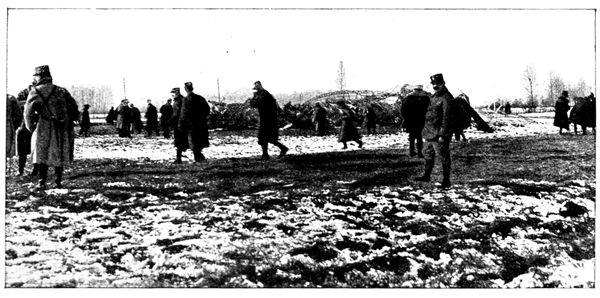
DÉBRIS OF THE
ZEPPELIN
BROUGHT
DOWN AT
REVIGNY
At the meeting of the roads, turn to the right towards Brabant-le-Roi (20 km.).
In this village, turn to the left near the church and continue straight forward to
Revigny (22 km.) by G. C. 20, which crosses the picture at the foot of p. 247.

THE GUN
WHICH
BROUGHT
DOWN
THE ZEPPELIN
It was between Brabant and
Revigny, near the railway
which follows the road on the
right, that the Zeppelin L.Z. 77
was brought down on February
21, 1915, at 9·15 p.m. The
carcase of the great air-ship
is visible in the above photo;
opposite is the photo of the
motor-cannon which brought it
down. It was under the orders
of Adjutant Gramling (on
the right in the photo) and
was pointed by the Chief-Pointer
Pennetier (at his post
of observation behind the shield).
Revigny, like Brabant-le-Roi, fell on September 6, in spite of a brilliant
defence by the Fifth Corps. On September 12 it was re-occupied by the
Fifteenth Corps. In Revigny, after passing a level-crossing and continuing
straight on, turn to the left, in order to reach the church shown in the photograph
below.
[Pg 249]

VIEW OF RUINS OF TOWN-HALL
The Church of Revigny
is classed as
an historical monument.
It is a fifteenth
and sixteenth century
edifice, the most interesting
part of
which is the apse.
The gargoyles on the
buttresses are
curious. The steeple
was destroyed by the
fire lighted by the
Germans; the roof
fell in and the interior was ravaged by the flames.
On returning to the street by which we entered, continue towards the centre
of the town, then turn to the left into the principal street, from which, over the
ruined houses, the photo (below) of the church was taken. At No. 21, at
the corner of the Rue du Four, is the bakery of which we give photographs,
both of the interior
and the exterior, at
the foot of the page.
Hundreds of houses
are in this state
or have completely
disappeared.
We reach next
the Place de l'Hôtel-de-Ville;
the town-hall
has been completely
destroyed.
The fire was
preceded by pillage.
Numerous
waggons were
laden with articles
deemed of interest,
and sent down the
line. The walls of the
houses were then sprayed with paraffin from hand syringes. Packets of tablets
made of compressed gunpowder, and sticks of inflammable matter thrown into
the burning houses, stimulated the flames. During three days the fires which
died out were thus relighted. Only the houses where the officers were
staying were spared. As they declared to the rector, the Germans did this
from no other motive but to spread terror, and they did it systematically.

INTERIOR AND EXTERIOR OF A BAKERY
[Pg 250]

PANORAMA OF THE PASS OF REVIGNY.
1,200 yards beyond Brabant may be seen, on the left, the panoramic view of the valley of the Ornain shown in the photographs above. The river, the railway from Bar-le-Duc to
Vitry-le-François, and the canal from the Marne to the Rhine pass through it, and take up the south of the depression behind Revigny. On the left beyond Brabant-le-Roi the valley
narrows towards Bar-le-Duc; on the right it widens in the direction of Sermaize and meets the Valley of the Saulx. The whole constitutes what is known as the Pass of
Revigny, and was the object of furious attacks by the Germans who sought to separate the Third and Fourth French Armies in this region. As early as September 6 under a
violent offensive, the Fifth Corps lost Brabant and Revigny, and was thrown back on the plateau in the centre of which is Vassincourt, where the tourist has already passed. The
German advance was stayed in the neighbourhood of this village, thanks to the admirable resistance of the Fifth Corps, aided by the Fifteenth.
[Pg 251]
On arriving at the Place de l'Hôtel-de-Ville, we shall retrace our steps as far
as the Church of Brabant-le-Roi, then turn to the left towards Nettancourt
by C. G. D. 15.
Continue along the road and go over a level-crossing, then follow the valley
of the Chée to reach Nettancourt (30 km.), and turn to the left to reach the
chapel. The church is not in the village, but on a hill to the west. It dates
from the fifteenth and sixteenth centuries, and is classed as an historical
monument. It has suffered from fire and from shells.
Nettancourt fell into the hands of the Germans on September 6. On
leaving the village, strike off G. C. D. 15 and take on the right the Sommeilles
Road or G. C. 27. Go over a level-crossing and turn immediately to the left. At
Sommeilles (34 km.), turn to the left to reach the church, then to the right in
order to visit the town-hall. The church is capable of restoration, but of
the latter only the front remains. As for the houses, they were completely
destroyed by fires lighted by the Germans under the same conditions as at
Revigny—by spraying them with paraffin from hand-pumps.
It was on the 6th, when the 51st German Infantry Regiment arrived, that
fires broke out in the whole of the village. The inhabitants fled before the
flames, but the soldiers seized them and asked for information regarding
the movements of the French troops, threatening at the same time to shoot
them. Eight hostages were led as far as Brabant-le-Roi, where they were
released after having been made to kneel, whilst their captors made a dumb
show of firing at them.
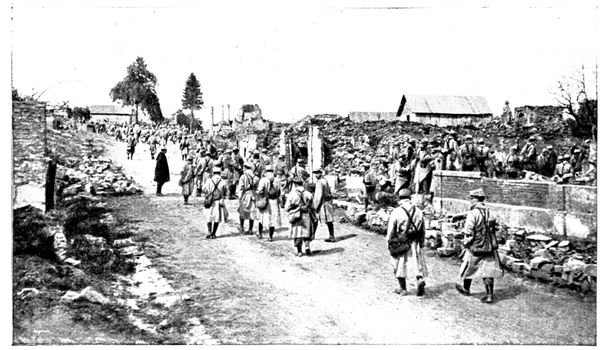
TROOPS VISITING THE RUINS OF SOMMEILLES
The Germans committed still more inexcusable crimes at Sommeilles.
On September 12, when the Light Infantry entered the village, the officers
and the doctor found in the cellar of the Adnot family's house, seven corpses.
Death had taken place under particularly atrocious conditions. The Official[Pg 252]
Report gives the following
details:
"We discovered the body
of a man of about sixty
(M. Adnot) who had been
shot, he had two wounds in
his chest, and his eyes were
still bandaged; that of a
woman of about the same age
(Mme. Adnot) with no visible
wounds; another of a woman
of about thirty-five years, whose
right fore-arm, entirely severed from the rest of her body, had been thrown
at some distance. Her clothing had been torn off (this woman appeared
to have been violated). Then that of a little girl of about twelve years,
who seemed to have met the same fate; those of three children of from
five to ten years, two of whose heads had been cut off and thrown near the
bodies."
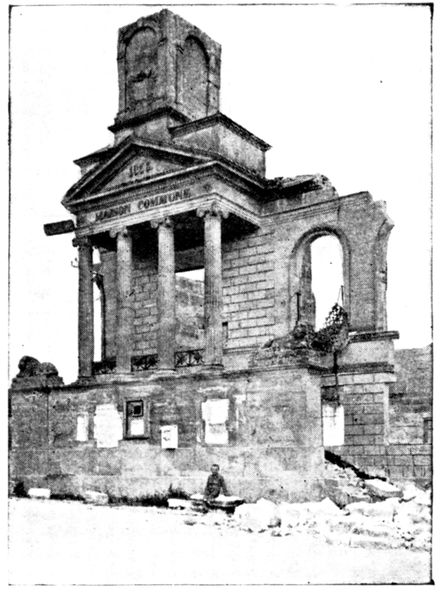
After visiting Sommeilles, we retrace our steps as far as the cross-roads, which
we met on arriving at the village, and
continue straight on towards Laheycourt
by G. C. 35. In Laheycourt (39 km.),
through which we pass, the monumental
town-hall on the right, shown in the
photo below, is worthy of note. It was
burned by the Germans. The church
opposite was turned into a hospital, and
was spared for this reason. A certain
number of houses were burned, or destroyed
by shells.
On leaving Laheycourt, pass a level-crossing,
then follow the railway for about
2 km. The railway then leaves the road
and goes towards Villotte and Lisle-en-Barrois,
while the road continues along
the Valley of the Chée towards Louppy-le-Château.
The right wing of the Fifth Corps
experienced violent fighting in this region on
September 6. After having lost Sommeilles and Laheycourt, it turned to
bay at Louppy-le-Château, as also at Villotte on the 8th.
Traversing Louppy-le-Château (44 km.), three-quarters destroyed by
fire, the church will be noticed on the right, in a piteous condition from
shelling, as shown in the photographs on p. 253. It dates from the thirteenth[Pg 253]
century and was
restored in the nineteenth.
The steeple
was destroyed and
the roof has fallen
in. The bell, which
was recovered from
amidst the ruins,
has been set up on
the ground, and
still summons the
inhabitants to the
services held in the
roughly repaired
choir.

RUINS OF LOUPPY-LE-CHÂTEAU
The Germans
committed revolting
acts of brutality
and immorality at Louppy-le-Château during the night of September 8-9,
in a cellar where women and children had taken refuge from shell-fire.
Two married women of 74 and 70 years, a spinster of 71 years, and a mother
of 44 years and her children were odiously misused. The mother made
the following declaration before the Commission of Enquiry:
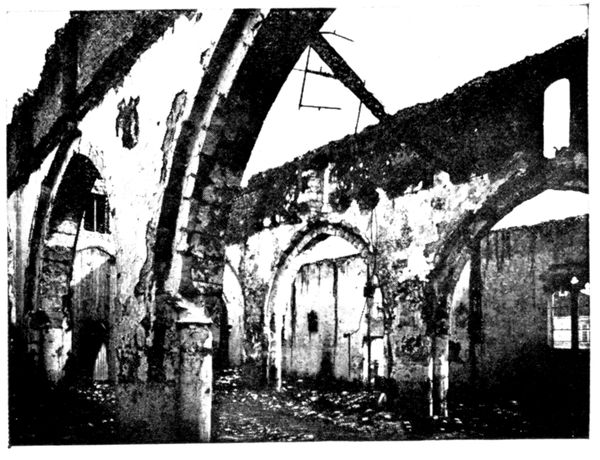
"I was in M. Raussin's
cellar with my five children
and other persons from the
village, when three Germans,
with revolvers in their hands,
entered. One of them commanded
me to lie down on
the ground. I was obliged to
obey.... Meanwhile, I
received numerous blows. The
Germans left the cellar, but
two came back again. I made
a dash for the stair and was
not again mishandled, but
I heard sounds of the scenes
of violence to which the women
who remained in the cellar
were subjected. Among them were my two daughters aged thirteen years and
eight years respectively. Both were violated, the latter, who was killed by a shell
splinter on the following day, being unable to walk."
The brother of the little victims, a boy aged eleven, made the following
declaration: "I was
sleeping in M. Raussin's
cellar, when two
Germans woke me,
and tore my trousers.
I cried out:
'I am a little boy.'
They gave me a
sound thrashing and
struck my head with
their fists."
On leaving Louppy-le-Château,
turn
to the left into I. C.
55 in the direction.[Pg 254]
of Louppy-le-Petit. Cross the Chée, then
turn immediately to the right. 2½ km.
further on cross a tributary of this river,
and thus reach Louppy-le-Petit (49 km.).
The defenders of Louppy-le-Château, subjected
to a violent shell-fire, were obliged
to abandon the village on September 8,
and fall back on Louppy-le-Petit, which
they were compelled to abandon likewise
on the 9th. The line of defence was
removed further east to Génicourt, which
the tourist will pass after Louppy.

BELL
OF CHURCH
LOUPPY-LE-CHÂTEAU
In Louppy, turn to the right towards the church, where the bombardment
has caused much havoc. Descend towards the Chée and, cross it. Immediately
afterwards, I. C. 55 turns to the left in the direction of Génicourt-sous-Condé
(51½ km.).
Pass straight through Génicourt, go over a level-crossing, then over the river,
and 200 yards beyond, at the entrance to Condé, turn to the right into G. C. 28
leading to Hargeville (54½ km.).
We are leaving the zone
of the fighting of September.
Turn to the right in
Hargeville to cross the river,
then to the left towards the
church and continue
straight on.
On leaving Hargeville, cross
the railway twice by level-crossings.
At Vavincourt
(58 km.), turn to the right
in order to pass the church,
and go through the village
to the far end. On leaving
it, take the road on the right
(I. C. 16), which branches off from G. C. 28. I. C. 16 goes through Behonne
then descends into the valley of the Ornain and Bar-le-Duc. At the foot
of the slope, cross the railway and the canal, then again the railway. Turn
to the left immediately afterwards into the Rue des Romains; then take the Rue
Couchot (3rd on right). Leave it to follow the Rue de l'Hospice on the left, which
passes Notre-Dame. On arriving at the church, turn to the right towards Notre-Dame
Bridge by Rue de Bar-la-Ville. After crossing the bridge take the Rue
Notre-Dame which is a continuation, then Rue d'Entre-deux-Ponts on the left. On
the left is the Boulevard de la Rochelle, where the hotel will be found (65 km.).
[Pg 255]
FIELD OF OPERATIONS
OF THE
THIRD FRENCH ARMY
IV.—FROM BAR-LE-DUC TO VERDUN
(63 km.)
(See map inserted between pp. 212-213)
via Naives, Vavincourt, Marats, Rembercourt-aux-Pots, Vaux-Marie,
Beauzée, Amblaincourt, Seraucourt, Issoncourt, Heippes,
Souilly.
Leave Bar-le-Duc by the Boulevard de la Rochelle, at the east end of which,
before St. John's Church, turn to the left and cross the Pont-Neuf. Then turn
to the right into the Rue Ernest Bradfer; 300 yards further on, turn to the left into
the Rue du Passage-Inférieur. After crossing the railway, turn to the left into
the Rue de Popey. 250 yards farther on the Rue de Saint Mihiel will be found on
the right, and this is continued by the G. C. S. 1 bis.
At Naives (5 km.), turn to the left and take G. C. 28, which climbs the
plateau, at whose foot we have been travelling since leaving Bar-le-Duc. Pass
straight through Vavincourt (8 km.) and take I. C. 16, a hilly road, leading
to Marats-la-Grande (14½ km.). Descend into the village, turn to the left;
and on leaving it by its western end, take, on the right, I. C. 48 leading to
Rembercourt-aux-Pots (18½ km.).
We are entering the zone of action of the Sixth Corps. Rembercourt was
attacked on September 7, but held out, thanks to the defences which had
been strongly organised round it. It was abandoned on the 10th and retaken
on the 12th.
The road passes in front of the church, which is classed as an historical
monument (photo below). It is one of the most remarkable in the Department
of the Meuse. It dates from the fifteenth century, but its beautiful
front is Renaissance. The roof of the nave and that of the left aisle have
been destroyed by German shells, but fortunately the front only suffered
slightly. Take the street on the right on leaving the church; it leads out of
Rembercourt by G. C. 35.
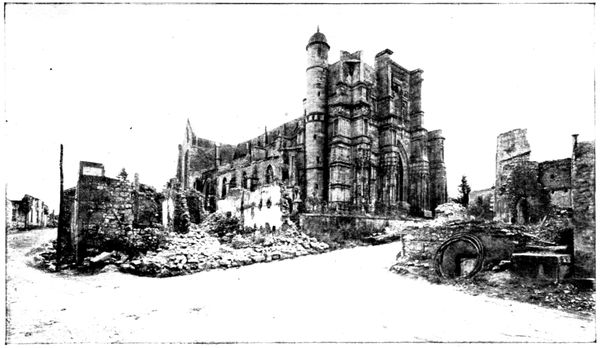
CHURCH,
REMBERCOURT-AUX-POTS
[Pg 256]

WEST FRONT OF CHURCH, REMBERCOURT
3 km. farther, turn to the
left in order to pay a visit to
Vaux-Marie Farm (22 km.),
which was one of the most
important centres of resistance
in this part of the
battlefield.

A few yards from the cross-roads,
on the right, is a large
common grave, of which the
photograph is given below.
Soldiers belonging to the 132nd
Line Regiment and the 26th
Battalion Light Infantry are
buried there. The farm stands
at a distance of 1,500 yards from the cross-roads. As shown in the photos on
pp 256-257, its buildings have suffered badly from the violent shell-fire to
which they were subjected, particularly on September 8. The attacks
were fierce, but the defences which the Light Infantry had established
round the farm
enabled them to
hold out until
the 10th. The
farm was abandoned
at the
same time as
Rembercourt,
and retaken
on the 12th
with the latter
village. The
whole of the
plateau extending
from Rembercourt
to
Vaux-Marie
was the scene
of combats
which were among the most violent of the Battle of the Marne.
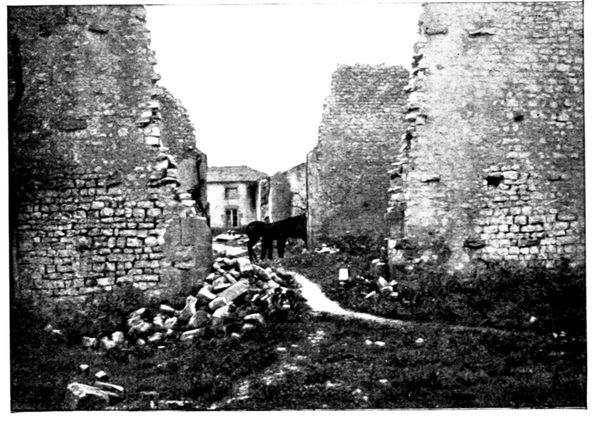
Continuing along the road, after leaving the farm, go over first one level-crossing,
then another. The line runs between embankments, and was
utilised as a line of defence. French and German graves (seen in centre of
this page) were dug
along the slope.
On the right of
the road is Hill
302, on the left
Hill 293, which
were comprised in
the line of resistance
of the Twelfth
Division of the Sixth
Corps on September
6, and of the
107th Brigade on
September 7.
Before descending
from the
plateau into
Beauzée, there is[Pg 257]
a very fine view. The photograph
at the foot of this
page shows the valley of
Seraucourt, which the tourist
will visit after Beauzée. It
was there that the 40th
Division of the Sixth Corps
manœuvred. The photo at
the top of p. 258 was taken
looking towards Beauzée,
whose steeple is visible. The
numerous graves on either
side of the road recall the
violence of the
struggle on
September
6, when German
pressure
obliged the
Twelfth Division
to evacuate
Beauzée and
fall back on
Hills 302 and
293, which the
tourist has just
passed.

COURTYARD OF FARM VAUX-MARIE
Before entering
Beauzée,
go over two
level-crossings.
Follow the principal street, and turn to the right in order to arrive at the
church (27 km.).

VIEW OF THE VALLEY OF SERAUCOURT
[Pg 258]
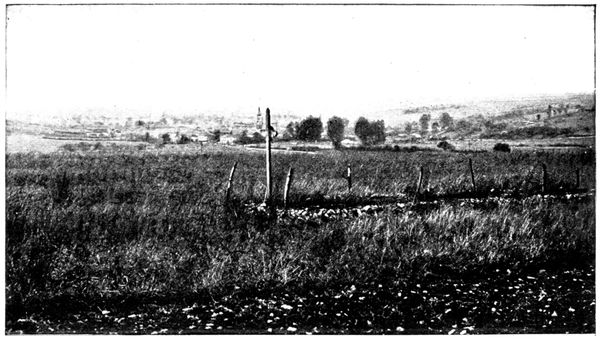
VIEW LOOKING TOWARDS BEAUZÉE
The photographs on pp. 258-259 give some idea of the state in which the
German bombardment left this fine building. The church dates from the
sixteenth century, as is shown by the rich ornamentation of the west front
(see at the top of p. 259). This part of it received several shells, and in the
photograph the shattered fragments resulting from this may be seen strewn
on the ground. The nave, the apse, and the transept suffered most of
all. The tower, restored in modern times and crowned by a spire, escaped
destruction. It will, perhaps, be possible to save the panellings of the stalls
and confessionals, which date from the eighteenth century.
A large number of houses in the village, and particularly around the
church, were destroyed by shells.
Turn to the right in front of the church, into the street shown in the photograph
at the foot of p. 259. Then turn to the left towards the river and cross it.
There is a very picturesque
view of the village from
this spot (photograph p. 260).
Immediately after passing
the Aire, turn to the
right into I. C. 26, which
goes up the valley towards
Amblaincourt
(29 km.).
This little village was
destroyed. The view in
the centre of p. 260 shows
what remains of the town-hall,
which was formerly
a church. In Amblaincourt,
turn first to the right and then
to the left, without crossing
the railway. I. C. 26 going
to Seraucourt follows the
valley which appears on the
panorama on p. 257. A
tributary of the Aire and
the little railway from
Bar-le-Duc to Verdun
follow the windings of this
valley.
[Pg 259]
The 40th Division of the Sixth Corps
fought on the two heights which command
the valley to the north and to the south.
The southern one (and especially Chanet
Wood, which we can see on the right)
served as a place of retreat when the
attacks of September 6-10, which aimed
at taking the northern crest, failed. On
the 10th, in spite of an heroic resistance,
the 40th Division was obliged
to abandon Chanet Wood and to retire
for several kilometres. On the night
of the 12-13th the Germans, having
been completely beaten on all other
points of their front, evacuated their
positions, which the French re-occupied
the next day.
Pass straight through Seraucourt
(31½ km.). Part of its houses were destroyed
by
shell-fire.
From Seraucourt
to
Lemmes we
are going
over the
battlefield
of the reserve
divisions
placed
at the disposal
of the
Third Army,
in order to
strengthen
and prolong
its right
wing, and
to attempt to
outflank the
enemy's left.
Tn the neighbourhood of Seraucourt the 65th (reserve) Division linked
up with the 40th Division of the Sixth Corps.
Still following the valley, we reach Rignaucourt (33½ km.). To the
north of the village, on the
plateau, is Blandin Wood,
which was occupied until
September 10 by the 65th
(reserve) Division. From there
it hurled its daily attacks to
the west against the flank of
the enemy. On the 10th it
was thrown back violently
to the south-east, beyond
Landlut Wood, which crowns
the plateau to the south, and
lies to the right of the road.
The German retreat took place
on the night of the 12th.
[Pg 260]
In Rignaucourt,
turn to the right in
order to pass in
front of the church;
descend towards the
railway, and beyond
the level-crossing
go over the river,
and turn at once to
the left towards Issoncourt
(35½ km.). At
the entrance to the
village, turn to the
left into G. C. D. 6,
which is the main
road from Bar-le-Duc
to Verdun. After two
railway-crossings
we arrive at Heippes (39½ km.). The 65th and 75th (reserve) Divisions
fought desperately to the west of this road in Ahaye Wood, until September
10, endeavouring to give relief to the Sixth Corps by an attack on the
German flank.

Leaving Heippes church behind, I. C. 24 leading to Saint-André comes into
view on the left. This road
formed the pivot of the
attacks of the 75th Division,
one part of which was
operating to the south, with
the 65th Division in Ahaye
Woods; the other to the
north in the Woods of
Châtel and Moinville. After
a fierce struggle the reserve
divisions were forced to
retire. Whilst the 65th
Division clung for a time to
Hill 342 or the Signal
d'Heippes, which commands
the village to the south-west
beyond the railway, the 75th
held out in Heippes, but on the 10th both were driven back to the east
of G. C. D. 6.
After Heippes the road goes towards Souilly (43½ km.). On the heights
to the left of the road the 75th (reserve) Division fought, Souilly was
abandoned by it on September 10.
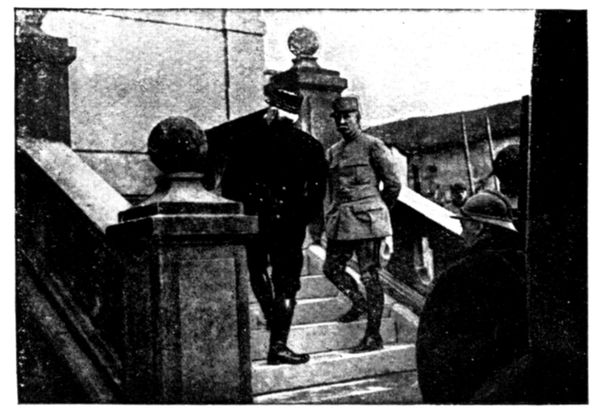
JOFFRE AND PÉTAIN AT SOUILLY
During the great battle
of Verdun in 1916 General
Pétain had his headquarters
at Souilly Castle. The photograph
opposite shows the
victor of Verdun in company
with General Joffre.
Go straight through
Souilly to reach Lemmes
(48 km.), after twice crossing
the railway. To the west
of the road is the battlefield
of the 67th (reserve)
Division and the mobile
defences of the entrenched[Pg 261]
camp of Verdun which, during
the Battle of the Marne,
worried the German communications
by frequent raids
against their flank.
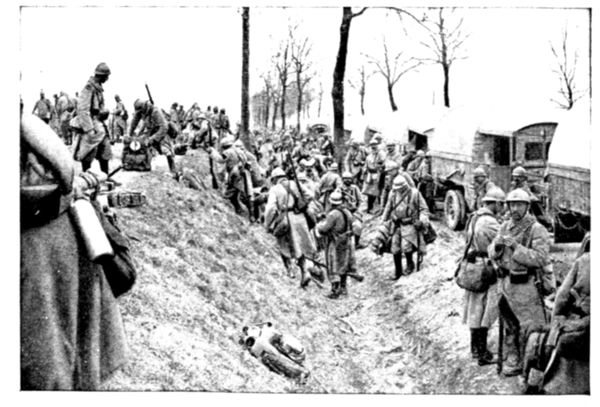
TROOPS
DISMOUNTING
FROM
MOTOR-BUSES
G. C. D. 6 rejoins N. 3
beyond the hamlet of Moulin-Brûlé
(54 km.). The railway
is again traversed by two
level-crossings.
This little line, which
comes from Bar-le-Duc, and
which we have followed
from Beauzée, was at the
beginning of the Battle of Verdun the only one possible for victualling
the troops. The main line from Châlons to Verdun was under the fire of
the German artillery, and that from Bar-le-Duc or from Toul to Verdun
was occupied in its centre, at Saint-Mihiel, by the enemy. The capacity
of this single branch was so small that all the heroism of the defenders
would have been vain, and the Germans would have entered as conquerors
into the old city, if, by a remarkable feat, motors had not been able to
replace the feeble railway. The road which the tourist followed on leaving
Bar-le-Duc, and which he rejoined at Issoncourt, has been known since
that epoch as the "Voie Sacrée" (the Holy Way). An average of 1,700
motors transporting troops, ammunition and stores, went by each day in
both directions, making one vehicle every twenty-five seconds. The view
below gives an idea of this line of cars winding across the country.
At the junction with N. 3, shortly after passing the spot where the railway
crosses the road, turn to the right in the direction of Verdun (63 km.). This
town and its entrenched camp, whose renown has become worldwide, are
the subject of a special volume.

FLEET OF MOTOR-BUSES BRINGING TROOPS BACK FROM VERDUN
[Pg 262]
INDEX OF NAMES AND LOCALITIES
MENTIONED IN THIS WORK
The figures in heavy type indicate the pages on which
there are illustrations.
PAGES
- Acy-en-Multien, 99, 100, 103
- Allemant, 13, 159, 161, 163, 184
- Andernay, 236
- Asquith, 90, 91
- Barcy, 90, 93, 104, 106, 111, 113, 114
- Bar-le-Duc, 10, 17, 19, 236, 238 to 255
- Baron, 68
- Beaufort (Commandant de), 177, 178, 181
- Beauzée, 257 to 260
- Brabant-le-Roi, 247, 248, 250
- Broyes, 13, 159, 162, 163, 172 to 184
- Chambry, 85 to 89, 92, 107, 108, 113
- Châlons-sur-Marne, 17, 19, 196, 198 to 209
- Champaubert, 165, 169, 184
- Champfleury (Ferme de), 93 to 95, 103, 106
- Chantilly, 20 to 37
- Cheminon, 228, 230, 233
- Coulommiers, 7, 8, 17, 115 to 126
- Courdemanges, 216
- Crécy-en-Brie, 18, 48, 116 to 121
- Dourlent (Abbé), 46 to 48
- Écury-le-Repos, 189, 190, 194
- Esternay, 9, 150, 153, 168
- Étrepy, 224
- Étrépilly, 95, 97, 103, 105, 107, 113, 114
- Favresse, 222, 223
- Fère-Champenoise, 19, 162, 163, 170, 185, 189, 193, 194
- Ferté-Gaucher (La), 18, 126, 148, 150
- Ferté-sous-Jouarre (La), 11
- Foch (Général), 7 to 16, 160, 180, 186, 189
- Franchet d'Esperey (Général), 7 to 16, 161
- French, 7 to 16
- Frignicourt, 217
- Gallieni (Général), 5, 6 to 16, 98
- Grossetti (Général), 10 to 16
- Guerre (Sergeant-major), 188
- Haig, (Douglas) (Général), 8
- Hausen (Von), 7 to 16
- Hauts de Meuse, 11 to 16
- Heiltz-le-Maurupt, 224, 225
- Huiron, 215, 216
- Humbauville, 215
- Humbert (Général), 13 to 16, 159, 175, 181
- Joffre, 5 to 16, 187, 260
- Kluck (Von), 5 to 16
- Kronprinz, 7 to 16, 237, 238, 247
- Laimont, 246
- Langle de Cary (Général), 7 to 16, 213, 231
- Lenharrée, 191, 193, 194
- Linthes, 14, 163, 185
- Louppy-le-Château, 252 to 254
- Louppy-le-Petit, 254
- Magnard (Albéric), 68, 69
- Mangin (Général), 149
- Marcilly, 93, 94, 95, 104 to 107
- Maunoury (Général), 5 to 16
- Maurupt, 225 to 233
- Meaux, 17, 18, 74 to 80, 114, 116
- Mondement, 13, 14, 159, 162, 171 to 184
- Mont-Août, 162 to 164, 185, 195
- Monthyon, 82 to 86, 91, 106
- Montgivroux, 170, 172, 182, 184
- Montmirail, 11
- Mont-Chalmont, 14, 162, 163
- Morains, 195
- Moret (Mont), 216, 217, 219
- Morin (Grand), 10, 18, 117
- Morin (Petit), 162 to 167
- Nanteuil-le-Haudouin, 102
- Neufmontiers, 80 to 83
- Nogeon (Farm), 98, 104
- Normée, 187, 190, 192, 194
- Notre-Dame-de-l'Épine, 210 to 212
- Odent (M.), 48 to 50, 66
- Oudin (Abbé), 214
- Oyes, 170 to 173, 181
- Pargny, 226 to 229
- Péguy (Ch.), 82
- Penchard, 73, 82 to 86, 106
- Pétain (Général), 179, 180, 187, 260
- Pleurs, 14, 162, 163
- Poirier (Signal du), 13, 168 to 172, 181 to 184
- Provins, 7, 17, 126 to 146
- Pucelles (Château des), 159, 175 to 178, 184
- Puisieux, 96, 97, 104
- Rembercourt-aux-Pots, 255, 256
- Reuves, 172, 173
- Revigny, 9, 236, 237, 248 to 251
- Rochelle (Plateau de), 179, 187 to 190, 194
- Saint-Gond (Bois de), 170, 182 to 184
- Saint-Gond (Prieuré de), 172
- Saint-Dizier, 231, 236
- Saint-Mihiel, 7
- Saint-Prix, 165, 167 to 169, 172, 184
- Sarrail (Général), 10 to 16, 231, 236, 238
- Senlis, 17, 18, 36 to 65
- Sermaize, 225 to 235
- Sézanne, 7, 13, 17, 18, 148, 153, 157, 158, 162, 163, 166 to 169, 184
- Sommesous, 19, 188 to 190
- Sommeilles, 250 to 252
- Sompuis, 213 to 215
- Soizy-aux-Bois, 13, 169, 170, 184
- Souilly, 260
- Toulon-la-Montagne, 164, 165
- Trois-Fontaines, 230 to 233
- Trocy, 90, 95 to 98, 104, 108 to 111
- Troyon, 12
- Varreddes, 86, 90, 92, 106, 111 to 118
- Vassimont, 190, 191
- Vassincourt, 236, 237
- Vauclerc, 221, 222
- Vaux-Marie (Farm), 256, 257
- Verdun, 4, 7, 15, 16, 260, 261
- Villeneuve-les-Charleville (La), 13, 156, 157, 168
- Villers-aux-Vents, 246, 247
- Villeroy, 82
- Vitry-le-François, 9, 17, 218 to 226
- Wurtemberg (Duc de), 7 to 16
[Pg 263]
CONTENTS
| Foreword |
2 |
| HISTORICAL PART |
3 to 16 |
| Day of September 5, 1914 |
7 |
| " September 6, 1914 |
8 |
| " September 7, 1914 |
9 |
| " September 8, 1914 |
11 |
| " September 9, 1914 |
12 |
| Days of September 10 to 13, 1914 |
15 |
| TOURIST'S GUIDE |
17 to 261 |
| Practical Information |
18 to 19 |
| I.—THE OURCQ |
20 to 114 |
| Chantilly |
20 to 35 |
| From Chantilly to Senlis |
35 |
| Senlis |
37 to 65 |
| From Senlis to Meaux |
66 to 73 |
| Meaux |
74 to 79 |
| Visit to the Ourcq Battle-Fields |
80 to 114 |
| II.—THE MARSHES OF St.-GOND |
114 to 196 |
| From Meaux to Coulommiers |
116 to 121 |
| Coulommiers |
122 to 125 |
| From Coulommiers to Provins |
126 to 127 |
| Provins |
128 to 146 |
| From Provins to Sézanne |
147 to 157 |
| Sézanne |
158 |
| The Marshes of St.-Gond |
159 to 184 |
| From Sézanne to Châlons-sur-Marne |
185 to 196 |
| III.—THE PASS OF REVIGNY |
197 to 261 |
| Châlons-sur-Marne |
198 to 212 |
| From Châlons to Vitry-le-François |
213 to 217 |
| Vitry-le-François |
218 to 220 |
| From Vitry-le-François to Bar-le-Duc |
221 to 237 |
| Bar-le-Duc |
238 to 245 |
| Tour round Bar-le-Duc |
246 to 254 |
| From Bar-le-Duc to Verdun |
255 to 261 |
| Index of Names and Localities mentioned in this work |
262 |
[Pg 264]
PLANS AND MAPS
| Plan of |
Bar-le-Duc |
(black) |
239 |
| " |
Châlons |
(2 colours) |
between |
198/199 |
| " |
Chantilly |
(black) |
21 |
| " |
Coulommiers |
(black) |
122 |
| " |
Crécy |
(black) |
117 |
| " |
Meaux |
(2 colours) |
between |
74/75 |
| " |
Provins |
" |
128/129 |
| " |
Senlis |
" |
36/37 |
| " |
Sézanne |
(black) |
158 |
| Map of |
the Region of Senlis |
(4 colours) |
between |
66/67 |
| " |
" the Ourcq |
" |
80/81 |
| " |
of the Excursion described in the part "The Marshes of St.-Gond" |
(4 colours) |
between |
116/117 |
| " |
of the Excursion described in the part "The Pass of Revigny" |
(4 colours) |
between |
212/213 |
PRINTED IN GREAT BRITAIN BY WILLIAM CLOWES AND SONS, LIMITED,
LONDON
Vc—2,109-6-1925
[Pg 265]
The
MICHELIN Maps
Invaluable to Motorists & Tourists.
FRANCE.
(Scale—1:200,000)
Published in 47 Sections.
Beautifully printed in
Five Colours.

The
BRITISH
ISLES.
(Scale 3·15 miles to the inch.)
Published in 31 Sections. Beautifully
engraved and printed in six colours.
Price of Maps (English or French) per Section:
- On Paper -1/- or post free 1/(1½)
- On Canvas-2/- " " 2/2
MICHELIN TYRE CO., 81, Fulham Rd., S.W. 3
[Pg 266]
Open to all those seeking information
and advice regarding Tours.
Its purpose is to save the intending Tourist time and trouble and
to generally assist him in mapping out his tour, free of charge and
irrespective of the make of tyres he uses.
The latest information relating to Tours, in any part of the World,
can be furnished.
If you are unable to pay a visit to this office, send us a rough
draft of your next proposed tour, and we will prepare a complete
and detailed Itinerary and forward it to you by return of post.
The MICHELIN Touring Office,
81, Fulham Road, LONDON, S.W. 3.
Tel.: Kensington 4,400.
[Pg 267]
- FERTÉ-GAUCHER (LA) (Seine-et-Marne).
 du Sauvage, 25 r. de Paris. (wc) coach-house 4
du Sauvage, 25 r. de Paris. (wc) coach-house 4  19.
19. MICHELIN STOCK H. Bourgeois, faub. de Paris. Agt de:
Charron. 12
MICHELIN STOCK H. Bourgeois, faub. de Paris. Agt de:
Charron. 12  Petrol Depôt
Petrol Depôt 
 38.
38.- — Liévaux, 5 r. de Strasbourg. 10
 Petrol Depôt
Petrol Depôt  .
.
- PROVINS (Seine-et-Marne).
 de la Fontaine, 10 r. Victor-Arnoul. Central heating
de la Fontaine, 10 r. Victor-Arnoul. Central heating  Shed 4 courtyard
20
Shed 4 courtyard
20  10.
10. de la Boule-d'Or, 22 r. de la Cordonnerie.
de la Boule-d'Or, 22 r. de la Cordonnerie.  Inner shed 6
Inner shed 6  12.
12. Louis Pouget, 3 r. Christophe-Opoix. Agt de: Renault, de Dion,
Chenard et Walcker, Darracq. 20
Louis Pouget, 3 r. Christophe-Opoix. Agt de: Renault, de Dion,
Chenard et Walcker, Darracq. 20  Petrol Depôt
Petrol Depôt 
 1·31.
1·31.- — Métivier, 38 r. Hugues-le-Grand. Petrol Depôt
 .
.
- — Boucher, 19 r. Félix-Bourquelot. Agt de: Delahaye. 20
 Petrol Depôt.
Petrol Depôt.
- — Thiriot, 40 r. du Val.
- SÉZANNE (Marne).
 de France, 25 Grande-Rue. Central heating Ⓑ (wc) coach-house 3
shed 5
de France, 25 Grande-Rue. Central heating Ⓑ (wc) coach-house 3
shed 5  12.
12. A la Femme-sans-Tête, 9 et 11 r. de Broyes. Central heating Ⓑ (wc)
coach-house 50 m. 4
A la Femme-sans-Tête, 9 et 11 r. de Broyes. Central heating Ⓑ (wc)
coach-house 50 m. 4  16.
16. MICHELIN STOCK (Compressed Air) Victor Quinet, 29 Grande-Rue.
Agt de: Corre La Licorne. 10
MICHELIN STOCK (Compressed Air) Victor Quinet, 29 Grande-Rue.
Agt de: Corre La Licorne. 10  Petrol Depôt
Petrol Depôt 
 9.
9.- — Brochet Georges, 20 et 31 r. Notre-Dame. 5
 Petrol Depôt.
Petrol Depôt.
- — F. Mayet, 19 et 21 r. Notre-Dame. Agt de: Vinot-Deguingand.
6
 Petrol Depôt.
Petrol Depôt.
- CHÂLONS-SUR-MARNE (Marne).
 de la Haute-Mère-Dieu, 26 pl. de la République. Central heating
de la Haute-Mère-Dieu, 26 pl. de la République. Central heating  Ⓑ
(wc) Gar 6
Ⓑ
(wc) Gar 6 
 Hôtel-Meunier
Hôtel-Meunier  4.
4. du Renard, 24 pl. de la République. Central heating
du Renard, 24 pl. de la République. Central heating  Ⓑ (wc) Coach-house
4 Inner courtyard 8
Ⓑ (wc) Coach-house
4 Inner courtyard 8  1·48.
1·48. MICHELIN STOCK (Compressed Air) Maurice Leblanc, 5 pl. Godard.
Agt de: Berliet, de Dietrich. 15
MICHELIN STOCK (Compressed Air) Maurice Leblanc, 5 pl. Godard.
Agt de: Berliet, de Dietrich. 15  Petrol Depôt
Petrol Depôt 
 85.
85.- — MICHELIN STOCK (Compressed Air) G. Jacotin, 1 r. Faubourg-de-Marne.
Agt de: Delahaye. 20
 Petrol Depôt
Petrol Depôt  2·65.
2·65.
- — MICHELIN STOCK (Compressed Air) Hauser, 13 pl. de la République.
Agt de: Peugeot, Delage, Darracq. 10
 Petrol Depôt
Petrol Depôt  2·28.
2·28.
- — A. Viéville, 15 r. de Vaux. 4
 Petrol Depôt.
Petrol Depôt.
- — Ch. Rouche, cycles, 36 r. de Marne.
- VITRY-LE-FRANÇOIS (Marne).
 de la Cloche, r. de Frignicourt. Central heating (wc) Shed 6
de la Cloche, r. de Frignicourt. Central heating (wc) Shed 6  66.
66. MICHELIN STOCK (Compressed Air) E. Greux, 11 Faub. St-Dizier
(rte de Nancy). Agt de: Clément-Bayard, Chenard et Walcker.
30
MICHELIN STOCK (Compressed Air) E. Greux, 11 Faub. St-Dizier
(rte de Nancy). Agt de: Clément-Bayard, Chenard et Walcker.
30  Petrol Depôt
Petrol Depôt 
 134.
134.- — MICHELIN STOCK (Compressed Air) Gillet fils, Pl. de la Glendarmerie.
Agt de: Charron, Darracq. 40
 Petrol Depôt
Petrol Depôt 
 138.
138.
- — Ollinger, 15 r. du Pont. Agt de: Peugot. 4
 Petrol Depôt
Petrol Depôt  .
.
- — Kremer, cycles, 7 r. de Frignicourt.
- PARGNY-SUR-SAULX (Marne).
 de la Gare. Inner coach-house 4.
de la Gare. Inner coach-house 4. MICHELIN STOCK Luiné, r. de la Chavée. Agt de: Delage, Unic.
4
MICHELIN STOCK Luiné, r. de la Chavée. Agt de: Delage, Unic.
4 
 .
.- SERMAIZE-LES-BAINS (Marne).
 de la Source (2 km.).
de la Source (2 km.).  Ⓑ (wc) Inner coach-house 20
Ⓑ (wc) Inner coach-house 20 
 8.
8. de la Cloche, 16 r. de Vitry.
de la Cloche, 16 r. de Vitry.  (wc) Inner coach-house 2
(wc) Inner coach-house 2  7.
7.- Bar-le-Duc (Meuse).
 de Metz et du Commerce, 17 et 19 boul. de la Rochelle. Central heating
de Metz et du Commerce, 17 et 19 boul. de la Rochelle. Central heating
 Ⓑ (wc) Shed 10
Ⓑ (wc) Shed 10  1.10.
1.10. MICHELIN STOCK J. Petit, 44 boul. de la Rochelle. Agt de: Unic.
20
MICHELIN STOCK J. Petit, 44 boul. de la Rochelle. Agt de: Unic.
20  Petrol Depôt
Petrol Depôt  .
.- — MICHELIN STOCK L. Henrionnet, 126 boul. de la Rochelle. Agt de:
Clément-Bayard, Chenard et Walcker. 5
 Petrol Depôt
Petrol Depôt 
 1.71.
1.71.
- — MICHELIN STOCK (Compressed Air) L. Antoine, 8 boul. de la Rochelle.
Agt de: Darracq, Peugot. 4
 Petrol Depôt
Petrol Depôt 
 156.
156.
- — Guillemin et Muriot, 7 r. du Cygne. 6
 Petrol Depôt.
Petrol Depôt.
The above information, dating from January 1, 1919, may possibly be no
longer exact when this falls under the reader's eyes. It would be more prudent,
therefore, before making the tour described in this volume, to consult the latest
French edition of the 'Guide Michelin.'
TRANSCRIBER'S NOTES
All plans and map thumbnails can be clicked to view a larger version.
Silently corrected simple spelling, grammar, and typographical errors.
Retained anachronistic and non-standard spellings as printed.
End of Project Gutenberg's Battlefields of the Marne 1914, by Michelin & Cie
*** END OF THIS PROJECT GUTENBERG EBOOK BATTLEFIELDS OF THE MARNE 1914 ***
***** This file should be named 50693-h.htm or 50693-h.zip *****
This and all associated files of various formats will be found in:
http://www.gutenberg.org/5/0/6/9/50693/
Produced by Richard Tonsing, Brian Coe and the Online
Distributed Proofreading Team at http://www.pgdp.net
Updated editions will replace the previous one--the old editions will
be renamed.
Creating the works from print editions not protected by U.S. copyright
law means that no one owns a United States copyright in these works,
so the Foundation (and you!) can copy and distribute it in the United
States without permission and without paying copyright
royalties. Special rules, set forth in the General Terms of Use part
of this license, apply to copying and distributing Project
Gutenberg-tm electronic works to protect the PROJECT GUTENBERG-tm
concept and trademark. Project Gutenberg is a registered trademark,
and may not be used if you charge for the eBooks, unless you receive
specific permission. If you do not charge anything for copies of this
eBook, complying with the rules is very easy. You may use this eBook
for nearly any purpose such as creation of derivative works, reports,
performances and research. They may be modified and printed and given
away--you may do practically ANYTHING in the United States with eBooks
not protected by U.S. copyright law. Redistribution is subject to the
trademark license, especially commercial redistribution.
START: FULL LICENSE
THE FULL PROJECT GUTENBERG LICENSE
PLEASE READ THIS BEFORE YOU DISTRIBUTE OR USE THIS WORK
To protect the Project Gutenberg-tm mission of promoting the free
distribution of electronic works, by using or distributing this work
(or any other work associated in any way with the phrase "Project
Gutenberg"), you agree to comply with all the terms of the Full
Project Gutenberg-tm License available with this file or online at
www.gutenberg.org/license.
Section 1. General Terms of Use and Redistributing Project
Gutenberg-tm electronic works
1.A. By reading or using any part of this Project Gutenberg-tm
electronic work, you indicate that you have read, understand, agree to
and accept all the terms of this license and intellectual property
(trademark/copyright) agreement. If you do not agree to abide by all
the terms of this agreement, you must cease using and return or
destroy all copies of Project Gutenberg-tm electronic works in your
possession. If you paid a fee for obtaining a copy of or access to a
Project Gutenberg-tm electronic work and you do not agree to be bound
by the terms of this agreement, you may obtain a refund from the
person or entity to whom you paid the fee as set forth in paragraph
1.E.8.
1.B. "Project Gutenberg" is a registered trademark. It may only be
used on or associated in any way with an electronic work by people who
agree to be bound by the terms of this agreement. There are a few
things that you can do with most Project Gutenberg-tm electronic works
even without complying with the full terms of this agreement. See
paragraph 1.C below. There are a lot of things you can do with Project
Gutenberg-tm electronic works if you follow the terms of this
agreement and help preserve free future access to Project Gutenberg-tm
electronic works. See paragraph 1.E below.
1.C. The Project Gutenberg Literary Archive Foundation ("the
Foundation" or PGLAF), owns a compilation copyright in the collection
of Project Gutenberg-tm electronic works. Nearly all the individual
works in the collection are in the public domain in the United
States. If an individual work is unprotected by copyright law in the
United States and you are located in the United States, we do not
claim a right to prevent you from copying, distributing, performing,
displaying or creating derivative works based on the work as long as
all references to Project Gutenberg are removed. Of course, we hope
that you will support the Project Gutenberg-tm mission of promoting
free access to electronic works by freely sharing Project Gutenberg-tm
works in compliance with the terms of this agreement for keeping the
Project Gutenberg-tm name associated with the work. You can easily
comply with the terms of this agreement by keeping this work in the
same format with its attached full Project Gutenberg-tm License when
you share it without charge with others.
1.D. The copyright laws of the place where you are located also govern
what you can do with this work. Copyright laws in most countries are
in a constant state of change. If you are outside the United States,
check the laws of your country in addition to the terms of this
agreement before downloading, copying, displaying, performing,
distributing or creating derivative works based on this work or any
other Project Gutenberg-tm work. The Foundation makes no
representations concerning the copyright status of any work in any
country outside the United States.
1.E. Unless you have removed all references to Project Gutenberg:
1.E.1. The following sentence, with active links to, or other
immediate access to, the full Project Gutenberg-tm License must appear
prominently whenever any copy of a Project Gutenberg-tm work (any work
on which the phrase "Project Gutenberg" appears, or with which the
phrase "Project Gutenberg" is associated) is accessed, displayed,
performed, viewed, copied or distributed:
This eBook is for the use of anyone anywhere in the United States and
most other parts of the world at no cost and with almost no
restrictions whatsoever. You may copy it, give it away or re-use it
under the terms of the Project Gutenberg License included with this
eBook or online at www.gutenberg.org. If you are not located in the
United States, you'll have to check the laws of the country where you
are located before using this ebook.
1.E.2. If an individual Project Gutenberg-tm electronic work is
derived from texts not protected by U.S. copyright law (does not
contain a notice indicating that it is posted with permission of the
copyright holder), the work can be copied and distributed to anyone in
the United States without paying any fees or charges. If you are
redistributing or providing access to a work with the phrase "Project
Gutenberg" associated with or appearing on the work, you must comply
either with the requirements of paragraphs 1.E.1 through 1.E.7 or
obtain permission for the use of the work and the Project Gutenberg-tm
trademark as set forth in paragraphs 1.E.8 or 1.E.9.
1.E.3. If an individual Project Gutenberg-tm electronic work is posted
with the permission of the copyright holder, your use and distribution
must comply with both paragraphs 1.E.1 through 1.E.7 and any
additional terms imposed by the copyright holder. Additional terms
will be linked to the Project Gutenberg-tm License for all works
posted with the permission of the copyright holder found at the
beginning of this work.
1.E.4. Do not unlink or detach or remove the full Project Gutenberg-tm
License terms from this work, or any files containing a part of this
work or any other work associated with Project Gutenberg-tm.
1.E.5. Do not copy, display, perform, distribute or redistribute this
electronic work, or any part of this electronic work, without
prominently displaying the sentence set forth in paragraph 1.E.1 with
active links or immediate access to the full terms of the Project
Gutenberg-tm License.
1.E.6. You may convert to and distribute this work in any binary,
compressed, marked up, nonproprietary or proprietary form, including
any word processing or hypertext form. However, if you provide access
to or distribute copies of a Project Gutenberg-tm work in a format
other than "Plain Vanilla ASCII" or other format used in the official
version posted on the official Project Gutenberg-tm web site
(www.gutenberg.org), you must, at no additional cost, fee or expense
to the user, provide a copy, a means of exporting a copy, or a means
of obtaining a copy upon request, of the work in its original "Plain
Vanilla ASCII" or other form. Any alternate format must include the
full Project Gutenberg-tm License as specified in paragraph 1.E.1.
1.E.7. Do not charge a fee for access to, viewing, displaying,
performing, copying or distributing any Project Gutenberg-tm works
unless you comply with paragraph 1.E.8 or 1.E.9.
1.E.8. You may charge a reasonable fee for copies of or providing
access to or distributing Project Gutenberg-tm electronic works
provided that
* You pay a royalty fee of 20% of the gross profits you derive from
the use of Project Gutenberg-tm works calculated using the method
you already use to calculate your applicable taxes. The fee is owed
to the owner of the Project Gutenberg-tm trademark, but he has
agreed to donate royalties under this paragraph to the Project
Gutenberg Literary Archive Foundation. Royalty payments must be paid
within 60 days following each date on which you prepare (or are
legally required to prepare) your periodic tax returns. Royalty
payments should be clearly marked as such and sent to the Project
Gutenberg Literary Archive Foundation at the address specified in
Section 4, "Information about donations to the Project Gutenberg
Literary Archive Foundation."
* You provide a full refund of any money paid by a user who notifies
you in writing (or by e-mail) within 30 days of receipt that s/he
does not agree to the terms of the full Project Gutenberg-tm
License. You must require such a user to return or destroy all
copies of the works possessed in a physical medium and discontinue
all use of and all access to other copies of Project Gutenberg-tm
works.
* You provide, in accordance with paragraph 1.F.3, a full refund of
any money paid for a work or a replacement copy, if a defect in the
electronic work is discovered and reported to you within 90 days of
receipt of the work.
* You comply with all other terms of this agreement for free
distribution of Project Gutenberg-tm works.
1.E.9. If you wish to charge a fee or distribute a Project
Gutenberg-tm electronic work or group of works on different terms than
are set forth in this agreement, you must obtain permission in writing
from both the Project Gutenberg Literary Archive Foundation and The
Project Gutenberg Trademark LLC, the owner of the Project Gutenberg-tm
trademark. Contact the Foundation as set forth in Section 3 below.
1.F.
1.F.1. Project Gutenberg volunteers and employees expend considerable
effort to identify, do copyright research on, transcribe and proofread
works not protected by U.S. copyright law in creating the Project
Gutenberg-tm collection. Despite these efforts, Project Gutenberg-tm
electronic works, and the medium on which they may be stored, may
contain "Defects," such as, but not limited to, incomplete, inaccurate
or corrupt data, transcription errors, a copyright or other
intellectual property infringement, a defective or damaged disk or
other medium, a computer virus, or computer codes that damage or
cannot be read by your equipment.
1.F.2. LIMITED WARRANTY, DISCLAIMER OF DAMAGES - Except for the "Right
of Replacement or Refund" described in paragraph 1.F.3, the Project
Gutenberg Literary Archive Foundation, the owner of the Project
Gutenberg-tm trademark, and any other party distributing a Project
Gutenberg-tm electronic work under this agreement, disclaim all
liability to you for damages, costs and expenses, including legal
fees. YOU AGREE THAT YOU HAVE NO REMEDIES FOR NEGLIGENCE, STRICT
LIABILITY, BREACH OF WARRANTY OR BREACH OF CONTRACT EXCEPT THOSE
PROVIDED IN PARAGRAPH 1.F.3. YOU AGREE THAT THE FOUNDATION, THE
TRADEMARK OWNER, AND ANY DISTRIBUTOR UNDER THIS AGREEMENT WILL NOT BE
LIABLE TO YOU FOR ACTUAL, DIRECT, INDIRECT, CONSEQUENTIAL, PUNITIVE OR
INCIDENTAL DAMAGES EVEN IF YOU GIVE NOTICE OF THE POSSIBILITY OF SUCH
DAMAGE.
1.F.3. LIMITED RIGHT OF REPLACEMENT OR REFUND - If you discover a
defect in this electronic work within 90 days of receiving it, you can
receive a refund of the money (if any) you paid for it by sending a
written explanation to the person you received the work from. If you
received the work on a physical medium, you must return the medium
with your written explanation. The person or entity that provided you
with the defective work may elect to provide a replacement copy in
lieu of a refund. If you received the work electronically, the person
or entity providing it to you may choose to give you a second
opportunity to receive the work electronically in lieu of a refund. If
the second copy is also defective, you may demand a refund in writing
without further opportunities to fix the problem.
1.F.4. Except for the limited right of replacement or refund set forth
in paragraph 1.F.3, this work is provided to you 'AS-IS', WITH NO
OTHER WARRANTIES OF ANY KIND, EXPRESS OR IMPLIED, INCLUDING BUT NOT
LIMITED TO WARRANTIES OF MERCHANTABILITY OR FITNESS FOR ANY PURPOSE.
1.F.5. Some states do not allow disclaimers of certain implied
warranties or the exclusion or limitation of certain types of
damages. If any disclaimer or limitation set forth in this agreement
violates the law of the state applicable to this agreement, the
agreement shall be interpreted to make the maximum disclaimer or
limitation permitted by the applicable state law. The invalidity or
unenforceability of any provision of this agreement shall not void the
remaining provisions.
1.F.6. INDEMNITY - You agree to indemnify and hold the Foundation, the
trademark owner, any agent or employee of the Foundation, anyone
providing copies of Project Gutenberg-tm electronic works in
accordance with this agreement, and any volunteers associated with the
production, promotion and distribution of Project Gutenberg-tm
electronic works, harmless from all liability, costs and expenses,
including legal fees, that arise directly or indirectly from any of
the following which you do or cause to occur: (a) distribution of this
or any Project Gutenberg-tm work, (b) alteration, modification, or
additions or deletions to any Project Gutenberg-tm work, and (c) any
Defect you cause.
Section 2. Information about the Mission of Project Gutenberg-tm
Project Gutenberg-tm is synonymous with the free distribution of
electronic works in formats readable by the widest variety of
computers including obsolete, old, middle-aged and new computers. It
exists because of the efforts of hundreds of volunteers and donations
from people in all walks of life.
Volunteers and financial support to provide volunteers with the
assistance they need are critical to reaching Project Gutenberg-tm's
goals and ensuring that the Project Gutenberg-tm collection will
remain freely available for generations to come. In 2001, the Project
Gutenberg Literary Archive Foundation was created to provide a secure
and permanent future for Project Gutenberg-tm and future
generations. To learn more about the Project Gutenberg Literary
Archive Foundation and how your efforts and donations can help, see
Sections 3 and 4 and the Foundation information page at
www.gutenberg.org Section 3. Information about the Project Gutenberg
Literary Archive Foundation
The Project Gutenberg Literary Archive Foundation is a non profit
501(c)(3) educational corporation organized under the laws of the
state of Mississippi and granted tax exempt status by the Internal
Revenue Service. The Foundation's EIN or federal tax identification
number is 64-6221541. Contributions to the Project Gutenberg Literary
Archive Foundation are tax deductible to the full extent permitted by
U.S. federal laws and your state's laws.
The Foundation's principal office is in Fairbanks, Alaska, with the
mailing address: PO Box 750175, Fairbanks, AK 99775, but its
volunteers and employees are scattered throughout numerous
locations. Its business office is located at 809 North 1500 West, Salt
Lake City, UT 84116, (801) 596-1887. Email contact links and up to
date contact information can be found at the Foundation's web site and
official page at www.gutenberg.org/contact
For additional contact information:
Dr. Gregory B. Newby
Chief Executive and Director
gbnewby@pglaf.org
Section 4. Information about Donations to the Project Gutenberg
Literary Archive Foundation
Project Gutenberg-tm depends upon and cannot survive without wide
spread public support and donations to carry out its mission of
increasing the number of public domain and licensed works that can be
freely distributed in machine readable form accessible by the widest
array of equipment including outdated equipment. Many small donations
($1 to $5,000) are particularly important to maintaining tax exempt
status with the IRS.
The Foundation is committed to complying with the laws regulating
charities and charitable donations in all 50 states of the United
States. Compliance requirements are not uniform and it takes a
considerable effort, much paperwork and many fees to meet and keep up
with these requirements. We do not solicit donations in locations
where we have not received written confirmation of compliance. To SEND
DONATIONS or determine the status of compliance for any particular
state visit www.gutenberg.org/donate
While we cannot and do not solicit contributions from states where we
have not met the solicitation requirements, we know of no prohibition
against accepting unsolicited donations from donors in such states who
approach us with offers to donate.
International donations are gratefully accepted, but we cannot make
any statements concerning tax treatment of donations received from
outside the United States. U.S. laws alone swamp our small staff.
Please check the Project Gutenberg Web pages for current donation
methods and addresses. Donations are accepted in a number of other
ways including checks, online payments and credit card donations. To
donate, please visit: www.gutenberg.org/donate
Section 5. General Information About Project Gutenberg-tm electronic works.
Professor Michael S. Hart was the originator of the Project
Gutenberg-tm concept of a library of electronic works that could be
freely shared with anyone. For forty years, he produced and
distributed Project Gutenberg-tm eBooks with only a loose network of
volunteer support.
Project Gutenberg-tm eBooks are often created from several printed
editions, all of which are confirmed as not protected by copyright in
the U.S. unless a copyright notice is included. Thus, we do not
necessarily keep eBooks in compliance with any particular paper
edition.
Most people start at our Web site which has the main PG search
facility: www.gutenberg.org
This Web site includes information about Project Gutenberg-tm,
including how to make donations to the Project Gutenberg Literary
Archive Foundation, how to help produce our new eBooks, and how to
subscribe to our email newsletter to hear about new eBooks.
